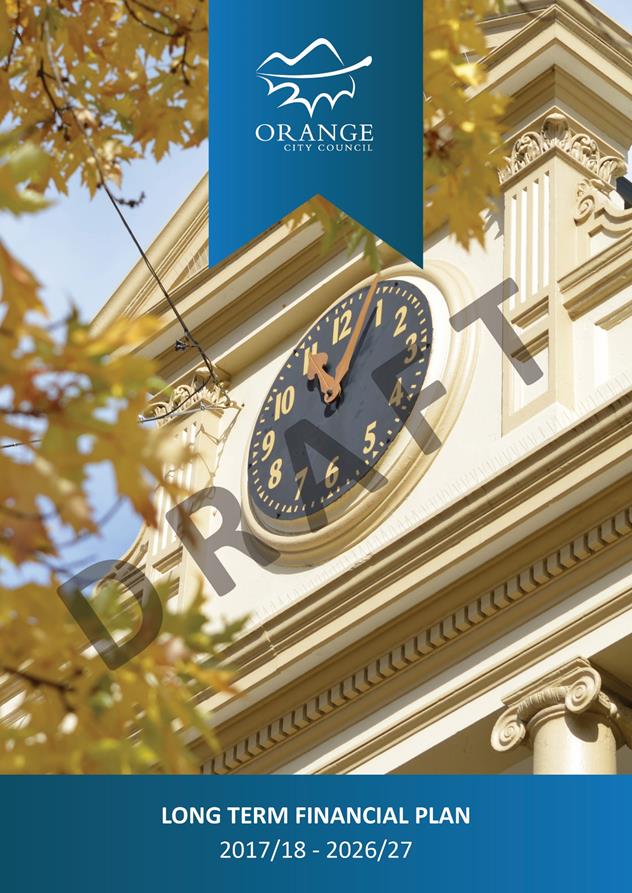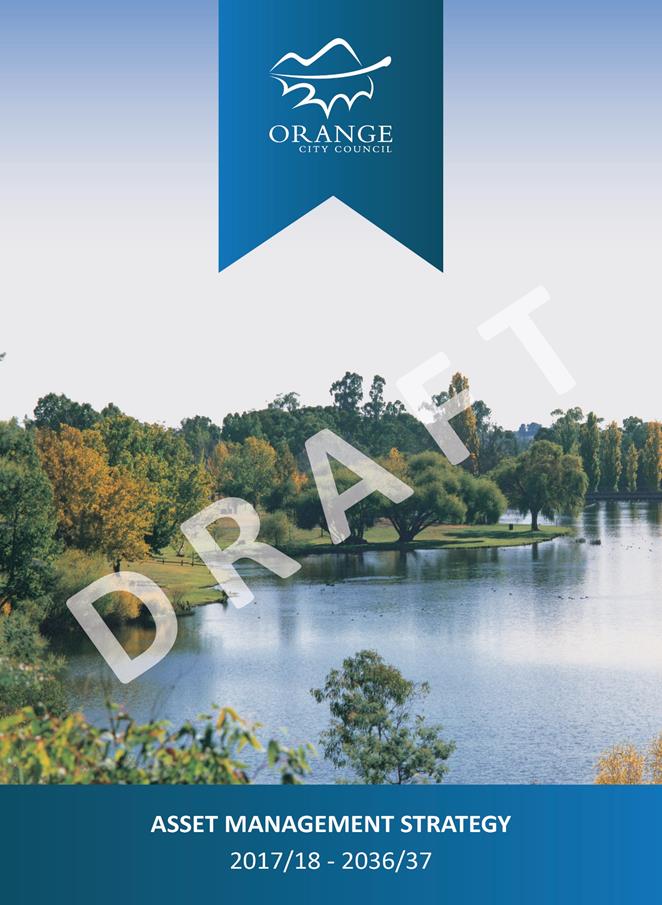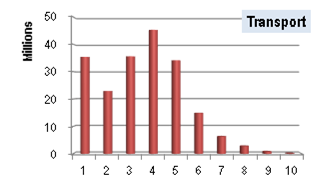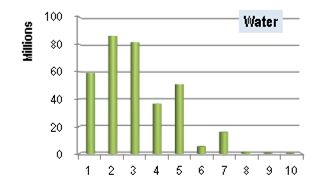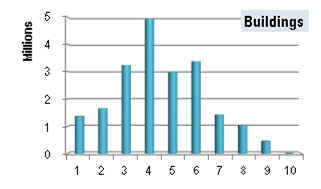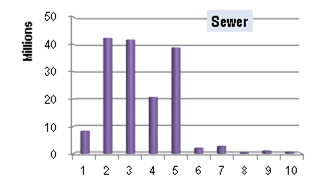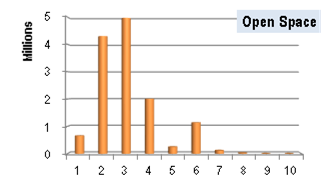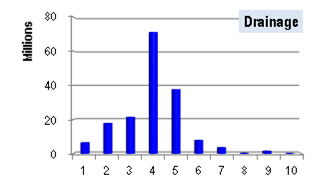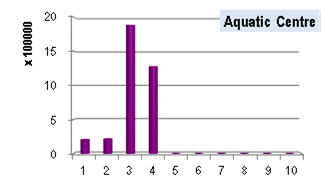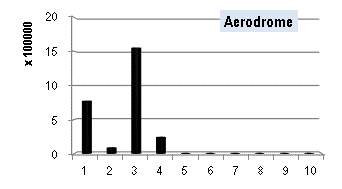
ORANGE CITY COUNCIL
Extraordinary Council Meeting
Agenda
9 May 2017
Notice
is hereby given, in accordance with the provisions of the Local Government Act
1993 that a Extraordinary meeting of ORANGE CITY COUNCIL
will be held in the Council Chamber,
Civic Centre, Byng Street, Orange on Tuesday, 9 May 2017 commencing
at 7.00pm.
Garry
Styles
General Manager
For apologies please
contact Michelle Catlin on 6393 8246.
1 Introduction
1.1 Apologies
and Leave of Absence
1.2 Acknowledgement
of Country
I would like to acknowledge the Wiradjuri people who are the
Traditional Custodians of the Land. I would also like to pay respect to the
Elders both past and present of the Wiradjuri Nation and extend that respect to
other Aboriginal Australians who are present.
1.3 Declaration
of pecuniary interests, significant non-pecuniary interests and less than significant
non-pecuniary interests
The
provisions of Chapter 14 of the Local Government Act, 1993 (the Act)
regulate the way in which Councillors and designated staff of Council conduct
themselves to ensure that there is no conflict between their private interests
and their public role.
The
Act prescribes that where a member of Council (or a Committee of Council) has a
direct or indirect financial (pecuniary) interest in a matter to be considered
at a meeting of the Council (or Committee), that interest must be disclosed as
soon as practicable after the start of the meeting and the reasons given for declaring
such interest.
As
members are aware, the provisions of the Local Government Act restrict any
member who has declared a pecuniary interest in any matter from participating
in the discussion or voting on that matter, and requires that member to vacate
the Chamber.
Council’s Code of Conduct provides that if members
have a non-pecuniary conflict of interest, the nature of the conflict must be
disclosed. The Code of Conduct also provides for a number of ways in which a
member may manage non pecuniary conflicts of interest.
|
Recommendation
It is recommended that Councillors now disclose any
conflicts of interest in matters under consideration by the Council at this
meeting.
|
2 General
Reports
2.1 Draft
Community Strategic Plan and Draft Delivery/Operational Plan 2017/18 - 2020/21
TRIM
REFERENCE: 2017/839
AUTHOR: Kathy
Woolley, Director Corporate and Commercial Services
EXECUTIVE Summary
In accordance with the Integrated Planning and Reporting
requirements set out in the Local Government Act 1993, this report presents the
Draft 2017/18 – 2020/21 Delivery/Operational Plan and the Community
Strategic Plan, which have been reviewed and updated. The documents are
recommended for public exhibition.
At the conclusion of the exhibition period Council will be
presented with any submissions and any amendments to these two documents to be
considered at a subsequent extraordinary meeting.
A comprehensive review of the Delivery/Operational Plan has
been undertaken with a focus on developing clear and concise actions and
performance measures to allow the community to better understand
Council’s activities over the life of the Plan.
The Community Strategic Plan has been updated, with a
comprehensive review of this Plan not required until after the next Local
Government election.
The draft documents are presented for placement on public
exhibition.
Link To Delivery/OPerational Plan
The recommendation in this report relates to the
Delivery/Operational Plan strategy “1.3 Our City -
Ensure a robust framework that supports the community’s and
Council’s current and evolving activities, services and functions”.
Financial Implications
The proposed Delivery/Operational Plan identifies the
operational and the subsequent budgetary impacts arising in the delivery of the
levels of service proposed.
Policy and Governance Implications
The Local Government Act 1993 requires Council to exhibit
the documents for a minimum of 28 days.
|
Recommendation
That Council place the Draft Community Strategic Plan
and Draft Delivery/Operational Plan 2017/18 – 2020/21 on public
exhibition.
|
further considerations
The
recommendation of this report has been assessed against Council’s other
key risk categories and the
following comments are provided:
|
Service Delivery
|
The Delivery/Operational Plan
identifies levels of service for the range of Council’s operations.
These levels of service are also identified as part of the Asset Management
planning documents.
The Delivery/Operational Plan
identifies the key services Council will deliver over the term of the Plan,
and quarterly performance indicators will provide a measure of
Council’s performance in achieving these objectives.
|
|
Stakeholders
|
The Delivery/Operational Plan
identifies key agencies and other groups that are stakeholders in key Council
activities. The Plan identifies the range of government agencies that provide
advocacy, funding and partnerships to Council.
The Community Strategic Plan was developed in consultation
with the community, and includes community-developed objectives. The
Strategies and Actions set out in the Plan identify how Council aims to meet
those objectives.
|
SUPPORTING INFORMATION
Since 2012, all NSW councils have been required to prepare a suite
of documents under the Integrated Planning and Reporting (IP&R) framework
outlined in the Local Government Act and its Regulations.
The Framework is outlined in the following diagram:

Source:
Office Local Government
Community Strategic Plan
At the commencement of a new term of Council a Community
Strategic Plan must be prepared.
The current Community Strategic Plan (CSP) has been reviewed
and updated with minor amendments in the attachment to this report.
The CSP was originally developed in conjunction with the
community, and resulted in the development of Directions, Objectives and
Strategies.
The CSP exists for the term of each Council and a
comprehensive review must be undertaken upon the appointment of the new council
term.
Delivery/Operational Plan
The Delivery Plan must cover a four year period and is
designed to illustrate the tasks that will deliver the objectives and
strategies as depicted in the Community Strategic Plan. The Operational Plan
has to show the current year of the 4 years depicted in the Delivery
Plan. Given the duplication of information, Orange City Council, like a
number of other councils, has determine to combine the Delivery and Operational
Plans into one document.
The Delivery/Operational Plan presents the first 4 years of
the 10 year Long Term Financial Plan that is a required element in the
Resourcing Strategy within the IP&R framework.
Resourcing Strategy
The documents required in the Resourcing Strategy are
presented in a separate report to this meeting.
The Resourcing Strategy must include:
· Workforce
Management Planning
· Assets Management
Planning
· Long Term
Financial Plan
Budget
preparation and identification of future projects
Council has met on three occasions in
Councillor briefings to review the 4 years of draft budgets adopted in the Long
Term Financial Plan for the 2017/18 – 2020/21 period as resolved by
Council which are now presented in the attached draft Delivery/Operational
Plan.
Consideration of the Assets Management
Planning documents and plans and the alignment of assets information with the
Long Term Financial Plan includes checking items are shown in all documents and
that the funding sources (including grants, loans, reserves and developer
contributions) have been appropriately applied. This includes assessing the
maintenance of sufficient funds to ensure Council is financially sustainable.
Managers have reviewed and updated all fees
and charges.
Councillor initiatives added in the 2017/18
year as raised at briefing sessions or in follow ups after briefing sessions
include:
· Funding for the attraction of two additional (on top of the events
already planned/being scooped) major state/national sporting fixtures -
$80K expenses and $20K revenue added
· Showground capital works - $40K added for improvements to arena
fencing and to the Dalton Pavilion roof plus $10K for toilet tiling repairs
(from existing budgets)
· Cavalier’s Cricket Club – Request from Club for money
for upgrade to the toilet block at Cutcliffe Park - $11.5K – funded from
the existing sporting facilities donations budget
· Granny Smith festival attendance – attendance costs added to
the budget - $5K
· Preservation of funding previously supplied under the tourism
services contract that expired June 2016 for support of Orange FOOD week, Wine
Week, Banjo Paterson Festival and Apple Festival/Ramble committees and for
marketing/promotions. See further on this in the donations section of this
report.
· $50-$60K for capital works in Lucknow and Springhill – no
additional funding has been allocated as $50K had been included in the 2016/17
year budget. The unspent balance of this allocation will be rolled into
2017/18 once the end of year balances are known.
· Additional allocation for footpaths - $250K has been added each of
the 4 years for an increase of $1M to the footpaths program.
· The request for the Anson Street school footpath works of $30K will
be undertaken from the allocation to footpaths in the item above.
· Increase to City Presentation budget – an increase of $100K
has been added to 2017/18 with the amount continuing in subsequent years at an
indexed level. To be used to offset some of the costs associated with new
parks/open space added to Council’s property portfolio that require
maintenance plus offer an opportunity to expand the City Presentation program.
· Lone Pine Avenue to Shepherd Road – reinstate concrete
causeway - $50,000 from existing budget.
Additional changes have included:
· $50,000
increase to the estimates provided by the NSW Electoral Commission for the
September 2017 election – budget now $300K with the Commission
identifying may be a further increase
· Accelerated
roads program continuation – around $8M worth of works brought forward
and /or funded differently include Cargo Road (Ploughman’s to Whitton),
Cargo Road (water tank to boundary), Escort Way roundabout and roadworks/kerb
and gutter and footpaths, Burrendong Way (Robinson Court to NDR), Ophir
Road (first crossing to 140m), NDR (Clergate Rd to Anson Street), Leeds Parade
(Margaret Street to NDR), Dairy Creek Road/Mitchell Highway intersection and Forest
road (SFR to Bloomfield). Additional loans are proposed to enable the
acceleration of these projects into earlier timeframes.
· Additional
income relating to the costs associated with administering the Central West
Libraries program have been negotiated and included - $130K.
· External
audit fees have increased compared to the budgeted allocation following the
changes by the NSW Government that sees the external audit undertaken by the
NSW Audit Office. Additional allocations have also been made to pay for
services previously done by the external auditor (e.g. to reconcile grant
applications) which are no longer be included in the services offered by the
Audit Office. This will add additional project costs to funded projects and
will be separately considered in future funding applications - $80K
· Consideration
of the Fit for Future Improvement Plan initiatives has been undertaken given
the intent of the Office of Local Government to review Council’s progress
against this program of activities has been identified.
· New
Rural Fire Service fees basis has been factored into the budget for the 2017/18
and subsequent years. This will have an estimated $40K impact on
Council’s budgets per annum.
· Impact
of the investigation of a new 4 star caravan park have been incorporated.
· Impact
of the demolition at the Old Hospital site have been included.
Assumptions used in preparing the Delivery/Operational Plan are as
follows:
· Rating increase as set by NSW Government – 1.5% (previous
draft in LTFP had been modelled at 1.8% so reviewed against the IPART
established rate peg to ensure conforms with 1.5% )
· NSW Local Government Award salary increases – 3%
· Consumer Price index increment – 1.8%
· Water charges – increase 3%
· Sewer charges – increase 3%
· Superannuation – increase as per required – 9.5%
· Award based salary increase – 3% as required
· Continuation of budgeting of Financial Assistance Grant freeze
Summary
of key areas in the Delivery/Operational Plan 2017/18 – 2020/21
Council’s assets have been assessed to have a
value of over $1.42Bn (as at June 2016).
Council has an existing loan portfolio of $27M,
with the average interest rate of all loans being 4.38%.
Tables in this report include the current financial year
(2016/17) original budget as adopted in the current Delivery/Operational Plan
as Council had requested this information be included.
2017/18 Operating Position
The Draft Delivery/Operational Plan proposes a surplus
consolidated operating position (before capital) of $1,862,795 for 2017/18.
The operating position shows how Council proposes to expend
money on items other than those classified as capital.
The distribution across the
funds is as follows with the table also showing the draft operating positions
in the subsequent three years of the Plan:
Operating Result (by Fund)
|
|
|
2016/17
Adopted
|
2017/18
|
2018/19
|
2019/20
|
2020/21
|
|
General Fund
|
(42,739)
|
(290,735)
|
(995,466)
|
(80,994)
|
(28,617)
|
|
Water Fund
|
(1,114,156)
|
(1,130,292)
|
(1,346,701)
|
(1,533,324)
|
(1,728,350)
|
|
Sewer Fund
|
(636,128)
|
(441,768)
|
(600,710)
|
(718,294)
|
(841,457)
|
|
|
|
|
|
|
|
|
Total (All Funds)
|
(1,793,023)
|
(1,862,795)
|
(2,942,877)
|
(2,332,612)
|
(2,598,424)
|
Highlights
in the operational outcomes in 2017/18 include the following:
· Ongoing
development of programs from the new Museum facility
· Council will
supply an estimated 16,000 meals on wheels
· Services are
offered to support shopping and in home support and home maintenance hours
· 2017/18 is year 4
of the 10 year Jobs Creation program offering $110K per annum to assist
businesses where jobs are added and/or maintained
· Council will
provide airport services for 40,000+ passengers per annum
· Manage the Aquatic
Centre servicing over 15,000 people per month
· Produce business
papers for two monthly Council meetings
· Engage with
community members through the community committee meetings held either monthly
or quarterly
· Offer 24 x 7
customer service phone lines and web reporting tool for continuous customer
support
· Maintain
Council’s online presence with at least weekly updates to the website and
through media releases
· Continue the
social media activities of Council with engagement levels in excess of 100,000
people
· Manage tourist
information services for the 80,000 visitors per year to the Visitor
Information Centre plus an estimated 20,000 further contacts via emails and
phone calls
· In-house printing
of most publications to maximise the use of skills and equipment
· A comprehensive
review of the Community Strategic Plan after the next election
· 5+ major sporting
events will be hosted in an area with $81K budget as identified by the agency
Council has contracted to identify events
· 90% of learn to
swim classes will be filled
· Council will host
numerous events including events for Seniors Week, Harmony Week, Local
Government Week, Australia Day, Mayoral Civic Receptions, new residents, Clean
up Australia Day, Christmas carols
· Participate in the
Orange Liquor Accord and crime prevention program
· Undertake the road
safety program with Cabonne Council
· Update the
Companion Animals Management Plan
· Undertake planning
of the options for the planetarium and new conservatorium concepts
· Continue to
provide services to the 25,000+ members of the Library
· Continue the
Museum’s outreach program through the Sustainable Collections project
· Implement the
Heritage Strategy within budget allocation and manage the Small Grants Heritage
Fund
· Maintain 4 child
care centres at 80% occupancy
· Action the tourism
strategy and new tourism services contract
· Undertake a
minimum of 400 private property inspections to manage noxious weeds
· Maintain the 3
star rating for the caravan park and achieve 50% occupancy
· Maintain an
electronic directory of businesses in the City to assist in providing local
businesses with information (for example, on funding opportunities)
· Allocate allotments
for burials within 24 hours
· Deliver the Scores
on Doors program inspections of food outlets
· Complete and
implement the Orange Active Travel Plan within budget
· Have 95% of the
fleet available at all times
· Review the
outcomes of the Drought Management Plan against best practice guidelines
· Divert >50% of
waste from landfill
Capital
Position
The capital budget will deliver projects with a combined
total of $44.5M in 2017/18. This expenditure is distributed across the funds
and the expenditure levels over the subsequent three years are also shown:
|
Fund
|
2016/17
|
2017/18
|
2018/19
|
2019/20
|
2020/21
|
|
General
|
$55,827,236
|
$28,337,024
|
$18,565,990
|
$ 18,688,065
|
$ 25,501,374
|
|
Water
|
$24,862,520
|
$10,873,997
|
$3,338,749
|
$ 2,209,116
|
$ 1,233,964
|
|
Sewer
|
$ 3,450,165
|
$ 5,297,670
|
$ 4,333,690
|
$ 3,468,820
|
$ 6,303,110
|
|
Consolidated
|
$84,139,921
|
$44,508,691
|
$26,238,429
|
$ 24,366,001
|
$ 33,038,448
|
Funding
Sources
Funding for the projects Council
is proposing comes from Council’s own funds, grants and loans. Council
has already approved in previous years the following external loans:
|
LOAN - PRINCIPAL OUTSTANDING - as at 03 MAY 2017
|
|
COST CENTRES
|
LOAN NO
|
INSTITUTION
|
LOAN AMOUNT
|
DRAWN
DOWN
|
INTEREST RATE
|
TERM (YRS)
|
PRINCIPAL OUTSTANDING
|
|
|
|
|
$
|
|
|
|
$
|
|
ANZAC
PARK/DISTRIBUTOR ROAD
|
4000
|
NAB
|
7,000,000
|
Sep-09
|
4.65%
|
10
|
2,140,470
|
|
AIRPORT
EXPANSION
|
4001
|
NAB
|
3,000,000
|
Nov-12
|
5.48%
|
10
|
1,990,085
|
|
REGIONAL WASTE
FACILITY
|
6000
|
ANZ
|
8,000,000
|
Nov-12
|
5.96%
|
20
|
7,052,585
|
|
DISTRIBUTOR ROAD
|
8000
|
WBC
|
2,800,000
|
Jun-06
|
6.40%
|
10
|
0
|
|
DISTRIBUTOR
ROAD/WASTE SERVICES/SPRING CREEK DAM
|
8811
|
WBC
|
5,000,000
|
Mar-07
|
6.45%
|
10
|
0
|
|
Southern Suburb (LIRS Program)
|
4003
|
NAB
|
7,700,000
|
May-15
|
3.91%
|
10
|
6,390,462
|
|
Southern Feeder Road / Airport Expansion
|
4002
|
NAB
|
4,641,000
|
May-15
|
3.58%
|
10
|
3,843,164
|
|
Accelerated roads program
|
4004
|
NAB
|
3,000,000
|
May-16
|
3.24%
|
10
|
2,873,613
|
|
ACCELERATED ROADS PROGRAM 16/17
|
TBC
|
TBC
|
2,640,000
|
May-17
|
TBC
|
10
|
2,640,000
|
|
|
|
TOTAL
|
$43,781,000
|
LOAN PRINCIPAL OUTSTANDING
|
$26,930,379
|
The table
below provides details of internal loans utilised by Orange City Council
|
Borrower
(by purpose)
|
Lender
(by purpose)
|
Purpose of Loan
|
Date of Ministerial
Approval
|
Loan Amount
|
Drawn
Down
|
Interest Rate
|
Term (YRS)
|
Additional comments
|
|
Water
|
Sewer
|
Construction of the
Macquarie Pipeline
|
13/10/10
|
8,166,000
|
30/06/15
|
2%
|
20
|
Interest only over term of
loan with balloon payment of principal in 2035
|
|
Sewer
|
General
|
Construction of 24 hour
Emergency Helicopter Hangar
|
16/11/16
|
3,300,000
|
30/06/16
|
2%
|
24
|
Interest and principle
|
The funding sources for the LTFP anticipates additional funding required
for the following purpose:
· 2017/18 $1.7m Euchareena
Road Recycle
Recovery Centre
· 2017/18
$5.020M Roads Acceleration program
· 2017/18
$1.478M Roads Acceleration program
· 2018/19
$2.5M Roads Acceleration program
Where appropriate, and with permission, Council operates an
internal borrowing facility to assist in funding its capital expenditure
program.
The funding sources for the LTFP anticipates additional
funding for the following purposes:
· 2017/18
$2M Accelerated capital program
· 2018/19
$2M Accelerated capital program
Should Ministerial approval not be provided for these loans,
it is intended to seek this loan funding from an external lending institution.
Assets Renewal
The Assets Management Strategy illustrates the basis for the
modelling done to maintain and improved Council’s assets. The following
figure provides an indication of the total annual expenditure for all asset
categories in each of the major program areas together with the backlog that is
expected in any one year based on the currently available funding.
Details are provided in the Assets Management Strategy.

Capital
program – major projects
A summary of the major capital projects is provided in this
section and a full list of capital expenditure is included in the financial
summary section of the attached Delivery/Operational Plan.
Over the four years of the Delivery/Operational Plan a total
capital spend of $128.2M is proposed.
Major projects in are as follows, noting that some projects
are subject to securing funding and some are to be delivered over a number of
years:
· Central
Tablelands Water/Cabonne Council and Orange City Council – pipelines
project - $2.3M (overall project is $20.3M)
· Old
Hospital site – demolition works – costs are shared with NSW
Government – budget is $2.9M
· Airport
fencing - $50K
· Scout
camp development – subject to securing funding - $1.8M
· Gallery
improvements - $170K
· Theatre
improvements - $147K
· Max
Stewart Oval lights - $97K
· Wade
Park lights - $140K
· Cricket
Centre of excellence – $2M
· Orange
Botanic Gardens - Eastern entry boardwalk - $22K
· Cycleways
– General program $50K + RMS cycleways funded program - $100K + SFR
cycleways projects - $290K
· Aquatic
Centre – change rooms - $102K
· Cook
Park Blowes Conservatorium - $120K
· Showground
– toilet tiling, Dalton Pavilion roof and arena fencing - $50K
· Springhill
masterplan - $40K
· Roads
reseal and gravel program – $914K
· Road
rehabilitation program - $192K
· Roads
to recovery program - $502K
· Southern
Feeder road - $5.76M
· Canobolas
Road causeway upgrade - $60K
· Footpath
rehabilitation program $320K
· Traffic
facilities - $132K
· Cell
3 at Euchareena Road Facility - $1.55M
· Bus
shelters – access and mobility upgrades - $72K
· Stormwater
Infrastructure renewals - $70K
· Springhill
area/airport business park- water infrastructure $4.15M and sewer
infrastructure - $2.1M
· Water
service renewals - $123K
· Meter
replacements - $200K
· CBD
Water mains realignment - $1M
· Water
mains renewal program - $300K
· Blackman’s
Swamp stormwater harvesting - $200K
· Icely
Road WTP Lagoon upgrade - $400K
· Icely
Road WTP telemetry upgrade - $100K
· Water
fund land acquisitions - $1.2M
· Icely
Road WTP solar panels - $70K
· Sewer
fund Cadia tank 1 works - $90K
· Sewer
Fund – UV design and construction - $800K
· Lake
Canobolas Sewer infrastructure - $150K
· Orange
STP De-chlorination - $250K
· Orange
STP – solar panels - $70K
· Orange
STP potable water upgrade - $150K
· North
Orange sewer strategy - $180K
· South
Orange – stage 1 sewer works - $100K
· Redmond
Place sewer pump station – $230K
· Spring
Hill Lucknow sewer strategy - $75K
· Sewer
reconstructions renewals program - $100K
· Sewer
relining program - $700K
Income in 2017/18
A summary of the major areas of income is provided below
with a total income of $133M projected for the year.
Fees and charges are listed as a specific section in the
attached Delivery/Operational Plan.
Assumptions used in projecting this income are:
· The rate pegging
increase of 1.5% will result in rating income of $43.1M
· The majority of
fees and charges have been increased by 1.8% in the 2017/18 year. Those fees
increased at an amount other than 1.5% generally fall into one of the following
categories
o The fee has been set by specific
statutory or legislative requirement, and Council is obliged to implement the
new fee or charge
o Where the cost of providing the
service or good has exceeded 1.5%
· Increases
in water and sewer fees and charges are:
|
Fund
|
2016/17
|
2017/18
|
2018/19
|
2019/20
|
2020/21
|
|
Water
|
3%
|
3%
|
3%
|
3%
|
3%
|
|
Sewer
|
7%
|
3%
|
3%
|
3%
|
3%
|
· Waste fees as
adopted by Council in accepting the new contract have been applied.
· User fees and
charges contribute $33.2M
· Pensioners receive
a reduction in their rates of 55%. Council offers additional pensioner rebate
subject to two criteria. The two elements require that a property was owned
prior to 1 July 2006 and that the owner was an eligible pensioner prior to 1
July 2006. If both criteria are met, Council offers a further 10% rebate on
Rates and Domestic Waste Charges on top of the 55%. If the pensioner who is
eligible to receive the 10% additional rebate sells the property, they will
continue to get the 10% if they occupy the house within a reasonable timeframe
after purchase. If either of the criteria aren’t satisfied, Council still
offers a 5% voluntary rebate on top of the 55% rebate. The additional voluntary
rebate costs Council around $350,000 per annum.
· Grant income in
2017/18 totals $43.3M
· Contributions from
developers is budgeted at $4.4M in 2017/18
Expenditure
in 2017/18
Total operating expenditure is $101M in 2017/18 across all
funds.
Major areas of expenditure in
2017/18 include
· Employee costs -
$36.2M – 2 new positions, 3% Award based increase, 9.5% superannuation
increase
· Materials and
contracts - $35M
· Depreciation -
$18M
Donations
The only avenue for Council to assist other organisations
financially is in accordance with Section 356 of the Local Government Act.
Where the organisation is operating for its own financial benefit, Council must
advertise any offer of financial assistance to seek community comment.
In December 2016, Council wrote to all applicants (not just
successful applicants) who have sought a donation or sponsorship over the past
three years encouraging them to make application for donations as part of the
budget process. Council has also run advertisements and had information on the Council
website on the donations and sponsorship processes. Attached to the
report is a summary sheet of all applications received by the due date.
Councillors have been supplied with full copies of all applications under
separate cover.
The proposed donations allocations for all donations areas
over the 4 years in the draft Delivery/Operational Plan are shown below.
Details of how the allocation of the general donations is proposed is provided
in the attached list of responses received. Councillors considered these
requests at one of the budget briefing sessions:
|
Category
|
2017/18
|
2018/19
|
2019/20
|
2020/21
|
|
General Donations
|
61,500
|
80,000
|
80,000
|
80,000
|
|
Sports Facility grants
|
50,000
|
50,000
|
50,000
|
50,000
|
|
Sports Participation program
|
13,900
|
13,900
|
13,900
|
13,900
|
|
Sponsorships/major promotions
|
51,072
|
32,503
|
33,088
|
33,684
|
|
Donation to Orange Racing
|
100,000
|
-
|
-
|
-
|
|
Donation to Orange Harness Racing
|
20,000
|
20,000
|
20,000
|
20,000
|
Council received 53 applications for donations and
sponsorships. A further item was added to the list following the Councillor
briefing session for the Apple Festival/Ramble who had not submitted an
application due to changes in personnel managing the event.
Councillors considered the general donations and major
promotions and sponsorship applications under the following scale with a
diminishing allocation being made as progression is made through the bullet
points:
· Not for Profit
entities, first time donation recipient
· Not for Profit
entities, previous recipient of donations
· For Profit
entities, first time donation recipient
· For Profit
entities, previous recipient of donations
When the donations requests were being reviewed,
consideration of the funding that had flowed to 4 in region events (FOOD week,
Wine Week, Banjo Paterson Festival and the Apple Festival/Ramble) via the
tourism services contract (ended June 2016) has also been undertaken. The
contractor, Brand Orange, was required to deliver support to the 4 committees
as a part of the deliverables of the contract and to attend committee meetings
as Council’s representative. The assistance provided was for issues such
as event organisation, marketing activities and in some cases the production of
event programs.
The tourism services contract monies have been preserved in
the budget with an allocation of $400K per annum.
The contract has not been re-let as Council is to receive a
proposal from the Transition Board established to develop a plan for an
industry led tourism entity that Council will consider funding.
In order to ensure the money continues to be available to
the 4 event organising committees, the budget will be allocated to reduce
the $400K by $23,000 which will be provided directly to the 4 organising
committees who can determine how they apply the funds directly, instead
of it going through a third party. Council staff will take on the attendance at
committee meetings which may assist in increasing the level of support for the
event.
|
Event
|
Tourism Services Promotions budget
|
Donation (as per Council consideration)
|
TOTAL to be provided to the committee
|
|
Orange FOOD week
|
$8,500
|
$
1,500
|
$
10,000
|
|
Orange Vignerons' Association - Wine week
|
$8,500
|
$
1,500
|
$
10,000
|
|
Apple Festival/Ramble
|
$1,000
|
$
5,000
|
$
6,000
|
|
Rotary Club of Orange - Banjo Festival (will
be supplemented with in-kind up to $5K in value including offer of use of the
Theatre for the Poetry Festival)
|
$5,000
|
$
10,000
|
$
15,000
|
|
TOTAL
|
$23,000
|
$
18,000
|
$
41,000
|
“Other”
Expenses
Council is required to submit its accounts to the Office of
Local Government in a prescribed format.
This format includes an item
entitled “other expenses”. Council has identified it wants to have
information that specifies what is included in the other expenses category. The
following table provides this information:
|
|
Original 2016/17
|
Proposed 2017/18
|
Proposed 2018/19
|
Proposed 2019/20
|
Proposed 2020/21
|
|
Other Expenses
|
|
|
|
|
|
|
Telephone Charges
|
367,660
|
383,963
|
390,936
|
398,029
|
405,249
|
|
Insurance / Worker's Comp
|
1,431,241
|
1,454,687
|
1,480,867
|
1,507,522
|
1,534,663
|
|
Donations
|
84,378
|
61,500
|
80,000
|
80,000
|
80,000
|
|
Electricity Charges
|
3,747,054
|
3,676,272
|
3,746,110
|
3,817,282
|
3,889,810
|
|
Gas Charges
|
274,831
|
282,779
|
287,869
|
293,050
|
298,326
|
|
Mayor and Councillor Fees
|
265,827
|
270,612
|
275,483
|
280,442
|
285,489
|
|
Computer Leases
|
142,100
|
144,658
|
147,262
|
149,913
|
152,611
|
|
Regional Library
Administration Fee
|
1,115,109
|
1,236,515
|
1,290,221
|
1,332,148
|
1,376,040
|
|
Other
|
115,367
|
110,251
|
112,149
|
114,079
|
128,039
|
|
|
|
|
|
|
|
|
Total Other Expenses
|
7,543,567
|
7,621,237
|
7,810,897
|
7,972,465
|
8,150,227
|
Attachments
1 Draft
- Community Strategic Plan - 2017 18 - 2026 27 (For InfoCouncil), D17/28079⇩
2 Donation
Application Submissions 2017/18, D17/27902⇩
3 Draft
- Delivery Operational Plan - 2017/18 - 2020/21, D17/28080⇩
4 Fees
and Charges - 2017-2018 - Draft 05-05-2017, D17/28035⇩
Extraordinary Council Meeting
9 May 2017
2.1 Draft
Community Strategic Plan and Draft Delivery/Operational Plan 2017/18 - 2020/21
Attachment 1 Draft -
Community Strategic Plan - 2017 18 - 2026 27 (For InfoCouncil)



























Extraordinary
Council Meeting
9 May 2017
2.1 Draft
Community Strategic Plan and Draft Delivery/Operational Plan 2017/18 - 2020/21
Attachment 2 Donation
Application Submissions 2017/18

Extraordinary Council Meeting
9 May 2017
2.1 Draft
Community Strategic Plan and Draft Delivery/Operational Plan 2017/18 - 2020/21
Attachment 2 Donation
Application Submissions 2017/18

Extraordinary Council Meeting
9 May 2017
2.1 Draft
Community Strategic Plan and Draft Delivery/Operational Plan 2017/18 - 2020/21
Attachment 2 Donation
Application Submissions 2017/18

Extraordinary Council Meeting
9 May 2017
2.1 Draft
Community Strategic Plan and Draft Delivery/Operational Plan 2017/18 - 2020/21
Attachment 2 Donation
Application Submissions 2017/18

Extraordinary Council Meeting
9 May 2017
2.1 Draft
Community Strategic Plan and Draft Delivery/Operational Plan 2017/18 - 2020/21
Attachment 2 Donation
Application Submissions 2017/18

Extraordinary Council Meeting
9 May 2017
2.1 Draft
Community Strategic Plan and Draft Delivery/Operational Plan 2017/18 - 2020/21
Attachment 2 Donation
Application Submissions 2017/18

Extraordinary Council Meeting
9 May 2017
2.1 Draft
Community Strategic Plan and Draft Delivery/Operational Plan 2017/18 - 2020/21
Attachment 2 Donation
Application Submissions 2017/18

Extraordinary Council Meeting
9 May 2017
2.1 Draft
Community Strategic Plan and Draft Delivery/Operational Plan 2017/18 - 2020/21
Attachment 2 Donation
Application Submissions 2017/18

Extraordinary Council Meeting
9 May 2017
2.1 Draft
Community Strategic Plan and Draft Delivery/Operational Plan 2017/18 - 2020/21
Attachment 2 Donation
Application Submissions 2017/18

Extraordinary Council Meeting
9 May 2017
2.1 Draft
Community Strategic Plan and Draft Delivery/Operational Plan 2017/18 - 2020/21
Attachment 3 Draft -
Delivery Operational Plan - 2017/18 - 2020/21













Extraordinary Council Meeting
9 May 2017
2.1 Draft
Community Strategic Plan and Draft Delivery/Operational Plan 2017/18 - 2020/21
Attachment 3 Draft -
Delivery Operational Plan - 2017/18 - 2020/21



















Extraordinary Council Meeting
9 May 2017
2.1 Draft
Community Strategic Plan and Draft Delivery/Operational Plan 2017/18 - 2020/21
Attachment 3 Draft -
Delivery Operational Plan - 2017/18 - 2020/21



Extraordinary Council Meeting
9 May 2017
2.1 Draft
Community Strategic Plan and Draft Delivery/Operational Plan 2017/18 - 2020/21
Attachment 3 Draft -
Delivery Operational Plan - 2017/18 - 2020/21




























Extraordinary Council Meeting
9 May 2017
2.1 Draft
Community Strategic Plan and Draft Delivery/Operational Plan 2017/18 - 2020/21
Attachment 3 Draft -
Delivery Operational Plan - 2017/18 - 2020/21


Extraordinary Council Meeting
9 May 2017
2.1 Draft
Community Strategic Plan and Draft Delivery/Operational Plan 2017/18 - 2020/21
Attachment 3 Draft -
Delivery Operational Plan - 2017/18 - 2020/21







Extraordinary Council Meeting
9 May 2017
2.1 Draft
Community Strategic Plan and Draft Delivery/Operational Plan 2017/18 - 2020/21
Attachment 3 Draft -
Delivery Operational Plan - 2017/18 - 2020/21


Extraordinary Council Meeting
9 May 2017
2.1 Draft
Community Strategic Plan and Draft Delivery/Operational Plan 2017/18 - 2020/21
Attachment 3 Draft -
Delivery Operational Plan - 2017/18 - 2020/21
























Extraordinary Council Meeting
9 May 2017
2.1 Draft
Community Strategic Plan and Draft Delivery/Operational Plan 2017/18 - 2020/21
Attachment 3 Draft -
Delivery Operational Plan - 2017/18 - 2020/21







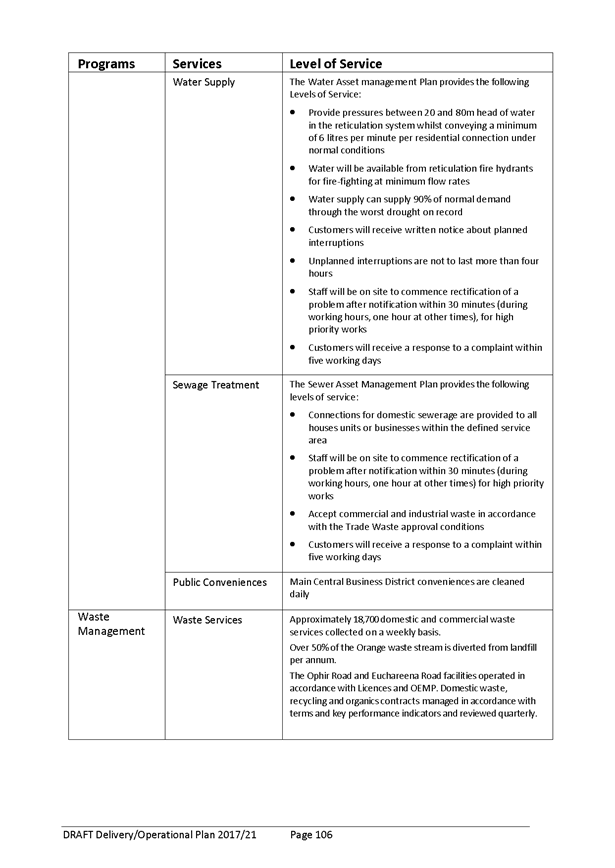

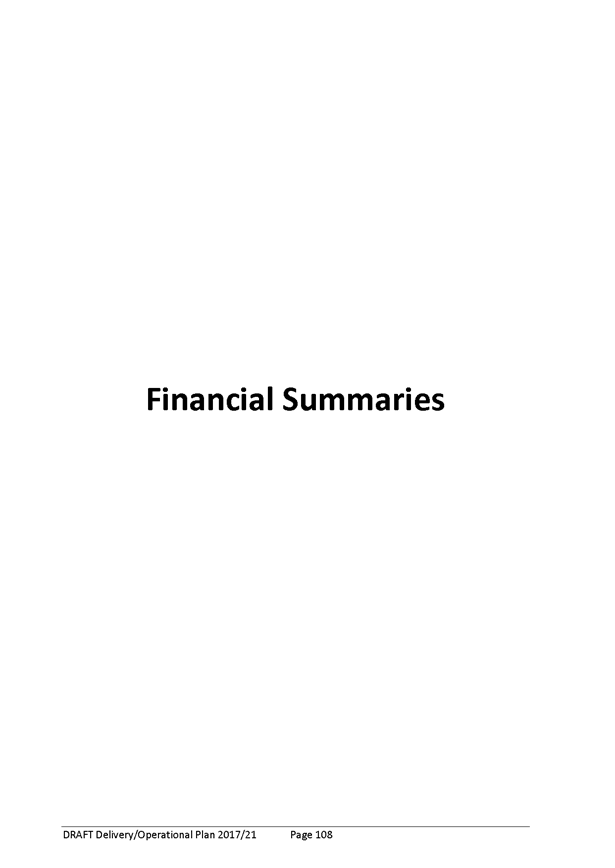
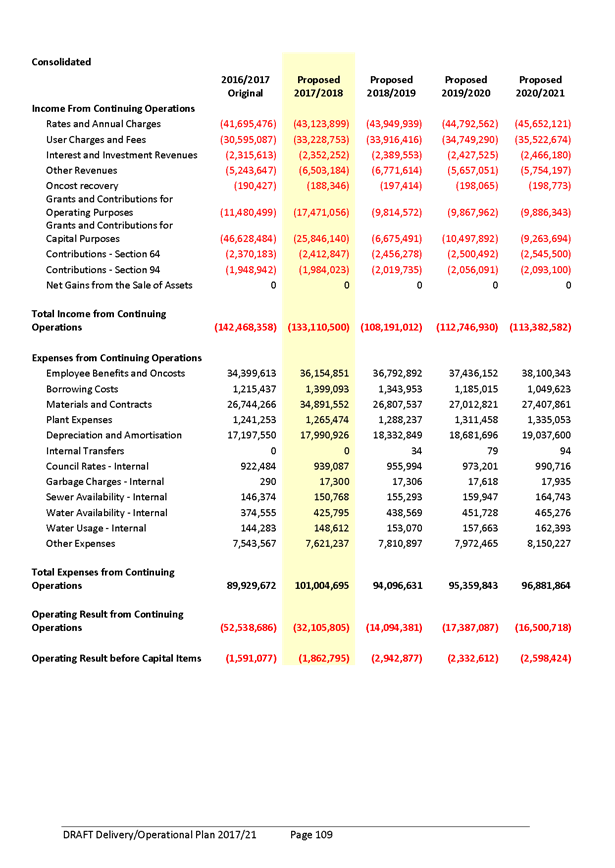




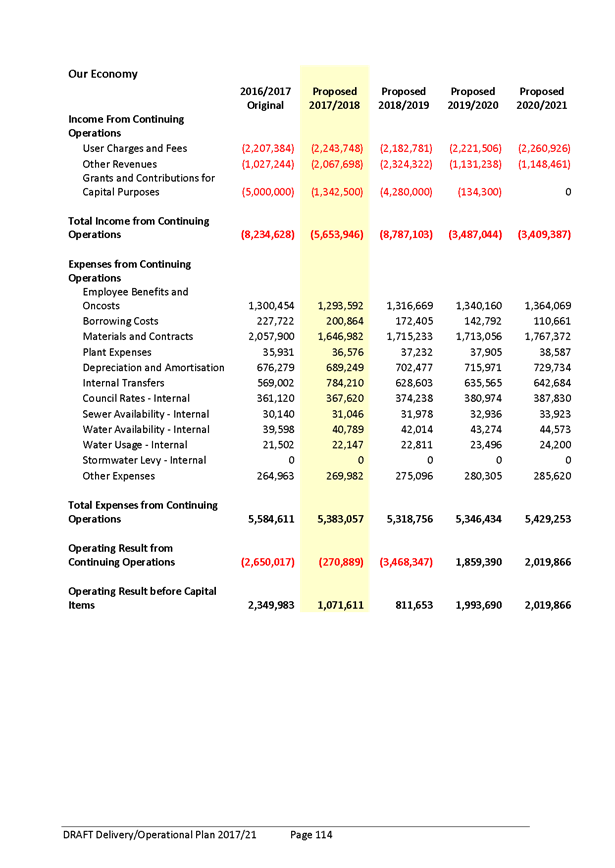

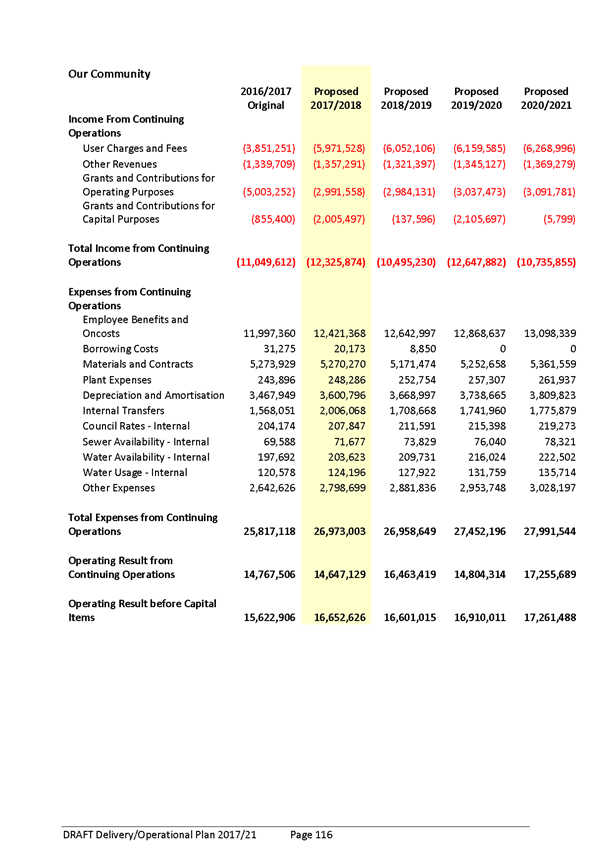
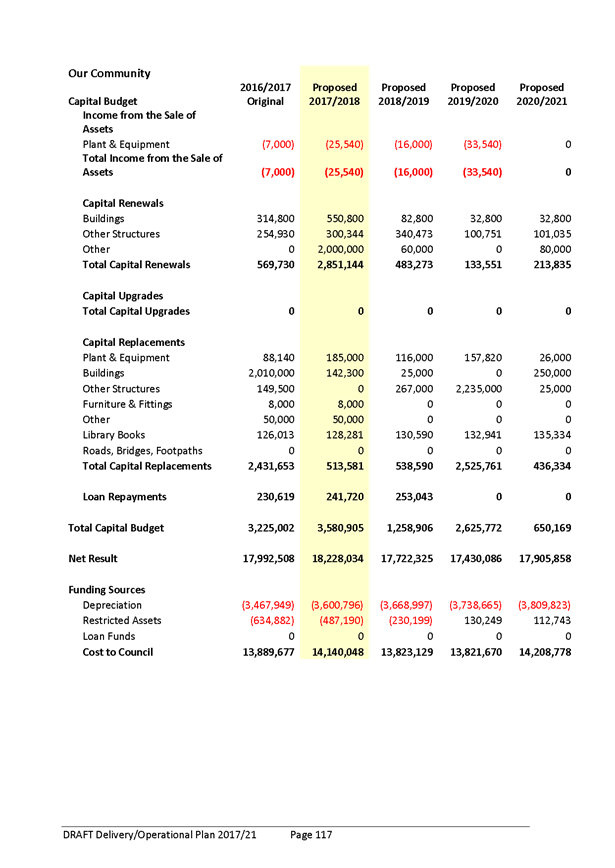
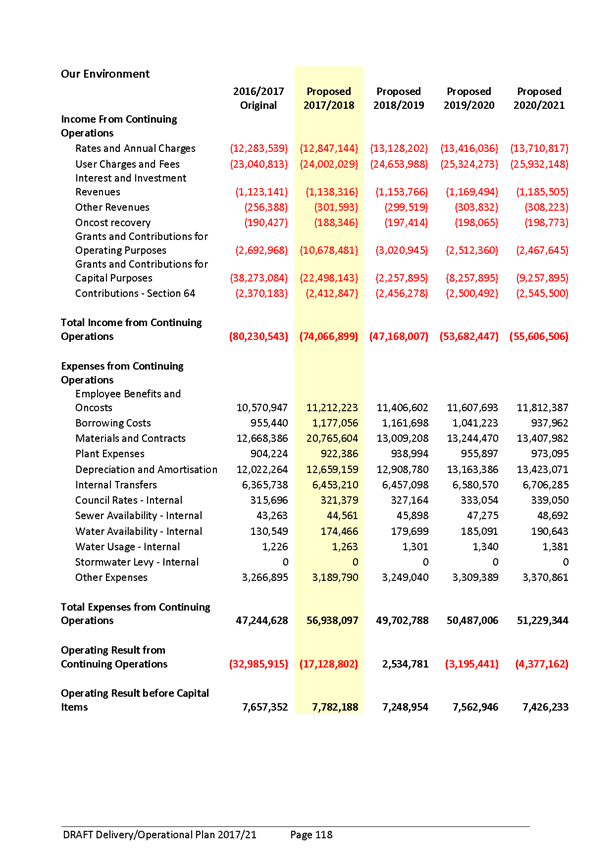
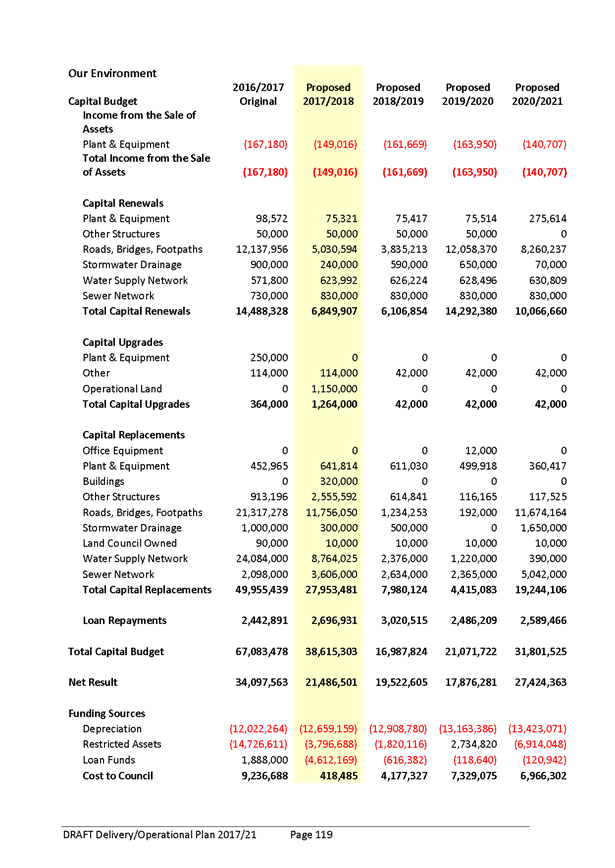
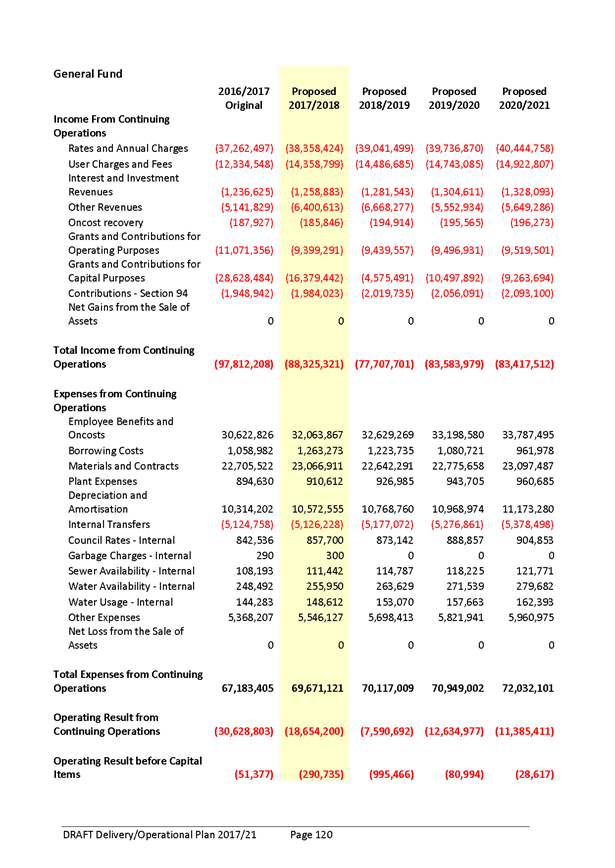
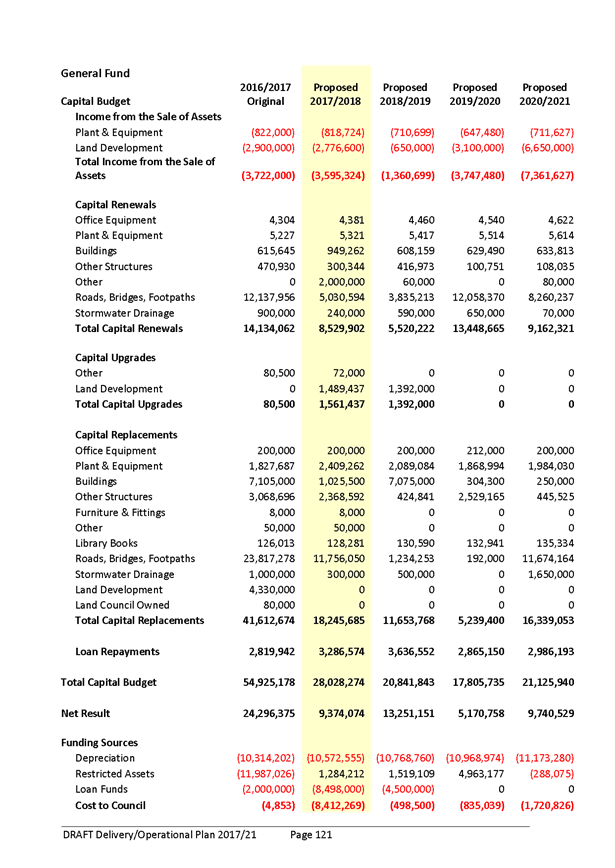
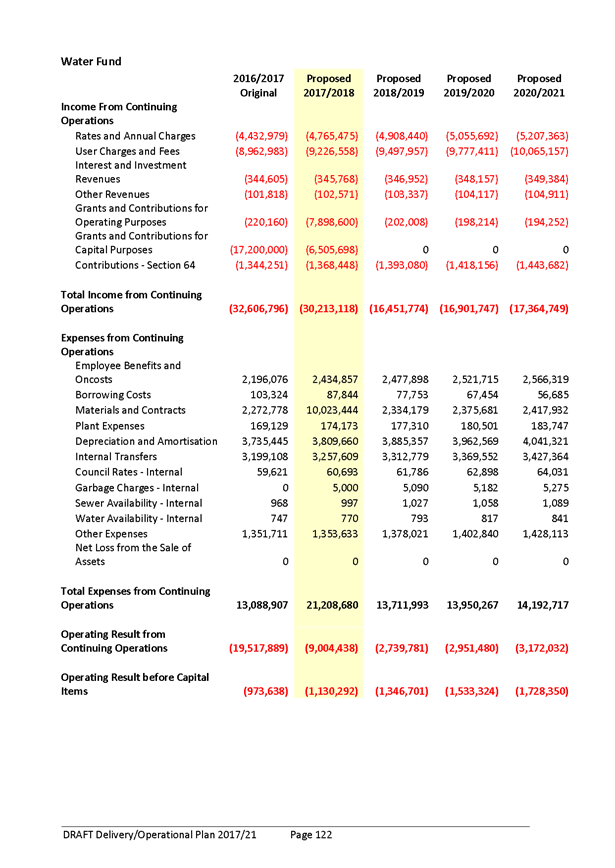
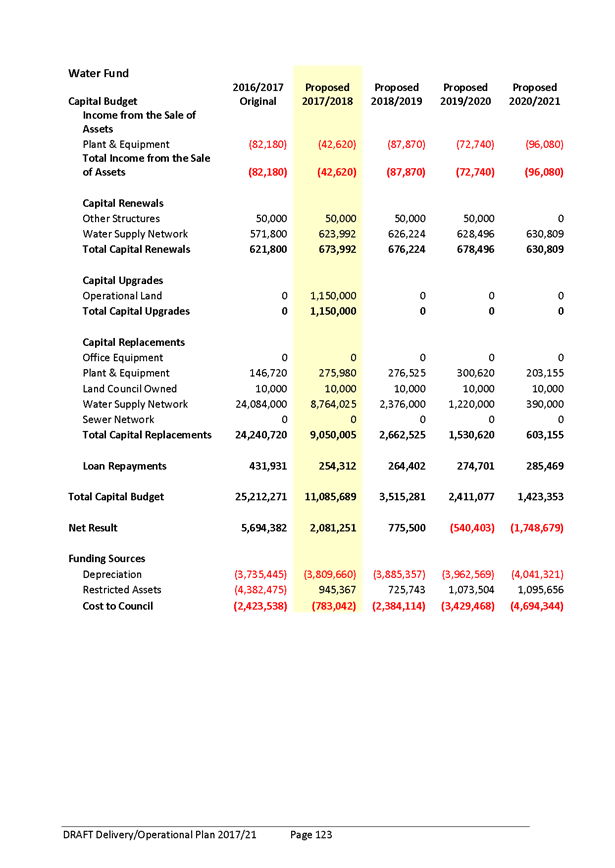
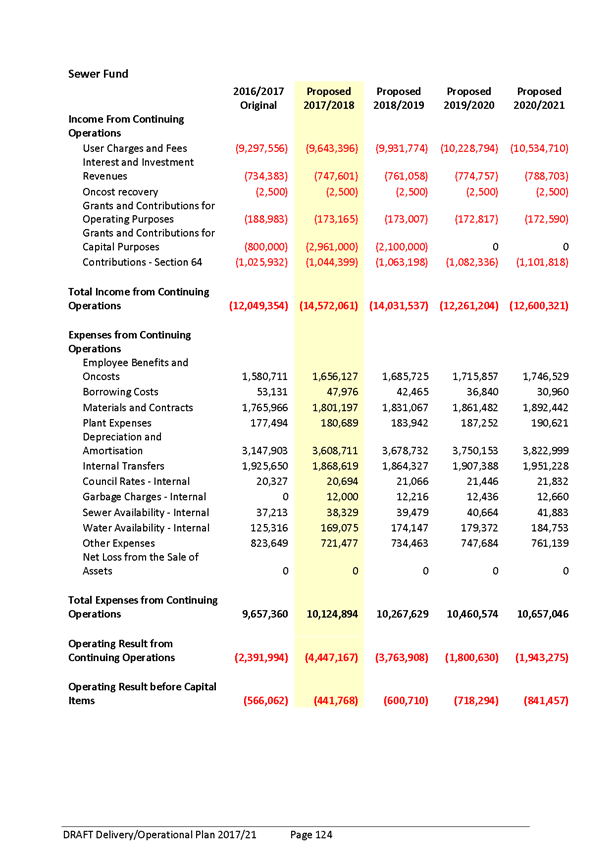
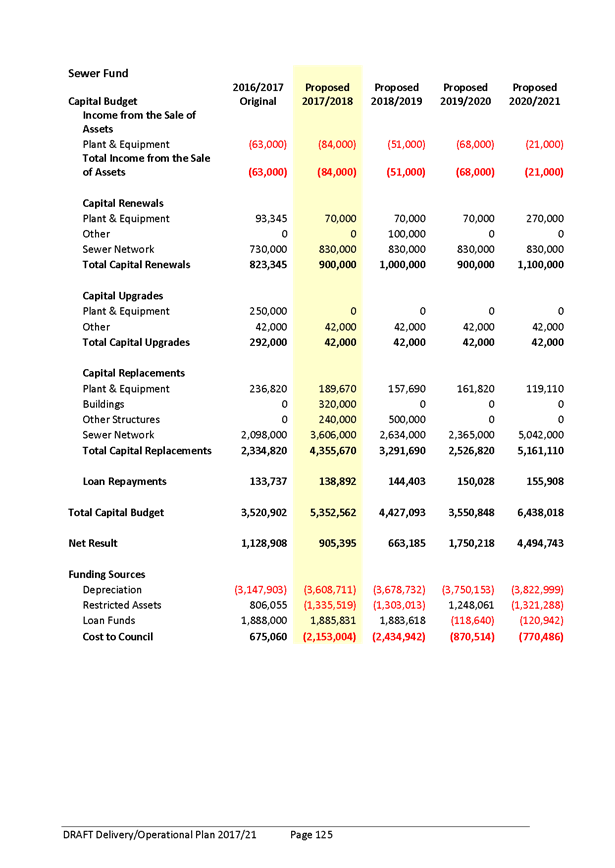
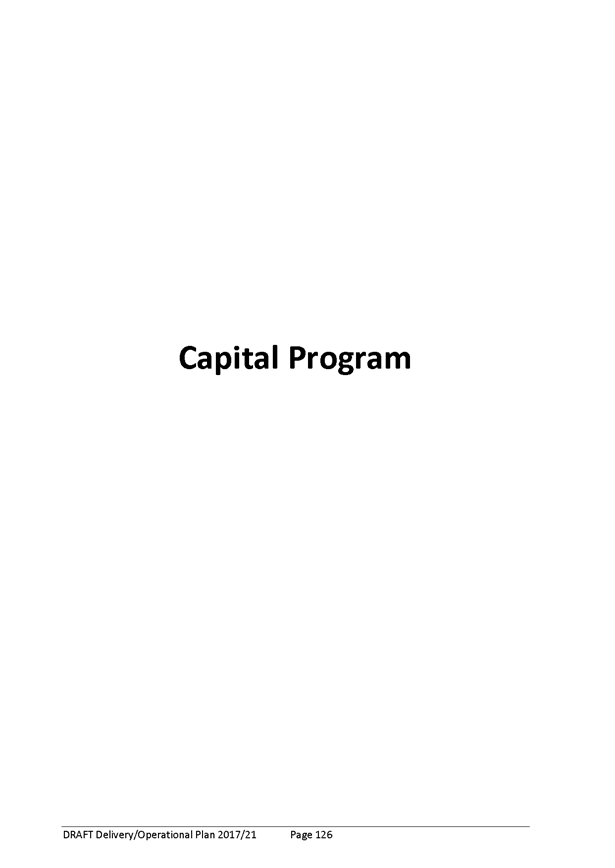
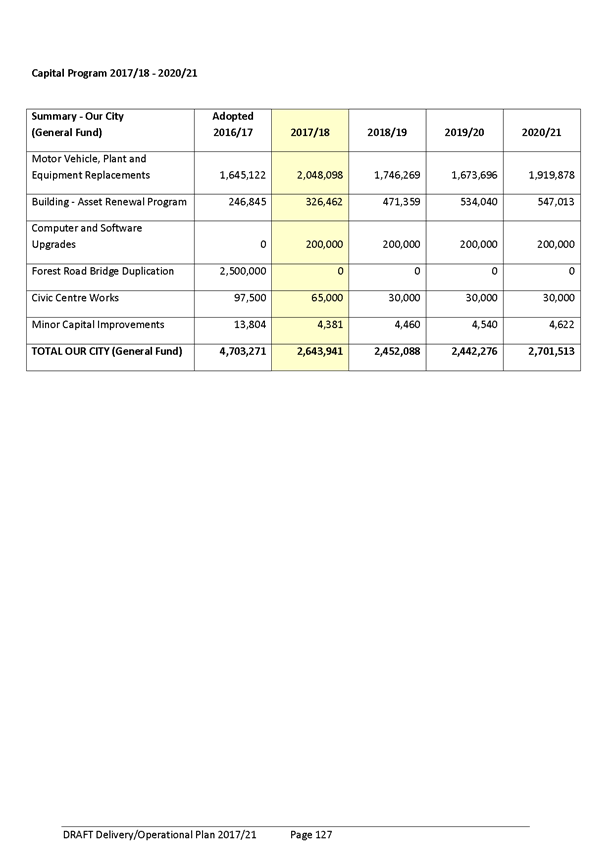
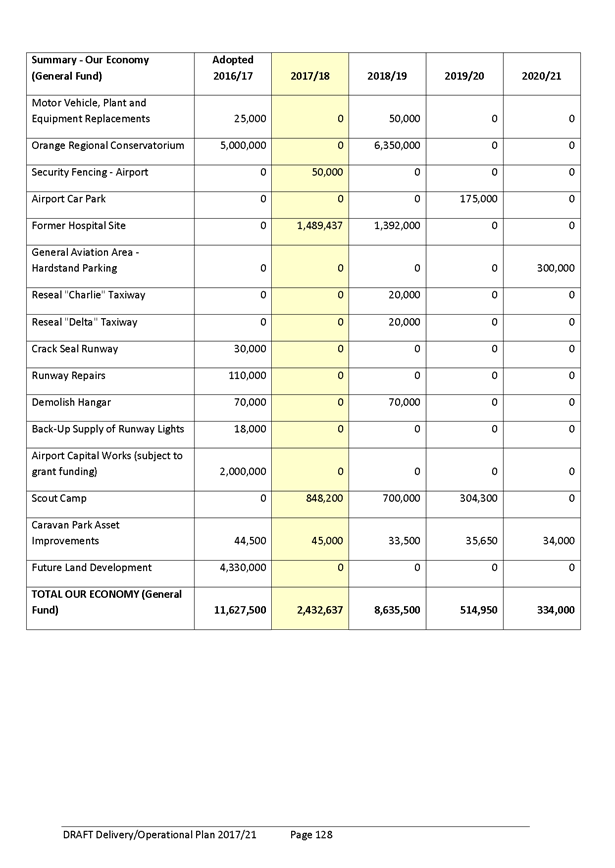
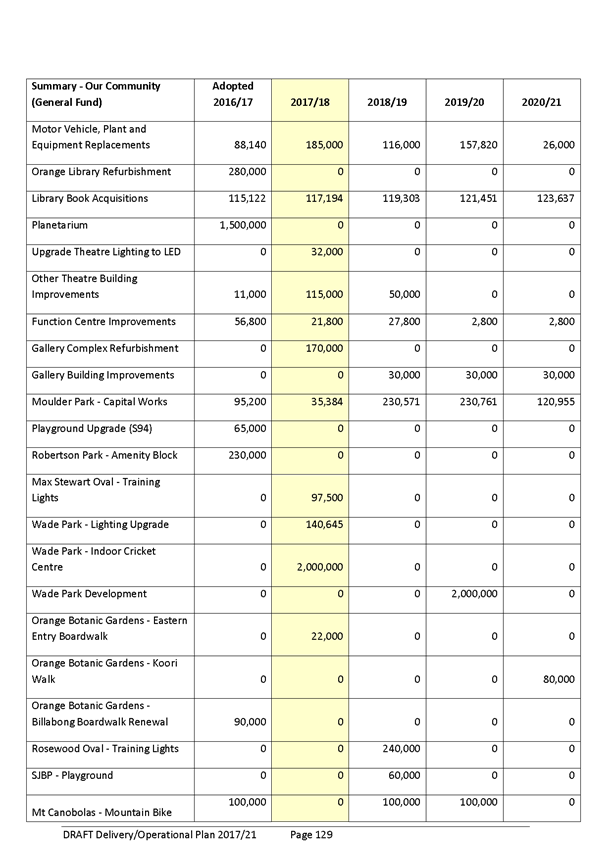

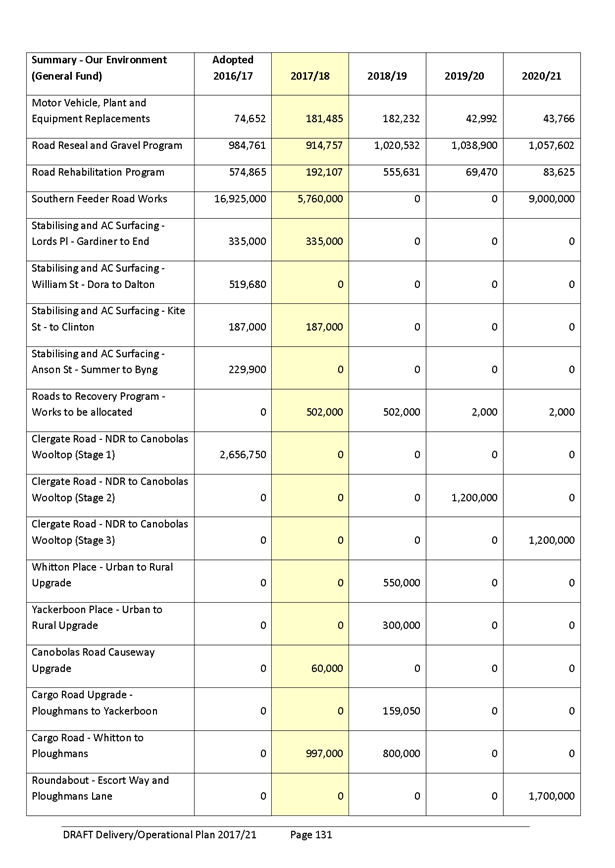
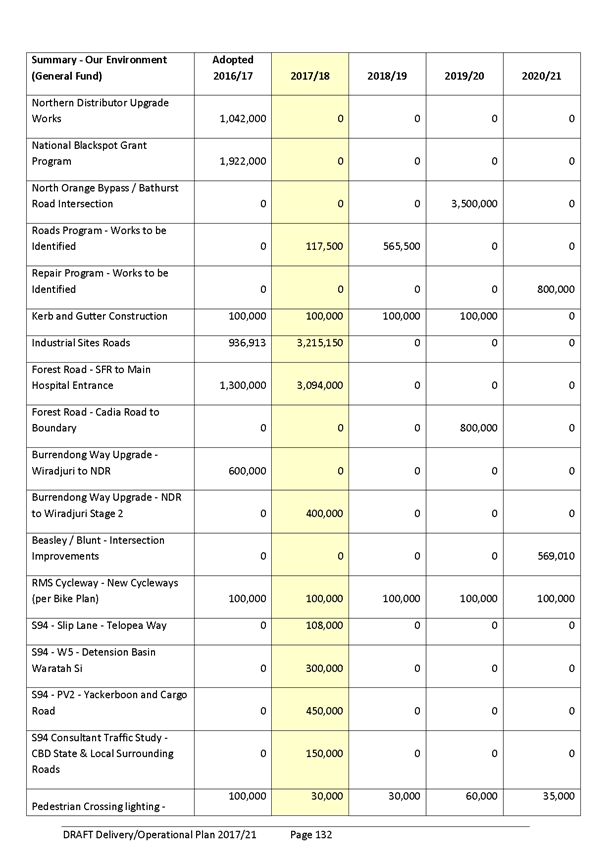
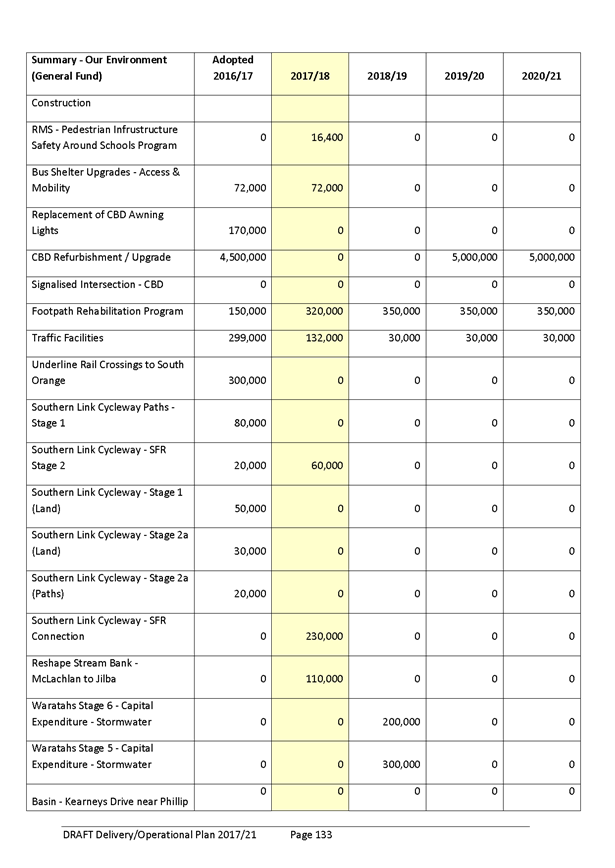
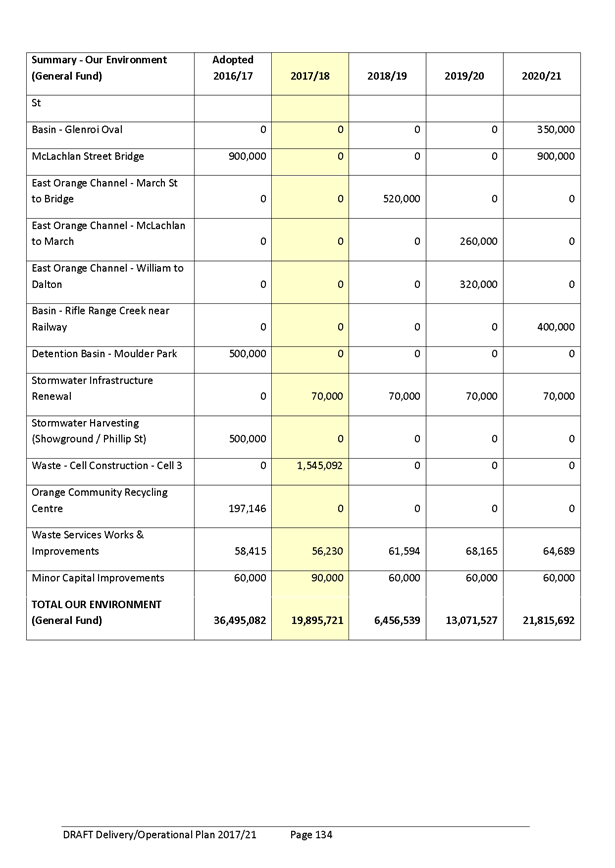
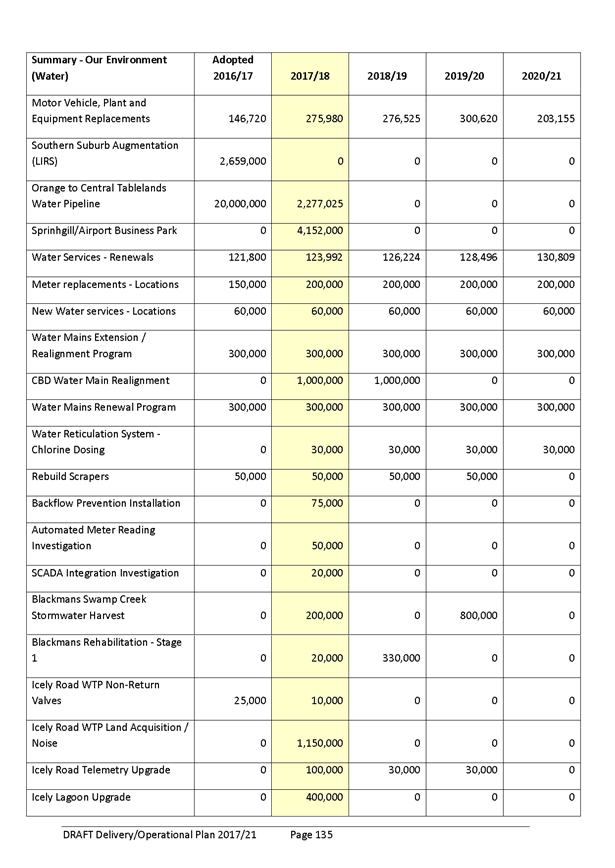
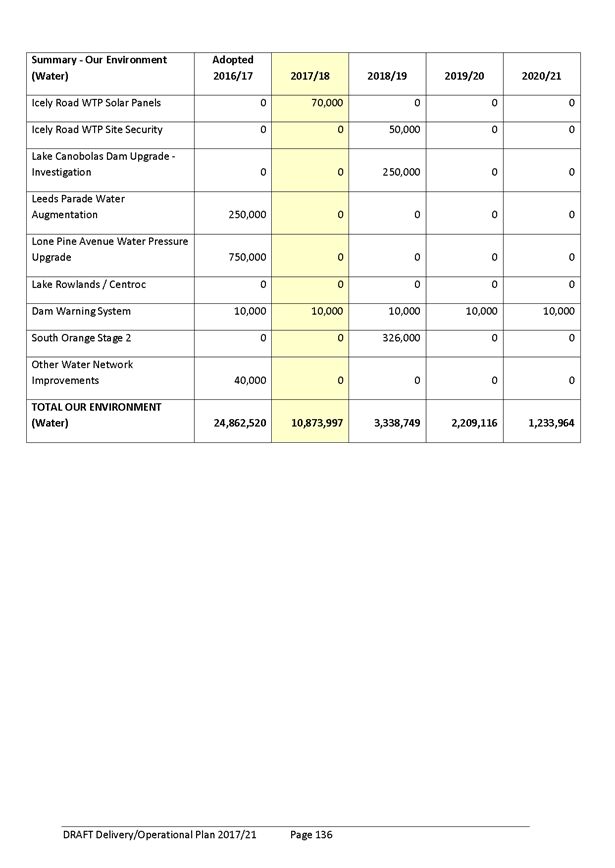
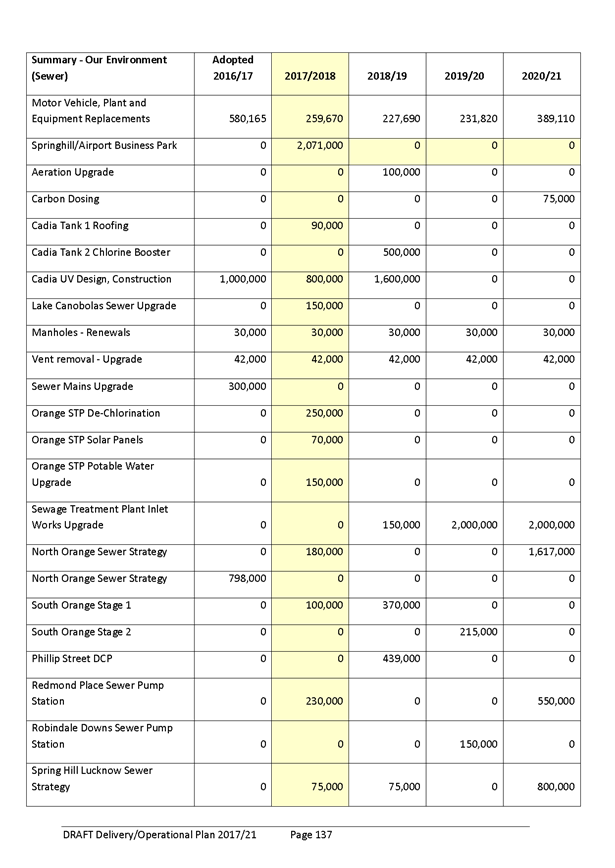
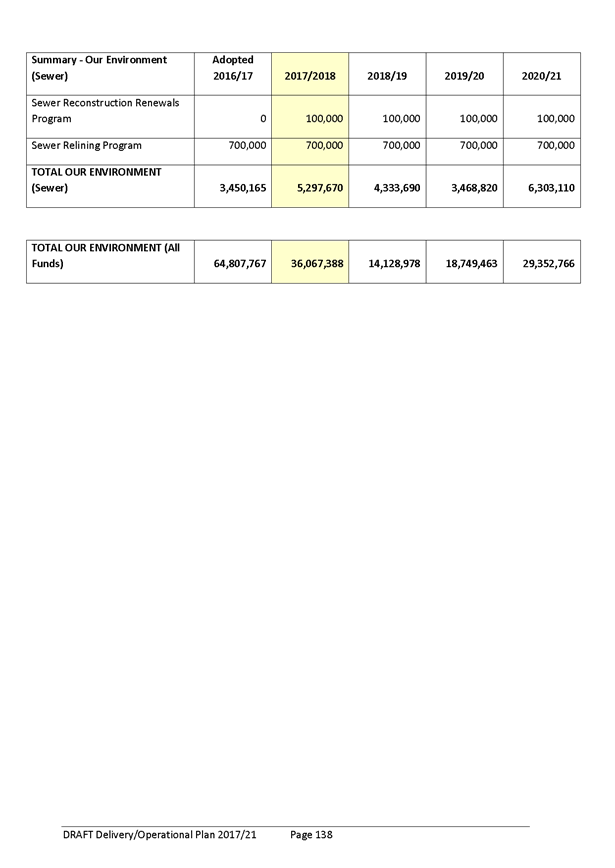
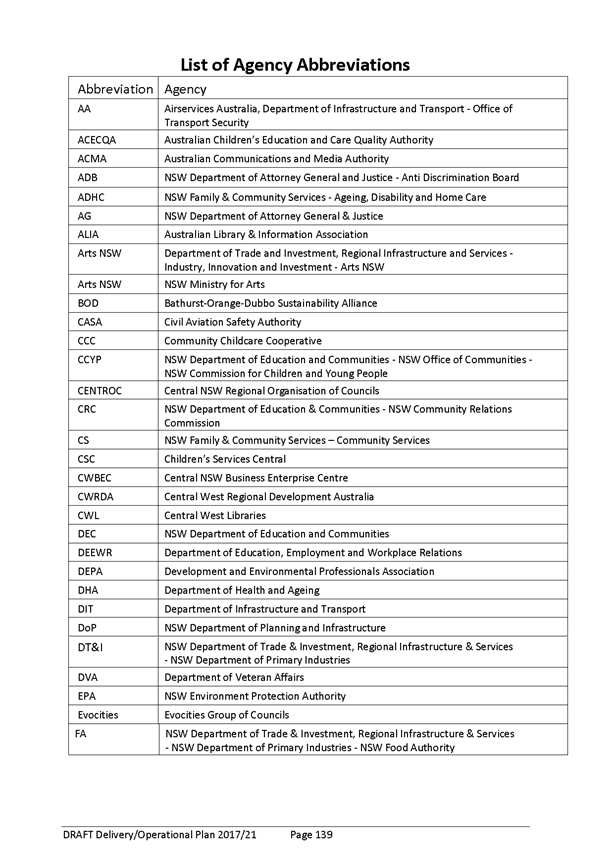
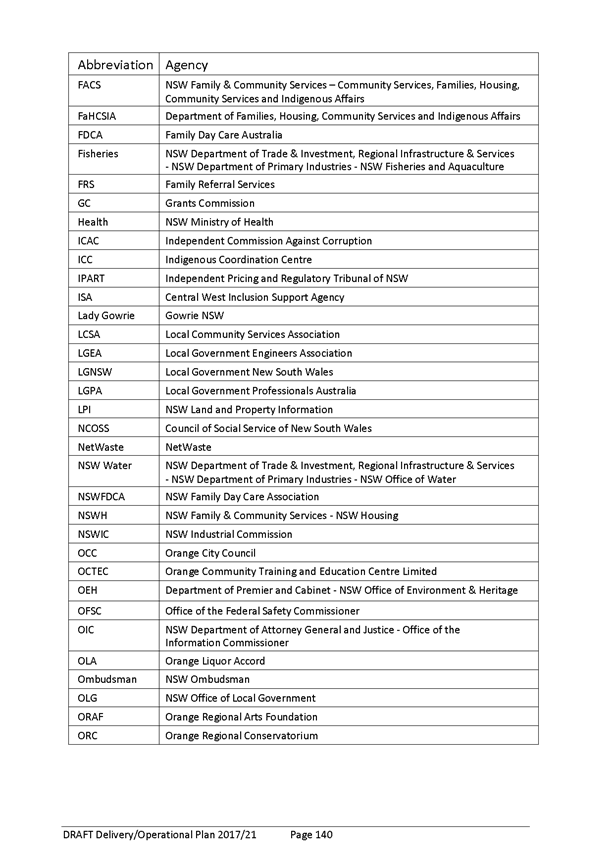
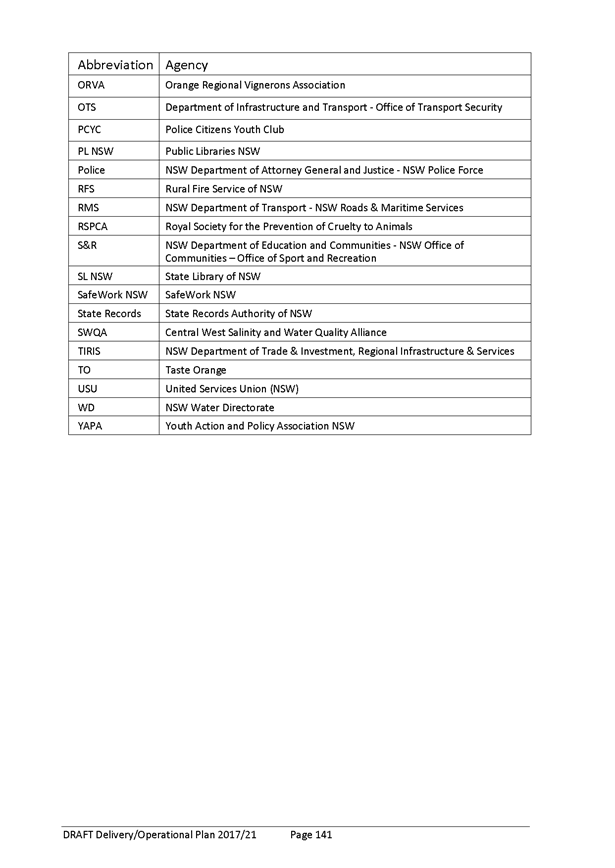
Extraordinary Council Meeting
9 May 2017
2.1 Draft
Community Strategic Plan and Draft Delivery/Operational Plan 2017/18 - 2020/21
Attachment 4 Fees
and Charges - 2017-2018 - Draft 05-05-2017
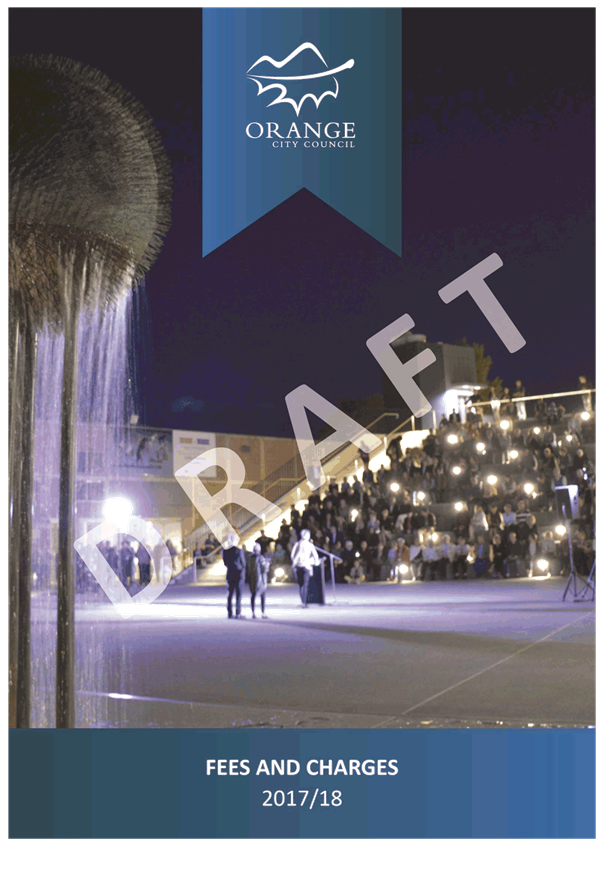
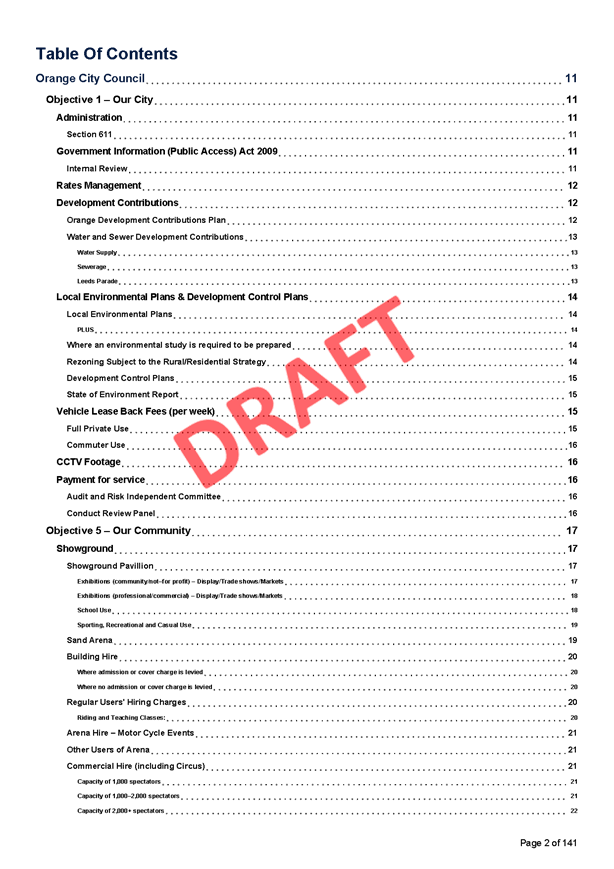
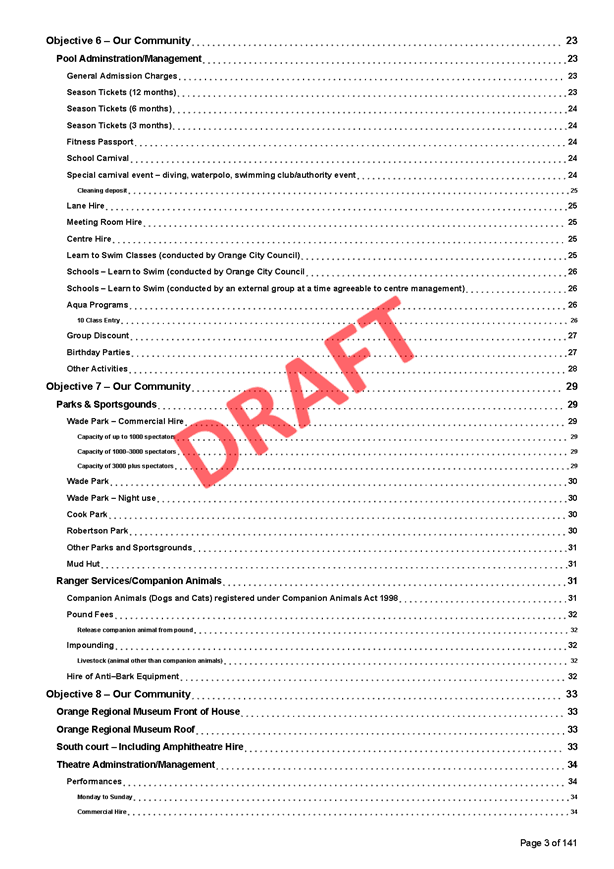
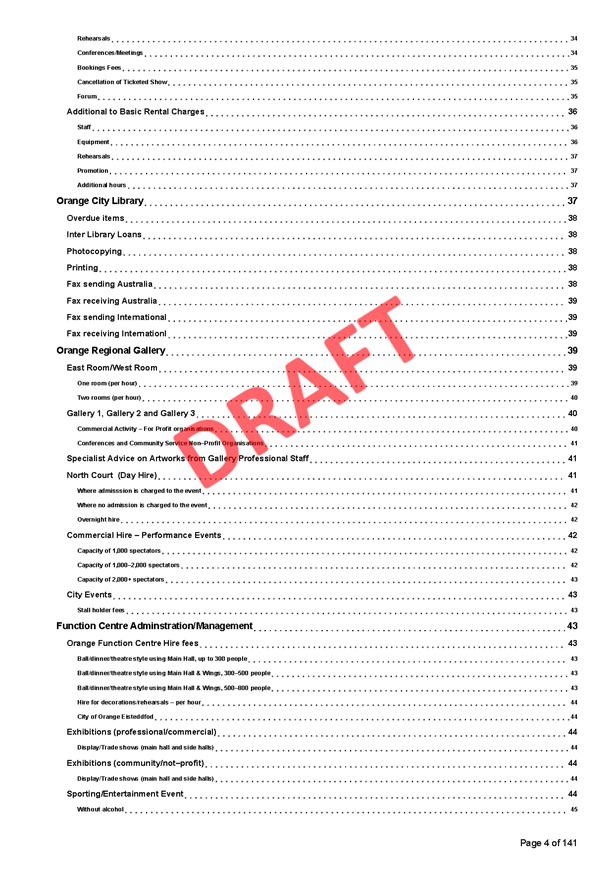
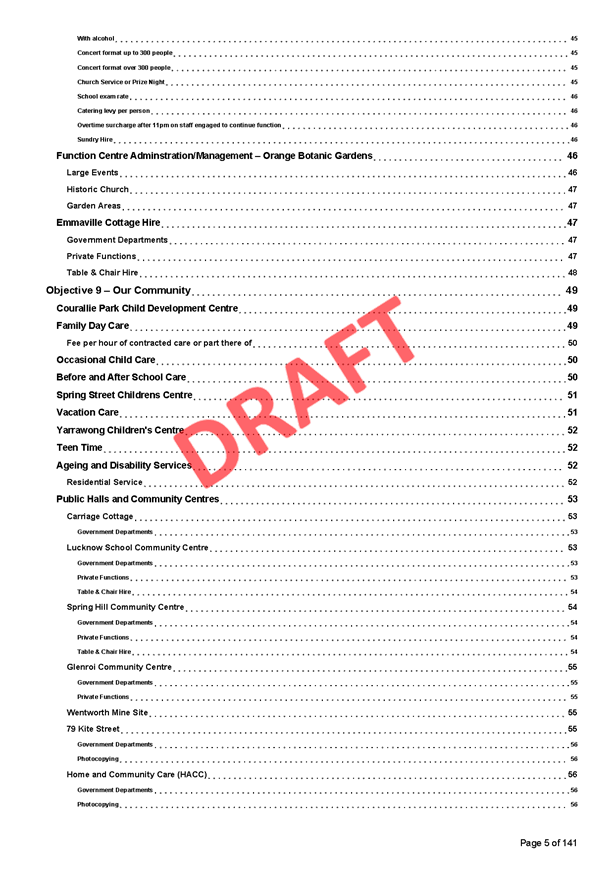

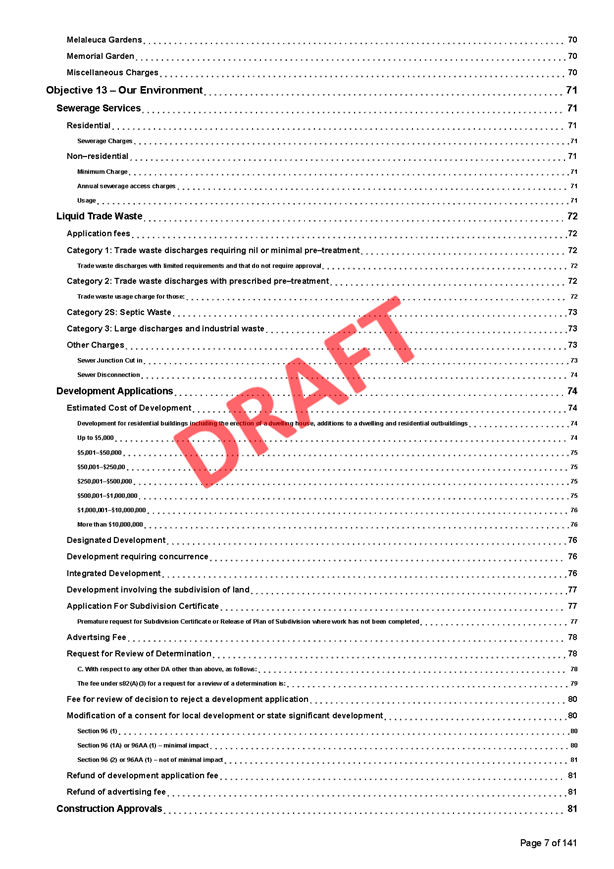
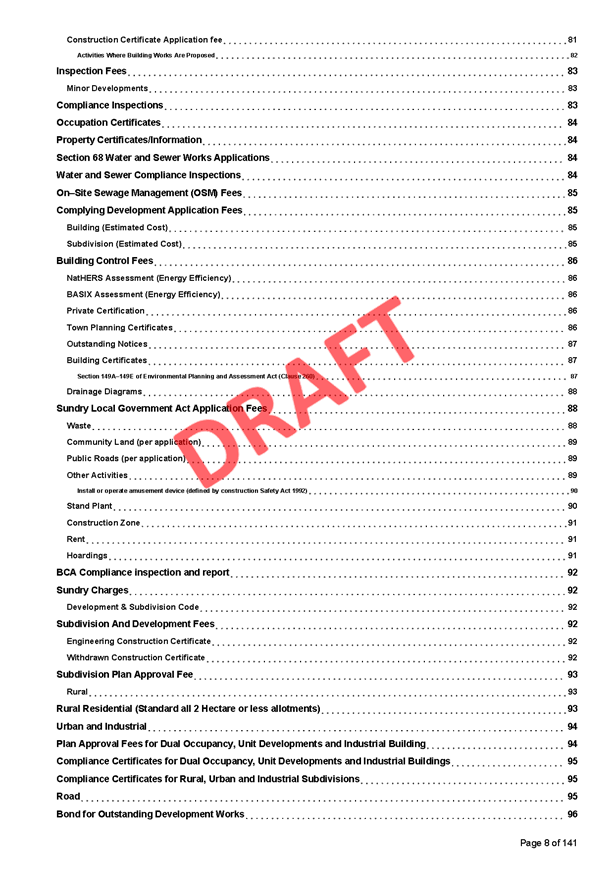
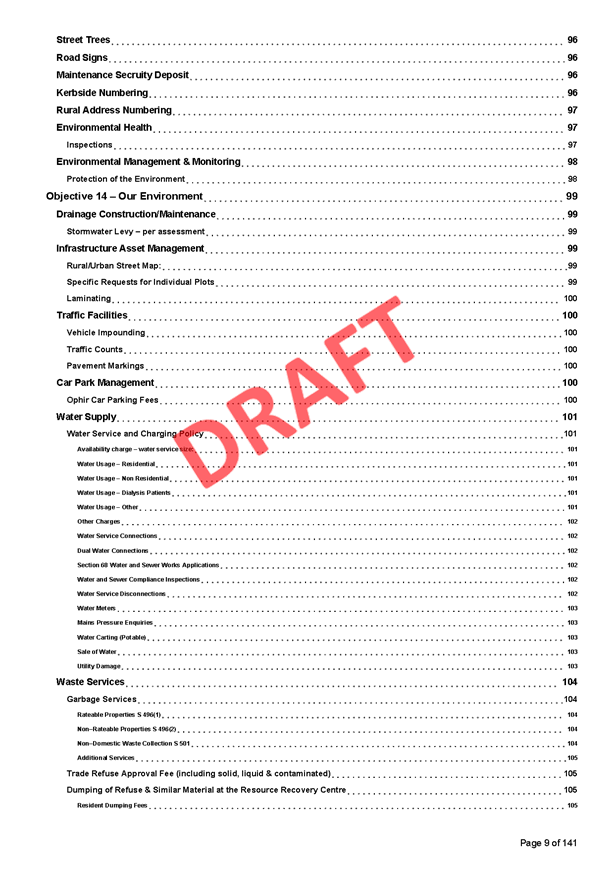
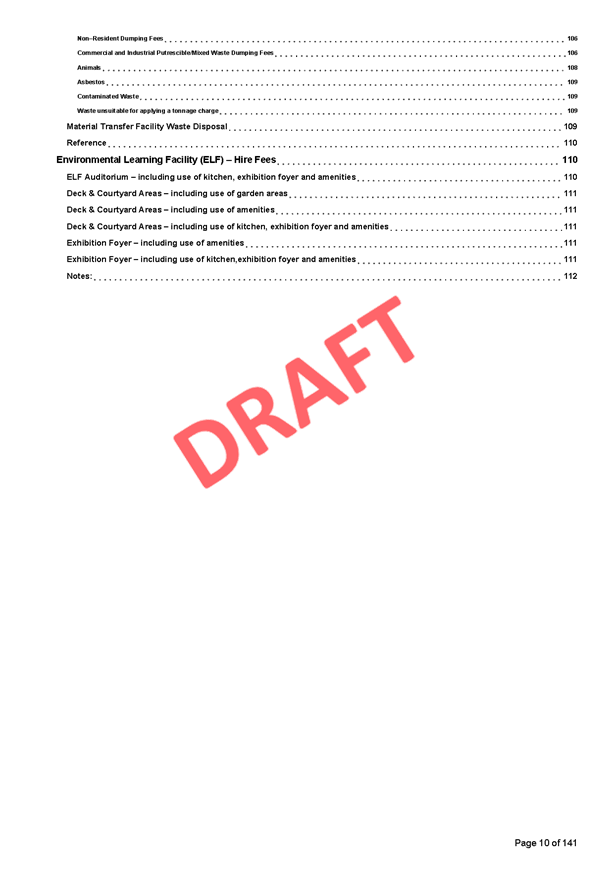
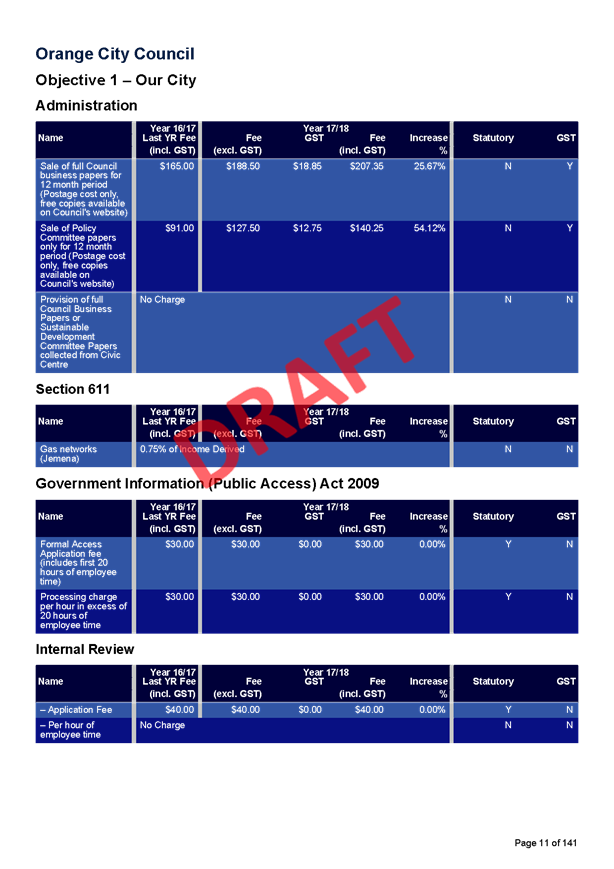
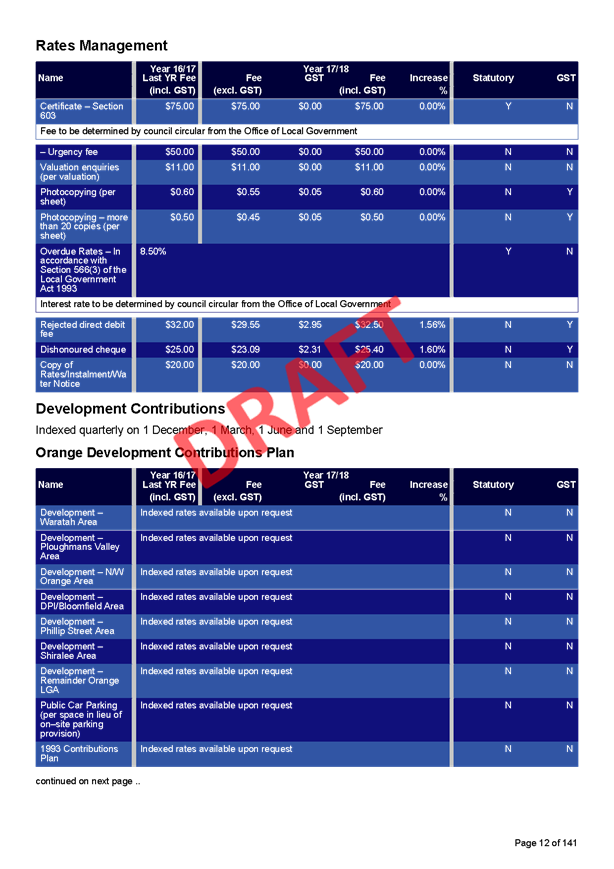
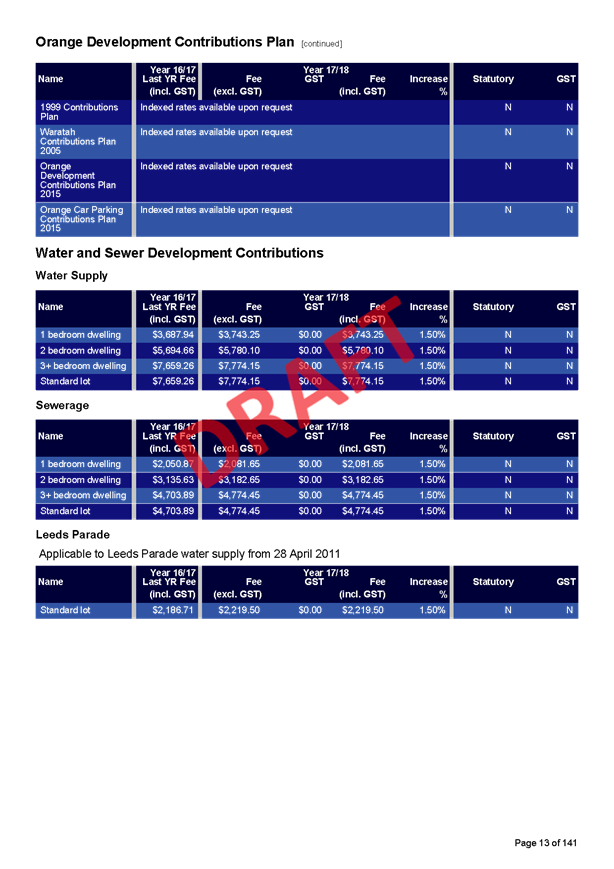
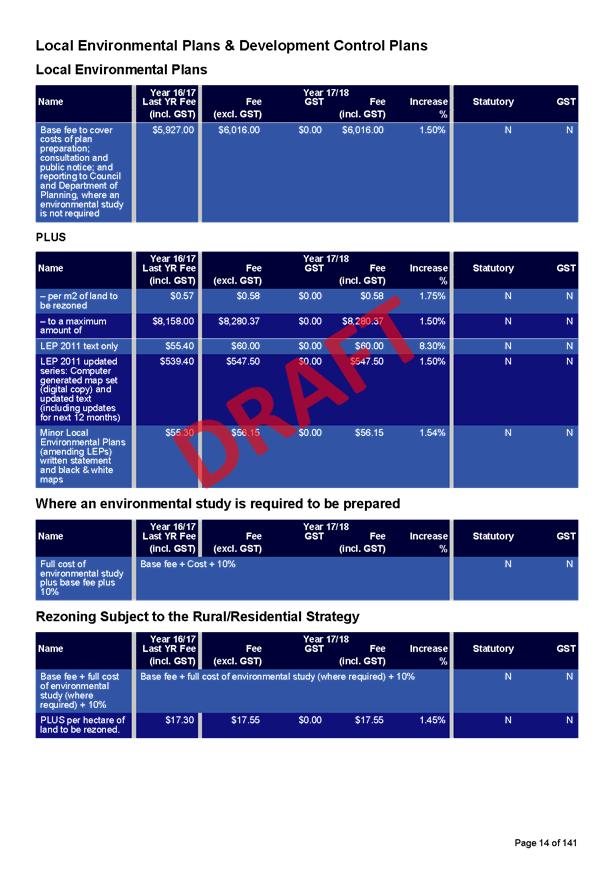
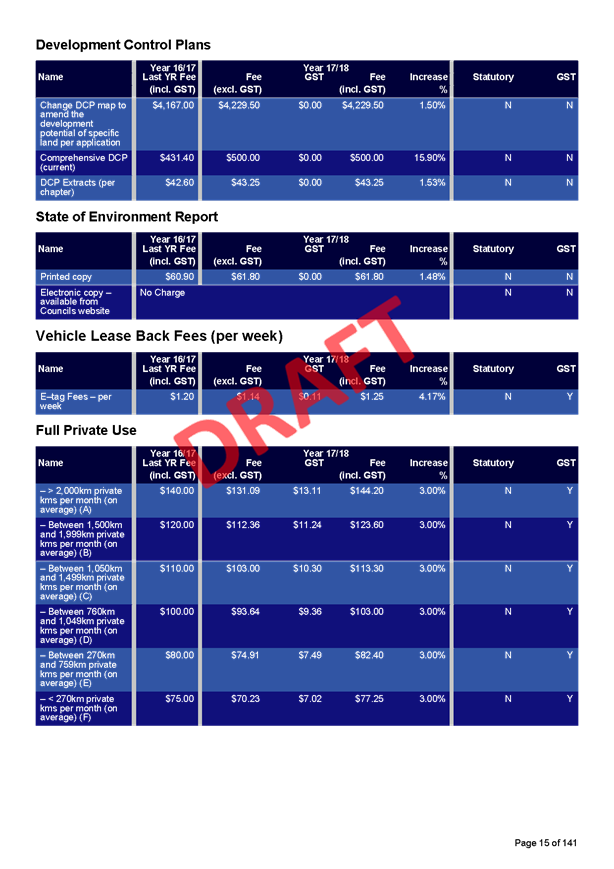

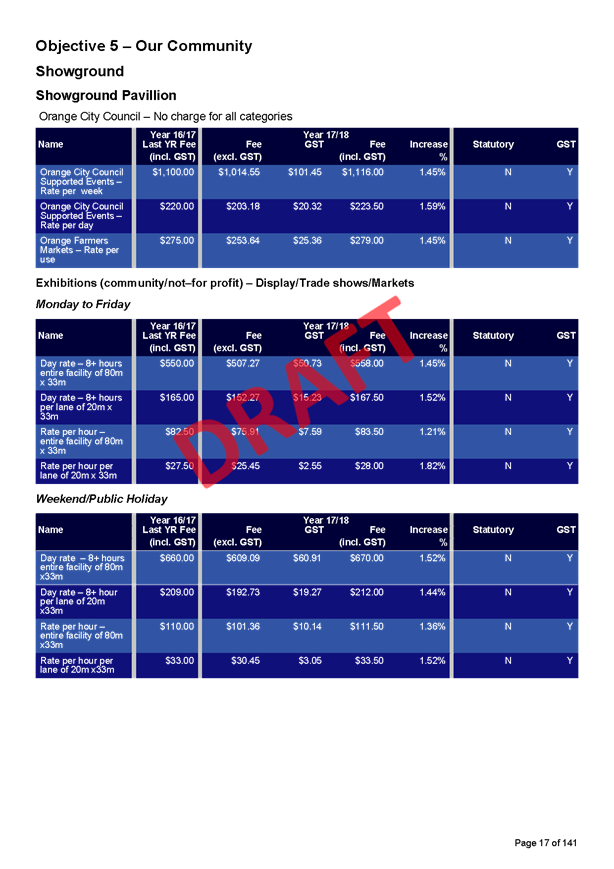
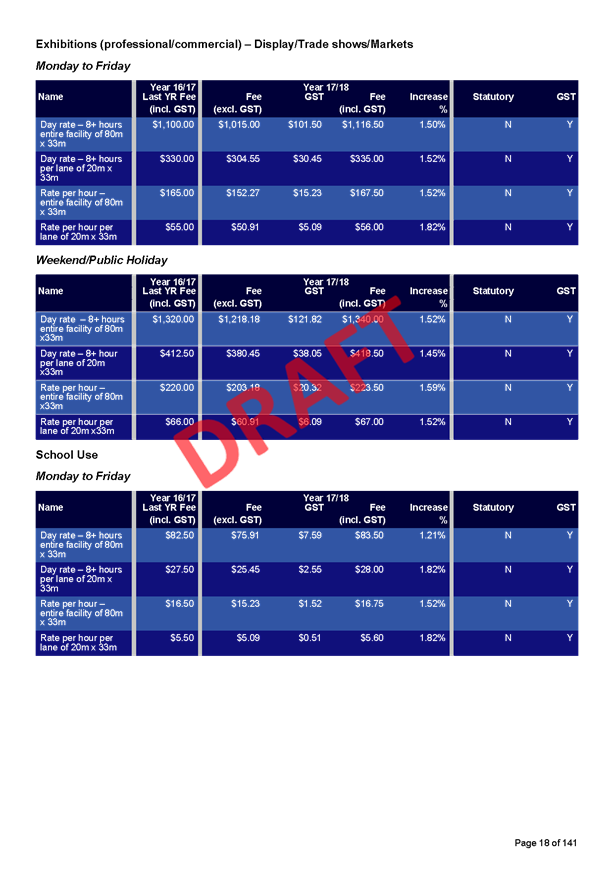
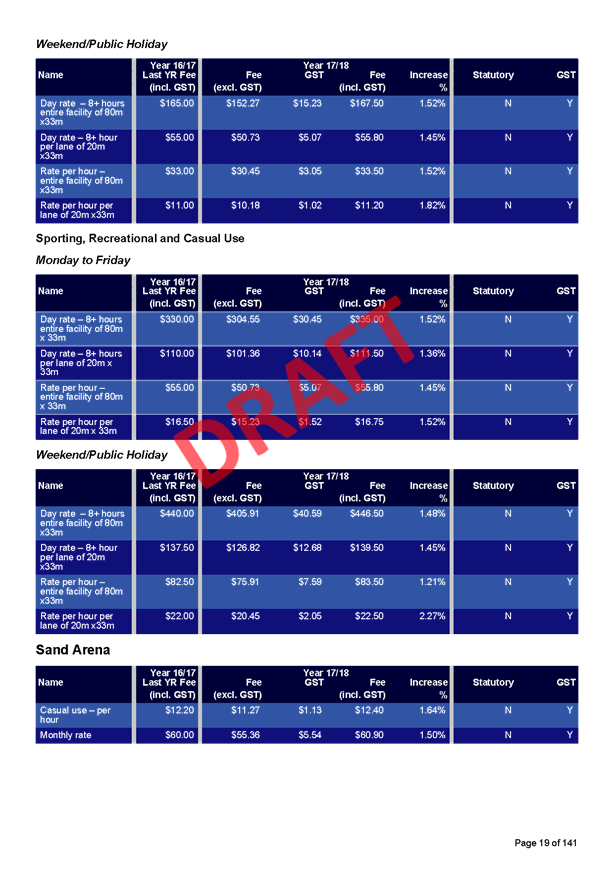
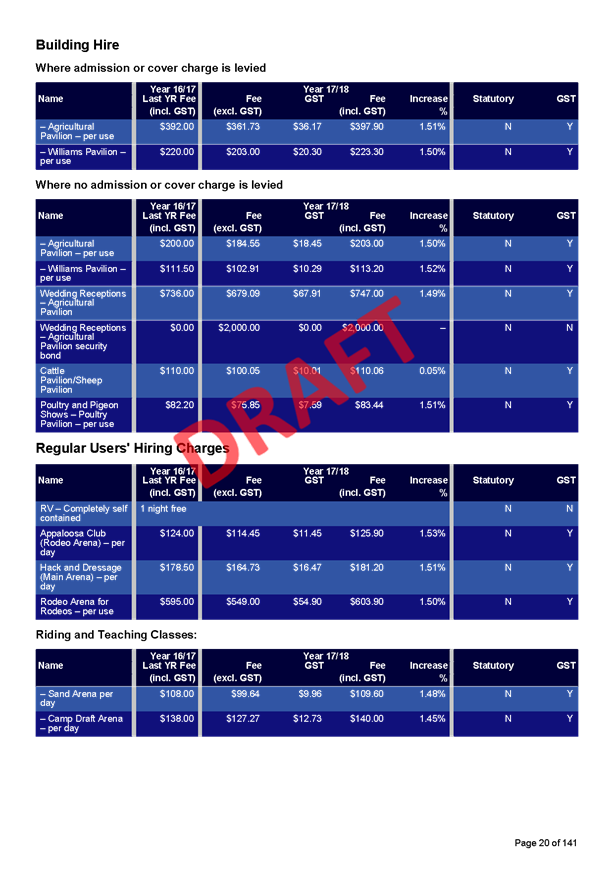
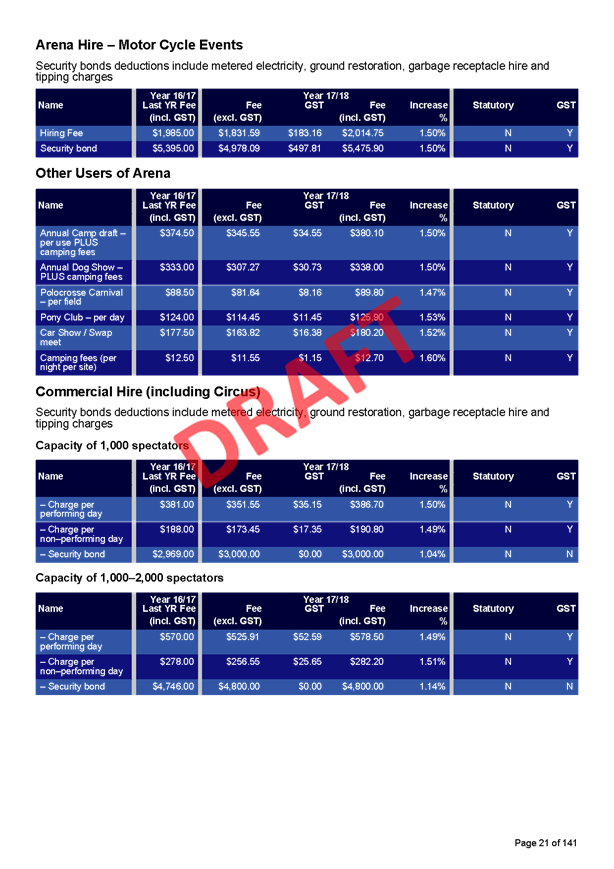
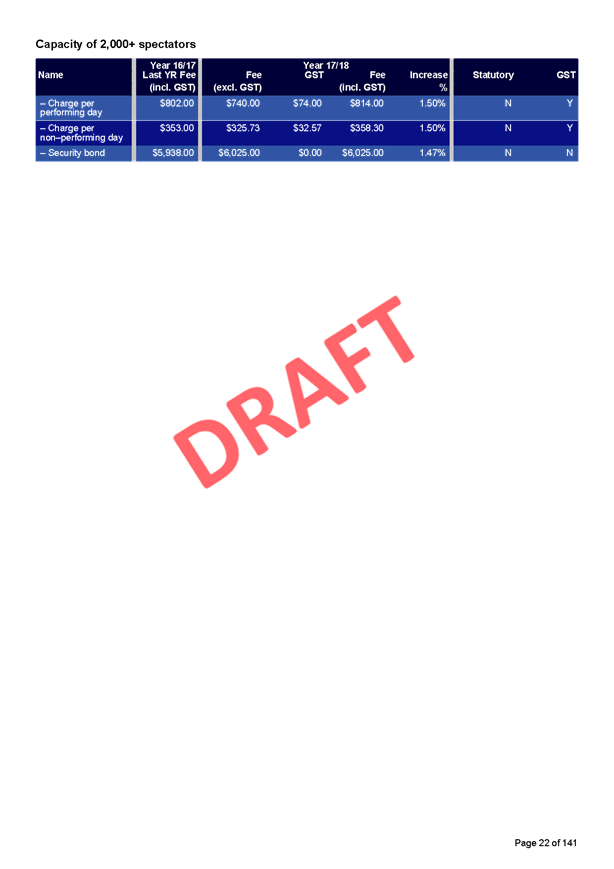
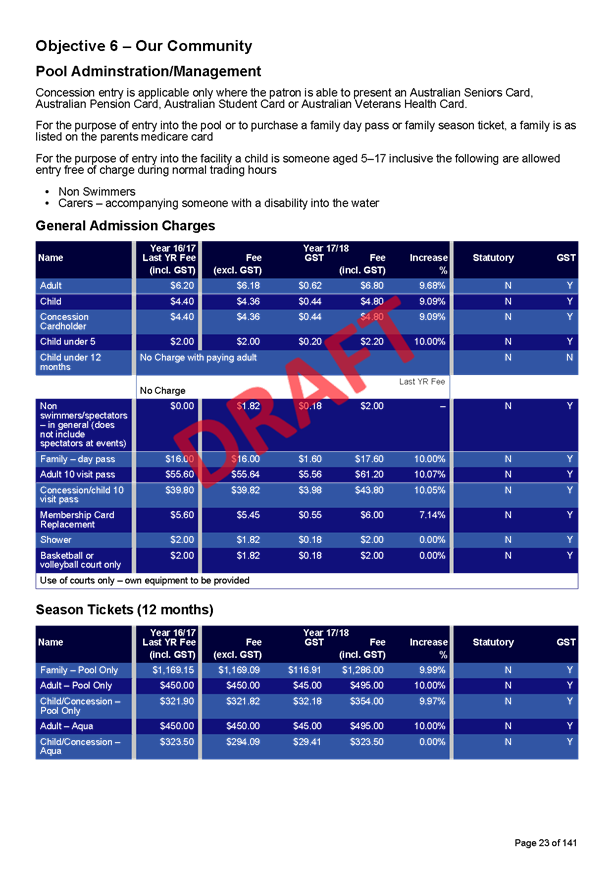
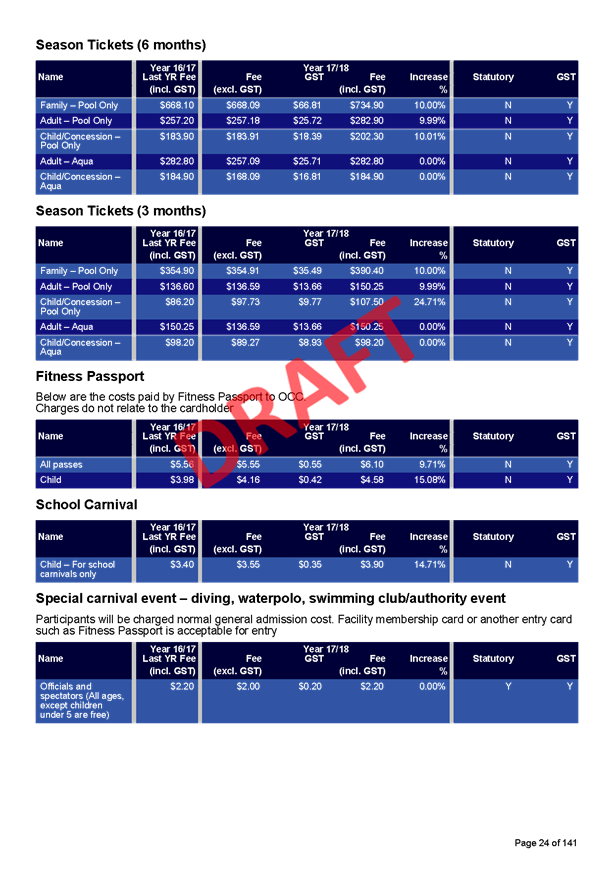
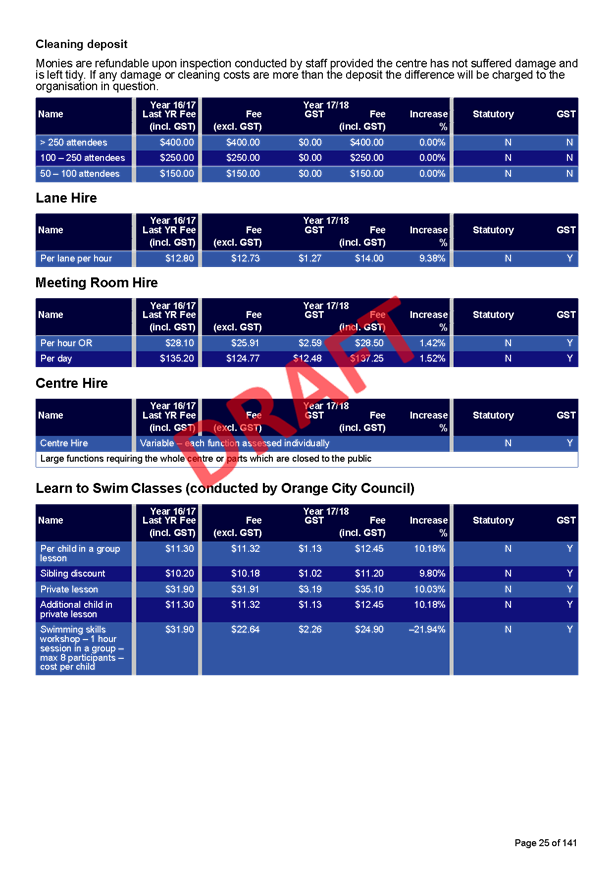
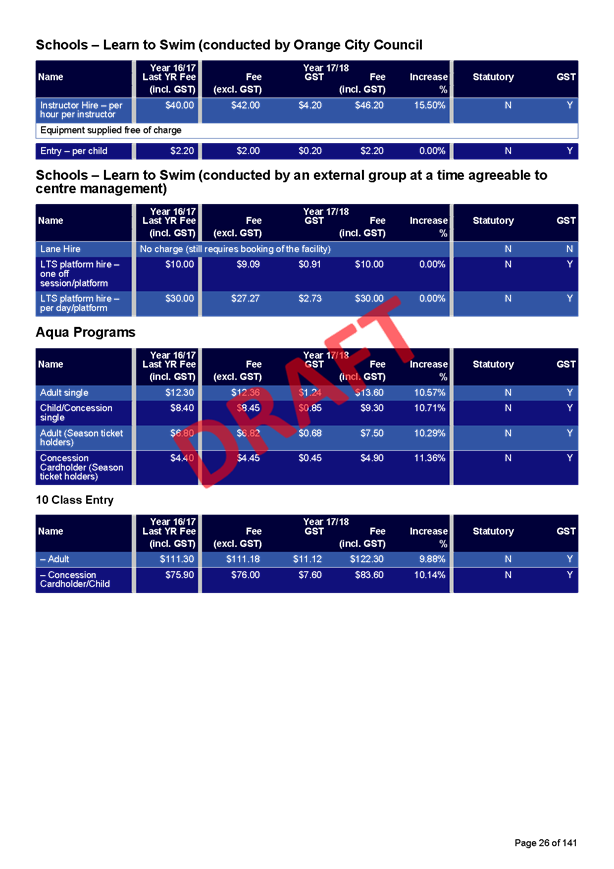
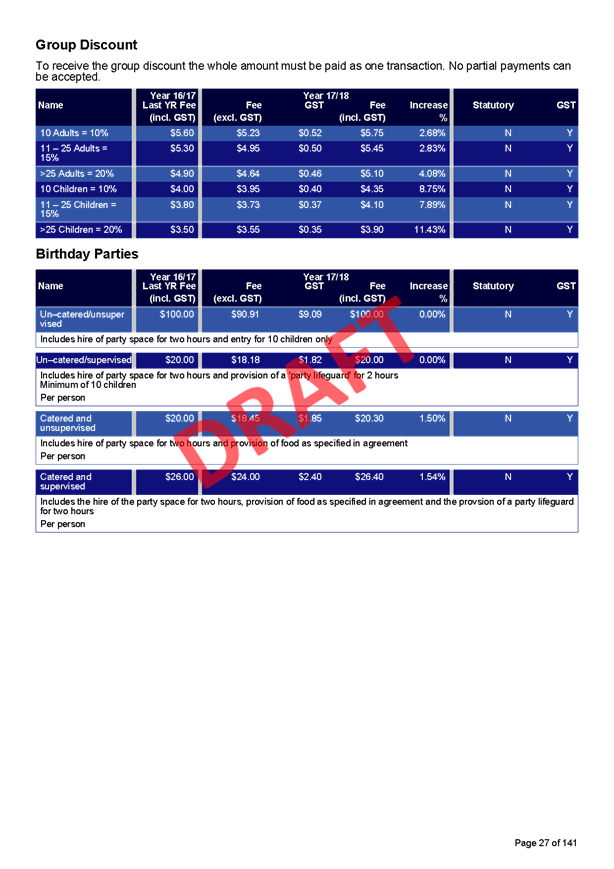
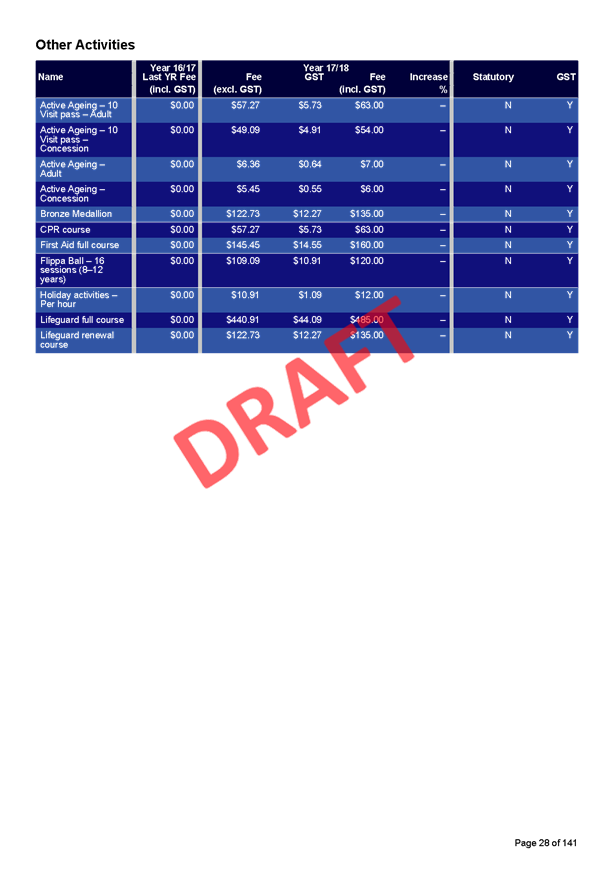
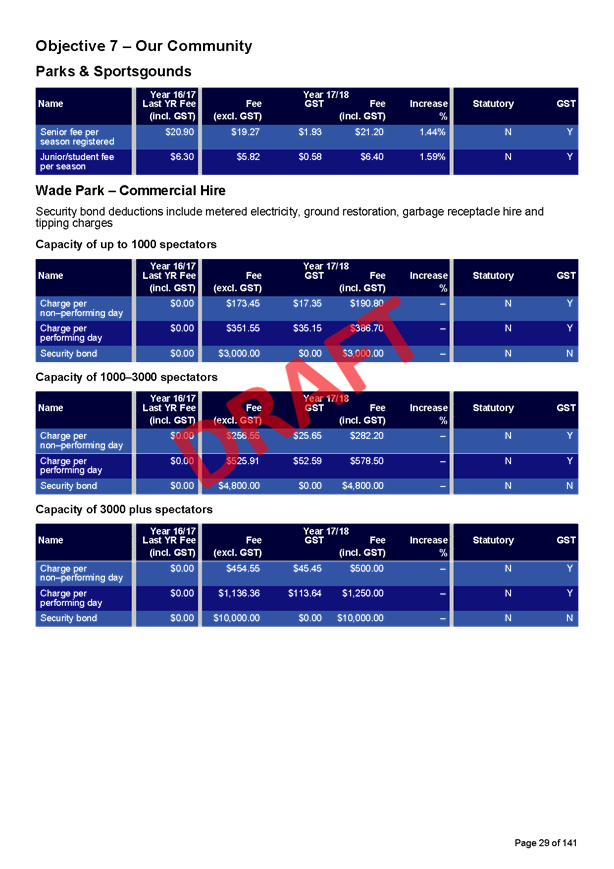
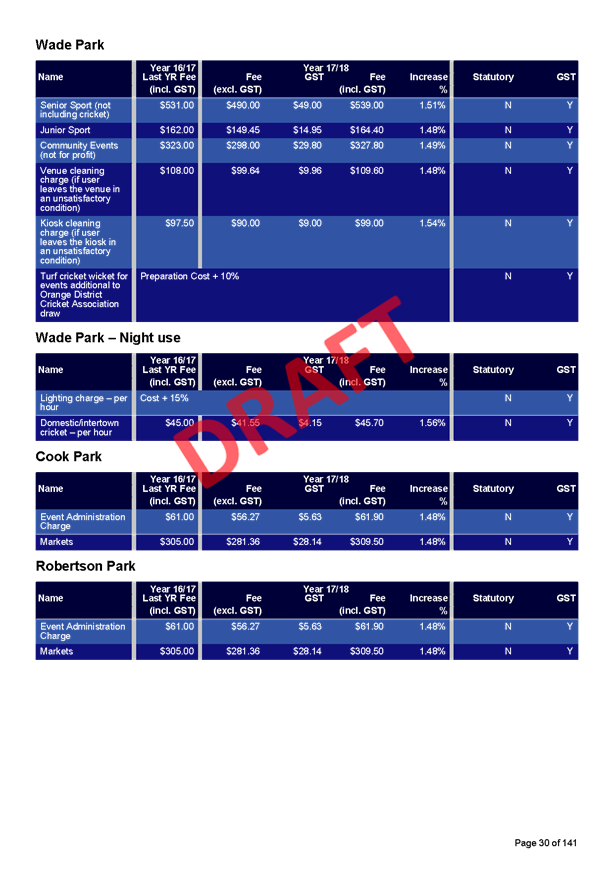
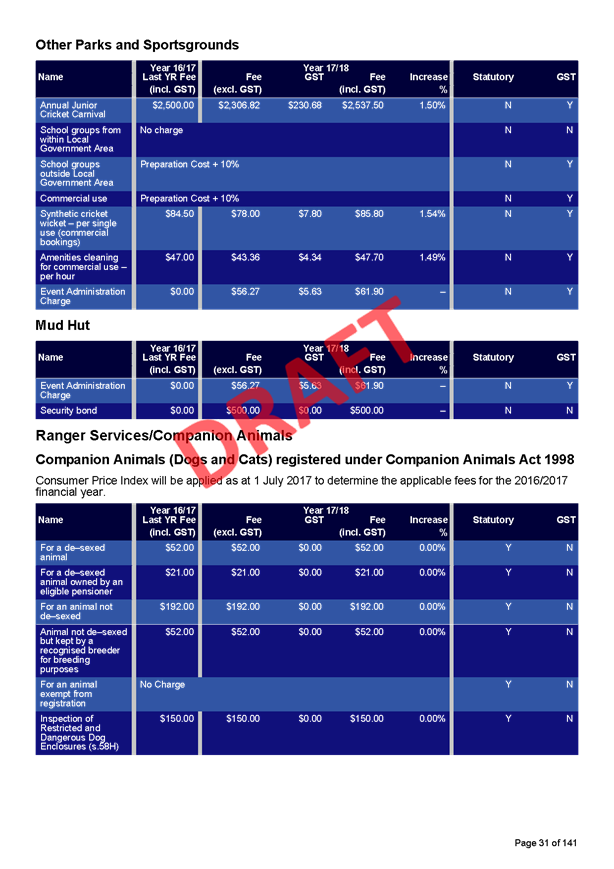
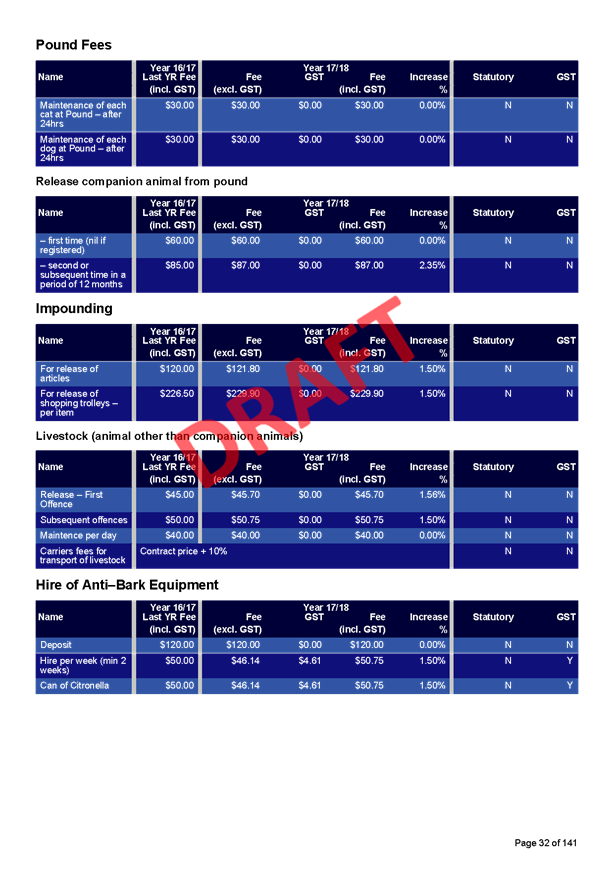

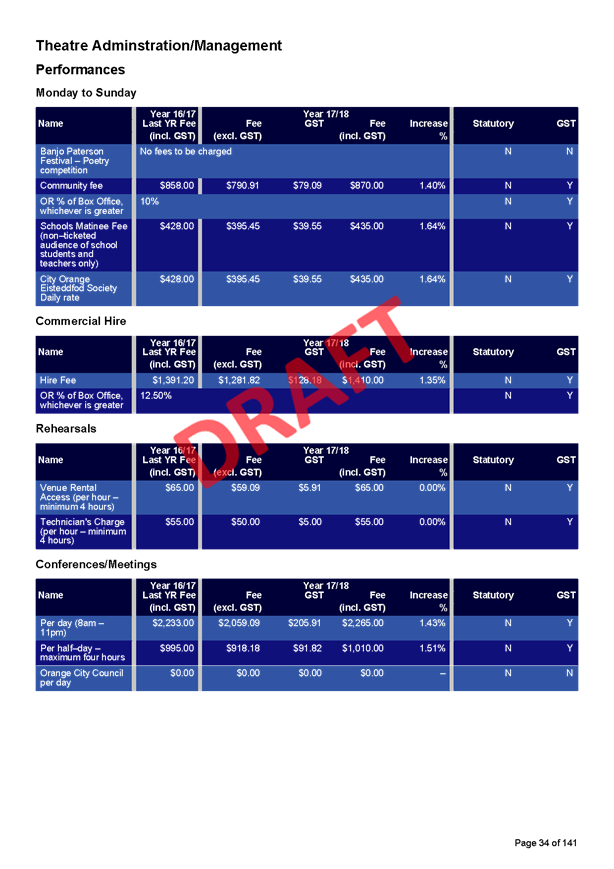
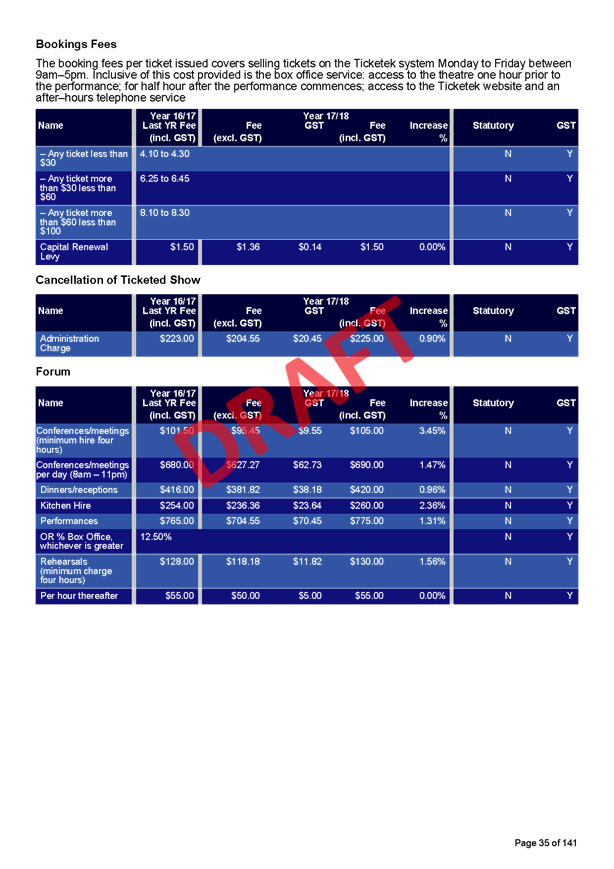
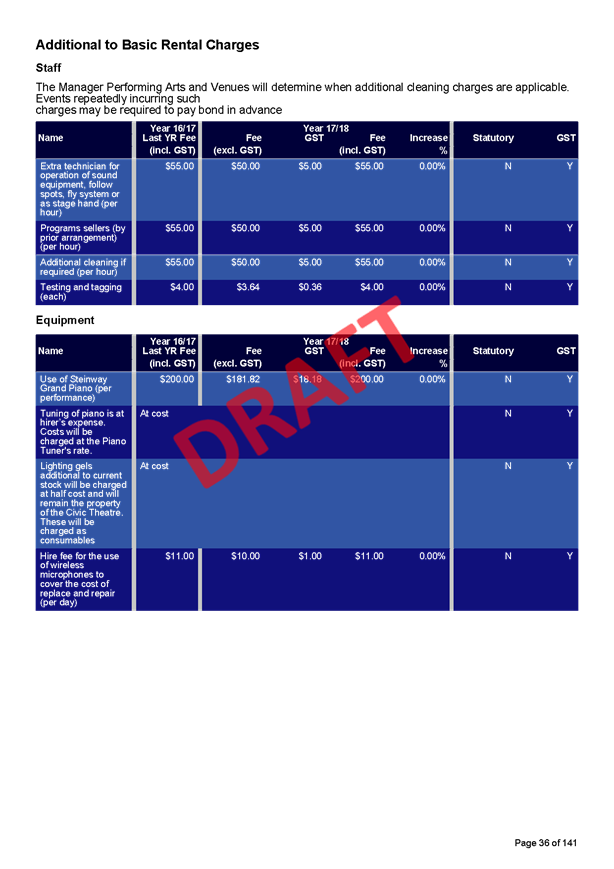
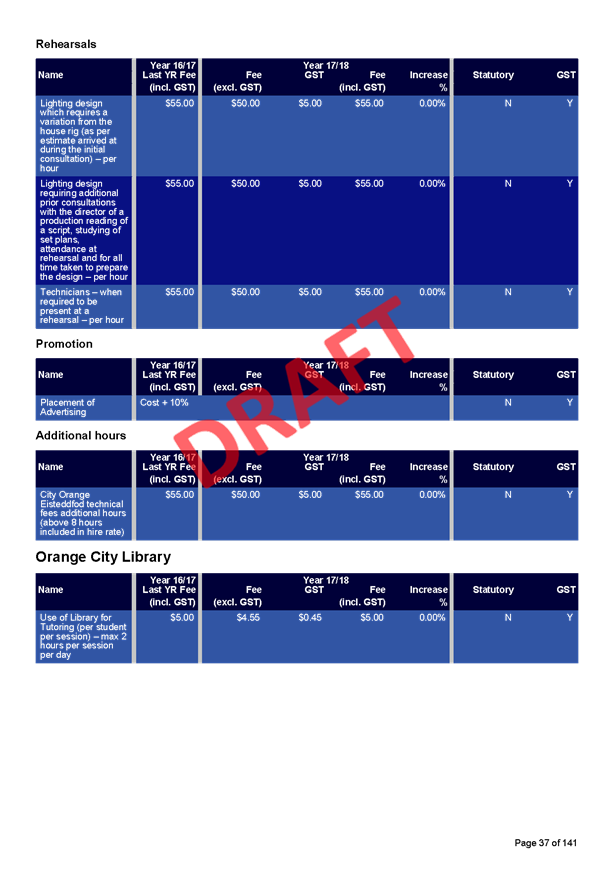
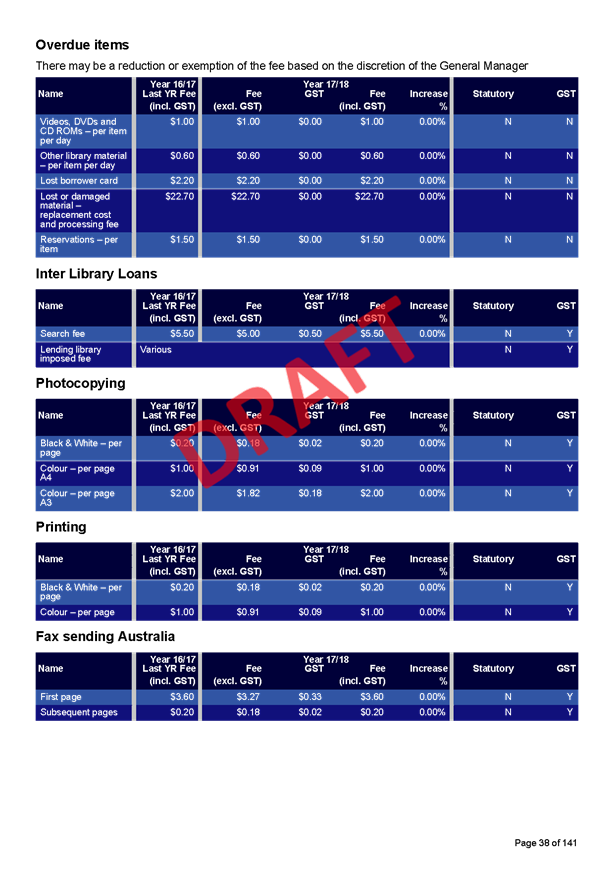
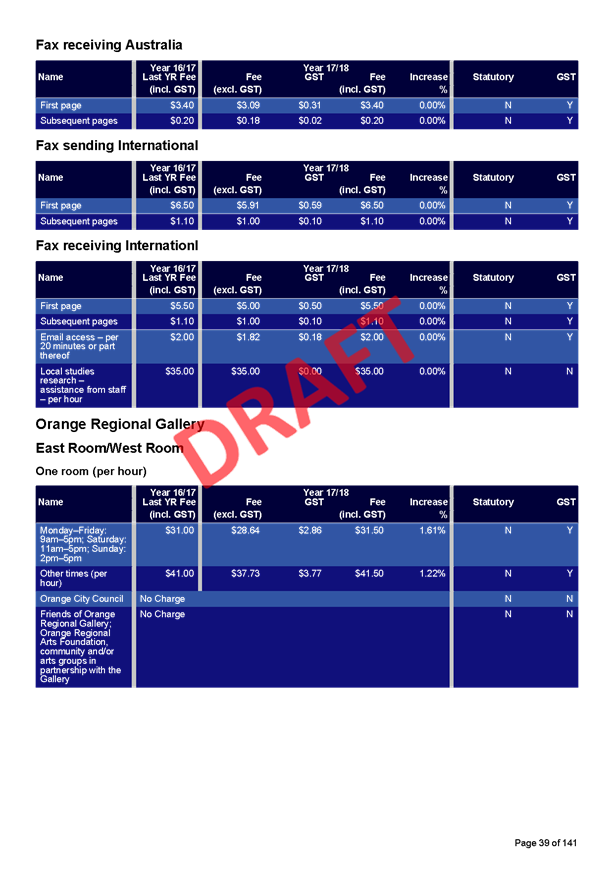
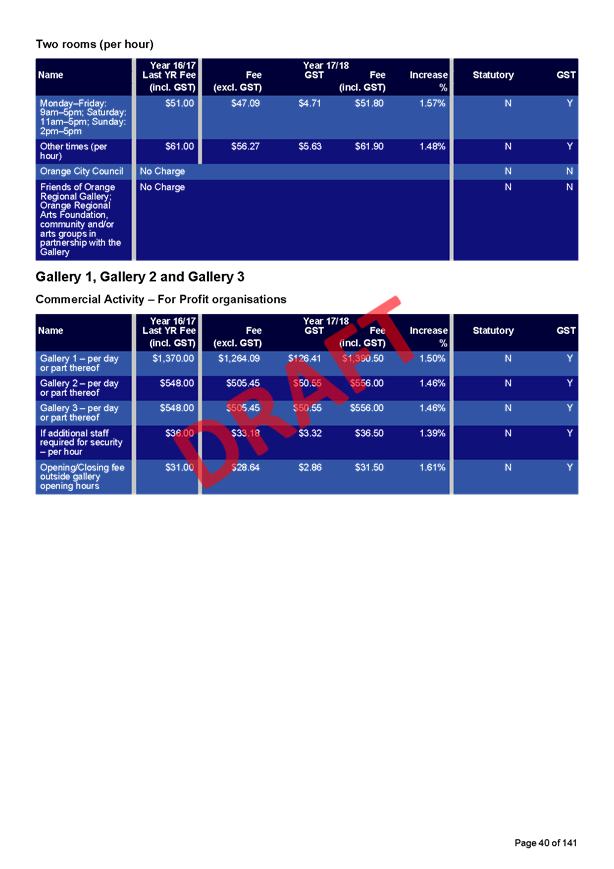
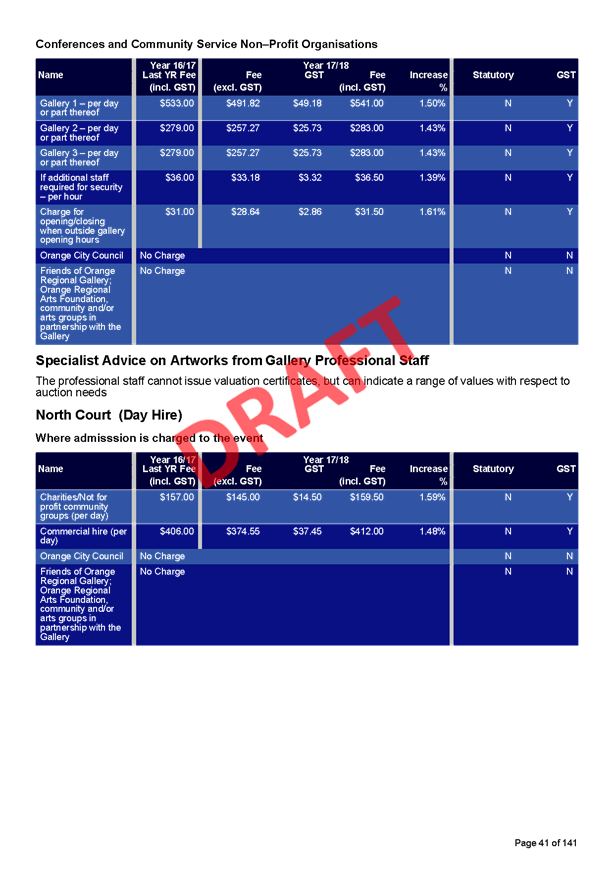

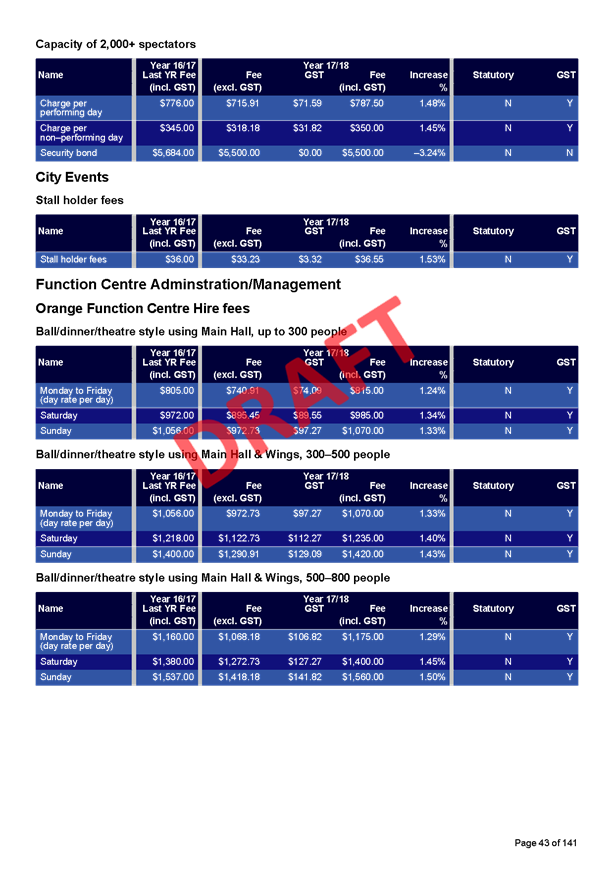
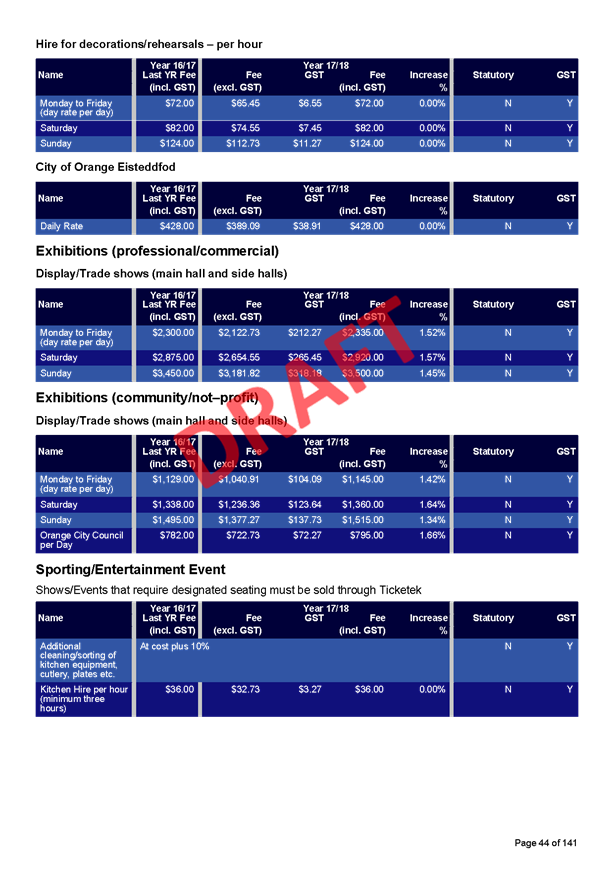
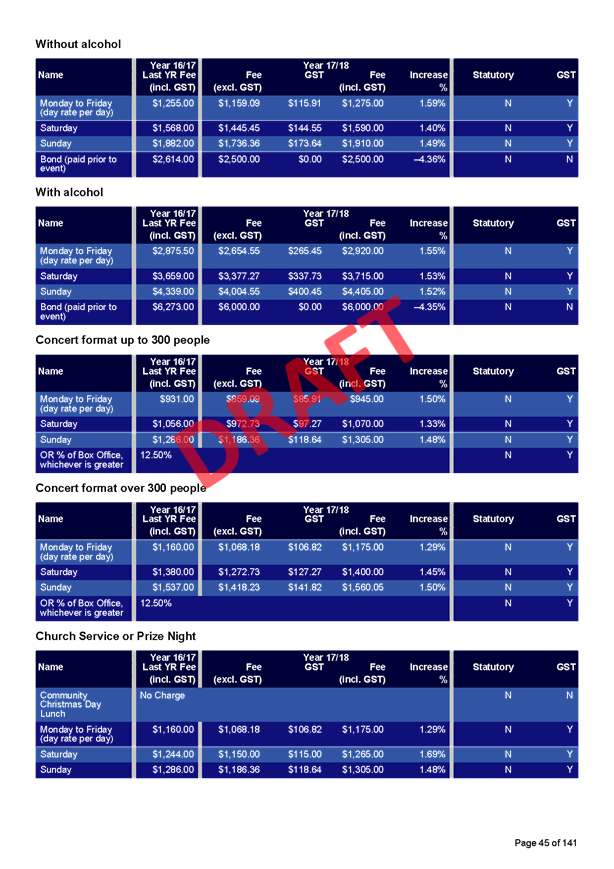
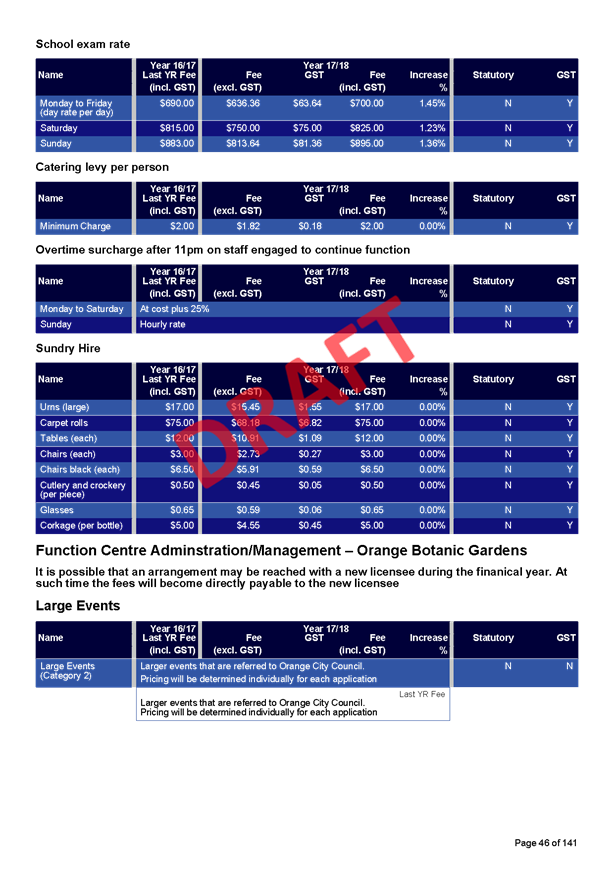
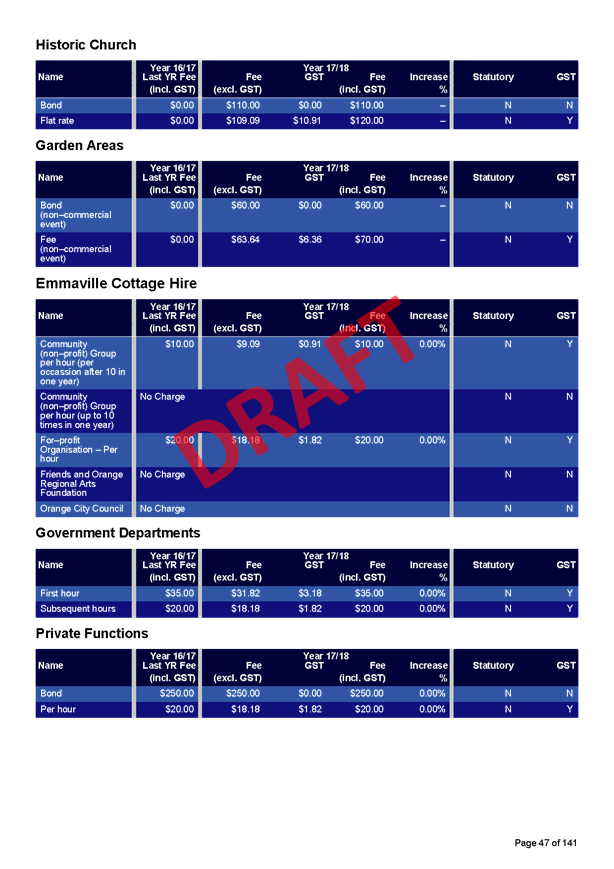

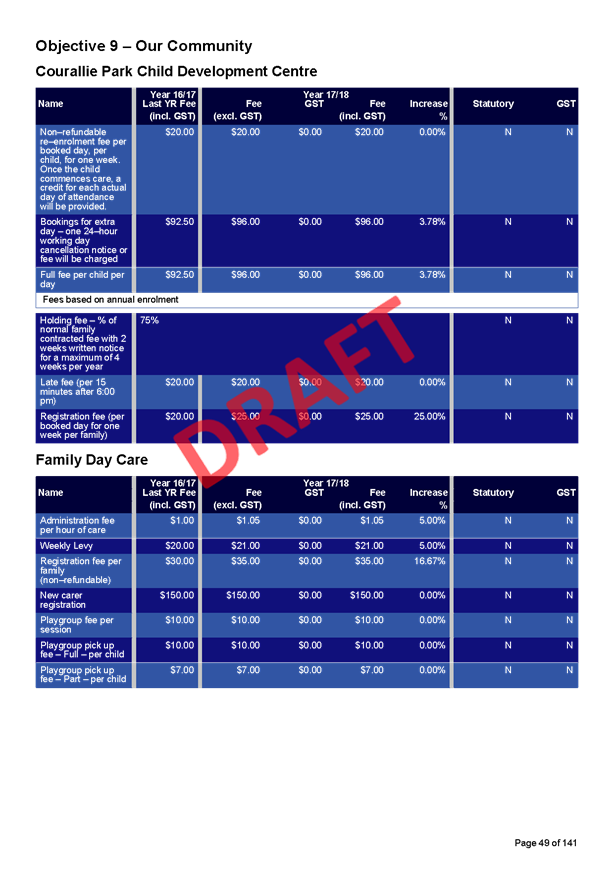
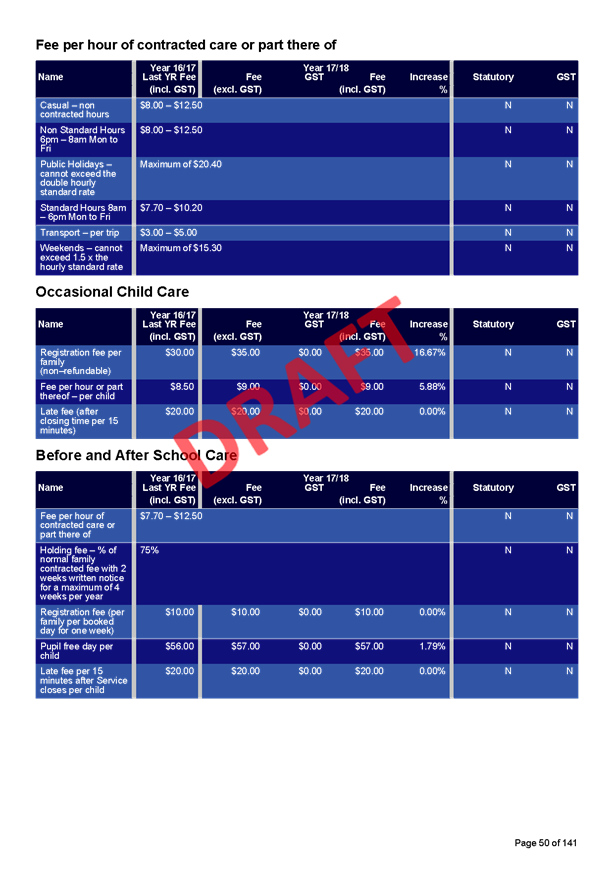
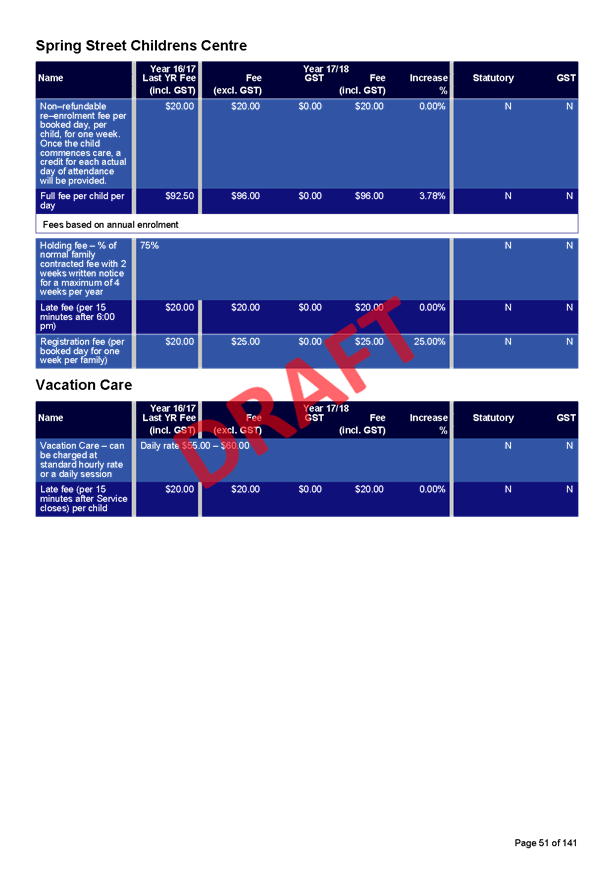
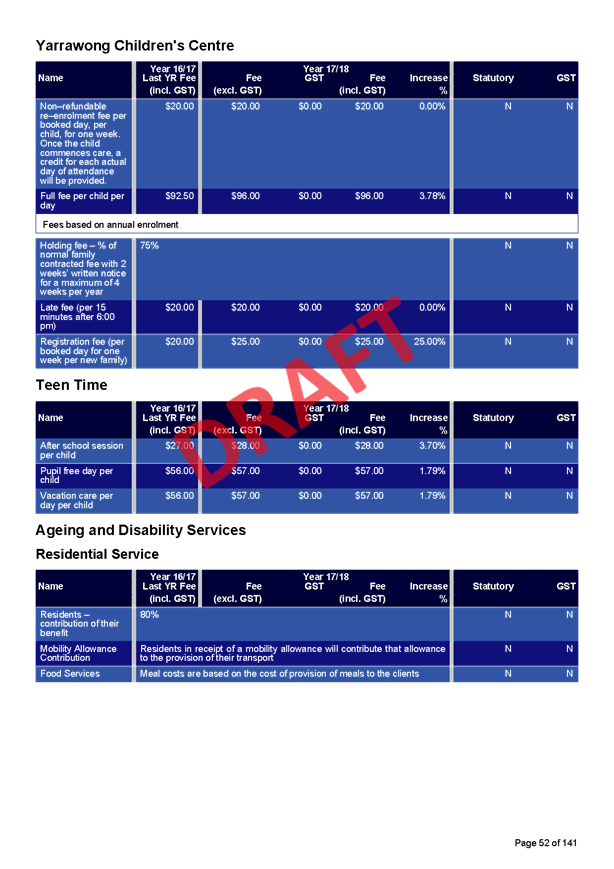
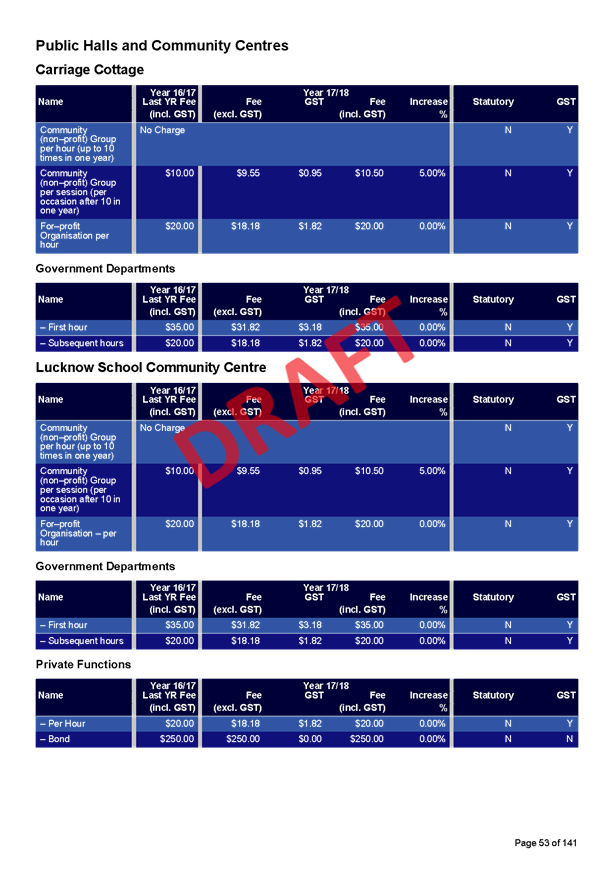
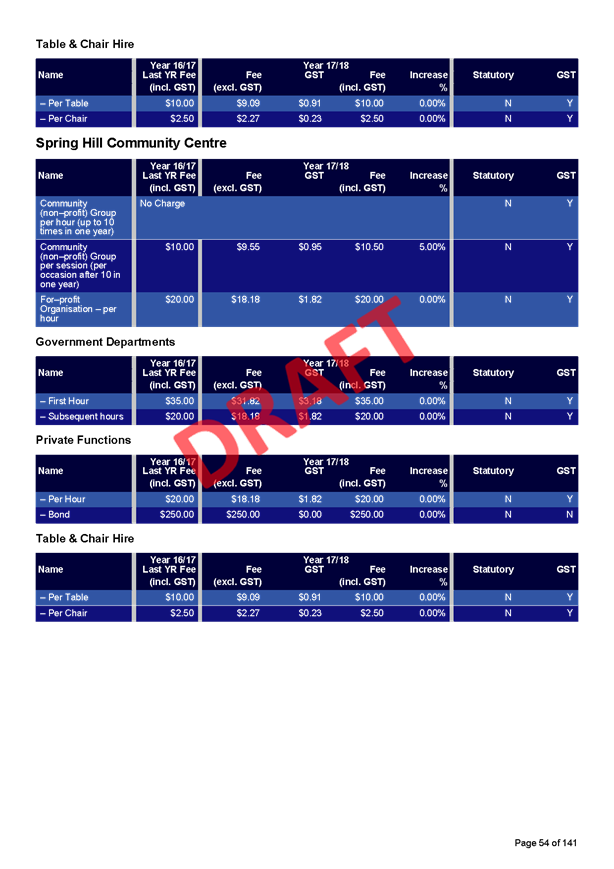
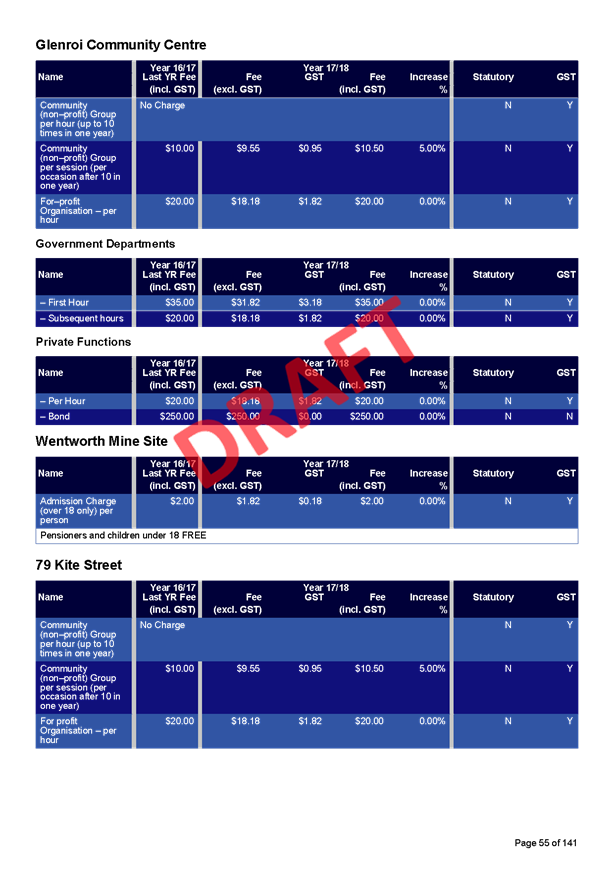
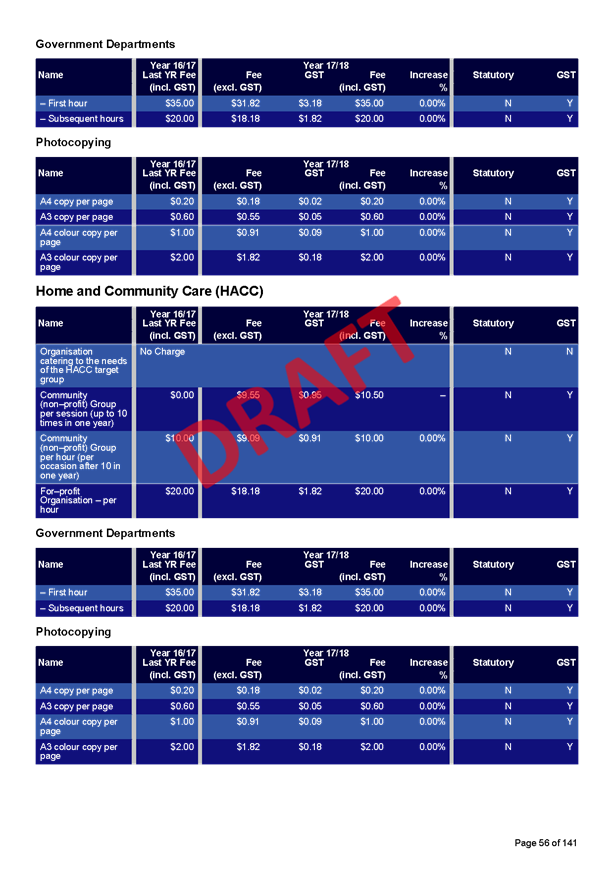

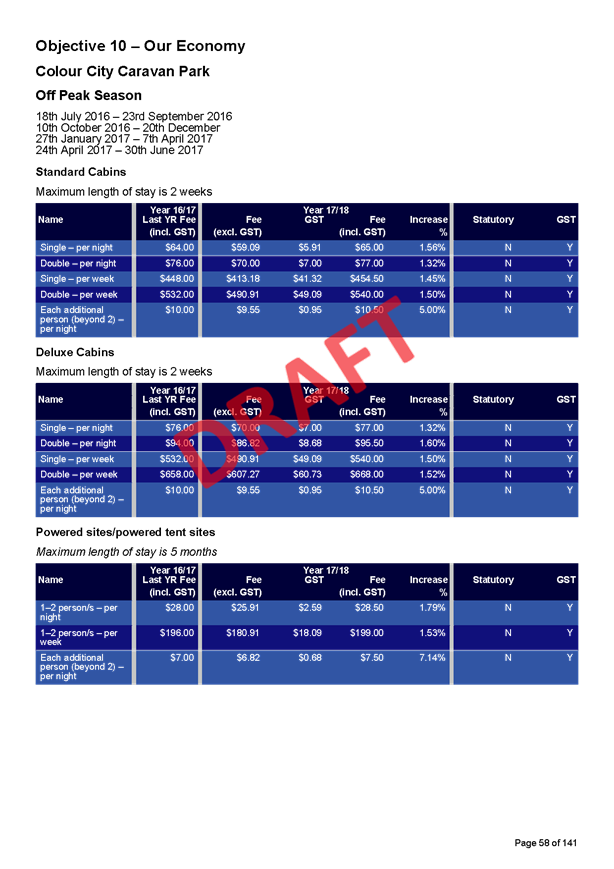
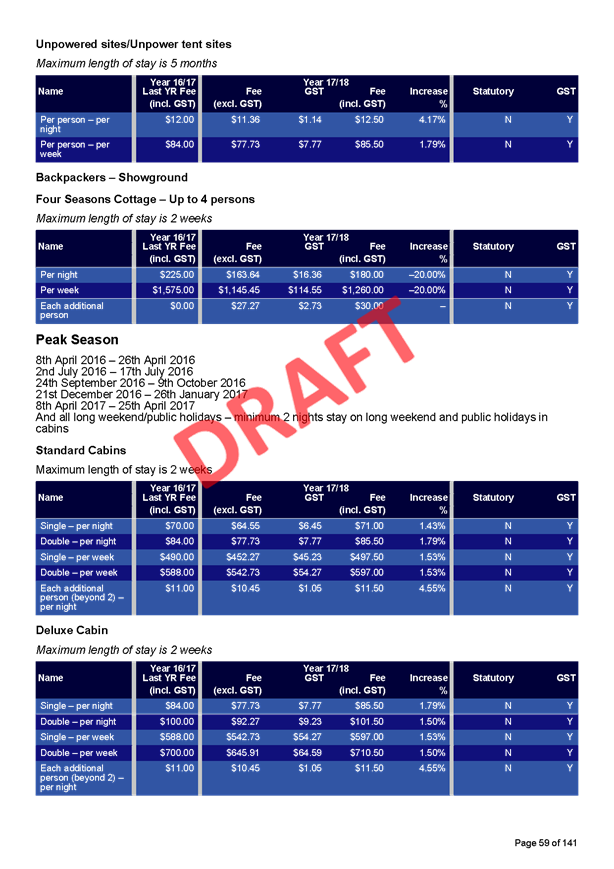
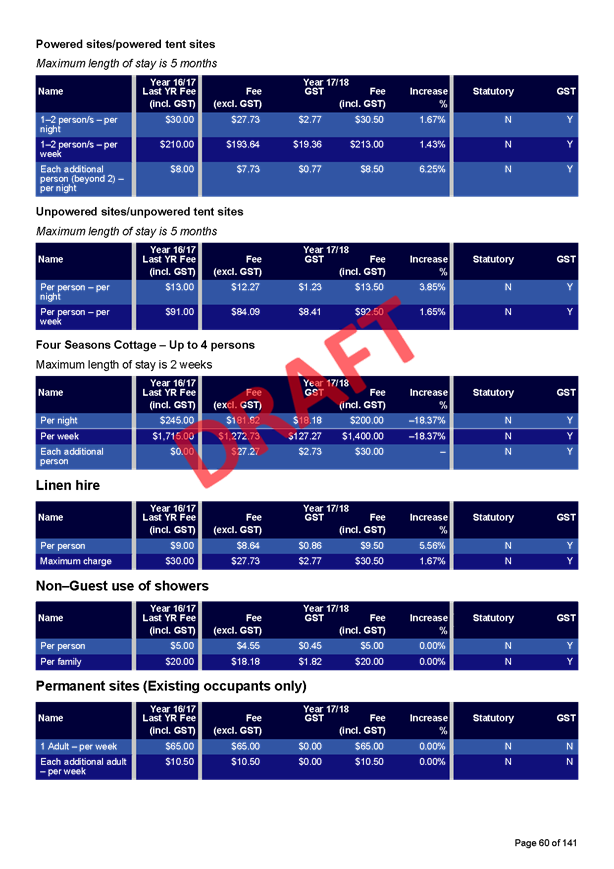

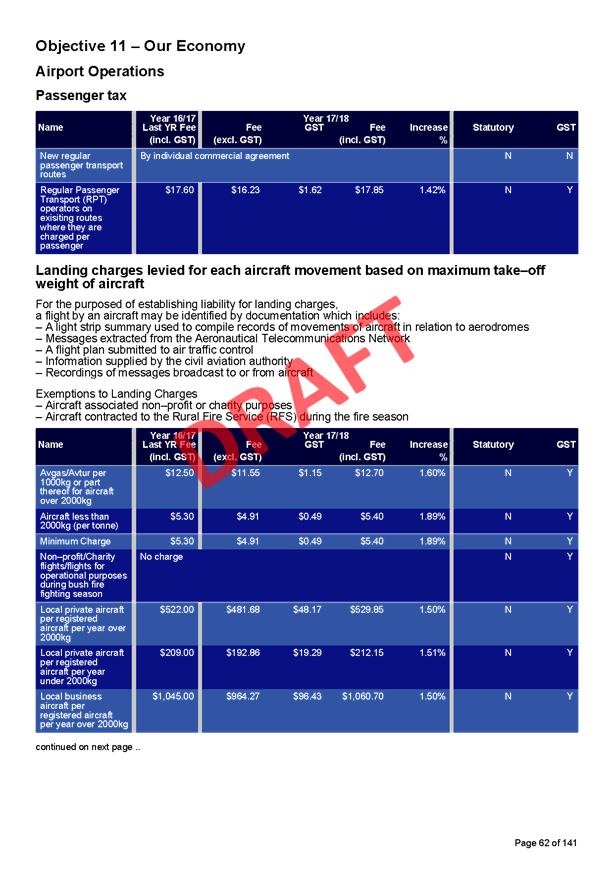
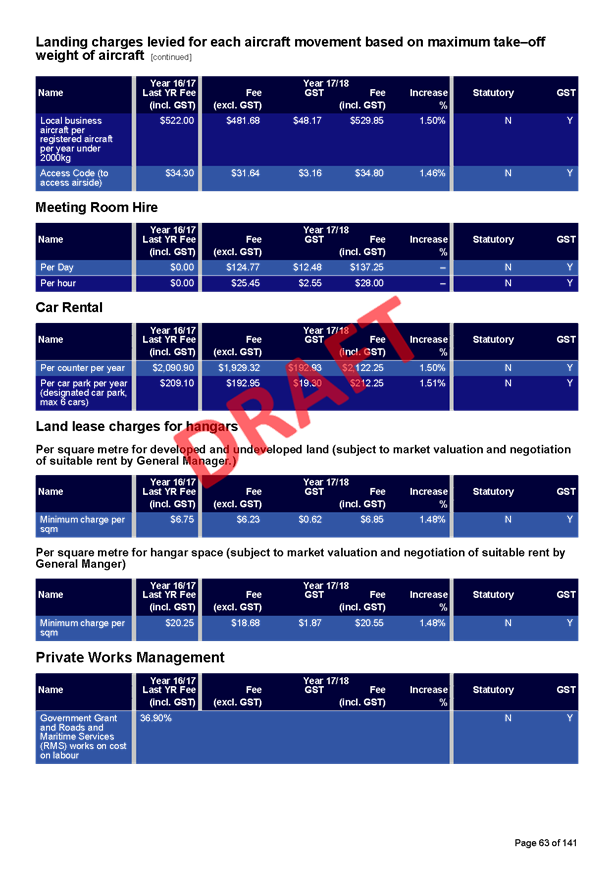
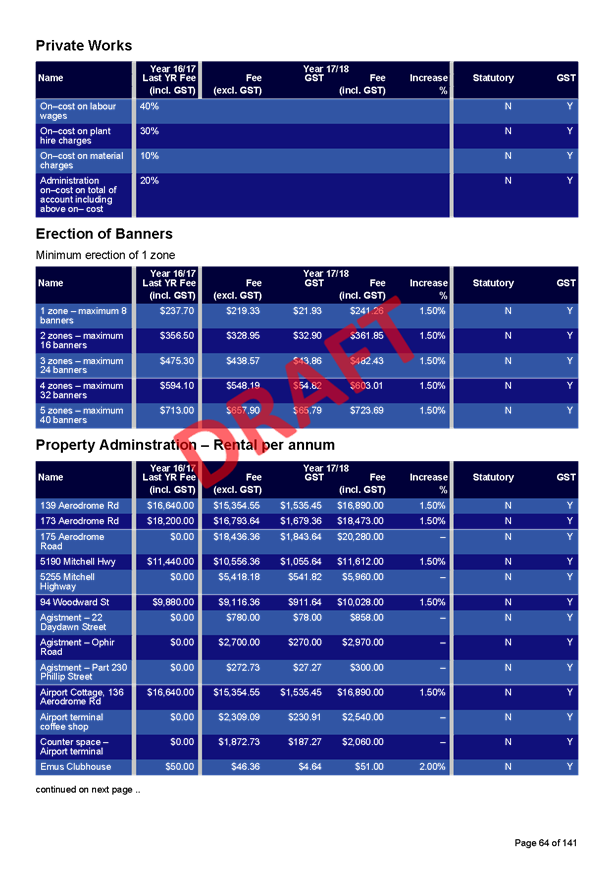

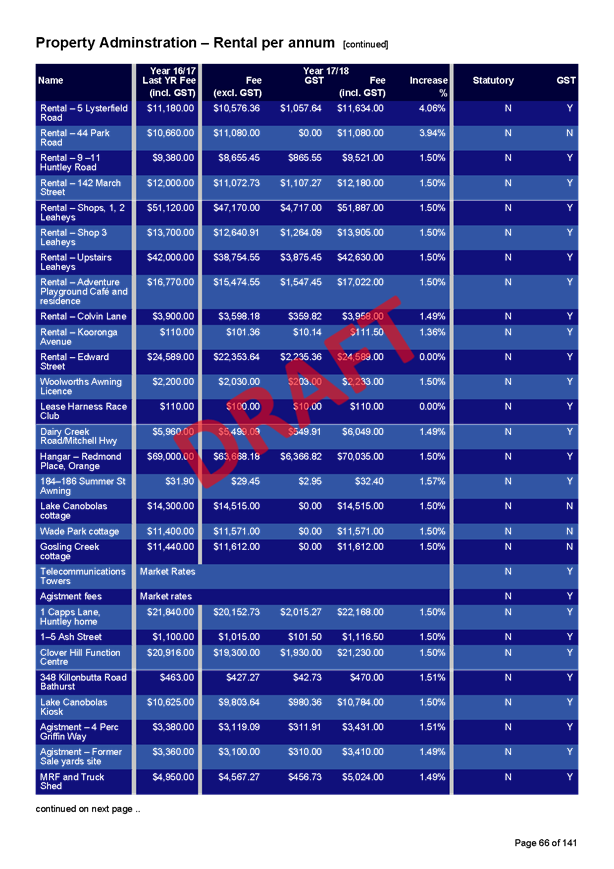

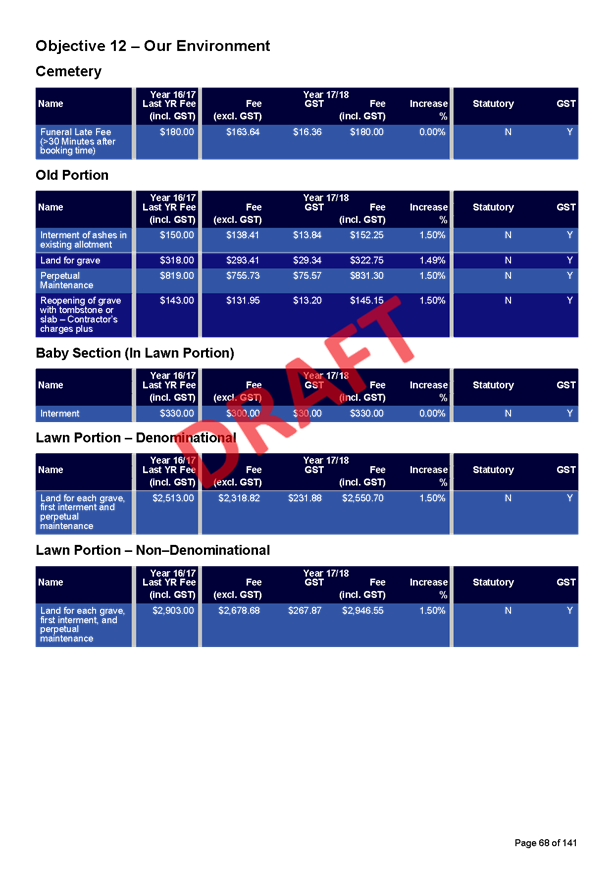
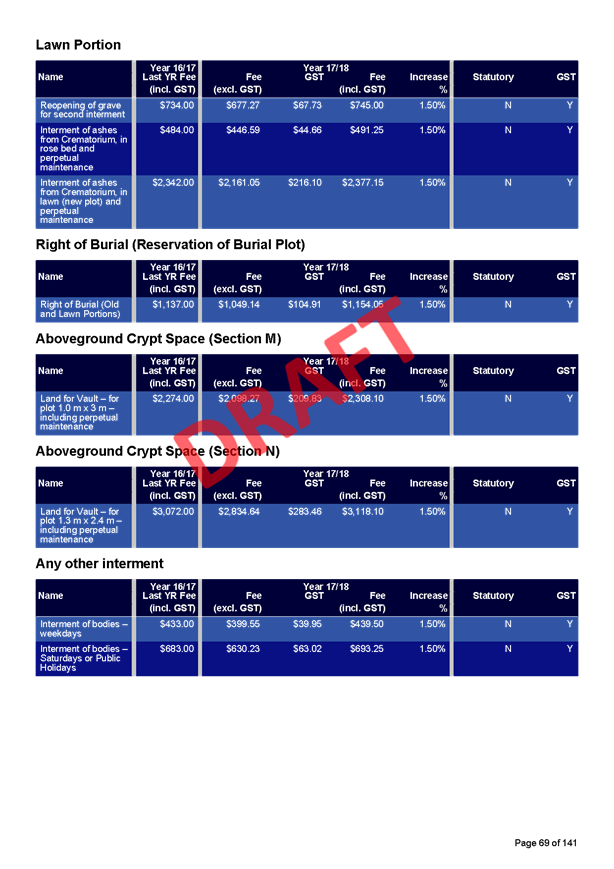
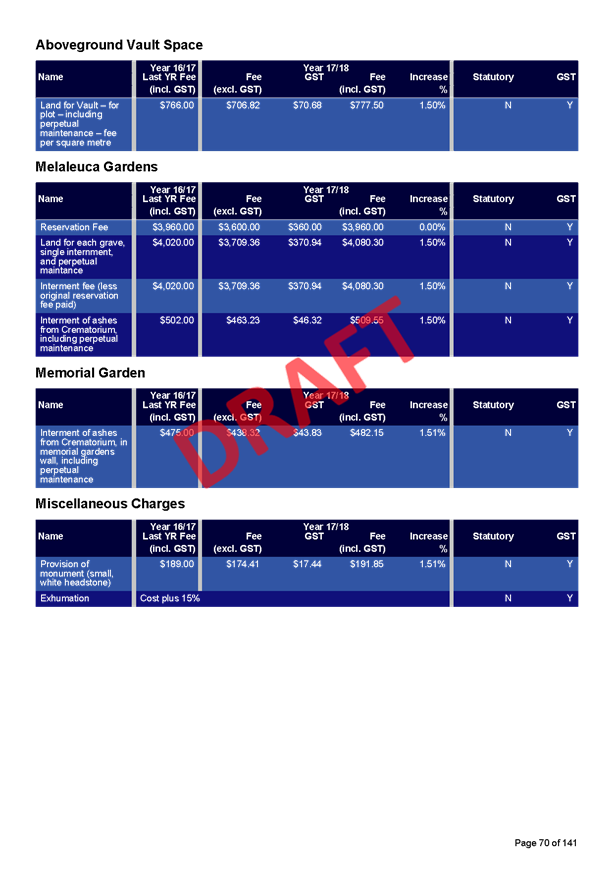
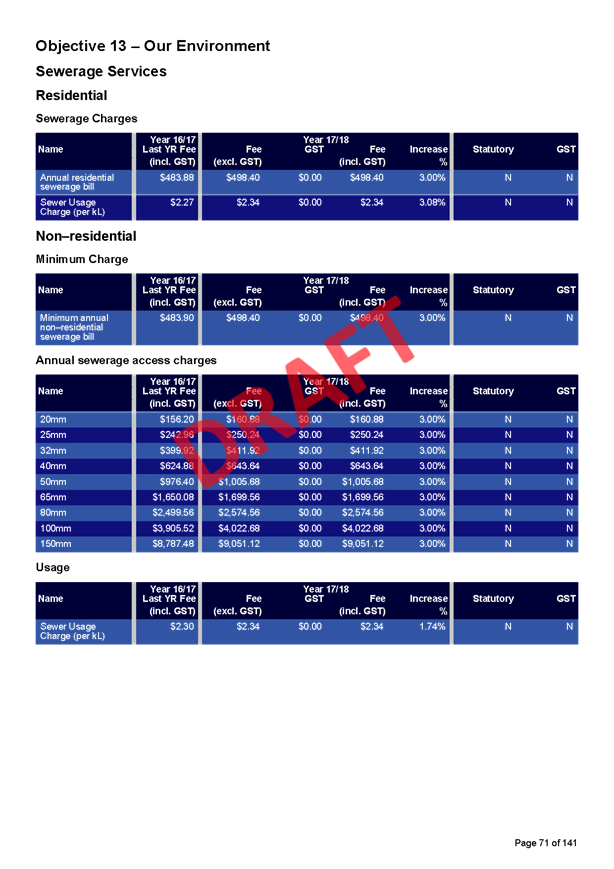
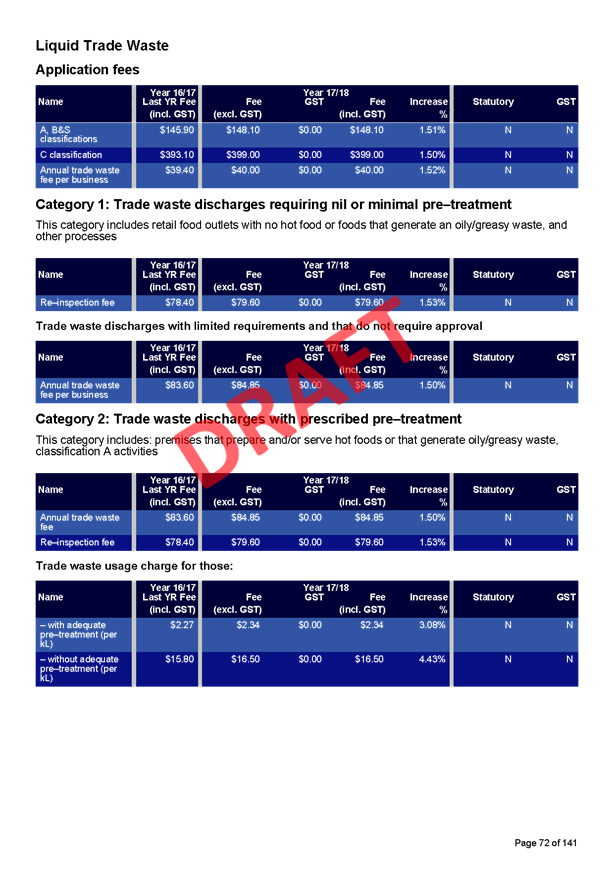
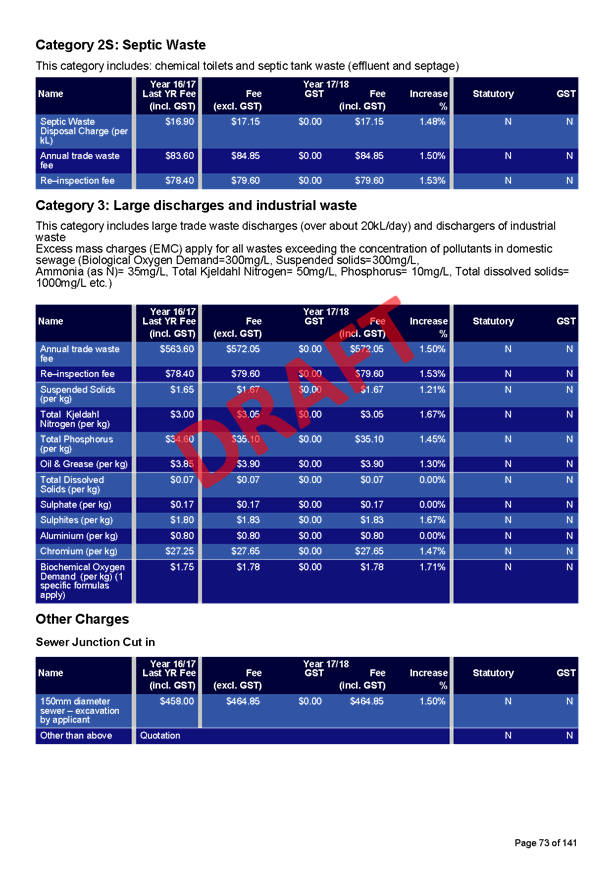
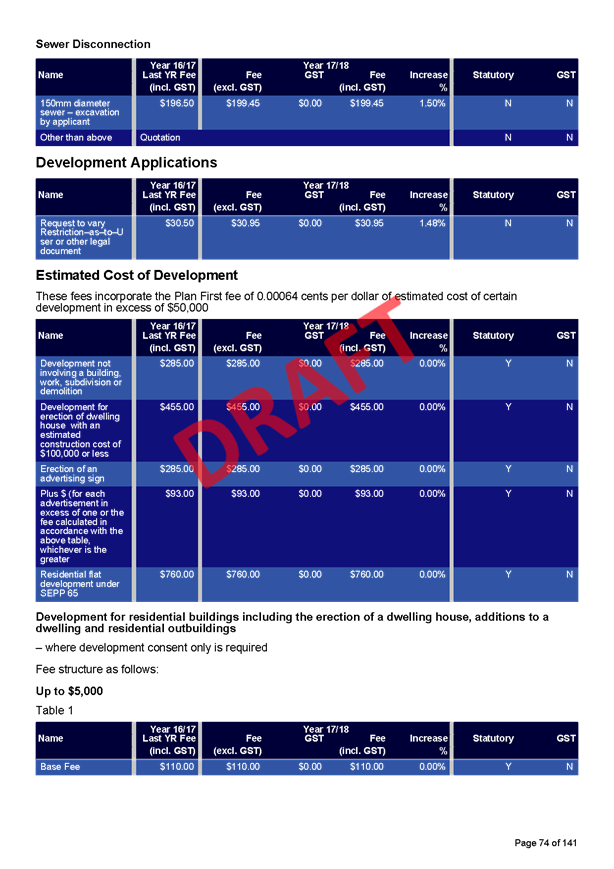
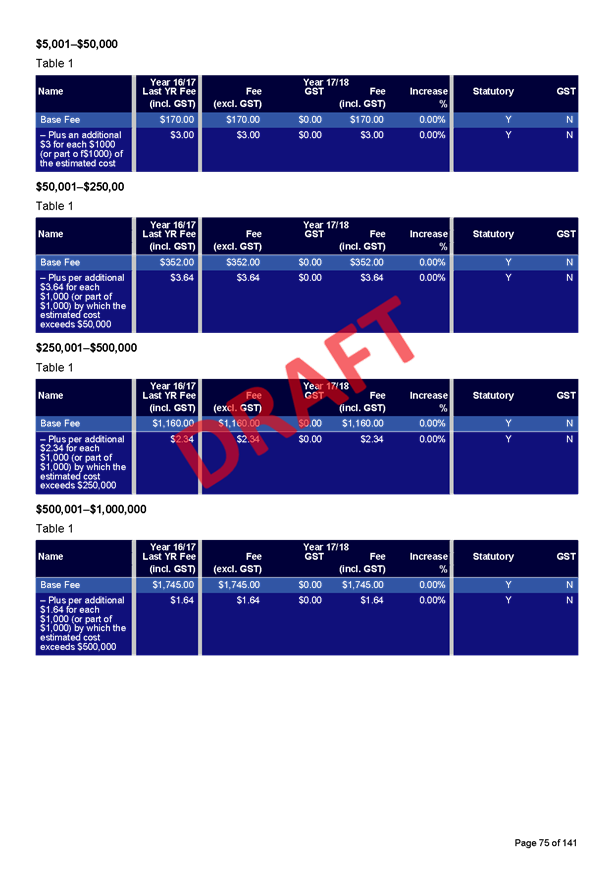
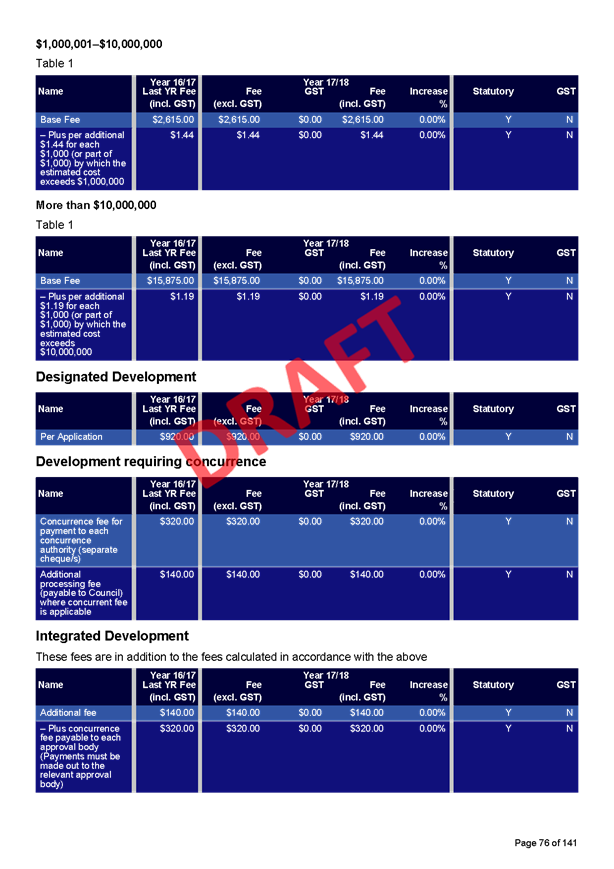
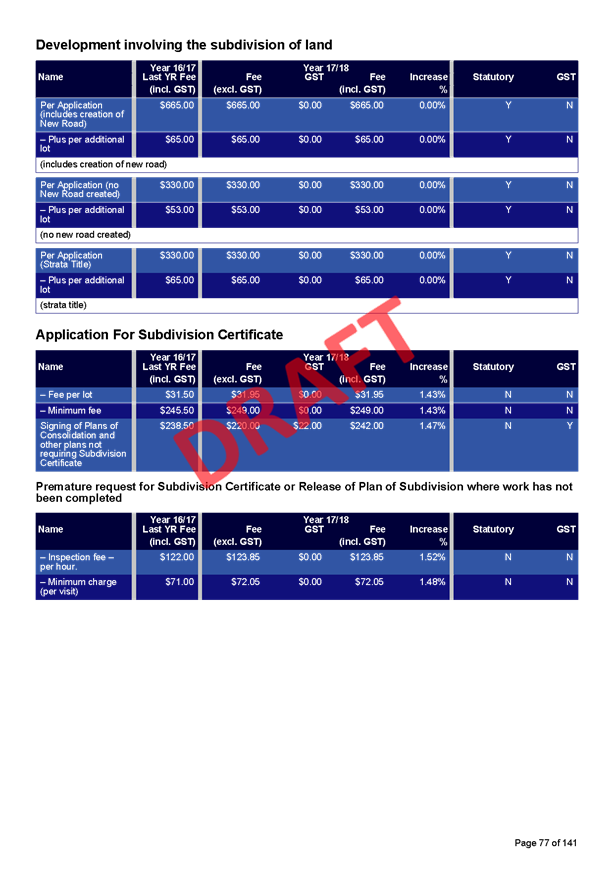
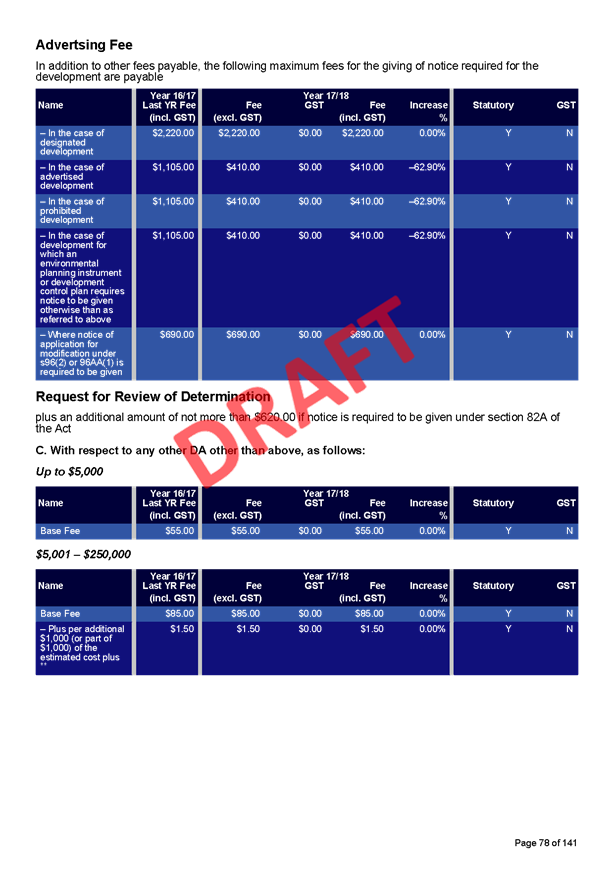
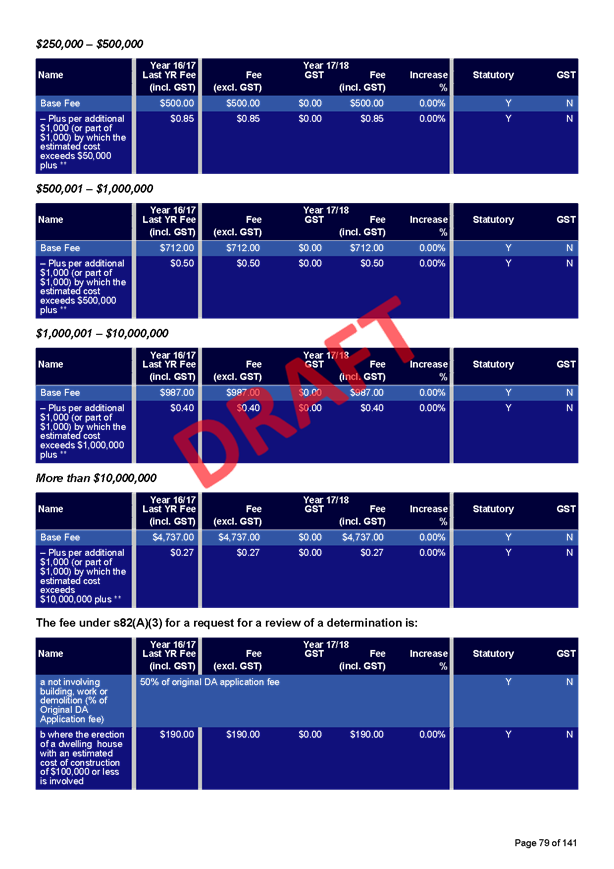
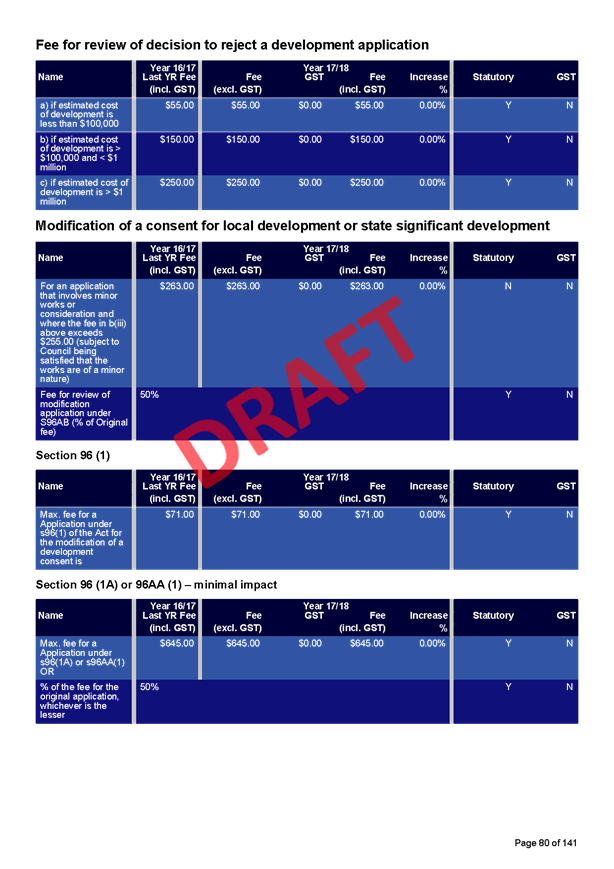
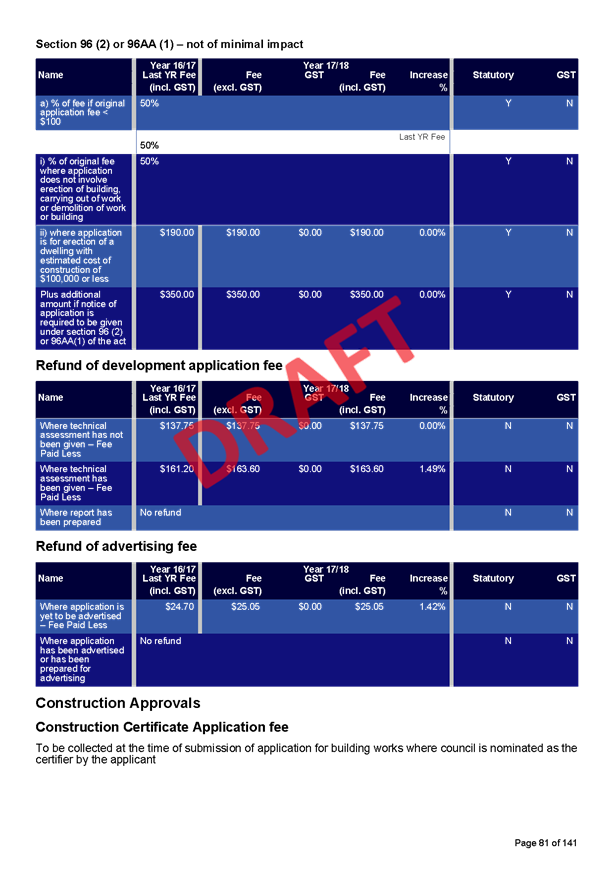
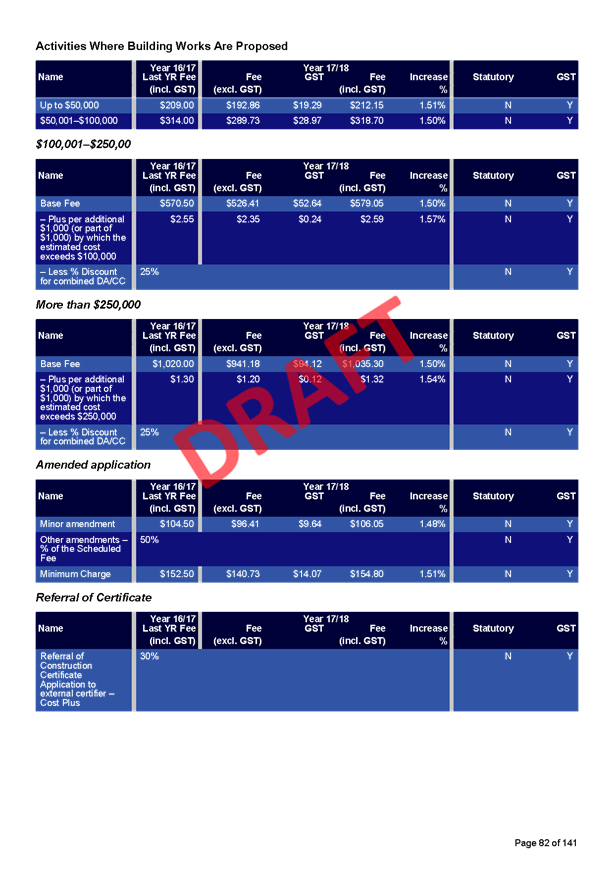
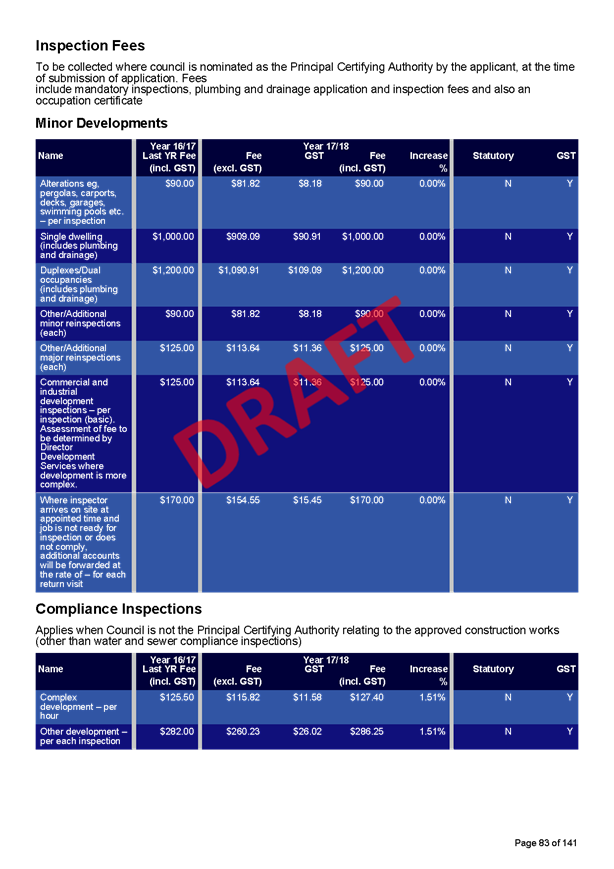
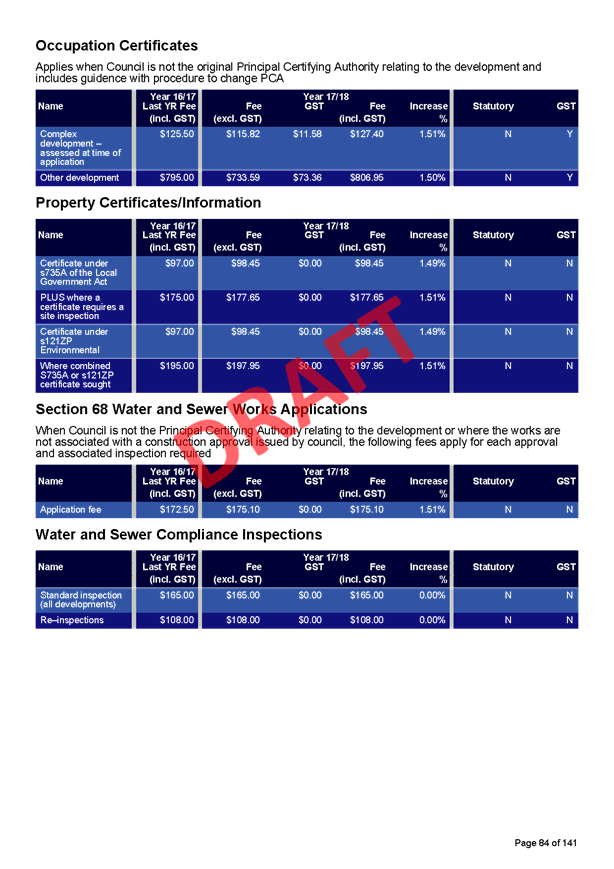
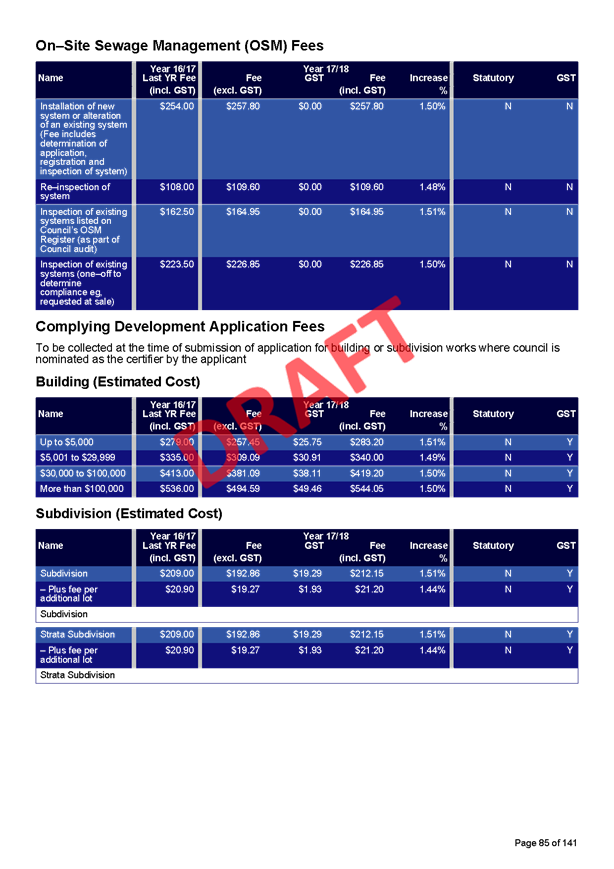
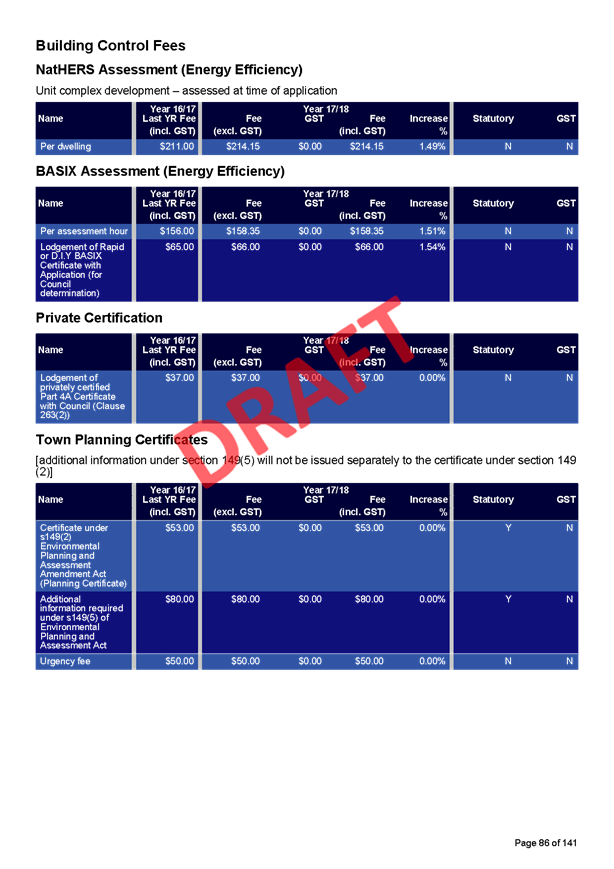
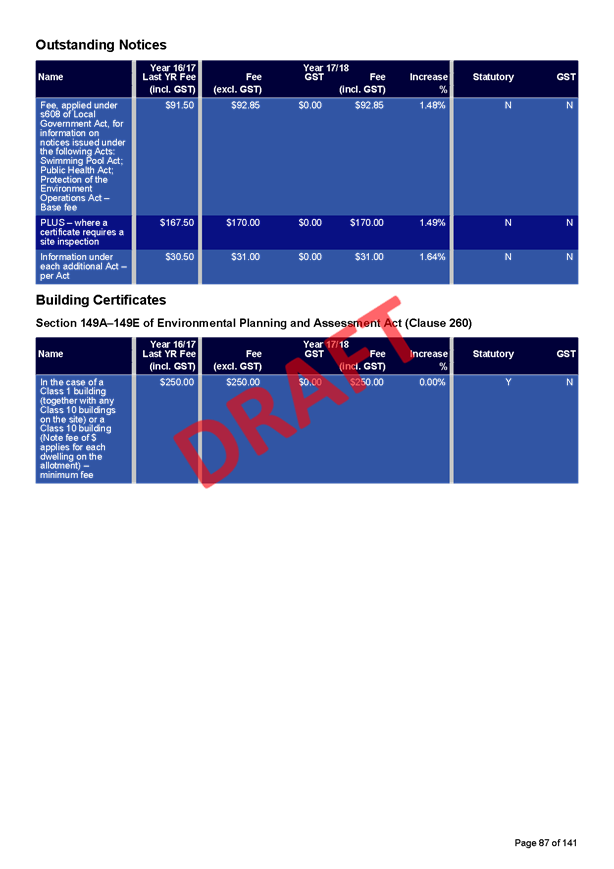
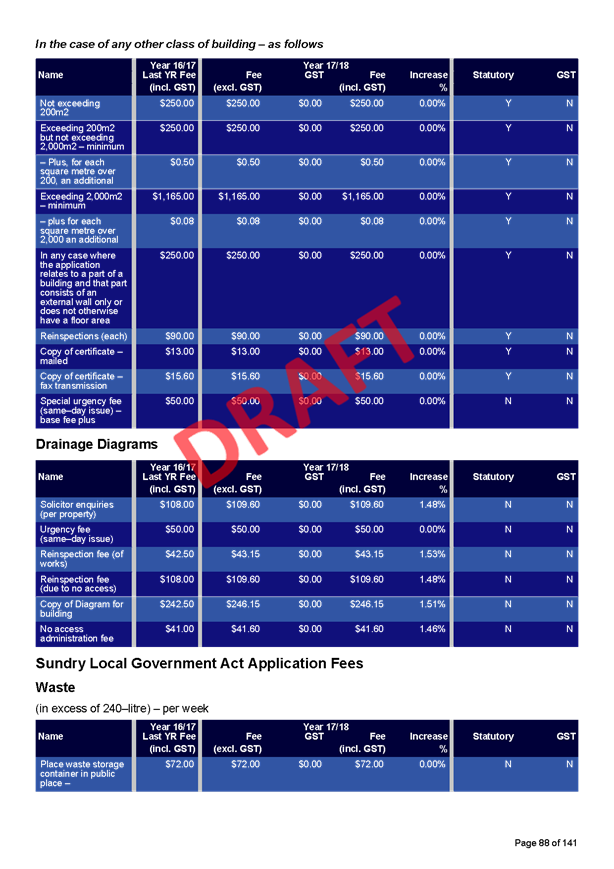
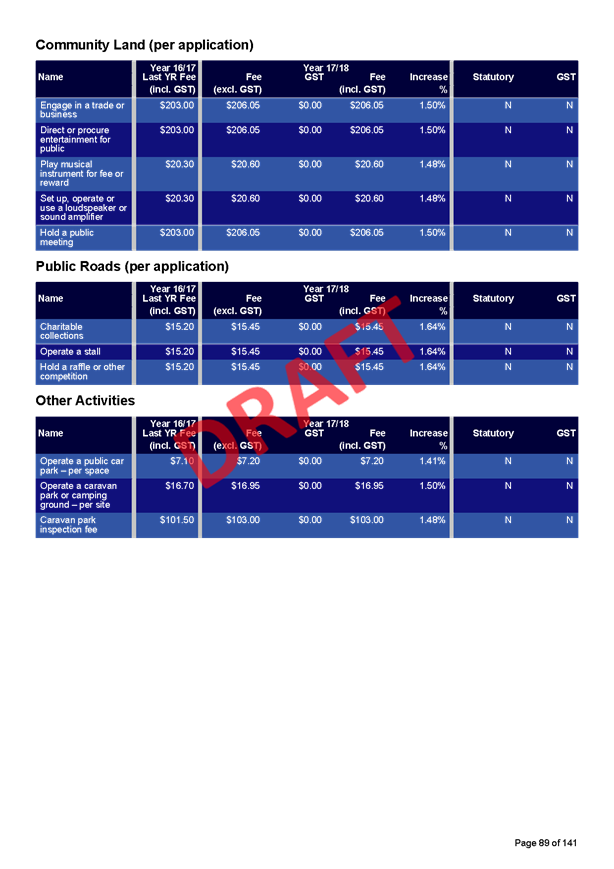
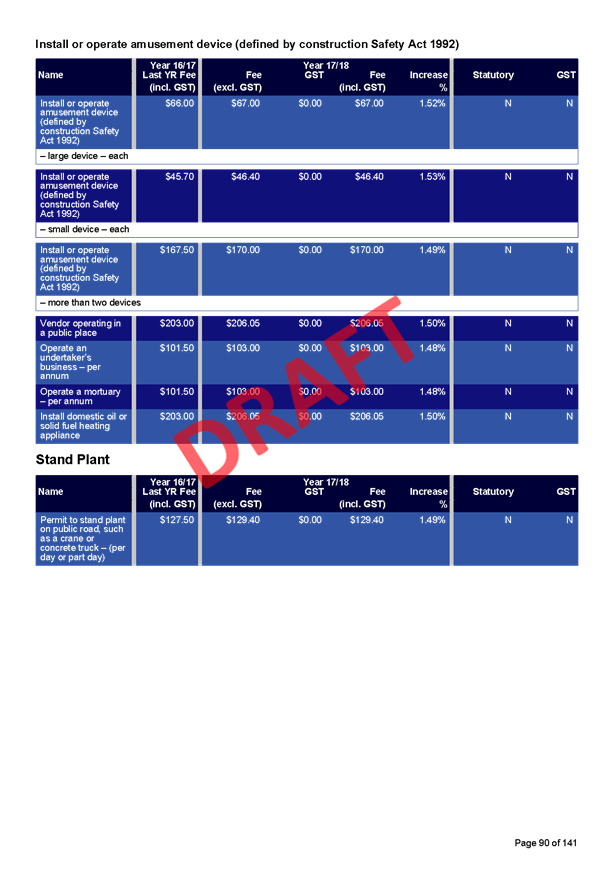
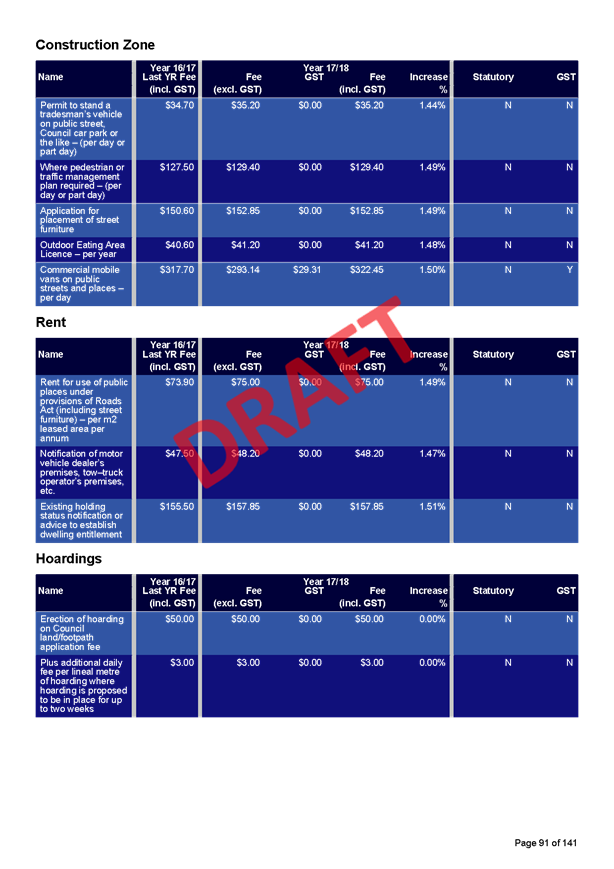
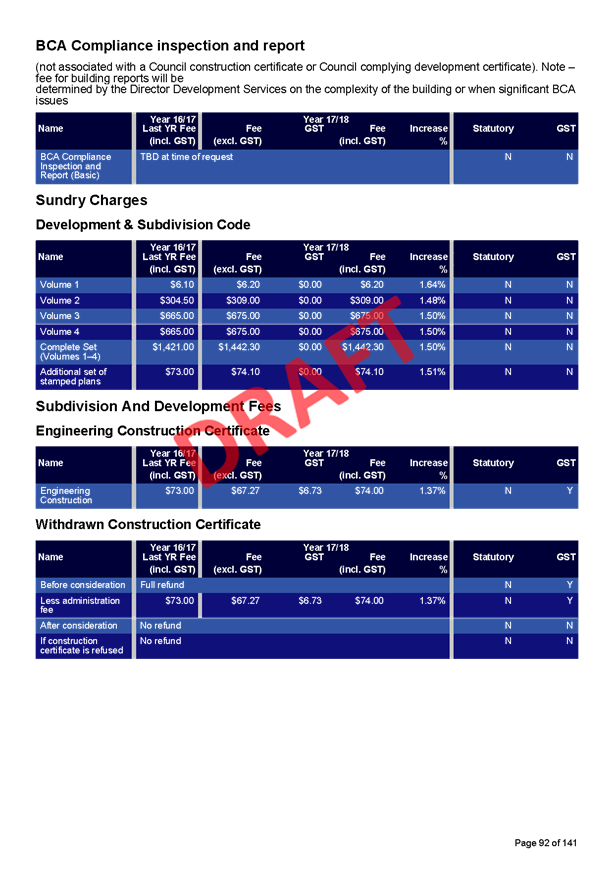
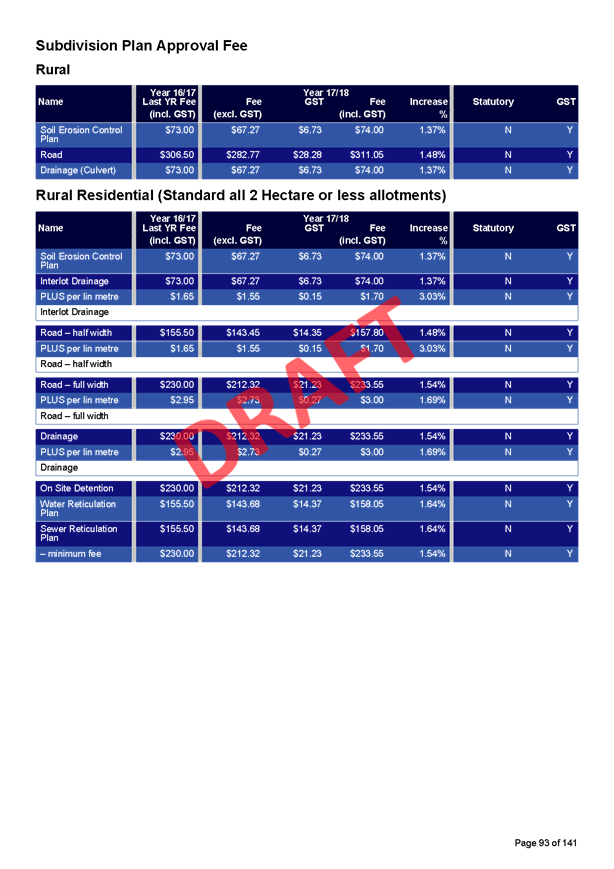
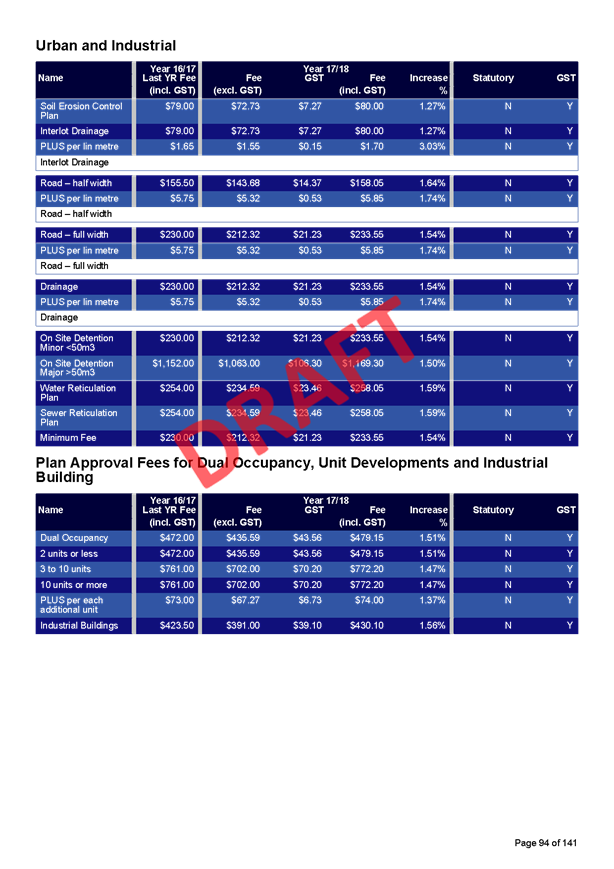
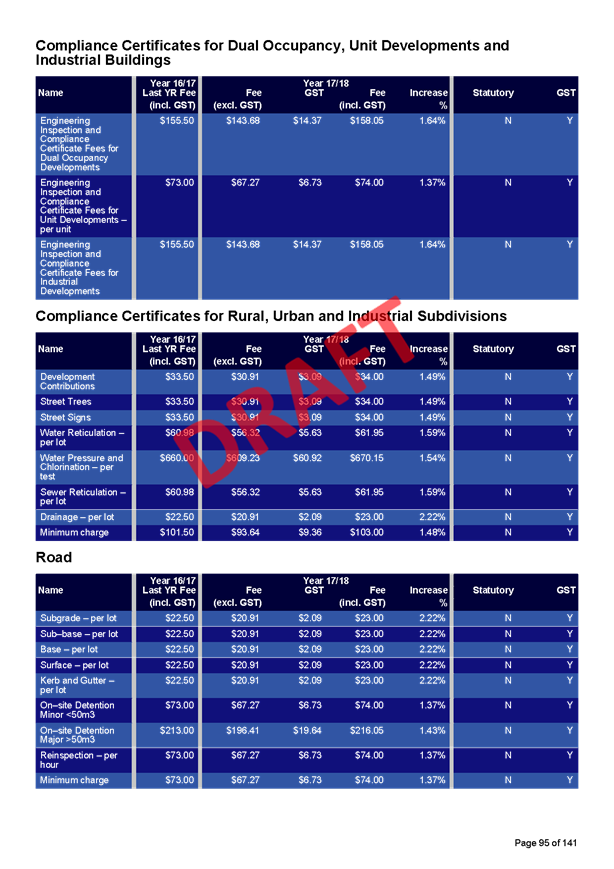
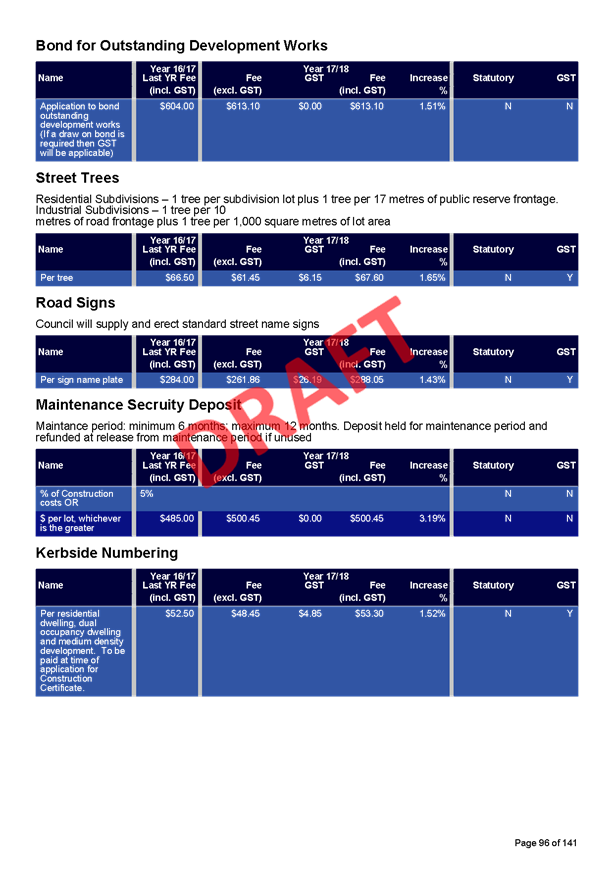
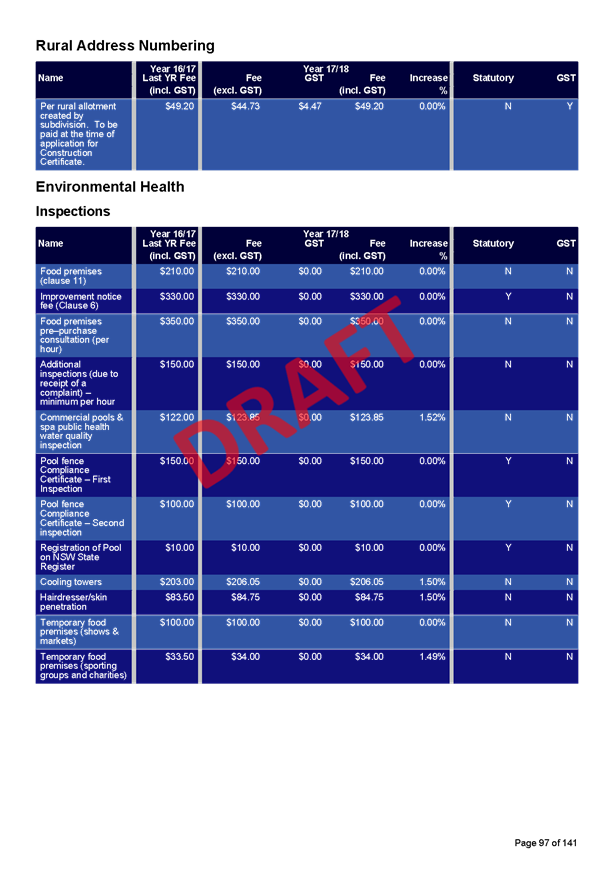
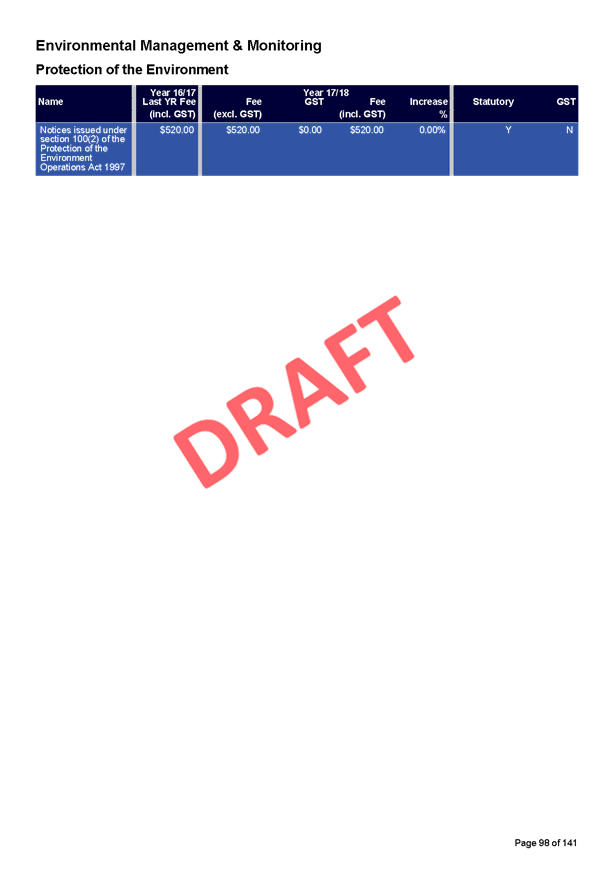
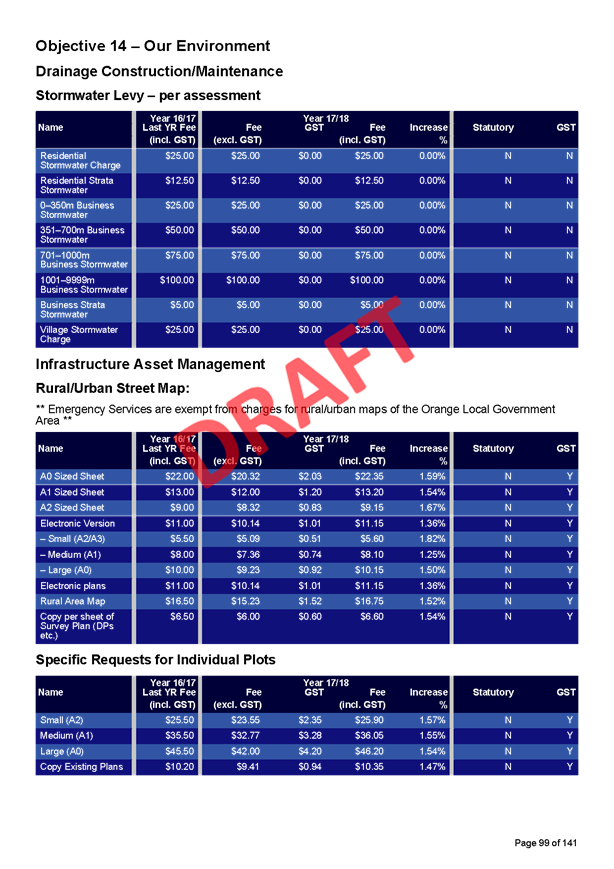
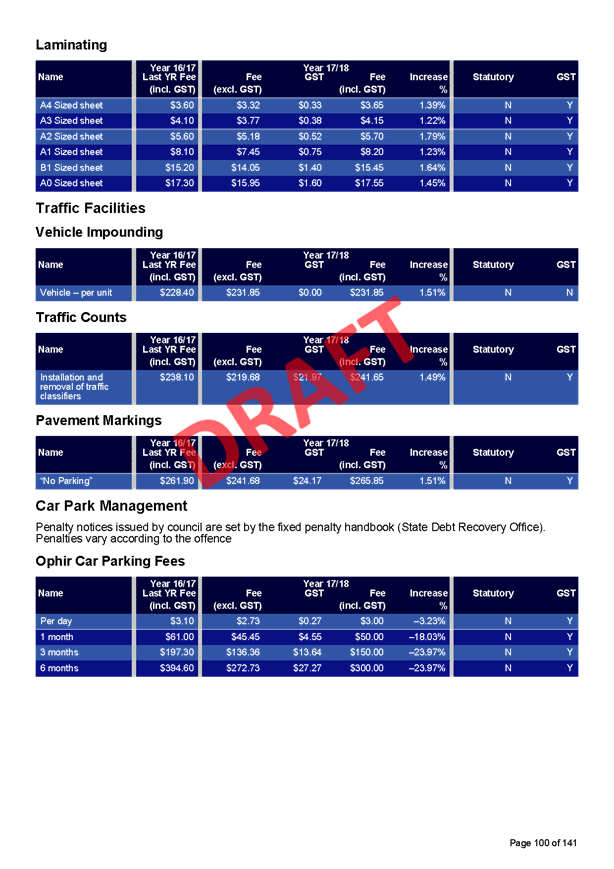
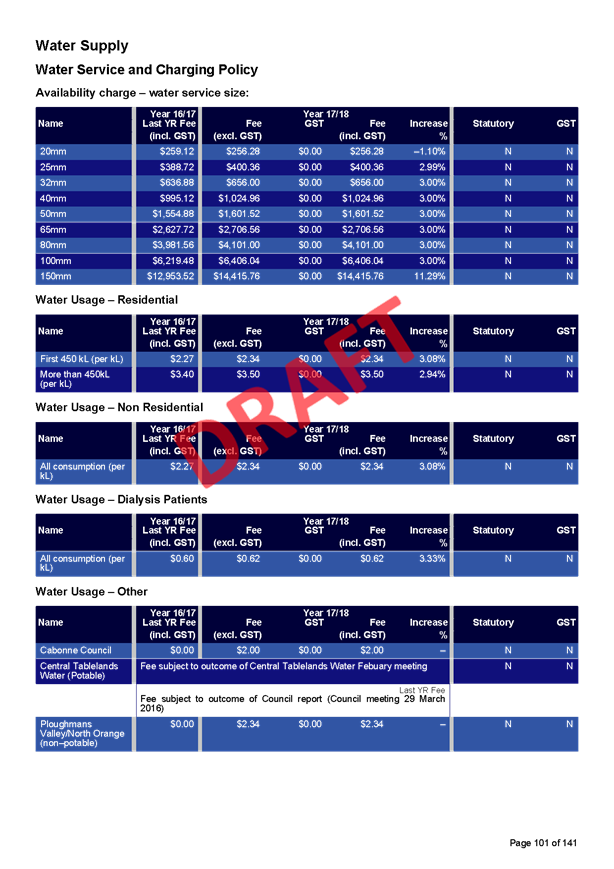
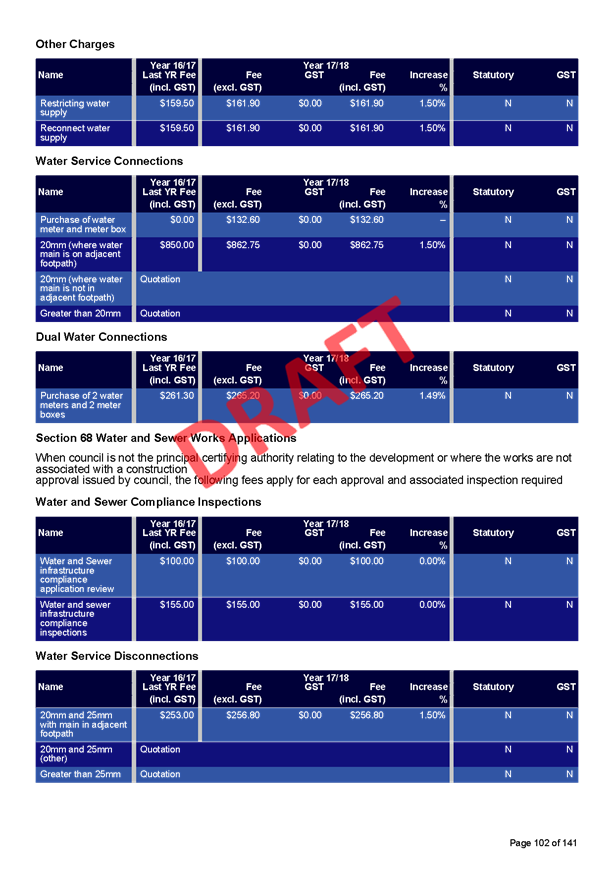
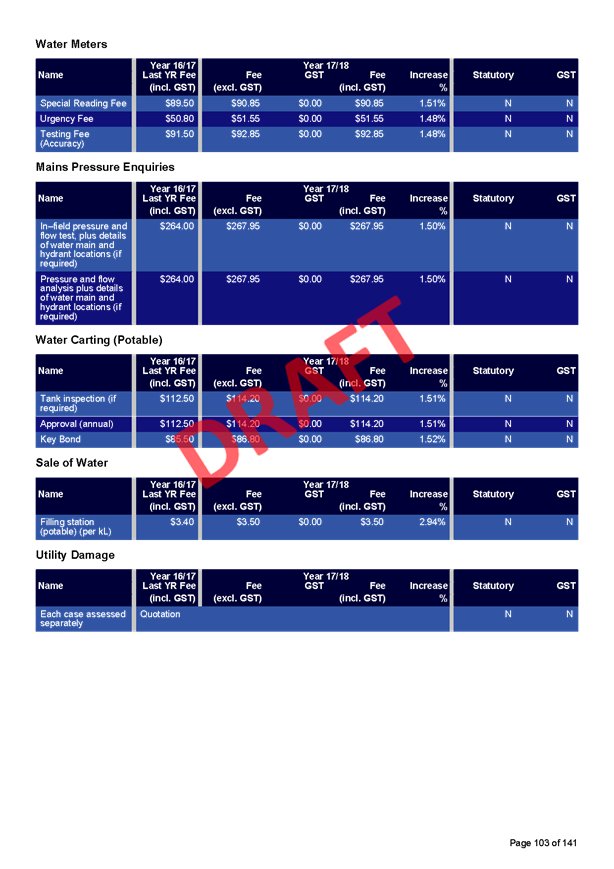
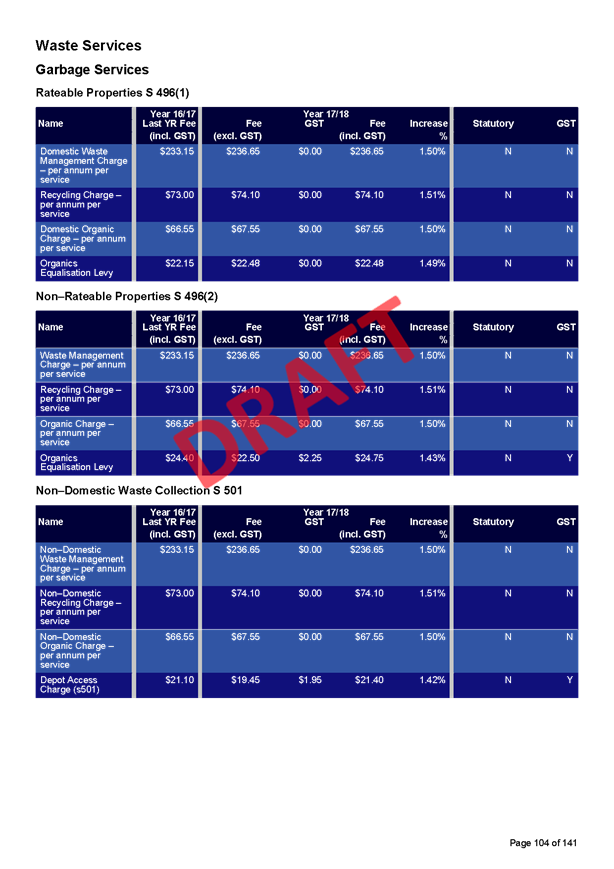
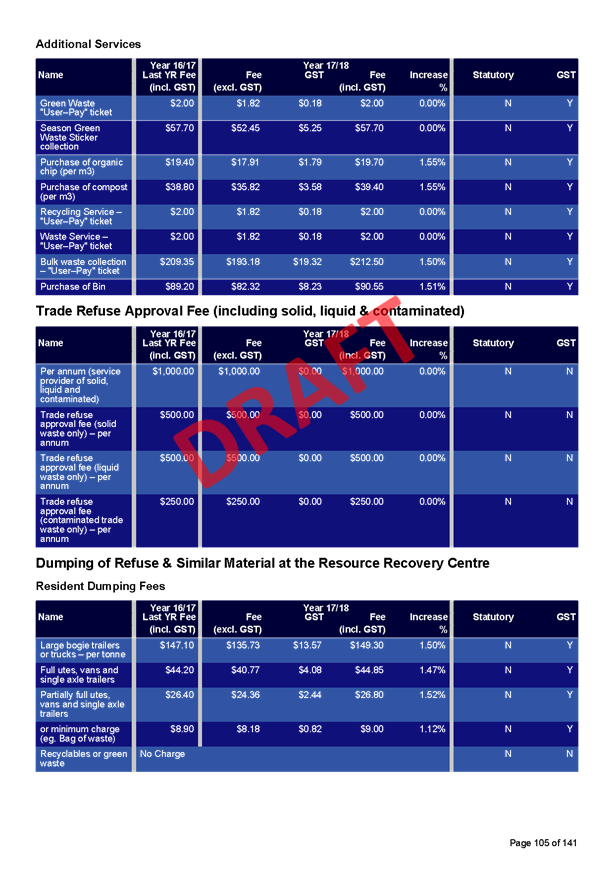
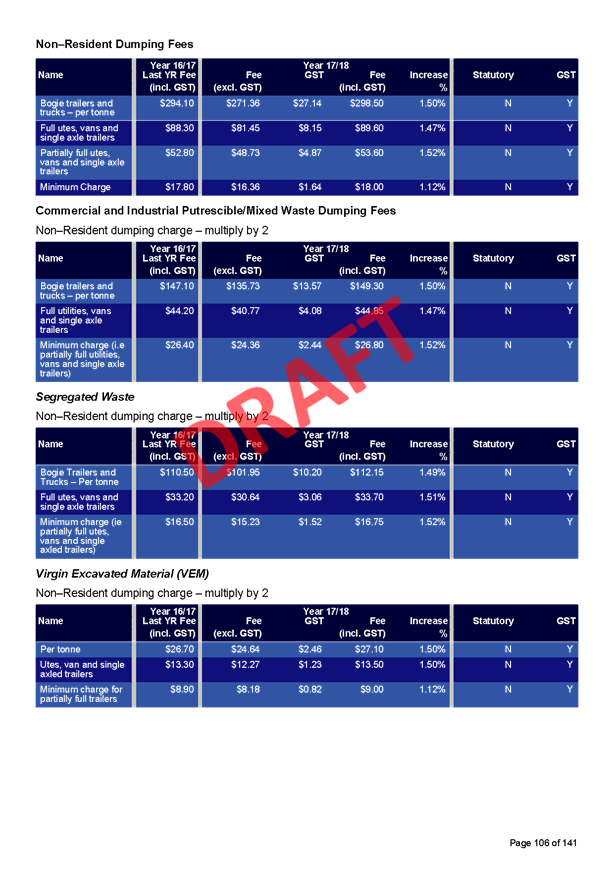
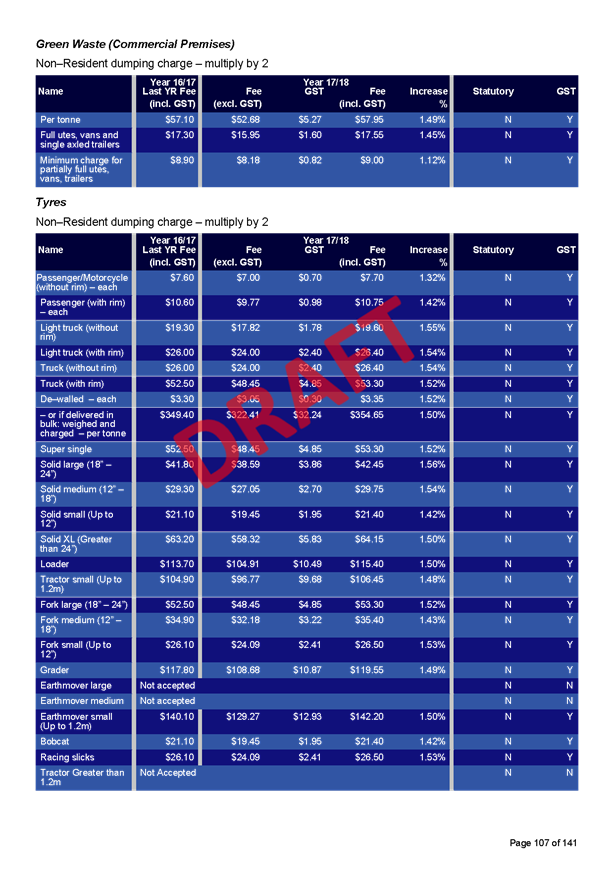
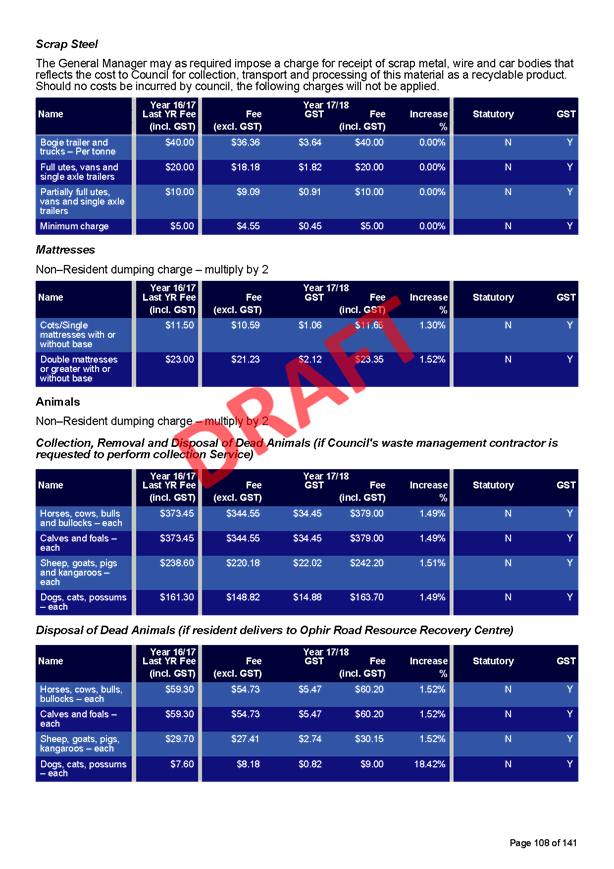
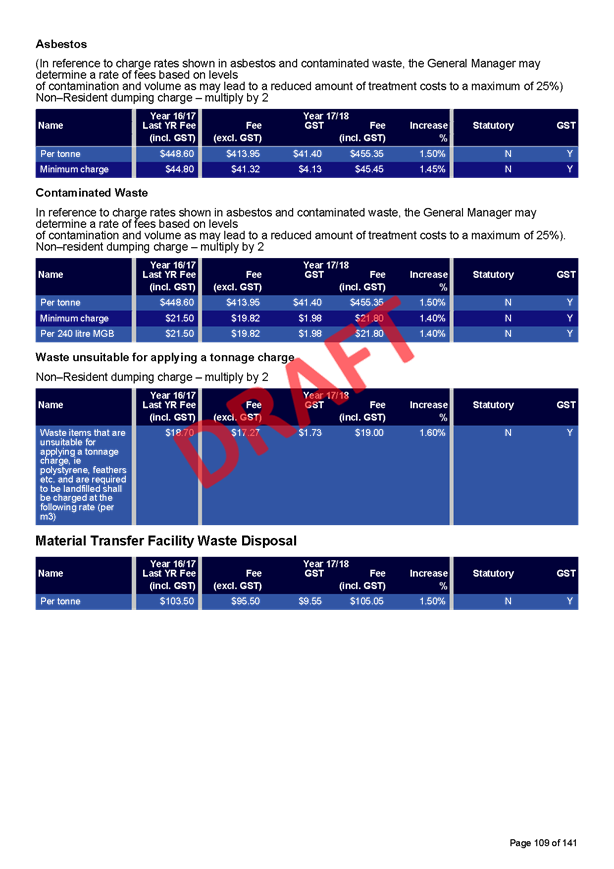
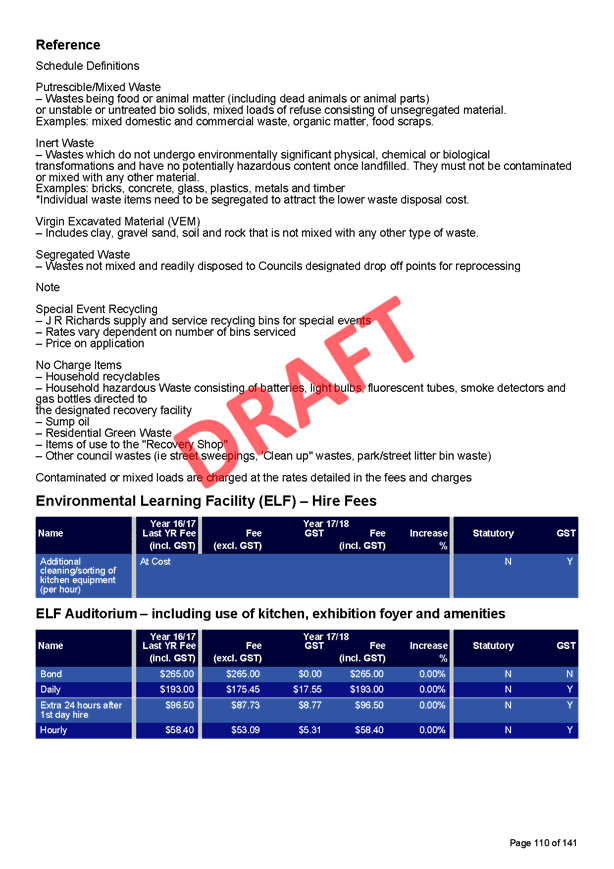
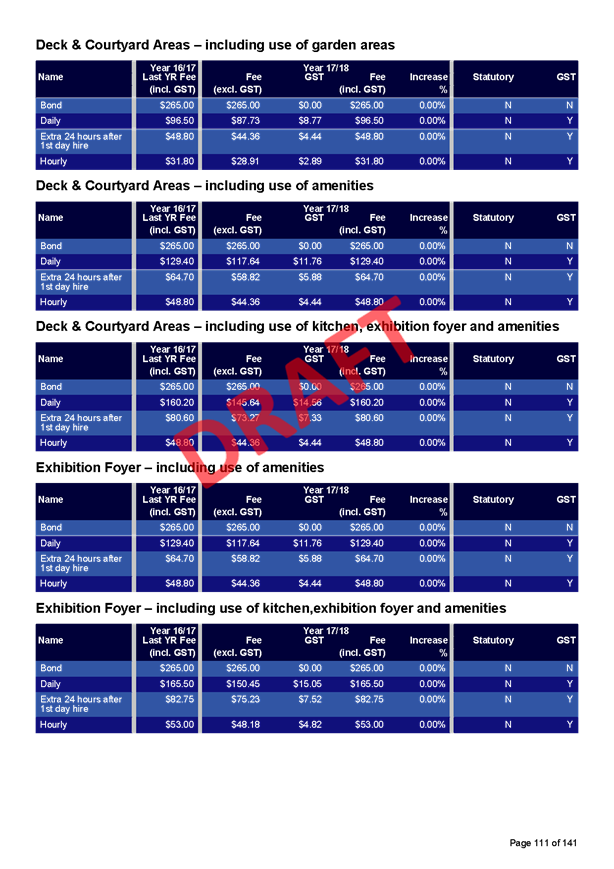
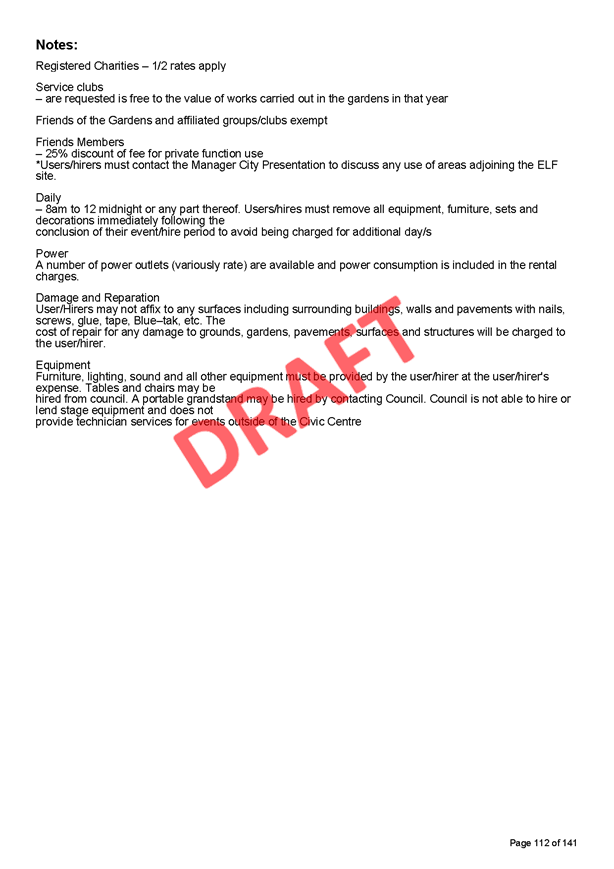
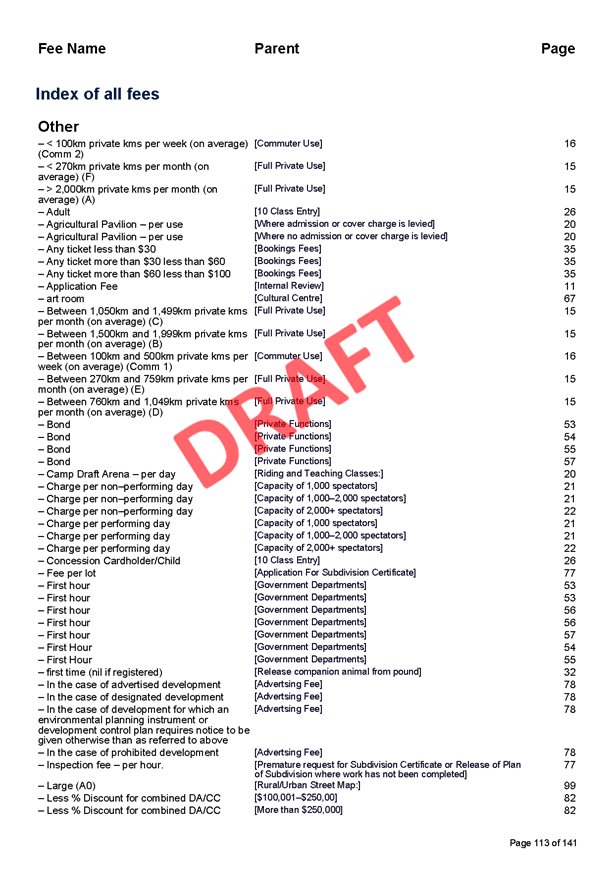
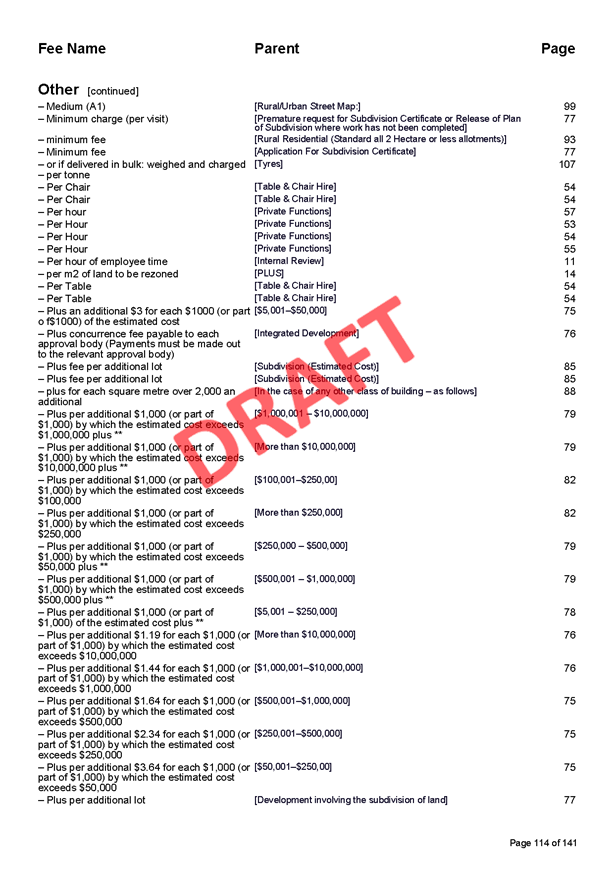
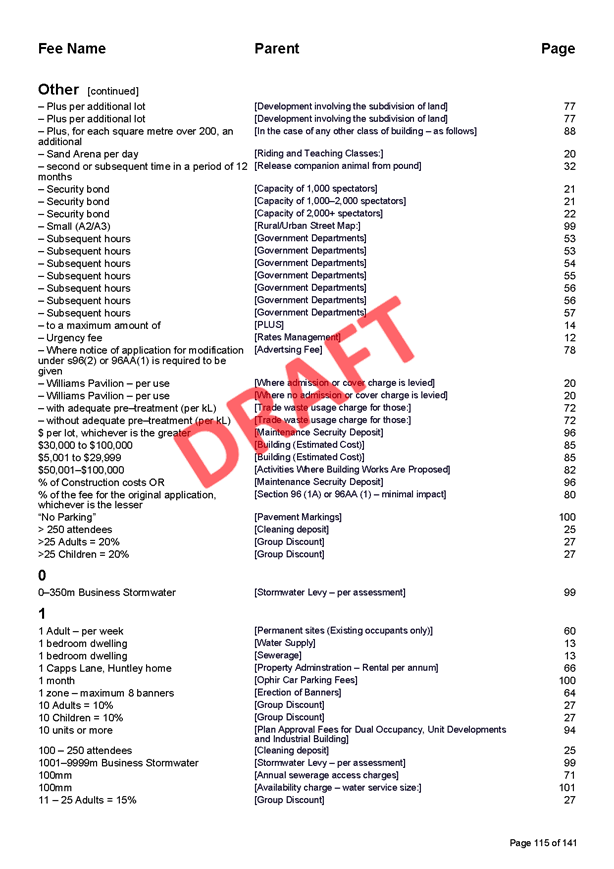
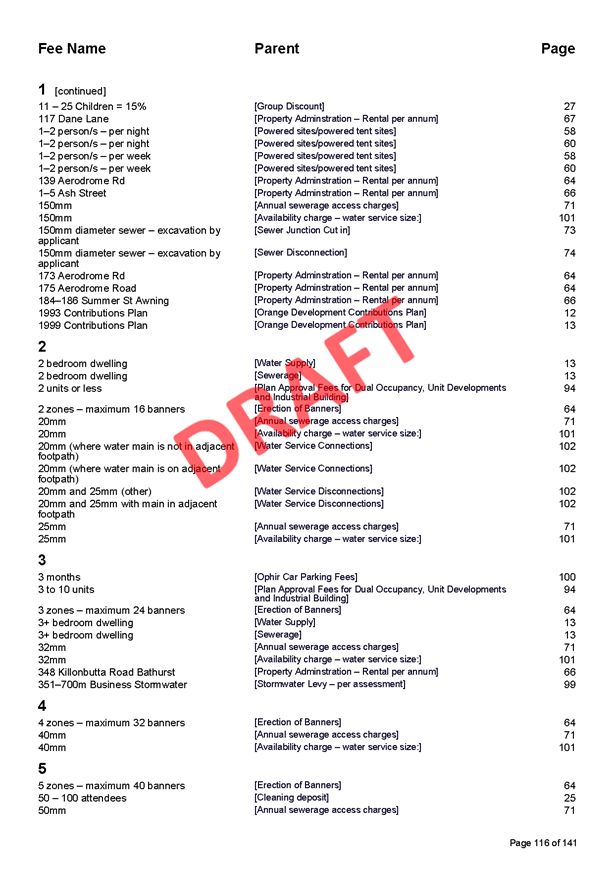
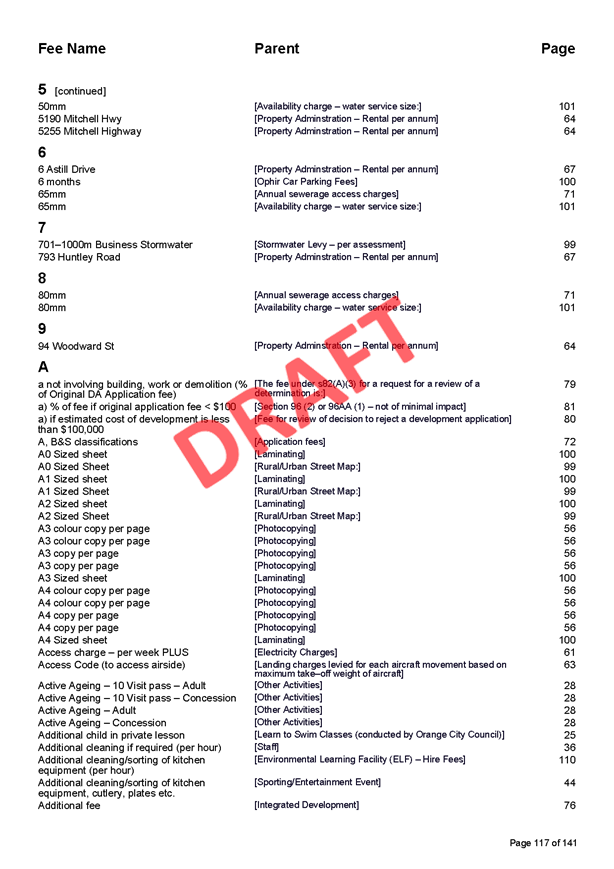
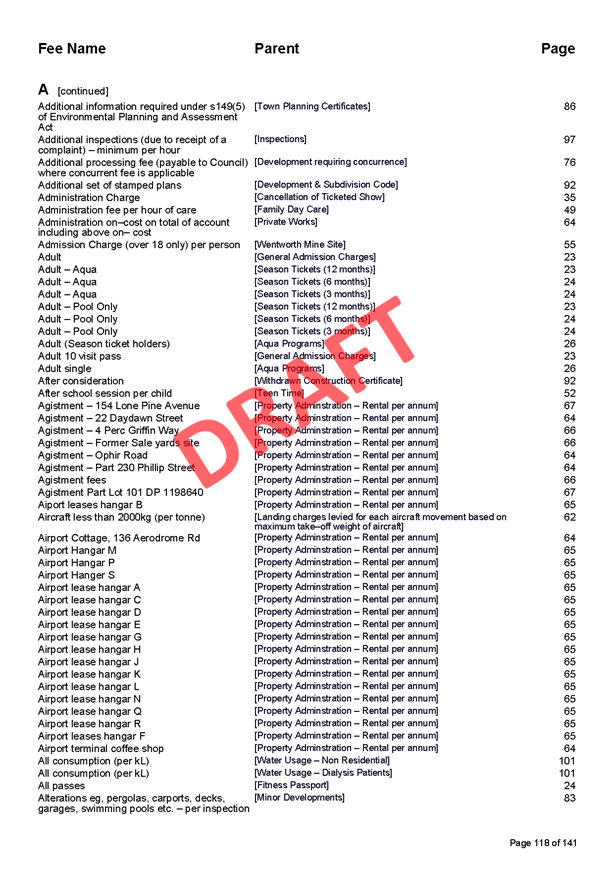
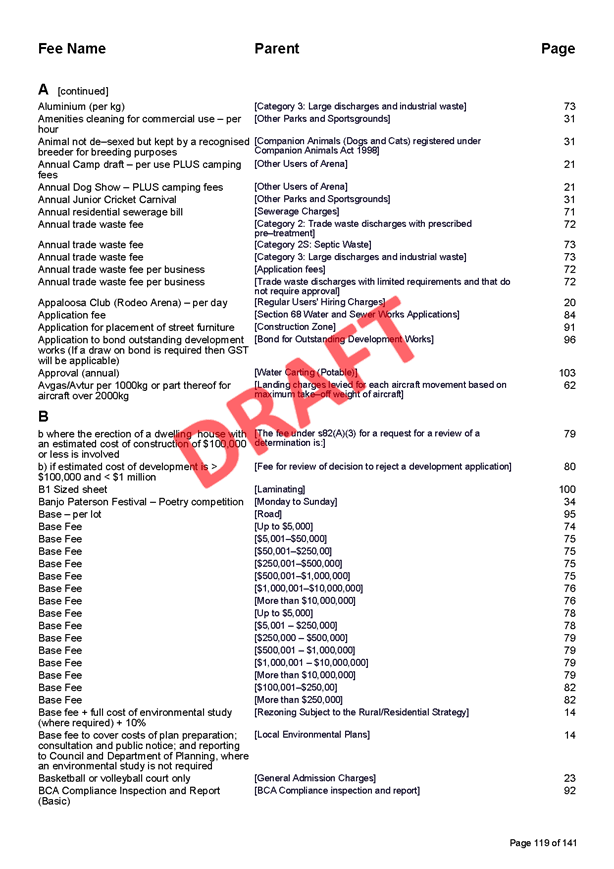
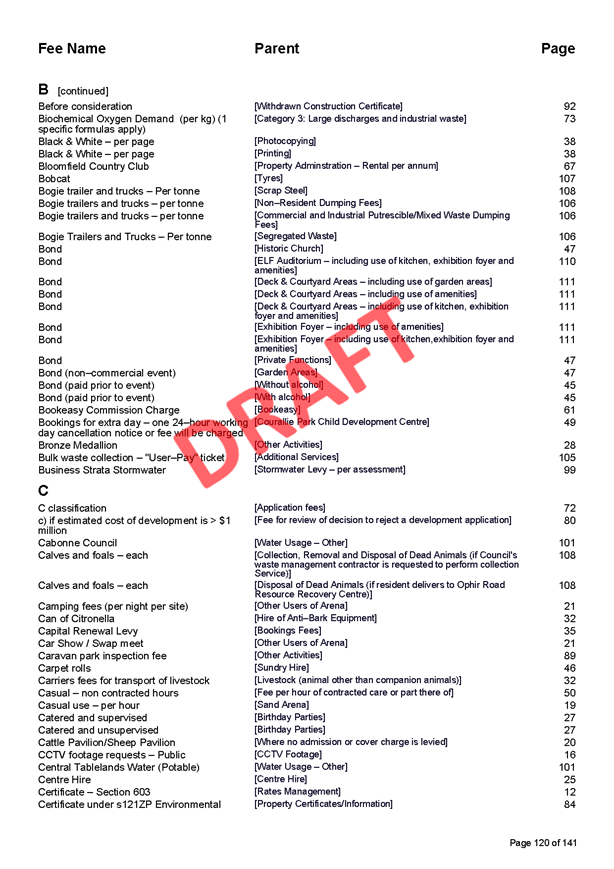
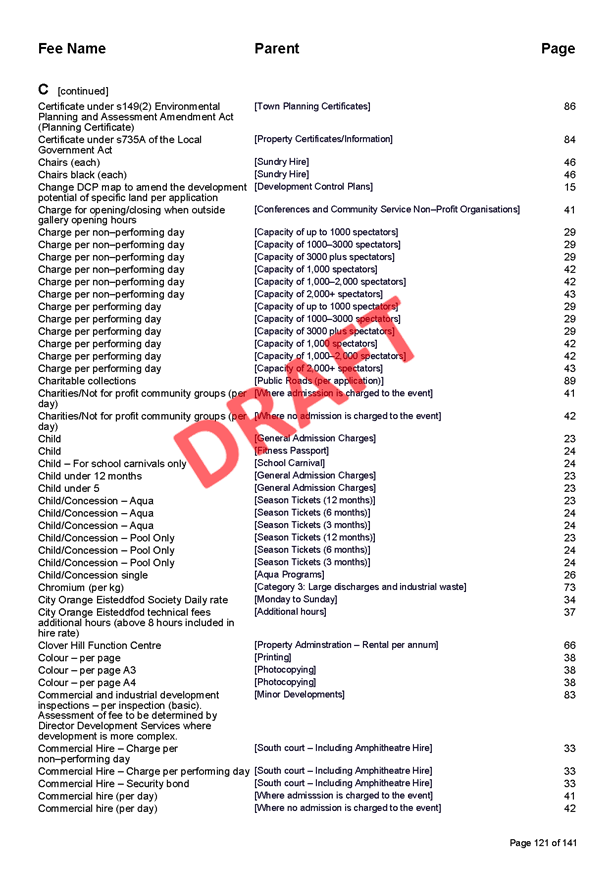
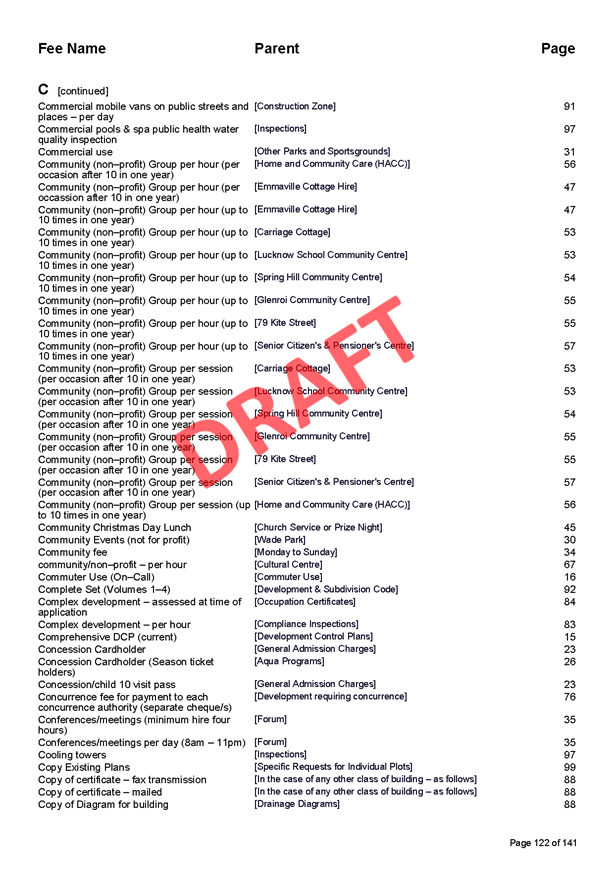
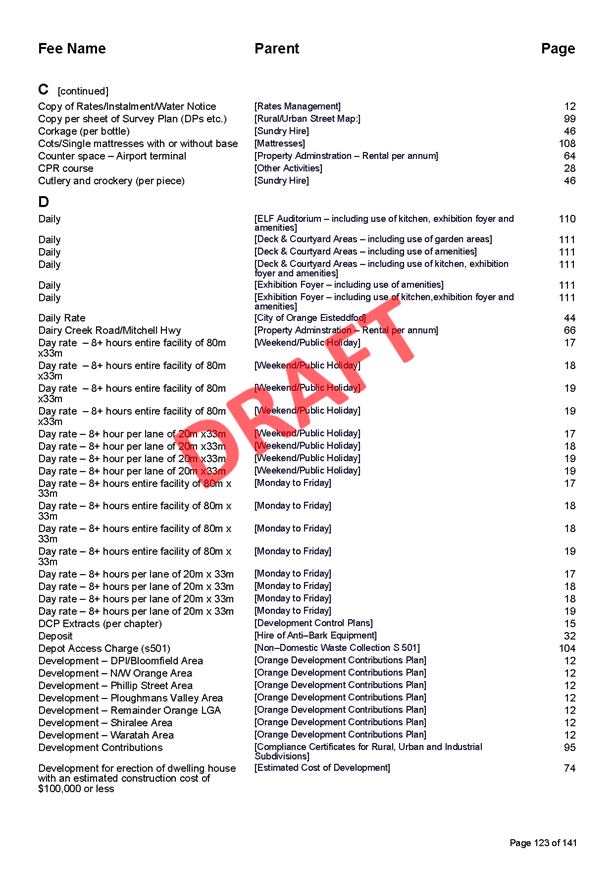
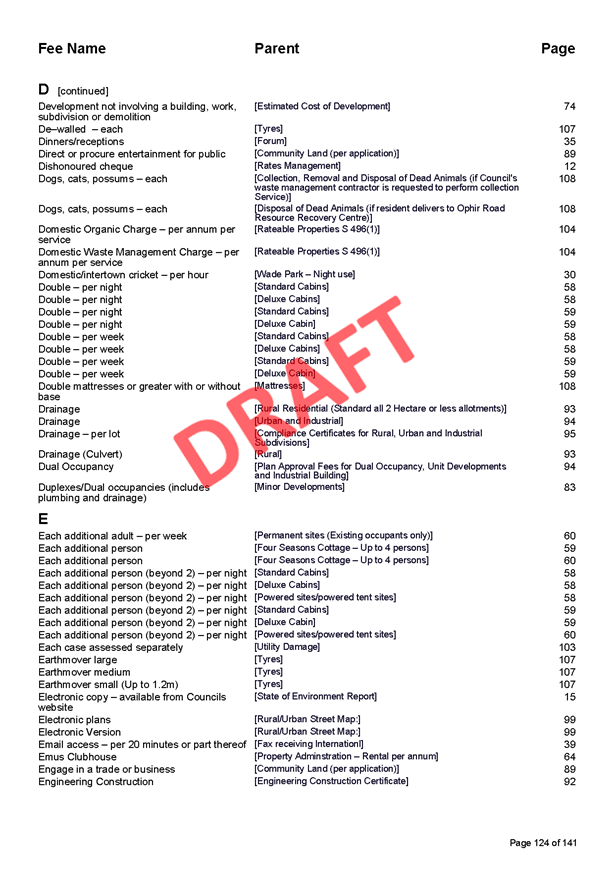
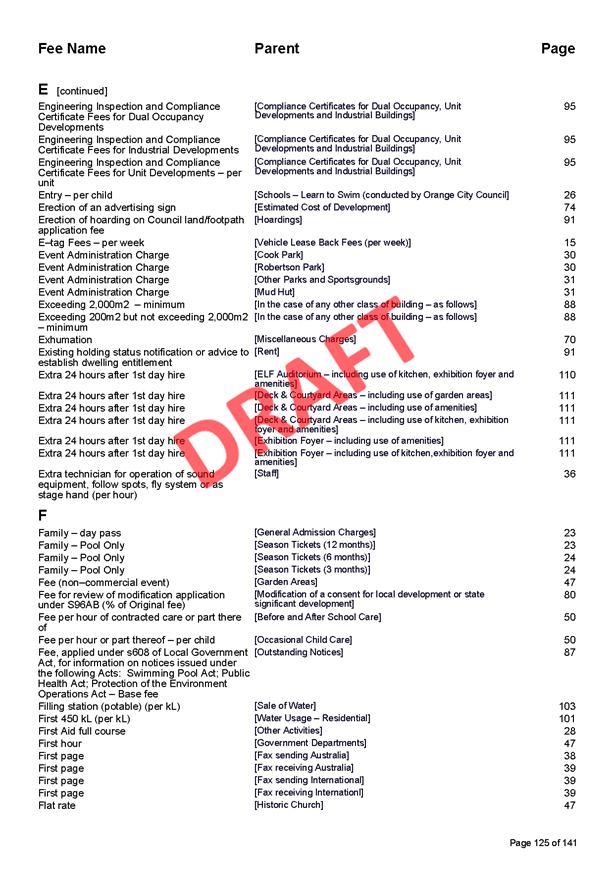
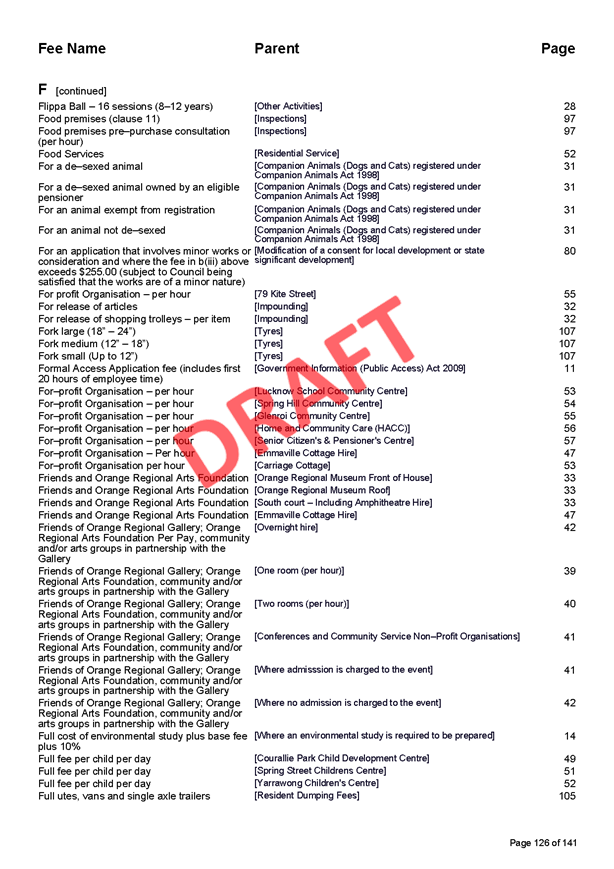
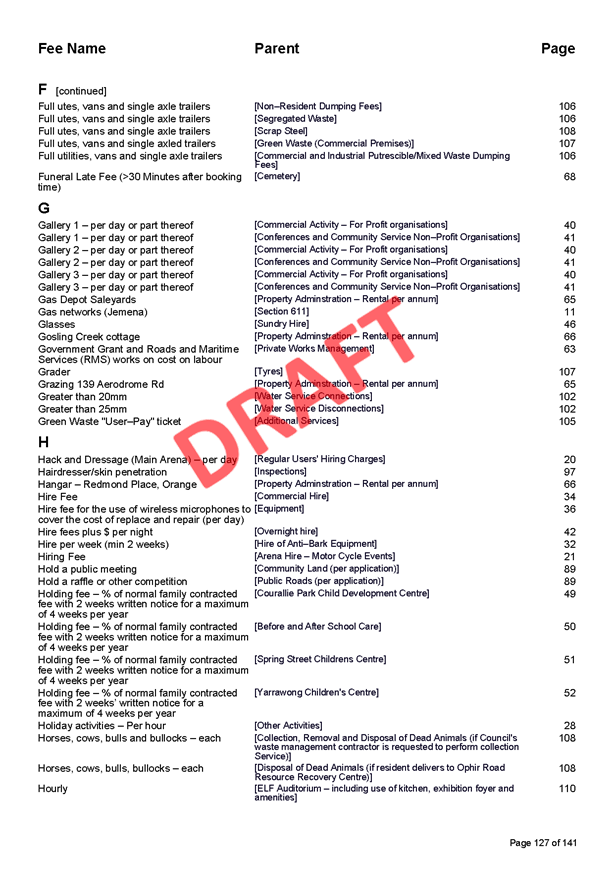
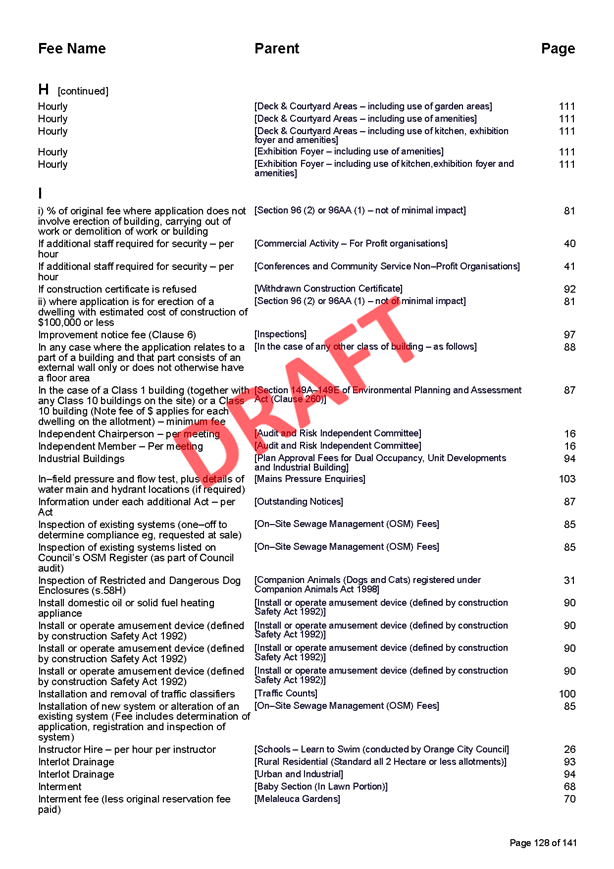
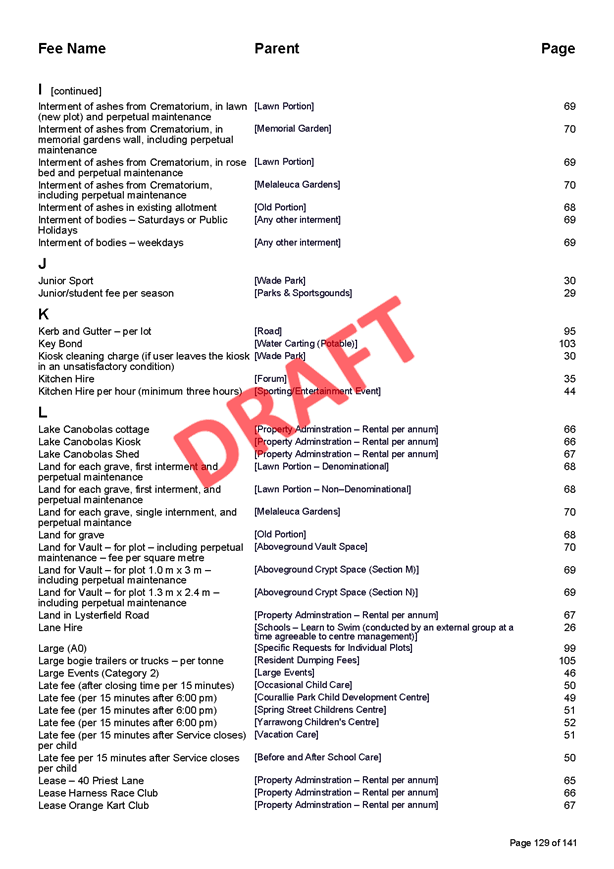
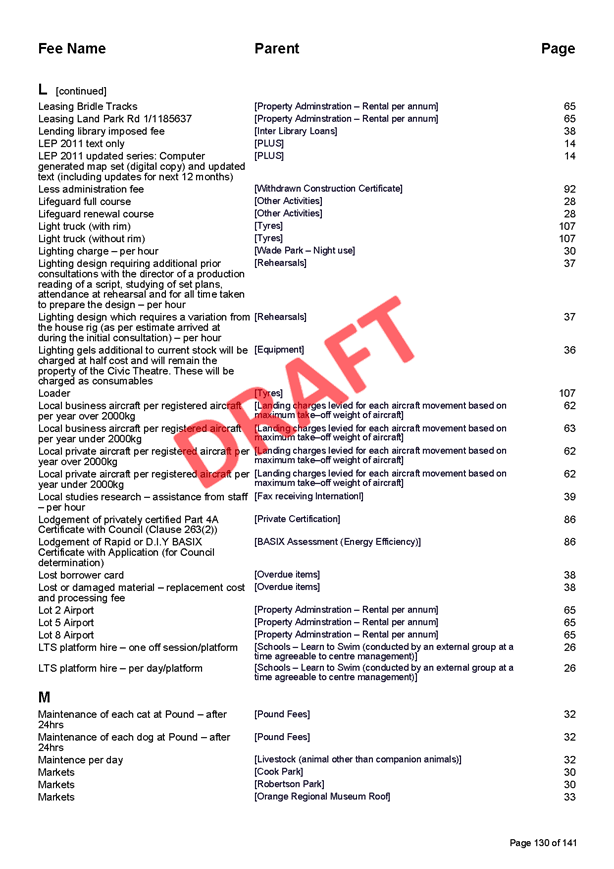
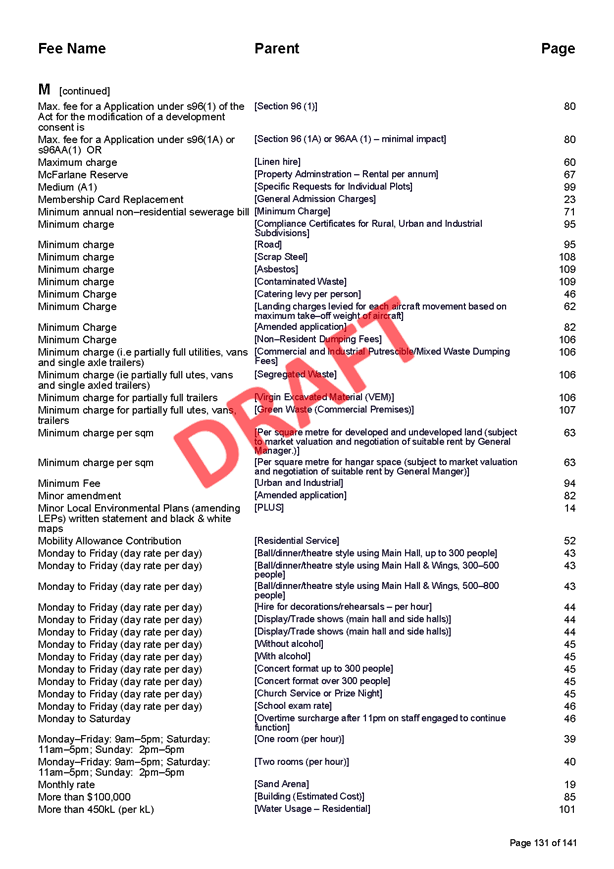
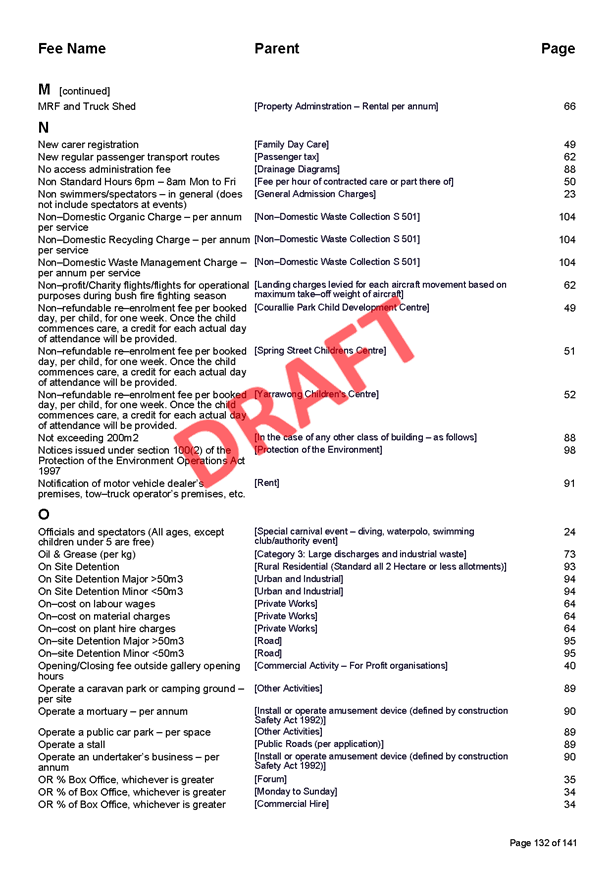
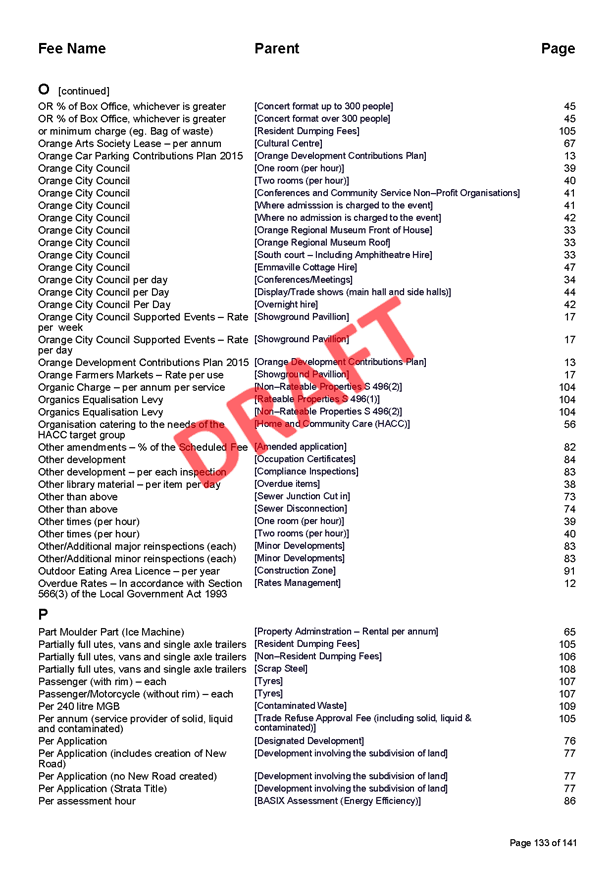
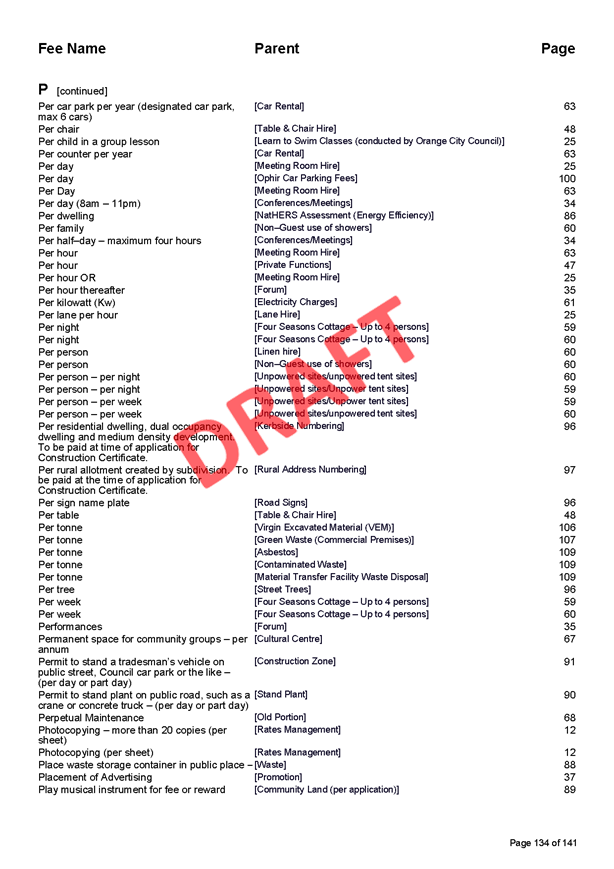
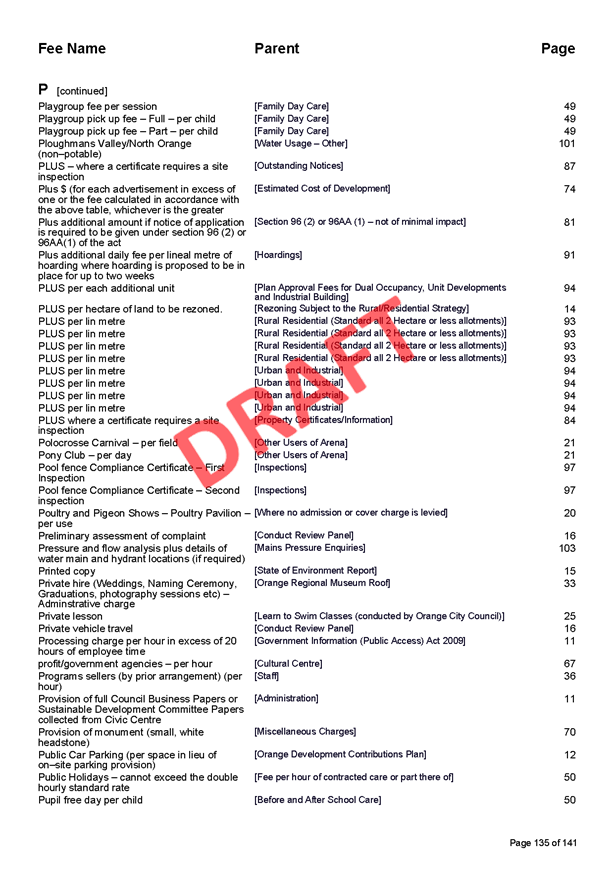

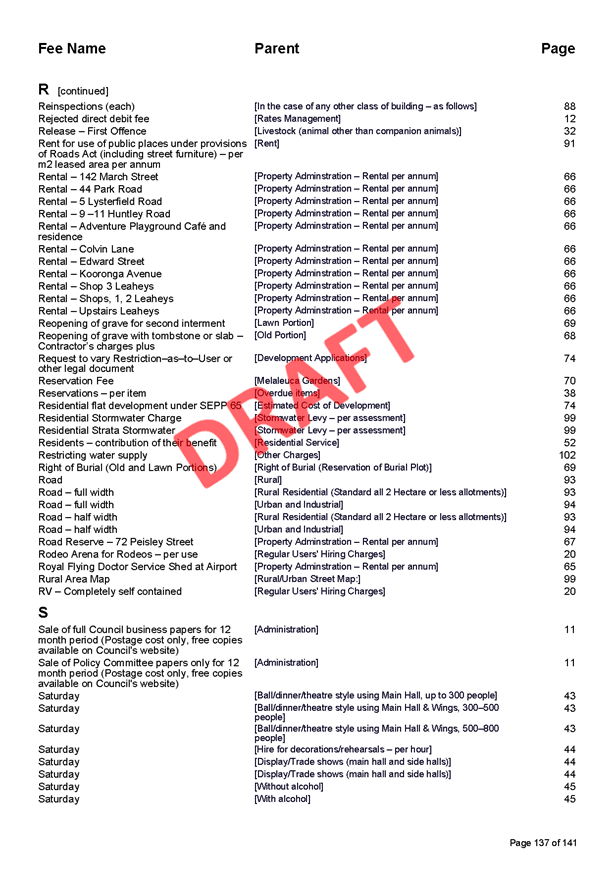
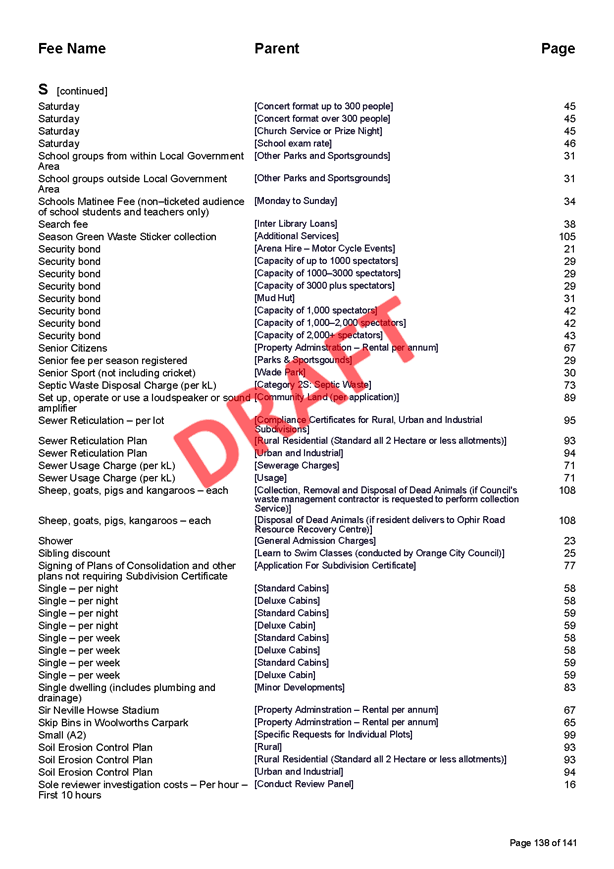
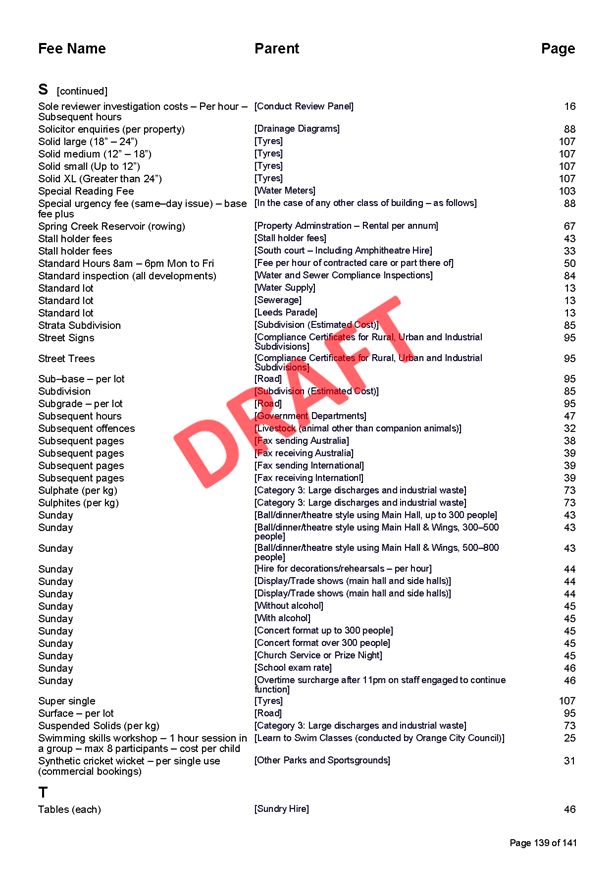
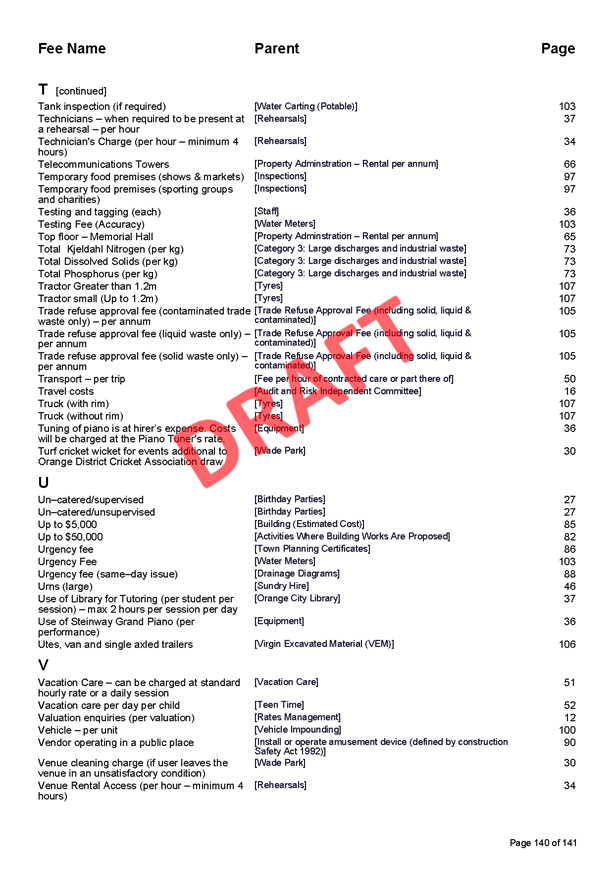
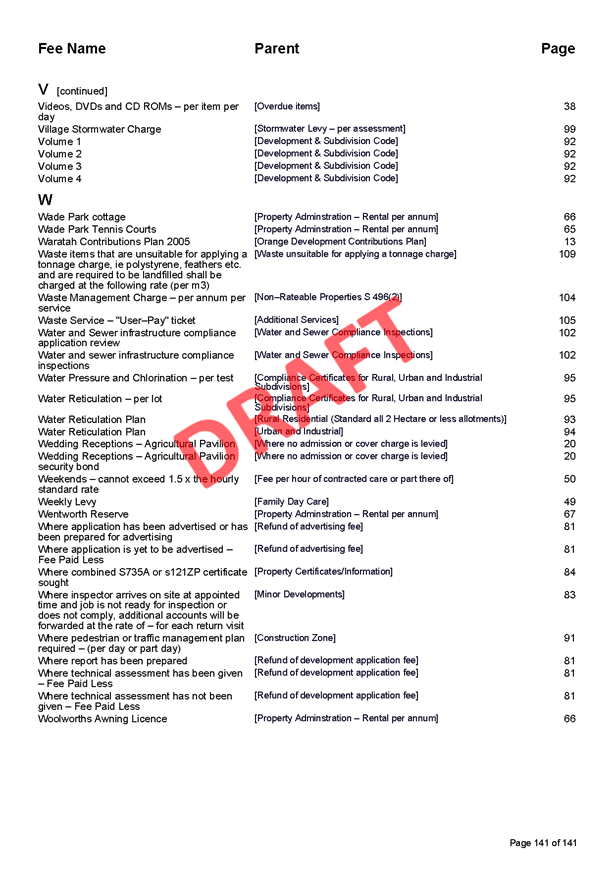
2.2 Strategic
Policy Review
TRIM
REFERENCE: 2017/856
AUTHOR: Michelle
Catlin, Manager Administration and Governance
EXECUTIVE Summary
As part of the preparation of the suite of Integrated
Planning and Reporting documents, a number of strategic policies have been
reviewed. Three key policies have been updated, with only minor formatting
updates made. Accordingly, ST009 Revenue and Pricing, ST007 Asset Management
and ST011 Community Engagement are listed for adoption by Council.
Link To Delivery/OPerational Plan
The recommendation in this report relates to the Delivery/Operational
Plan strategy “1.2 Our City - Information and advice
provided for the decision-making process will be succinct, reasoned, accurate,
timely and balanced”.
Financial Implications
Nil
Policy and Governance Implications
Formatting updates have been applied to these policies. As
no significant changes have been made, the policies are able to be adopted by
Council.
|
Recommendation
That Council adopt the following Strategic Policies:
· ST009 –
Revenue and Pricing
· ST007 – Asset
Management
· ST011 –
Community Engagement
|
further considerations
Consideration has been given to the
recommendation’s impact on Council’s service delivery; image and
reputation; political; environmental; health and safety; employees;
stakeholders and project management; and no further implications or risks have
been identified.
SUPPORTING INFORMATION
These Strategic Policies are presented for adoption by
Council.
Attachments
1 ST009
- DRAFT Strategic Policy - Revenue and Pricing, D17/23787⇩
2 ST007
- DRAFT Strategic Policy - Asset Management, D17/27308⇩
3 ST011
- DRAFT Strategic Policy - Community Engagement, D17/27175⇩
Extraordinary Council Meeting
9 May 2017
2.2 Strategic
Policy Review
Attachment 1 ST009 -
DRAFT Strategic Policy - Revenue and Pricing


REVENUE AND
PRICING
ST009 F1243
Objective
To
establish the governing principles that align Council’s capacity to
generate revenue, and the pricing of Council’s services, with the
strategic direction of the organisation.
Applicability
This
policy establishes the principles and methodologies in determining the fees and
charges to be levied by Council for all operations and activities of the
organisation.
General
In
accordance with the provisions of the Local Government Act 1993, and the Local
Government (General) Regulations 2005, Council raises revenue to fund the
provision of works, services and facilities to our community.
Ordinary Rates
Rates
are levied against properties in accordance with their categorisation as
defined in the Local Government Act 1993. Council has defined the following
categories/sub-categories for the purposes of levying rates:
· Residential
· Residential - Rural Residential
· Residential - Clifton Grove
· Residential - Ammerdown
· Residential - Village
· Farmland
· Business
· Business - Village
Special Rates
The
Local Government Act 1993 makes a provision for Council (with approval) to levy
a special rate to finance a project that will benefit either the whole or part
of the City. A project may be comprised of works, services, facilities or
activities. Council levies a special rate for the Orange Central Business Area.
Part Year Rating
Assessments
that receive a supplementary land valuation will have rates and charges levied
from the commencement of the rating quarter following the registration of the
subdivision. Likewise, any cancellation of rates and charges will be actioned
from the commencement of the rating quarter immediately following any
registration.
Waste Management Charges
In
accordance with the provisions of the Local Government Act 1993,
Council’s pricing of Waste Management Charges will be limited to the recovery
of the reasonable costs of providing the services and the funding of the Waste
Services plant replacement program.
User Fees and Charges
Where
it is legally permissible, Council shall charge fees for the provision of all
goods and services that it provides. These fees will be charged to all
Council’s clients that avail themselves of Council’s services.
The following Pricing Policies have been used
in determining each fee:
· Full Cost Pricing – Fees are set to enable the recovery
of all direct and indirect costs involved in the provision of a service
· Subsidised Pricing – Fees and
charges are set at a level that recovers less than the full cost incurred in
service delivery. In effect some level of subsidisation is factored into the
price
· Rate of Return Pricing – Fees
and charges are set to enable the recovery of all direct and indirect costs in
the provision of a service plus a profit margin
· Market Pricing – Fees and
charges are based on current market fee structures. The market price is usually
determined by examining competitor’s prices and may have little
relationship to the cost of providing the service
· Statutory Pricing – Fees and
charges are set to comply with statutory legislation
Borrowings
Council’s policy on funding expenditure through
loan borrowings is:
· Funds will only be borrowed for specific capital projects,
which are clearly linked to Council’s adopted Community Strategic Plan.
· Council will consider the use of
loans to ensure existing residents are not burdened with the cost of
infrastructure which will be enjoyed by future generations.
· Loan borrowings will only be
considered after all potential funding strategies have been investigated,
including the use of any existing cash reserves and external funding
opportunities.
· The use of loan borrowings to fund
operational shortfalls or operational services is not permitted.
· The use of loan borrowings for the
purpose of leveraging an investment is not permitted.
· Council will review its long-term
financial plan to ensure there is capacity to service debt from recurrent
revenues.
Responsible Area – Corporate and
Commercial Services
|
REVISION
|
|
|
DATE
|
RESOLUTION
|
|
DATE
|
RESOLUTION
|
|
1
|
August 2014
|
14/955
|
4
|
|
|
|
2
|
May 2017
|
|
5
|
|
|
|
3
|
|
|
6
|
|
|
|
All policies can be reviewed or
revoked by resolution of Council, at any time.
|
SUMMARY OF AMENDMENTS
|
Date
|
Section/Reference and Amendment
|
|
May 2017
|
Formatting updates only. Addition of Business
– Village Category. Inclusion of Part Year Rating section.
|
|
August 2014
|
New Policy
|
Extraordinary
Council Meeting
9 May 2017
2.2 Strategic
Policy Review
Attachment 2 ST007 -
DRAFT Strategic Policy - Asset Management

 ASSET MANAGEMENT
ASSET MANAGEMENT
ST007 F22
ObjectiveS
To set guidelines for implementing consistent asset management
processes throughout the Orange City Council local government area to ensure
that Council is able to provide quality infrastructure to the community.
To ensure
adequate provision is made for the long-term replacement of major assets, the
delivery of new assets and the renewal or upgrading of existing assets that
meet service delivery objectives efficiently and effectively by:
· Ensuring that Council’s services
and infrastructure is provided in a sustainable manner at agreed levels of
service.
· Protecting Council assets including
physical assets and employees by implementing appropriate asset management
strategies.
· Creating an environment where all
Council employees take an integral part in overall management of Council
assets.
· Meeting legislative requirements for
asset management associated with the requirements of the Integrated Planning
and Reporting and the Local Government Act 1993.
· Ensuring resources and operational
capabilities are identified and responsibility for asset management is
allocated.
· Demonstrating transparent and
responsible asset management processes that align with demonstrated best practice.
· Creating a strategic Assets Management
framework.
Applicability
This policy applies to the management of Council owned and
operated physical assets, and forms part of the Integrated Planning and
Reporting Framework included in Council’s Community Strategic Plan and
Resourcing Strategy.
GENERAL
Council
will:
· Set Asset Management Policy and vision.
· Approve the Council Asset Management
Strategy Policy and Asset Management Plans and monitor their outcomes.
· Set levels of service, risk and cost standards
in consultation with the community.
· Ensure appropriate resources for Asset
Management activities, including funding annual service costs, are made
available.
Related Policies/Documents
Local Government Act 1993
Code of Conduct
Asset Management Strategy
Asset Management Plans
Community Strategic Plan
Delivery/Operational Plan
Long Term Financial Plan
Asset Handover Operational Policy
Responsible Area – Corporate and
Commercial Services
|
REVISION
|
|
|
DATE
|
RESOLUTION
|
|
DATE
|
RESOLUTION
|
|
1
|
20 May 2014
|
14/199
|
6
|
|
|
|
2
|
12 May 2015
|
15/184
|
7
|
|
|
|
3
|
24 May 2016
|
16/209
|
8
|
|
|
|
4
|
May 2017
|
|
9
|
|
|
|
5
|
|
|
|
|
|
|
All policies can be reviewed or
revoked by resolution of Council, at any time.
|
SUMMARY OF AMENDMENTS
|
Amendment Date
|
Section/Reference and Amendment
|
|
May 2017
|
Review and update formatting.
|
|
May 2016
|
Review and update formatting. Added Asset Handover
Operational Policy.
|
|
May 2015
|
Review and update formatting.
|
|
May 2014
|
Major review of document. Update of formatting.
|
Extraordinary
Council Meeting
9 May 2017
2.2 Strategic
Policy Review
Attachment 3 ST011 -
DRAFT Strategic Policy - Community Engagement


COMMUNITY
ENGAGEMENT
ST011 F22
ObjectiveS
The Community Engagement Policy
guides a consistent approach to engaging with the community.
Engagement assists Council to:
• better
meet the needs of the community
• tap
into local knowledge and expertise
• have
a more informed community
• encourage
and enable the community to participate in decision making
• ensure
Council works on behalf of the people in the community
• meet
the requirements of legislation, policies and procedures
This Policy is based on the
internationally recognised levels of community participation – Inform,
Consult, Involve, Collaborate and Empower (see below).
Applicability
To comply with the requirements
of the legislation and the Planning and Reporting Guidelines for local
government in NSW, Council must have a strategy that sets out how it will
engage with the community.
GENERAL
This Community Engagement Policy
endorses the social justice principles of equity, access, participation and
rights and ensures that social, environmental, economic and civic leadership
considerations are adequately addressed in the community engagement process.
Orange City’s approach to
community engagement is guided by the values and frameworks of the
International Association of Public Participation (IAP2) (see box over page).
IAP2 is the recognised global
authority on tools and best practices for people who develop and conduct public
participation processes and has already been adopted by many local government
areas across Australia.
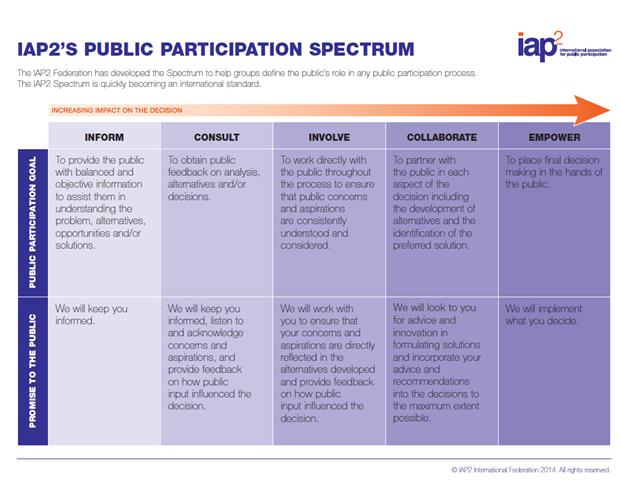
PUBLIC PARTICIPATION
A
five tier level of community engagement is used to guide Council’s
approach to conducting consultation.
1 Informing
· Advising
the community of a situation or proposal
· Informing
on a decision or direction
· Providing
advice on an issue
· No
response is required, although people are free to seek a further level of
participation
Tools
for Informing Include:
· Council
websites
· Information
sheets and FAQs
· Media
Releases
· E-Newsletter
· Advertising
· Councillor
feedback to the community
2 Consulting
· Undertaking
market research to identify needs or issues
· Seeking
comment on a proposal, action or issue
· Seeking
feedback on a service or facility
· Requiring
a response, but limited opportunity for dialogue
· Option
for people to seek a further level of participation
Tools
for Consulting include:
· Orange
Your Say Site
· Exhibition
periods
· Surveys
· Incoming
records/Customer Service
· Councillor
interactions with the community
3 Involving
· Involving
the community in discussion and debate
· Ensuring
informed input through briefings and information
· Adopting
a more personal and innovative approach through personal contact
meetings/sessions that encourage participation
· Involving
at different times in the planning process, ie keeping informed and enabling
further comment
Tools
for Involving include:
· Open
forums at Council meetings
· Public
meetings
· Specific
purpose consultations
· Mediation
· Councillor
interaction with the community
4 Collaborating
· Establishing
a structure for involvement in decision-making, eg committee
· Enabling
ongoing involvement and keeping informed
· Allocating
responsibility in achieving initiatives
Tools
for Collaborating include:
· Council
committee structure
· Councillor
involvement in the committee structure
5 Empowering
· Council
elections
Tools
for Empowering include:
· Ballots
When to Engage?
Council must consult when:
· It is
required by legislation
· It
wants to identify community issues, needs and priorities
Council should consult
when:
· Any
proposed changes will impact on current users or customers of a Council service
or facility
· Any
proposed changes which will affect the rights or entitlements of community
members, including minority groups
· There
is potential impact on surrounding neighbours
· It
wants to monitor customer satisfaction with Council’s services facilities
· There
is a level of controversy or sensitivity about a particular issue
· There
is conflict among community members about an issue.
When will Community Engagement Occur?
Council
will engage the community in the following areas:
· Strategy
Planning
This refers to the development of strategic plans and
projects that inform the Delivery/Operational Plan.
· Policy
Development and Implementation
This includes any policy development that has a direct
impact on the community.
· Site
Specific
This refers to any changes to a site that may have impact
on the community.
· Service
Planning
This includes the development and/or improvement to a
service.
· Areas
of improvement
This refers to any improvement required to increase the
quality of lifestyle for the community.
· Legislative
Requirements, including planning issues
This refers to all prescribed plans and projects under the
Local Government Act (1993) and other relevant Acts.
What level of Engagement will occur?
Council will call for different
levels of engagement depending on the issue, and the immediate or long term
impact on the community.
PROCEDURE
The Council’s Community
Engagement Policy is used by staff to develop, deliver, monitor and evaluate
community engagement campaigns for their projects and programs. It is to be
used in conjunction with Council’s Communications Strategy and in
consultation with Council’s Corporate and Community Relations team.
RELATED POLICIES/DOCUMENTS
ST049 - Communications Strategy
ST021 -
Customer Service Obligation
ST012 -
Community Communication Strategies for Development Proposals
Responsible Area – Corporate and Commercial
Services
|
REVISION
|
|
|
DATE
|
RESOLUTION
|
|
DATE
|
RESOLUTION
|
|
1
|
January 2002
|
|
6
|
January 2007
|
07/207
|
|
2
|
January 2003
|
|
7
|
6 January 2009
|
09/453
|
|
3
|
January 2004
|
|
8
|
15 July 2010
|
10/328/6
|
|
4
|
January 2005
|
|
9
|
May 2017
|
|
|
5
|
January
2006
|
06/685
|
|
|
|
|
All policies can be reviewed or revoked by resolution
of Council, at any time.
|
SUMMARY OF AMENDMENTS
|
Amendment Date
|
Section/Reference and Amendment
|
|
May 2017
|
· Includes updated IAP2 spectrum of engagement.
· Provides more guidance on when and how to engage
with the community.
· Replaces the community engagement handbook.
|
2.3 Draft
Resourcing Strategy
TRIM
REFERENCE: 2017/840
AUTHOR: Kathy
Woolley, Director Corporate and Commercial Services
EXECUTIVE Summary
In accordance with the NSW Government’s Integrated
Planning and Reporting requirements set out in the Local Government Act, the
Resourcing Strategy is presented to Council for placement on public exhibition.
The Resourcing Strategy includes the Long Term Financial
Plan, the Workforce Management Plan and the Asset Management Policy and
Strategy. These documents in draft are attached.
Council has resolved to hold an extraordinary meeting on 12
June 2017 where any submissions will be presented to Council.
Link To Delivery/OPerational Plan
The recommendation in this report relates to the
Delivery/Operational Plan strategy “1.3 Our City -
Ensure a robust framework that supports the community’s and
Council’s current and evolving activities, services and functions”.
Financial Implications
Nil
Policy and Governance Implications
Nil
|
Recommendation
That Council place the draft Resourcing Strategy
documents (Long Term Financial Plan, Workforce Management Plan and Asset
Management Strategy) on public exhibition.
|
further considerations
The
recommendation of this report has been assessed against Council’s other
key risk categories and the following comments are provided:
|
Service Delivery
|
The Resourcing Strategy sets
out how Council will deliver the actions in the Delivery/Operational Plan,
and includes provision for long-term financial planning, workforce management
planning and asset management planning. Levels of service are set out in the
asset management planning documents, and have been estimated based on current
knowledge and operations. The levels of service will be subject to review
when Council undertakes the community consultation for the next Community
Strategic Plan, which will take place in 2018.
|
SUPPORTING INFORMATION
The Asset Management Policy has been reviewed with minor
formatting changes made. The Asset Management Strategy provides a high level
analysis and summary of the Council’s assets management philosophy. To
continue the alignment between the assets and financial information, the
Strategy and associated Asset Management Plans will remain in draft until the
Council has formally adopted the budget in the Delivery/Operational Plan. This
approach will ensure the finalised versions of the Assets Management Strategy
and the associated Plans reflect the actual allocation of funding as approved
by Council for asset maintenance and renewals when it adopts the
Delivery/Operational Plan which incorporates the budget.
The Long Term Financial Plan
covers a ten year span as required. It provides draft budgets for the full ten
years covered by the Plan and is the starting point for the Council’s
consideration of budgets each time they are reviewed. The financial information
in years 1-4 of the Plan are used to create the four year Delivery/Operational
Plan.
The Workforce Management Plan is required to be a rolling four
year plan. It considers workplace issues such as succession planning, training,
staff sentiment and the workforce profile in order to provide input into the structure
and management of the Council’s operations.
Attachments
1 DRAFT
- Workforce Management Plan 2017/18-2020/21, D16/44788⇩
2 DRAFT
- Asset Management Strategy, D17/27317⇩
3 DRAFT
- Long Term Financial Plan - 2017/18 - 2026/27, D17/27206⇩
Extraordinary Council Meeting
9 May 2017
2.3 Draft
Resourcing Strategy
Attachment 1 DRAFT -
Workforce Management Plan 2017/18-2020/21
w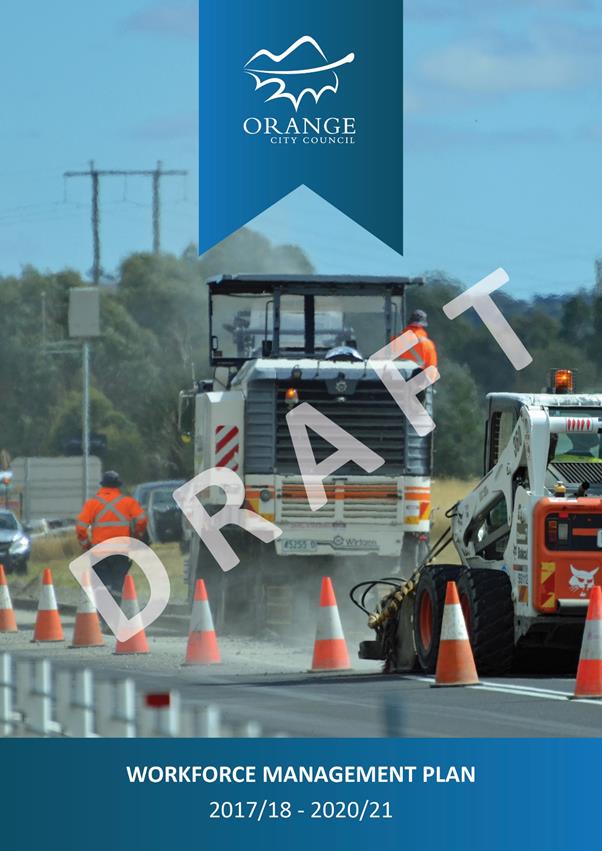
CONTENTS
EXECUTIVE
SUMMARY. 4
WORKFORCE
PLANNING.. 5
1.1 Introduction to Workforce
Planning. 5
1.1.1 Workforce Analysis. 5
1.1.2 Forecast Future Needs. 5
1.1.3 Analyse Gaps. 5
1.1.4 Develop Strategies. 6
1.1.5 Implement Strategies. 6
1.1.6 Monitor and Evaluate. 6
1.2 Staff Engagement. 6
1.3 Scope of the Workforce
Management Plan. 7
1.4 Responsibility for Workforce
Management Plan. 7
OUR
ORGANISATION.. 7
1.5 Orange’s Vision. 7
1.6 Directions. 7
1.7 Values. 8
1.8 Organisational Structure. 9
1.8.1 General Manager. 9
1.8.2 Corporate and Commercial Services. 9
1.8.3 Development Services. 10
1.8.4 Community, Recreation and Cultural Services. 10
1.8.5 Technical Services. 10
1.9 Organisation structure. 11
1.10 Our Current Workforce. 12
1.10.1 Workforce Profile. 12
1.10.2 Workforce Age Breakdown. 12
1.10.3 Retirement Intentions. 13
1.10.4 Tenure. 13
1.10.5 Turnover. 13
1.10.6 Recruitment. 13
1.10.7 Costs of recruitment. 15
1.10.8 Employees Costs. 15
1.10.9 Leave Patterns. 16
OUR
EXTERNAL ENVIRONMENT. 16
1.11 Local Labour Market Factors. 16
1.12 Skill Shortages. 16
1.13 Legislative Changes/Impacts. 17
1.13.1 Local Government Act 1993. 17
1.13.2 Fit for the Future. 17
1.13.3 Work Health and Safety Act 2011 and other codes of
practice and regulatory standards. 17
1.13.4 Building Professionals Act 2005. 18
1.13.5 National Framework – Regulations for Child Care. 18
1.13.6 National Disability Insurance Scheme (NDIS). 18
1.13.7 National Certification Framework: Operators within
Drinking Water Treatment Systems 18
1.14 Technological Changes. 18
1.15 Cultural Diversity. 19
GAP
ANALYSIS. 20
1.16 Future staffing. 20
1.17 Workforce development gaps. 20
1.17.1 Learning and development framework. 20
1.17.2 Ageing workforce. 20
1.17.3 Recruitment and attraction of staff. 20
1.17.4 Performance management. 20
1.17.5 Retention of corporate knowledge. 21
1.17.6 Strategic review of vacancies/ongoing positions. 21
MONITOR
AND REVIEW... 21
1.18 Monitor and review procedures. 21
Appendix:
Workforce Management Plan – Action Plan.. 22
EXECUTIVE SUMMARY
This
Workforce Management Plan has been developed to continue to build on the strong
foundation laid down by our first Workforce Management Plan 2012-2016.
This
document will support the long-term workforce strategies for Council’s
workforce and human resources needs which will likely remain unchanged over the
four year period of the plan. However, changes to the communities’
priorities and to the local government industry will require the Workforce
Management Plan to be reviewed on an annual basis.
The
ongoing focus for this Workforce Management Plan is set to remain clearly on
ensuring Orange City Council has the right people doing the right jobs, at the
right time. This means having systems in place to attract, develop and support
staff and Council in implementing the Community Strategic Plan objectives. This
plan also links with the key initiatives of the NSW Local Government Workforce
Strategy.
The
key workforce challenges include managing increasing community expectations,
responding to change, overcoming skills shortages and ageing workforce issues
and achieving greater productivity to provide the community value for money.
A
high level review of Council’s workforce needs now and into the future
has been completed as part of the development of this Workforce Management
Plan. Council has a dynamic workforce of more than 500 people, and provides a
range of traditional and non-traditional local government services. The
workforce ranges in age from under 20 to over 70 years, with a significant
number of staff (over 30%) approaching retirement age in the next 5 to 10
years.
The
components of this plan sets out our ongoing commitment to deliver on:
· Attraction and Retention of our Workforce
· Leadership of our Workforce
· Development of our Workforce
· Recognition of our Workforce
· Health and Wellness of our Workforce
· Organisation Culture and Corporate Values of our
Workforce
While
many of the annual actions arising from the strategic tasks identify the Human
Resources team as responsible for implementation, all staff have a role to play
in ensuring the outcomes of the Plan are realised.
I
encourage staff to read the Workforce Management Plan, and participate where
possible in its implementation.
Garry Styles
GENERAL MANAGER
WORKFORCE PLANNING
1.1 Introduction to
Workforce Planning
At
the simplest level, workforce planning is about “getting the right number
of people with the right skills in the right jobs at the right time.”
Workforce
planning is a tool that helps Council to plan for the future, anticipate
change, manage its workforce and meet Council’s goals. The Plan considers
how future staffing and skill needs may be met, and identifies some of the key
factors impacting on the workforce.
The
Workforce Plan is based on the Workforce Planning Framework pictured and
described below:









1.1.1 Workforce
Analysis
Workforce
analysis involves establishing a clear understanding of Council’s
direction and the internal and external factors that influence current and
future labour demand and supply. Specific activities undertaken in workforce
analysis include reviewing organisation direction and the external environment,
and looking at the internal and external factors that impact on the workforce.
1.1.2 Forecast
Future Needs
Forecasting
future needs involves identifying impacts on the service delivery requirements
of Council. This involves estimating the capability and capacity of the
workforce into the future.
1.1.3 Analyse
Gaps
Analysing
gaps involves using the results of workforce analysis and forecasting to
identify current and future gaps between current and required
positions/skills/resources. Gaps are then analysed, prioritised and
consideration given to how the gaps may be filled.
1.1.4 Develop
Strategies
Developing
strategies involves planning and designing specific programs and projects that
will enable Council to develop and maintain a workforce capable of delivering
the Community Strategic Plan Objectives.
1.1.5 Implement
Strategies
Implementing
strategies is the execution of the specific programs and projects. The
implementation of these strategies is integrated into the broader business
planning and operational management activities.
1.1.6 Monitor
and Evaluate
Monitoring
and evaluation is conducted to determine the effectiveness, efficiency and
appropriateness of the workforce planning strategies and activities. Monitoring
and evaluating information will be used to identify what works and
issues/opportunities to be considered in future workforce plans and to modify
this Plan as part of the annual review process.
1.2 Staff Engagement
In
December 2015 Council conducted a staff survey to continue our ongoing process
of engagement with our workforce. Approximately 300 staff participated
and overall the staff survey results were very positive with significant
improvements in a number of areas from the previous survey.
The
areas that received the most positive responses were:*
· 90% of employees are proud to tell others they work
for Orange City Council
· 89% would recommend Orange City Council as a workplace
to family or friends
· 92% of employees state that their team is committed to
achieving Council’s goals/targets
· 87% consider gender is not a barrier to success in the
organisation
· 85% believe that their team copes well with change
· 80% have received positive feedback in the past month
from someone in their team
· 95% of employees are aware of Council’s
Corporate values
· 93% of employees believe they receive the training
they need to undertake their role competently
· 88% of employees believe they would be supported if
they raised a safety concern
*positive
responses are based on the sum of respondents that have answered the question
as slightly agree, agree or strongly agree
Opportunities
for improvement are in:
· 73% state they have not been subjected to bullying in
the workplace in the last two years
· 62% believe that employees who perform poorly within
their team are appropriately managed
· 60% believe there is effective communication and
support between teams
In
October 2016 meetings were held with every Manager to review their workforce
planning needs for 2017/18. This included a review of their overall salaries
budget, vacant positions, temporary positions, casual employees, proposed new
positions, any known employee turnover and any proposed job redesign.
This process also provided managers with tools for making human resource decisions
now and into the future.
1.3 Scope of the
Workforce Management Plan
The
Workforce Management Plan is a four year strategic plan to support long term
workforce strategies. To support Council’s four year Delivery/Operational
Plan annual actions are detailed at the end of this Plan.
1.4 Responsibility
for Workforce Management Plan
The
Human Resources team have overall responsibility for developing and
implementing the Workforce Management Plan. The Plan is developed based on
consultation with staff and management.
The
Orange City Council Staff Consultative Committee has a key role in assisting in
the implementation and monitoring progress of the Plan.
All
staff can play a part in assisting the implementation of this Plan, and
providing feedback to monitor progress.
OUR ORGANISATION
1.5 Orange’s
Vision
A
proud, vibrant and supportive community that embraces and fosters sustainable
natural, cultural and economic diversity
1.6 Directions
Through
the community engagement process the direction of the City is divided into four
elements:
Our City
The Orange community will embrace and support strong,
accountable leadership to ensure effective, long term, inclusive planning and
decision-making within the region.
Our Community
The Orange community will support and enhance a
healthy, safe and liveable city with a range of recreational, cultural and
community services to cater for a diverse population.
Our Economy
The Orange community will plan and grow an innovative,
diverse and balanced economy while protecting the character of the City and the
region.
Our Environment
The Orange community will pursue the balance of growth
and development with the protection and enhancement of the built and natural
environment while recognising climate impacts and the diverse needs of the
urban, village and rural communities.
1.7 Values
As a values-based organisation, Council demonstrates
its values through workplace behaviours. These behaviours provide a framework
for staff to model behaviour across the organisation. Underpinning the
behaviours is the Orange City Council Code of Conduct. Council’s
corporate values are:
· Respect
– is honest and respectful towards others and works as part of a team
· Ownership -
takes responsibility for actions
· High Performance - pursues performance excellence and continually looks for
improvement
· Customer Focus
- demonstrates a customer focused approach towards internal and external
customers
· Safety
- works safely, in accordance with
Council’s Work Health and Safety policy and procedures
· Equal Employment Opportunity (EEO) – complies with EEO principles and respects
diversity
· Leadership
– Council encourages all its employees to lead by example
and role model our values. Leaders also need to ensure they provide
constructive feedback and encourage high performance by coaching, developing,
recognising and managing people effectively
Our
values are also considered as part of our recruitment processes, and are linked
to our Position Descriptions and various organisational policies and procedures.
1.8 Organisational
Structure
Council
delivers services to the community through four divisions comprising a total
workforce of 584, with an equivalent fulltime (EFT) of 396.54 as at December
2016. The activities undertaken by each of these divisions are guided by the
Delivery/Operational Plan. A brief overview of these activities are provided
below:
|
1.8.1 General
Manager
The
General Manager is generally responsible for the efficient and effective
operation of the organisation and for ensuring the implementation, without
undue delay, of decisions of Council.
The
Local Government Act 1993 states the General Manager has the following
particular functions:
|

Garry Styles
General Manager
|
(a) to conduct the day-to-day management of the
council in accordance with the strategic plans, programs, strategies and
policies of the council,
(b) to implement, without undue delay, lawful
decisions of the council,
(c) to advise the mayor and the governing body on the
development and implementation of the strategic plans, programs, strategies and
policies of the council,
(d) to advise the mayor and the governing body on the
appropriate form of community consultation on the strategic plans, programs,
strategies and policies of the council and other matters related to the
council,
(e) to prepare, in consultation with the mayor and the
governing body, the council’s community strategic plan, community
engagement strategy, resourcing strategy, delivery program, operational plan
and annual report,
(f) to ensure that the mayor and other councillors are
given timely information and advice and the administrative and professional
support necessary to effectively discharge their functions,
(g) to exercise any of the functions of the council
that are delegated by the council to the general manager,
(h) to appoint staff in accordance with the
organisation structure determined under this Chapter and the resources approved
by the council,
(i) to direct and dismiss staff,
(j) to implement the council’s workforce
management strategy,
(k) any other functions that are conferred or imposed
on the general manager by or under this or any other Act.
The
General Manager and Directors (below) are classified as Senior Staff, and are
all on fixed-term contracts.
1.8.2 Corporate
and Commercial Services
|

Kathy Woolley Director
Corporate and Commercial Services
|
The
Corporate and Commercial Services Division includes the functions of finance,
corporate and community relations, governance, information systems, economic
development, tourism, land development, customer service, administration,
human resources, safety, risk and records management.
Corporate
and Commercial Services has 90 staff in total, with an equivalent full-time
(EFT) of 73.44.
|
1.8.3 Development
Services
|

David Waddell
Director Development Services
|
The
Development Services Division includes the functions of environment and
planning, building, land use, ranger services, parking, natural resources and
cemetery management.
Development
Services has 43 staff in total and an EFT of 40.15.
|
1.8.4 Community,
Recreation and Cultural Services
|
 Scott Maunder Scott Maunder
Director Community,
Recreation and Cultural Services
|
The
Community, Recreation and Cultural Services Division includes the functions
of Library, Gallery, Museum, Theatre, Community Information and Services,
Children’s Services, Community Planning and City Presentation.
Community,
Recreation and Cultural Services has 267 staff in total and an EFT of 135.38.
|
1.8.5 Technical
Services
|
 Chris Devitt Chris Devitt
Director Technical
Services
|
The
Technical Services Division includes the functions of water, sewer, roads,
footpaths, traffic, engineering, Orange Airport, Aquatic Centre and Waste.
Technical
Services has 183 staff in total and an EFT of 147.57.
|
Extraordinary Council Meeting
9 May 2017
2.3 Draft
Resourcing Strategy
Attachment 1 DRAFT -
Workforce Management Plan 2017/18-2020/21
1.9 Organisation
structure
Council
reviews its organisation structure annually and the current structure is
detailed below.
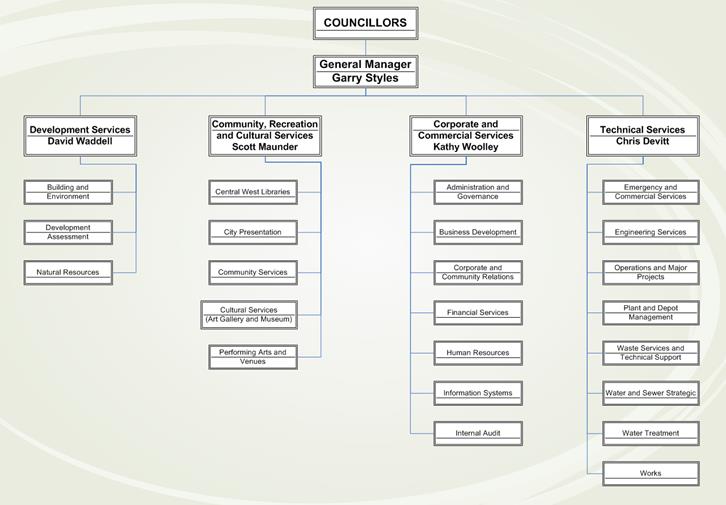
Extraordinary Council Meeting
9 May 2017
2.3 Draft
Resourcing Strategy
Attachment 1 DRAFT -
Workforce Management Plan 2017/18-2020/21
1.10 Our
Current Workforce
1.10.1 Workforce
Profile
The
organisational structure as at December 2016 comprises 396.54 full-time
equivalent (EFT) staff across the four divisions
As
at December 2016, Orange City Council employs 583 staff, of which 296 are
full-time, 134 are part-time and 153 are casual.
1.10.2 Workforce
Age Breakdown
Orange
City Council’s workforce age profile is similar to that of the NSW
average for local government, a feature of which is a low proportion of young
employees under the age of 25 compared with the proportion of older workers
aged 55 and above. As the table below shows, the largest proportion of staff
fall in the age bracket of 41 to 60 years.
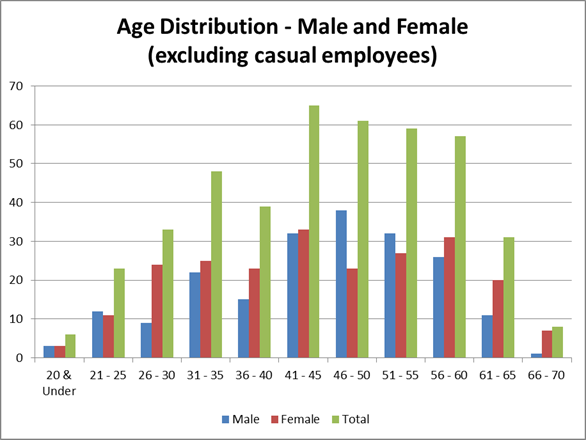
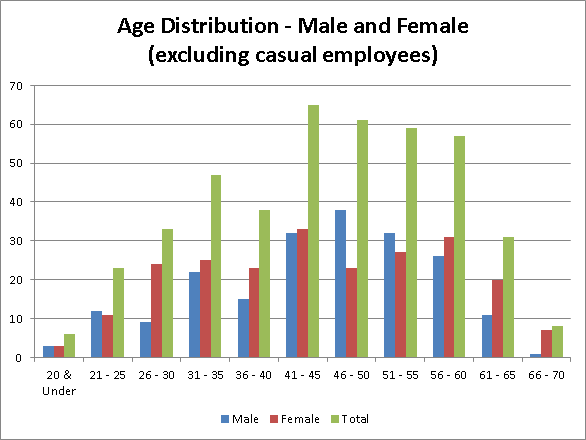
Orange
City Council has 96 (22%) permanent staff members who are aged over 55 years,
of whom 39 are over 60 years. These staff may be planning to retire in the
short to medium term, and so it will be critical to ensure contingency plans
are in place and that transfer of corporate knowledge occurs before they
retire.
The
average age of a Council staff member is 45.27 years, and average length of
service (excluding casuals) is 10.01 years.
1.10.3 Retirement
Intentions
A comparison of the responses to
the 2011 and 2015 Employee Survey indicates that employees are now expecting to
retire at a later age. In particular in 2011 only 2.7% of employees expected to
retire over 70 now more than 18% have indicated this.
1.10.4 Tenure
As
part of the last survey of staff undertaken, staff were asked how long they
anticipated staying with Orange City Council. 74% of respondents anticipated a
career with Council exceeding 6 years, and 45% of respondents intended a career
with Council of more than 15 years.
This
information suggests that generally, staff are looking for a career with
Council. This provides an opportunity for Council to develop a range of tools
to assist staff in planning a career, and developing professionally within
Council’s framework of training, education and development.
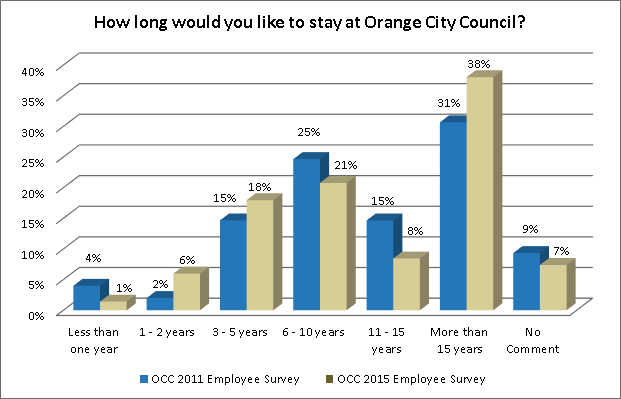
1.10.5 Turnover
In
2016 71 employees (16 full time, 22 part time staff and 33 casual staff) left
Council. This reflects a total turnover rate of 12.18 % compared to 8.14%
in 2015 and 12.88% in 2014. A lower turnover rate of 8.84% occurred when only
taking into account full time and part time staff. A recent survey conducted by
the Local Government NSW provides an average turnover rate for NSW Councils of
10.5%.
1.10.6 Recruitment
In
2016 Council recruited/appointed 123 positions which included:
|
Employment Type
|
Number
|
Employment Type
%
|
Average Time to Hire
in days
(Approval to Recruit
- Acceptance Date)
|
|
Casual
|
41
|
33%
|
81
|
|
Full-time
|
23
|
19%
|
60
|
|
Part-time
|
24
|
20%
|
62
|
|
Temporary
|
23
|
19%
|
39
|
|
Trainees
|
9
|
7%
|
82
|
|
Apprentices
|
3*
|
2%
|
135
|
|
TOTAL
|
123
|
|
67
|
*Note:
Whilst Apprentices are not employed directly by Council they are included in
the figures.
The
majority of casual recruitment in the past 12 months was as a result of the
operational or seasonal needs for positions for the Aquatic Centre,
Children’s Services, and the Theatre/Hospitality areas.
The
total direct recruitment costs spent on pre-employment medicals, psychometric
testing, external advertisements and induction on average costs $420 per
position. As there were a number of internal appointments that did not require
a pre-employment medical this has reduced the average cost per position.
1.10.7 Employees
Costs
Council’s
employee costs (for financial year 2015/16) are set out in the table below:
|
Item
|
Amount
|
|
Total
wages and salaries
|
$24,513,665
|
|
Superannuation costs
|
$3,046,903
|
|
Workers compensation premium
|
$1,485,628
|
|
Employee leave entitlements
|
$4,820,231
|
|
Fringe benefits tax
|
$103,035
|
|
Employee Assistance Program
|
$24,500
|
|
Payroll tax
|
$239,281
|
|
Other (including uniform, PPE, medicals)
|
$207,303
|
|
Total
employee benefits and on-costs
|
$34,440,546
|
Wages
and salaries increase in accordance with the Local Government (State) Award.
The current Award is due to expire in July 2017(the last wage increase was 2.8%
in July 2016) and therefore no further wage increases have been determined
however an annual increase of 3% has been modelled in the Long Term Financial
Plan.
Employee
costs (wages, salaries, on-costs etc) constitute approximately 38% of
Council’s operational expenses.
As
can be seen from the above figures, investment in employees constitutes a major
part of Council’s operations.
Council
implemented a new salary system on the 25 March 2013 which is 3% above the
award with three additional salary levels increasing each level by 3%. This
also involved the rescission of 17 Enterprise and Council Agreements with
existing staff able to preserve the terms and conditions of their agreements.
All new staff commence on the Local Government (State) Award conditions from 25
March 2013.
Positions
are evaluated by the Position Evaluation Team (PET) who assess and determine
position grading within the salary structure. The PET may also utilise the
expertise of relevant job knowledge experts.
Employer
superannuation contributions will increase gradually from the current 9.5%
until they reach 12%. These additional contributions have been factored
into Council’s long term financial plan and budget process.
1.10.8 Leave
Patterns
Council
proactively monitors and manages employee leave. This includes providing
quarterly leave reports to Managers and Directors. As part of the annual
workforce planning discussion with Manager employees excess annual and long
service leave balances were discussed including the need to implement leave
plans for employees where necessary.
The
number of sick leave hours taken (per EFT employee) over the past three years
is:
· 2013/14– 64.36 hours
· 2014/15– 63.46 hours
· 2015/16 – 57.87 hours
The
above rates are in line with the average NSW Council and compare favourably to
the Federal Public service rate of 65 hours and NSW State Government rate of
61.4 hours.
In
the last 12 months 11 staff were on parental leave.
OUR EXTERNAL ENVIRONMENT
In
planning our workforce needs into the future, it is critical to identify and
understand those factors influencing the external environment, and therefore,
impacting on Council’s workforce.
Scanning
the external environment entails obtaining both factual and subjective
information on the business environments in which Orange City Council is
operating. It is a process of considering what will affect Council’s
ability to provide services.
Information
about Orange’s community profile and lifestyle facts can also be found in
Council’s Community Strategic Plan.
1.11 Local Labour Market Factors
The
City of Orange has a broad economic base, comprising manufacturing, mining,
health and education, service industries, finance and agriculture. The
City’s retail and health sectors serve a regional population of over
100,000. As a regional centre, the City also provides banking, finance
and government services for Central NSW.
The
Orange City unemployment rate is 5.5% which is slightly above the NSW
unemployment rate of 5.1% (as referenced by the Department of Employment
Small Area Labour Market data, June 2016 quarter)
1.12 Skill Shortages
Orange
City Council’s recruitment experience to date has identified minimal
challenges attracting suitably qualified applicants with the only roles that
required re-advertising in the past 12 months were Airport Reporting Officer,
Teachers and Learn to Swim Instructors.
In
addition, there are national shortages in Town Planners, Building Surveyors,
Environmental Health Officers and Engineers that will impact Council when
current employees leave.
1.13 Legislative Changes/Impacts
Local
Government must comply with many acts, regulations, guidelines and laws. Some
of the key legislation and recent changes to some of the principle legislative
instruments are briefly explored below.
1.13.1 Local
Government Act 1993
Council
must, in accordance with the Local Government Act, prepare an Equal Employment
Opportunity Management Plan. This Plan guides Council in compliance of Equal
Employment Opportunity and Anti-Discrimination legislation. It is important to
ensure that the Plan is reviewed and assessed to ensure ongoing compliance, and
that any changes to these laws are captured.
The
Local Government Acts Taskforce was established to review the Local Government
Act. Phase One amendments passed parliament in 2016 and include new
purposes and principles for local government, new roles and responsibilities
for mayors and councillors and new functions for the General Manager. The major
change that impacts on the Workforce Plan is that determination of the
organisation structure of Council is by the governing body of the Council, in consultation
with the General Manager for senior staff positions and by the General Manager
for the remainder of the structure.
1.13.2 Fit
for the Future
In
January 2016 the Minister for Local Government proposed to merge the local
government areas of Blayney Council, Cabonne Council and Orange City
Council. However, in March 2017 the Minister advised their decision not
to proceed with the proposed merger. Orange City Council will now continue to
stand alone with elections to take place in September 2017.
Information
sessions were held with staff in 2016 and 2017 to provide updates during the
period of uncertainty.
1.13.3 Work
Health and Safety Act 2011 and other codes of practice and regulatory
standards.
Council’s
Technical Services Division has accreditation for its work health and safety
management system, under Australian Standard AS/NZ4801, and under the Office of
the Federal Safety Commissioner Construction Scheme. The current OFSC
accreditation expires on 3 May 2022 and AS/NZ4801 accreditation on 24 August
2019.
Council
has rolled out the Work Health and Safety Management System (WHSMS) to all
operational areas of Council and has seen a reduction in the number of workers
compensation claims lodged with Council’s insurer over the last 5 years.
1.13.4 Building
Professionals Act 2005
All
building certification work undertaken on behalf of Council must be done by an
accredited certifier. Council building surveyors must apply to the Board of
Accreditation in either A1, A2, A3 or A4 Categories of Accreditation.
1.13.5 National
Framework – Regulations for Child Care
All
children’s services were required to abide by the Education and Care
Services National Law Act 2010 and the Education and Care Services National
Regulations (2011) from 1 January 2012. The National Regulations replaced the
Children’s Services Regulation (2004). The Regulations include the
National Quality Framework and the National Quality Standards.
The
Regulations require a higher number of trained educators at Certificate and
Diploma levels (from 1 January 2014, at least 50% of educators working directly
with the children must have a Diploma or be actively working towards a
Diploma), as well as reduced child to carer ratios for children under three
years of age (from 1 January 2016, the ratio in the 2 to 3 years room went from
1 to 8 down to 1 to 5). These changes impact on the cost of operating
Council’s Children’s Services, and have implications for
Council’s training, education and development program.
1.13.6 National
Disability Insurance Scheme (NDIS)
Transition
of Ageing, Disability & Home Care (ADHC) funding to the National Disability
Insurance Agency will impact on our workforce. By mid-2018 every eligible
person in NSW will receive their disability support funding through the NDIS.
ADHC will no longer provide funding directly to service providers, including
local government.
1.13.7 National
Certification Framework: Operators within Drinking Water Treatment Systems
The
framework introduces a minimum level of competency for Certified Operators by
aligning skills, knowledge and competency requirements to national Vocational
Education and Training (VET) standards. A project team has been setup to work
through the implications of these changes.
1.14 Technological Changes
Council
continues to review how technology can assist in areas such as recruitment,
performance management, field work and administrative work. While these new
technologies may improve productivity outcomes, the required investment in
training and ongoing maintenance and operation impacts need to be determined.
Council
has invested in an online e-Recruitment system which was implemented in
2014. It was recognised that in order to be competitive and attract
high calibre candidates within reasonable timeframes, Council needed to ensure
that recruitment practices are efficient, simple, and where possible,
automated. Council also implemented online performance reviews in 2015 which
improved the linkages between the delivery/operational plan, council’s
values and individual staff.
Council
also undertakes its quarterly reporting online via the Pulse system for the
Community Strategic Plan and the Delivery Operational Plan.
1.15 Cultural Diversity
A
high proportion of the City’s population (86.3%) is Australian born (as
referenced by the Australian Bureau of Statistics). The majority of overseas
born persons have traditionally been from Great Britain and Ireland, with the
largest group coming from various countries in Europe. Approximately 4% of the
population was born in non-English speaking countries, with 3.4% speaking
languages other than English at home. The Aboriginal community is also
represented in the City, comprising 4.4% of the population.
Council’s
Equal Employment Opportunity Management Plan provides strategies to increase
inclusion of these groups into Council’s workforce, as well as additional
groups such as young people.
GAP ANALYSIS
1.16 Future staffing
Over
the life of this Plan, staffing levels are anticipated to stay about the same.
Given the age demographic of Council’s workforce, a number of staff are
anticipated to retire over the next three years.
As
part of the development of this plan and the 2017/18 budget meetings were held
with each Manager and Director to review the current and future staffing needs.
Managers are asked to project their workforce needs for the next four years
based on known workloads and programs. As part of this process training needs
and key skill areas were also identified. This will assist with meeting
the gaps between the demands for particular types of employees with certain
skills and abilities and the supply of labour. The use of casual
employees was also reviewed and where possible converting positions to part
time.
1.17 Workforce development gaps
Set
out below are a number of the key workforce development gaps identified by this
Plan. These gaps are further analysed in the Workforce Management Plan –
Action Plan, appended to the Plan.
1.17.1 Learning
and development framework
The
development of a learning and development plan each year assists in budgeting,
career planning and succession planning. This is undertaken through the
annual performance management review process and detailed training needs
analysis with Managers.
1.17.2 Ageing
workforce
As
detailed in section 2.6.2 the average age of the workforce has been increasing
each year. In conjunction with this employees have indicated their
intention to stay at work longer. Specifically, in the 2011 employee survey
only 2.7% of employees expected to retire over 70 in comparison to the recent
2015 employee survey where 18% have indicated this. The ageing workforce will
therefore be one of the major challenges to our workforce over the next 10
years. There are a number of key strategies within this plan that will
further develop a framework to retain staff, allow phased retirement options,
and support the health and wellbeing of staff as they get older.
1.17.3 Recruitment
and attraction of staff
Council
needs to be able to attract suitable applicants to fill vacancies. The system
for recruitment is flexible and allows for internal movement of staff.
Council also offers flexible working arrangements where practical.
1.17.4 Performance
management
A
recognised gap across the organisation relates to managing poor performance (as
identified in the Staff Engagement Survey completed in December 2015). This
incorporates training and development of supervisors, providing support for staff
to achieve their best, and ensuring information about performance expectations
is provided and understood by staff. It also extends to ensuring expectations
and responsibilities are discussed by the supervisors and their staff at annual
appraisals. The online performance review system addresses also supports
this component of workforce management.
A
new performance management policy and associated procedures were implemented in
2014/15, and Managers and Supervisors were provided with managing performance
training as part of an overall Leadership Training Program.
1.17.5 Retention
of corporate knowledge
Given
the anticipated retirements over the life of this Plan, and the likely
departure of key managers and experienced staff, there is a need to ensure the
transfer of corporate knowledge. Council has implemented Succession
Planning strategies to assist with the management of this challenge.
1.17.6 Strategic
review of vacancies/ongoing positions
It
will be important to ensure that vacancies are strategically reviewed to ensure
ongoing relevance to the organisation. This gap is considered in the process of
developing the phased retirement scheme as well as other separation options to
provide maximum benefit to both Council and the employee. Council maintains an
online recruitment system to ensure an efficient, streamlined recruitment
process for requests to recruit positions.
MONITOR AND REVIEW
1.18 Monitor and review
procedures
This
Workforce Management Plan is reviewed by the Human Resources Team during the
annual budget preparation, and amended to recognise any change in
organisational needs and/or resources available to implement the annual
actions.
The
Workforce Management Plan – Action Plan is reviewed by the Staff
Consultative Committee on an annual basis to validate ongoing relevance and
progress towards objectives and timeframes.
The
Directors review the plan and the General Manager will approve the plan.
Extraordinary Council Meeting
9 May 2017
2.3 Draft
Resourcing Strategy
Attachment 1 DRAFT -
Workforce Management Plan 2017/18-2020/21
Appendix: Workforce Management
Plan – Action Plan
The
below four year action plan linked to the Delivery/Operational Plan supports
the ongoing implementation of existing workforce strategies and actions as
detailed in the Workforce Management Plan.
Task 1 - Attraction and Retention of our Workforce
|
Action Ref
|
Action
|
Year 1
2017/18
|
Year 2
2018/19
|
Year 3
2019/20
|
Year 4
2020/21
|
Responsibility
|
Other staff
involvement
|
|
1.1
|
Undertake follow up
employee satisfaction survey and link results into review of the
Workforce Management Plan Action Plan and the Delivery/Operational Plan
|
ü
|
|
ü
|
|
Manager Human
Resources
|
Human Resources Team
|
|
1.2
|
Promote the use of
flexible working arrangements including the use of case studies to increase
the understanding of the benefits of workforce flexibility and the options
available under the Award and Council Policy.
|
|
ü
|
|
ü
|
Senior Human Resources
Officer
|
Human Resource Officer
|
|
1.3
|
Review employer
branding and promotion of Council as an attractive career option including
the use of digital media to promote jobs and careers
|
ü
|
|
|
|
Senior Human Resources
Officer
|
Human Resource Officer
|
|
1.4
|
Benchmark
Council’s Salary System against like councils to measure ongoing
competitiveness
|
ü
|
|
ü
|
|
Manager Human
Resources
|
|
|
1.5
|
Position Evaluation
Team to monitor organisational structure and review relativities between positions.
|
ü
|
ü
|
ü
|
ü
|
Manager Human
Resources
|
Position Evaluation
Team
|
|
1.6
|
Benchmark retention
and employee turnover rates
|
ü
|
ü
|
ü
|
ü
|
Employee Relations
Officer
|
|
Task 2 - Leadership
of our Workforce
|
Action Ref
|
Action
|
Year 1
2017/18
|
Year 2
2018/19
|
Year 3
2019/20
|
Year 4
2020/21
|
Responsibility
|
Other staff
involvement
|
|
2.1
|
Rollout of induction including corporate training
needs for new staff and Managers
|
ü
|
ü
|
ü
|
ü
|
Senior Human Resources
Officer
|
Employee Relations
Officer
|
|
2.2
|
Improve understanding of the performance management
process including the link with the learning and development plan
|
|
ü
|
|
ü
|
Manager Human
Resources
|
Managers, Human
Resources Team
|
|
2.3
|
Promote the use of the Managers Helpline as part of
the Employee Assistance Program for supporting Supervisors with people
challenges including workplace conflict, change management and performance
management
|
ü
|
ü
|
ü
|
ü
|
Manager Human
Resources
|
Human Resources Team
|
|
2.4
|
Develop and implement programs and initiatives to
improve cross team communication and team work.
|
ü
|
ü
|
ü
|
ü
|
Manager Human
Resources
|
Directors, Managers
|
|
2.5
|
Continue to develop high potential “future
leaders” via development programs such as mentoring and the current
Emerging Leaders Program
|
ü
|
ü
|
ü
|
ü
|
Senior Human Resources
Officer
|
Manager Human
Resources
|
|
2.6
|
Continue to rollout Leadership Programs including
Recruitment and Selection, Performance Management, new manager induction and
Work Health and Safety
|
ü
|
ü
|
ü
|
ü
|
Senior Human Resources
Officer
|
Manager Human
Resources
|
|
2.7
|
Continue with the regular “Managers
Forum” quarterly meetings to discuss current issues and initiatives
with all Managers
|
ü
|
ü
|
ü
|
ü
|
Managers
|
Managers
|
|
2.8
|
Continue to maintain an active Staff Consultative
Committee and Health and Safety Committee to ensure staff engagement
and policy consultation
|
ü
|
ü
|
ü
|
ü
|
Consultative
Committees
Work Health and Safety
Committee
|
Consultative
Committees
Work Health and Safety
Committee
|
|
2.9
|
Report senior staff contractual conditions to
Council annually
|
ü
|
ü
|
ü
|
ü
|
General Manager
|
Manager Human
Resources
|
Task 3 -
Development of Our Workforce
|
Action Ref
|
Action
|
Year 1
2017/18
|
Year 2
2018/19
|
Year 3
2019/20
|
Year 4
2020/21
|
Responsibility
|
Other staff
involvement
|
|
3.1
|
Ensure all new staff undertake a corporate induction
and existing staff attend core corporate and compliance training
|
ü
|
ü
|
ü
|
ü
|
Senior Human Resources
Officer
|
Human Resources Team
|
|
3.2
|
Review the Local Government capability framework and
its potential to be utilised at Orange City Council
|
ü
|
ü
|
|
|
Manager Human
Resources
|
Senior Human Resource
Officer
|
|
3.3
|
Implementation of new online training system
|
ü
|
|
|
|
Senior Human Resource
Officer
|
Human Resource Officer
|
|
3.4
|
Ensure all employees complete an online performance
review
|
ü
|
ü
|
ü
|
ü
|
Manager Human
Resources
|
Directors, Managers
and Supervisors, Employee Relations Officer
|
|
3.5
|
Rollout of e-learning solutions to assist with
educating staff, particularly in relation to governance related issues
|
ü
|
ü
|
ü
|
ü
|
Senior Human Resources
Officer
|
Human Resource Officer
|
|
3.6
|
Implement the actions form the review of the use of
apprentices/trainees across Council and programs to support Supervisors and
Trainees.
|
ü
|
|
|
|
Manager Human Resources
|
Senior Human Resource
Officer, Managers
|
|
3.7
|
Develop the annual learning and development plan
|
ü
|
ü
|
ü
|
ü
|
Manager Human
Resources
|
Human Resources
Officer
|
|
3.8
|
Improve functionality of Human Resources Information
System (Civica HR Module) including in the areas of electronic leave and
online time sheets
|
ü
|
|
|
|
Employee Relations
Officer
|
Senior Payroll Officer
|
Task 4 -
Recognition of our Workforce
|
Action Ref
|
Action
|
Year 1
2017/18
|
Year 2
2018/19
|
Year 3
2019/20
|
Year 4
2020/21
|
Responsibility
|
Other staff
involvement
|
|
4.1
|
Promote the Employee
Recognition Policy with a focus on immediate recognition
|
ü
|
ü
|
|
|
Manager Human
Resources
|
Senior Human Resource
Officer
|
|
4.2
|
Conduct annual staff
excellence awards and service recognition
|
ü
|
ü
|
ü
|
ü
|
Senior Human Resources
Officer
|
Directors
|
|
4.3
|
Support Council wide
employee events including Picnic Day and Christmas event
|
ü
|
ü
|
ü
|
ü
|
Human Resources Team
|
Relevant Committees
|
Task 5 - Health and Wellness of our Workforce
|
Action Ref
|
Action
|
Year 1
2017/18
|
Year 2
2018/19
|
Year 3
2019/20
|
Year 4
2020/21
|
Responsibility
|
Other staff
involvement
|
|
5.1
|
Maintain a safe workplace environment through best
practice safe systems of work through completion of actions from
Council’s Safety Plan including review and implementation of
Council’s Work Health and Safety Management System, review of the WHS
training process, and delivery of the Globally Harmonised System (GHS) for
chemical management.
|
ü
|
ü
|
ü
|
ü
|
WHS Coordinator
|
WHS Team
|
|
5.2
|
Continue to work to reduce workplace injuries and
incidents through application of injury prevention programs, promotion of
health and wellbeing programs and ongoing Work Health and Safety Training
|
ü
|
ü
|
ü
|
ü
|
WHS Coordinator
|
WHS Team, Supervisors
|
|
5.3
|
Undertake AS4801 and OFSC Work Health and Safety
Management Systems audits and inspections across Council work sites
|
ü
|
ü
|
ü
|
ü
|
WHS Coordinator
|
WHS Officer
|
|
5.4
|
Review and implement employee wellness programs and
health surveillance
|
ü
|
ü
|
ü
|
ü
|
WHS Coordinator
|
WHS Team
|
|
5.5
|
Develop and deliver the framework around
musculoskeletal injuries and manual handling PERFORM program with the aim to
reduce the incidence rate of claims for musculoskeletal disorders resulting
in one or more weeks off work by at least 30%.
|
ü
|
ü
|
ü
|
ü
|
WHS Coordinator
|
WHS Team
|
|
5.6
|
Undertake a review of high risk positions physical
capability statements in line with WHS requirements.
|
ü
|
ü
|
ü
|
ü
|
WHS Coordinator
Senior Human Resources
Officer
|
WHS Team
|
Task 6 – Organisation Culture and Corporate Values
of our Workforce
|
Action Ref
|
Action
|
Year 1
2017/18
|
Year 2
2018/19
|
Year 3
2019/20
|
Year 4
2020/21
|
Responsibility
|
Other staff
involvement
|
|
6.1
|
Develop new methods to educate and reinforce
Council’s Corporate Values and Code of Conduct
|
ü
|
|
|
|
Manager Human
Resources
|
Directors, Managers,
Supervisors
|
|
6.2
|
Complete the action plan outlined in the Equal
Employment Opportunity Management Plan including increasing community
awareness of the diversity of jobs within Council and promoting the benefits
of a diverse workforce
|
ü
|
ü
|
ü
|
ü
|
Manager Human
Resources
|
Employee Relations
Officer
|
|
6.3
|
Develop programs and initiatives with a focus on
zero tolerance to bullying and harassment and equal treatment of employees
|
ü
|
ü
|
ü
|
ü
|
Manager Human
Resources
|
Managers Forum
|
|
6.4
|
Continue to align Human Resource Policies and
Procedures to Council’s Corporate Values
|
ü
|
ü
|
ü
|
ü
|
Manager Human
Resources
|
Senior Human Resources
Officer, WHS Coordinator
|
Extraordinary
Council Meeting
9 May 2017
2.3 Draft
Resourcing Strategy
Attachment 2 DRAFT -
Asset Management Strategy
Extraordinary Council Meeting
9 May 2017
2.3 Draft
Resourcing Strategy
Attachment 2 DRAFT -
Asset Management Strategy
Extraordinary
Council Meeting
9 May 2017
2.3 Draft
Resourcing Strategy
Attachment 2 DRAFT -
Asset Management Strategy
TABLE OF CONTENTS
1 Executive
Summary. 2
2 Strategic
Framework. 5
3 Services
Provided. 7
4 Levels
of Service. 8
5 Condition
of Our Assets. 10
6 Operations. 12
7 Maintenance. 13
8 Capital
Renewal / Rehabilitation. 15
9 Capital
Upgrades and New Assets. 17
10 Disposal
Plan. 18
11 Financial
Plan. 19
12 Key
Performance Measures. 20
13 Plan
Improvements. 21
14 Risk
Management Plan. 22
15 Appendix
A: Example of Annual Service Costs. 24
16 Appendix
B: Improvement Strategy Action Plan. 25
17 Appendix
C: 20 Year Financial Plan (2016 $,000) 27
|
Document
Control
|
|
Rev No
|
Date
|
Revision Details
|
Author
|
Verifier
|
Approver
|
|
1.0
|
23/11/2016
|
Updated based on finalisation of AMP’s
|
ML
|
CD
|
GS
|
|
1.1
|
8/12/2016
|
Updated after further reviews of AMPs
|
ML
|
CD
|
GS
|
|
|
|
|
|
|
|
1. Executive
Summary
A high level review of
Council’s Asset Management policies, practices and systems has been
completed in conjunction with the development of this document to provide a
strategic direction and guidance for improving asset management planning and
performance. Council is responsible for infrastructure and other assets that
have a fair value of approximately $1.42 billion at 30 June 2016.
This plan assists Council in
the decision making process and is presented at a high level to provide key
information that can used in the determination of levels of service and funding
required. Table 1.1 identifies the asset groups in this plan, the twenty year
average costs and funding gap if one exists between the available renewal
budget and predicted renewal requirements. Note a funding analysis has not been
undertaken on the ‘Other’ assets.
Table 1.1:
Council’s Asset Portfolio Overview (in 2016 $,000)
|
Asset
|
Fair
Value
|
Operations
and Maintenance Budget1
|
Renewal
Budget1
|
Upgrade
& New1,2
|
Annual
Average Funding Gap1
|
Backlog
(2017/18)
|
Backlog
(2036/37)
|
|
Water
|
282,189
|
16,228
|
3,598
|
3,017
|
-1,034
|
-2,214
|
-20,679
|
|
Sewer
|
249,807
|
13,190
|
1,487
|
1,601
|
-162
|
1,671
|
-3,237
|
|
Water and Sewer
|
531,996
|
29,418
|
5,085
|
4,618
|
-1,196
|
- 543
|
-23,916
|
|
Transport
|
371,504
|
8,079
|
1,917
|
4,398
|
1,021
|
6,015
|
20,421
|
|
Drainage
|
131,400
|
2,925
|
670
|
5
|
482
|
3,138
|
9,632
|
|
Buildings
|
45,170
|
7,576
|
6
|
197
|
275
|
241
|
5,494
|
|
Aerodrome
|
147,040
|
758
|
76
|
372
|
-8
|
1,304
|
-153
|
|
Aquatic Centre
|
3,817
|
1,941
|
46
|
-
|
82
|
-430
|
1,631
|
|
Open Space
|
14,749
|
1,170
|
46
|
102
|
201
|
1,160
|
4,012
|
|
Other
|
174,159
|
|
|
|
|
|
|
|
General Fund
|
887,839
|
22,449
|
2,761
|
5,074
|
2,053
|
11,428
|
41,037
|
|
TOTAL
|
1,419,835
|
51,867
|
7,846
|
9,692
|
857
|
10,885
|
17,121
|
Notes:
1. Budget Figures are based on the
Council’s Long Term Financial Plan. Within the Water and Sewer
AMPs, the averages are based on a 30-year model, however for consistency
they are presented as 20-year average here (it is also important to note that
while a surplus is shown at 20 years, after 30 years the backlog equals $0).
2. Capital Upgrade and New costs to
be confirmed as short term projects only identified.
3. Other assets in the fair value column
include but aren’t limited to land, plant and equipment and library books
This
Strategy is presented at a high level to provide key information that can be
used in the determination of levels of service and funding required. Table 1.1
provides a snapshot of the Council’s asset groups, twenty year average
costs, the funding gap if one exists between the available renewal budget and
predicted renewal requirements and the projected backlog of works as at Years 1
and 10.
The analysis highlights that
depending on decisions regarding the condition at which assets are maintained
or renewed that there is a Renewal Funding Gap for which future
generations will become liable if remedial action is not taken. It needs to be
stressed that we are considering long-term averages in this strategy and
accordingly in some years the cost to renew will be higher and some
years’ lower dependant on the number of assets that are due for renewal
in that particular year.
With the current modelling, in
certain years there may be a small surplus shown in the analysis. The intention
is that where appropriate work will be ‘smoothed’ to provide a more
consistent workflow, and the Long Term Financial Plan adjusted to more closely
match the timing of specific works.
The backlog in year 1 of the
plan is calculated by determining the value of works that are due as at 1 July
2017 that can not be funded in the 2017/18 financial year. Note a funding
analysis has not yet been undertaken on the ‘Other’ assets. Figure
1.1 shows the rolling 10-year backlog for each asset category. (The rolling
backlog is the renewal works identified as being required, that can not be
funded in the year they are due).
Figure 1.1: Anticipated Rolling Backlog over the next
10 years (in 2016 $,000)
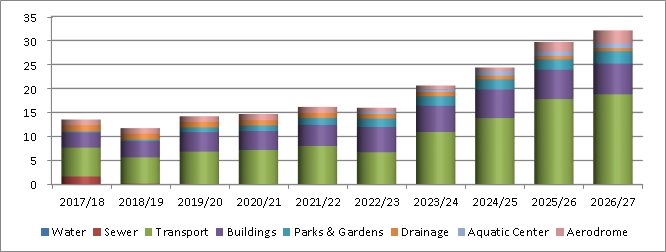
Figure 1.2 provides an
indication of the total annual expenditure for all asset categories in each of the
major program areas together with the backlog that is expected in any one year
based on the currently available funding.
Figure 1.2: Forecast Expenditure and over the next 10
years (in 2016 $,000)
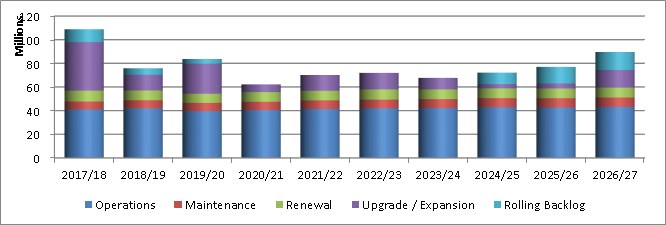
A number of options are
available to address this funding gap including adjustment to service levels,
extending asset life (i.e. changing the acceptable condition levels prior to
renewal), obtaining increased grant funding, increases in rate revenue i.e.
Special Rate Variation and borrowing strategies.
Levels of Service, Intervention Levels, Condition
Rating and Useful Life
The determination of Levels
of Service (LOS) is crucial in the calculation of the gap between required
funds for asset service delivery and available budgets. The levels will be
determined by defining the outcomes as agreed with the community, identifying
the services required to meet those outcomes and the infrastructure required to
support those services. Details on proposed LOS are contained within each of
the Council’s Asset Management Plans.
In order to allocate
limited funds responsibly, renewal or rehabilitation of assets will only be
undertaken once they reach a certain condition, referred to as the intervention
level. Typically, assets will not be renewed until they are between a condition
6 and 9 depending on the utilisation, function and / or criticality of the
asset. Condition Rating assessments on individual assets are undertaken
on a regular basis depending on the component, the asset’s current age,
previous condition and criticality.
Figure 1.3:
Council’s Asset Condition Profile Based on Value (2016 $,000)

The Useful Life of an
asset is the period from when it is constructed until it reaches its defined
intervention level. The modelling undertaken is based on this information which
is a ‘best estimate’, with the actual life dependant on numerous
factors that influence the rate of deterioration of the asset (e.g.
construction methods, materials, weather, usage, and worker skill). Appendix A
provides an example calculation of this.
The graph presents a
snapshot of the current condition of Council’s assets based on the value
of each asset component in each of 10 conditions ranging from 1 being near new
to 10 as a completely failed component or asset. Note that this only includes
the assets that have been condition rated and modelled in the 2017/18 Asset
Management Plans.
Risk Management
Section 14 outlines the
management of risk in delivery of assets to the community with their delivery
considered in the Enterprise Risk Management Program. Critical assets are
identified in each AMP with those most critical listed in this Strategy.
Improvement Program
The process of managing assets
is one of continually improving the knowledge Council has including maintaining
up to date asset registers, condition ratings, and the cost of work on the
asset and the rate at which assets deteriorate and reach their intervention
level.
To manage that process Council
has undertaken a self-assessment against the National Asset Management
Assessment Framework (NAMAF), which assisted in developing a plan of action to
improve Council’s Asset Management knowledge, practices and benchmark
performance. The benchmarking information has been taken from data made
available on a number of Western Australia Council that have completed an
assessment. Details of the assessment are contained in Appendix B.
An Assets Strategic
Financial Management Plan has been developed for each of the assets
reviewed in the strategy with the details contained in Appendix C based on current
(2016) dollars. The 20 year forecasts presented are based on the modelling
undertaken and achieving the levels of service presented in the plan, and is
intended to assist Council when considering future Strategic Community Plan and
Delivery/Operational Plans. If changes are made to the Assets Strategic
Financial Management Plan, those changes will be reflected in the next AMS and
Asset Management Plans.
2. Strategic Framework
Orange
City Council developed a comprehensive community engagement strategy to ensure
a broad range of opinions, ideas and visions were captured to help shape the
Orange Community Strategic Plan. From this Plan a number of key outcomes are
supported by the effective management of Assets including:
· 14.1 Incorporate identified community aspirations for
the creation of infrastructure into the Asset Management Plan
· 14.3 Design and construct new infrastructure assets as
specified within the Asset Management Plan to agreed levels of service
· 15.2 Maintain and renew water, sewer and stormwater
infrastructure and services as specified within the Asset Management Plans at
agreed levels of service
To assist in delivering these
outcomes, Council will operate and maintain its assets to:
1. Ensure adequate provision is made for the long-term
management of assets, the delivery of new assets and the renewal or upgrading
of existing assets to meet service delivery objectives.
2. Ensure that assets are maintained in a safe and
functional condition.
3. To encourage and support the economic and social
development in and around Orange.
4. Ensure that Infrastructure is managed to deliver the
requirements of Council’s Asset Management Policy and Community Strategic
Plan.
We
will achieve these objectives by:
· Maximising the service potential of existing assets by
ensuring that they are appropriately used and maintained
· Identifying opportunities to reduce demand for new /
upgraded assets by implementing demand management techniques and considering
alternative service delivery options (e.g. water restrictions)
· Increasing value for money in the identification and
delivery of new works by considering life cycle costing and / or alternative
construction techniques
· Focusing attention on results by clearly assigning
responsibility, accountability and reporting requirements in relation to asset
management.
The
key principles guiding the development of our Asset Management Strategy are:
· Sound information and systems are needed to inform
decision making;
· Comprehensive asset management planning is required to
ensure decisions are based on an evaluation of alternatives that take into
account life cycle costs, benefits and risks of assets;
· The community will be informed and have an opportunity
to have involvement in establishing level of service standards based on a
willingness to pay;
· Responsibility for asset management, including
accountability and reporting requirements, is clearly established, communicated
and implemented;
· An effective policy framework is established for the
strategic management of assets.
The Strategy will be influenced
by the following factors:
1. The increasing community expectations for a higher
quality of service to be provided by Council.
2. An increasing focus on lifestyle and environmental
issues.
3. The combination of ageing asset stock and increased
community expectations will make risk management an increasingly important
asset management activity.
4. The trend for the cost of materials, labour, and risk
management will continue to be much greater than CPI in the short to medium
term due to:
a) The
cost of materials due to a range of factors - increasing: production, wages,
cartage, insurances, quality assurance and other ancillary costs.
b) Escalations
in the price of petroleum products will continue to have a significant impact
because of the high proportion of the budget allocated to maintaining the road
network, an area highly sensitive to the price of oil;
c) The
continuing increased cost of risk management processes and public liability
insurance;
d) The
increased cost of occupational health and safety regulation and superannuation
contributions.
5. The impact weather patterns have upon the pace of
deterioration.
6. The ageing of infrastructure will require renewal at
some time in the future if service levels are to be maintained.
7. Council’s 2015/16 Financial Statements indicate
that the Orange City Council is in a sound financial position, however an asset
renewal ratio of less than 100% indicates that insufficient funds are being
allocated to adequately maintain infrastructure.
The City’s population is
projected to grow at 0.8% per annum, based on the latest projections
underpinning the Community Strategic Plan. This will require new areas for
housing, which are being staged through City planning to provide for logical
and economic provision of suitable, serviced land. The population at the 2016
Census was estimated to be 42,356.
To assist in the delivery of
the objectives in this strategy, a number of key documents and systems have
been prepared and should be referred to in considering the findings presented:
Table 2.1: Where can I find additional information?
|
Document
/ System
|
Content
|
|
Community Strategic Plan
|
Outcomes and strategies identified by the community
|
|
Council Asset Management Policy
|
How we manage assets
|
|
Asset Management Plans
|
Detailed analysis for each asset portfolios
|
|
Asset Management Manual
|
Procedures and processes the guide the management of
assets
|
|
Condition Assessment Manual
|
Details on the process of assessing condition,
including photographic examples of various conditions
|
|
Enterprise Risk Management Plan
|
The identification and management of risks across
Council operations
|
|
Asset Management System (AM)
|
Electronic system that contains the asset register,
condition ratings and used to model future renewals
|
|
Enlighten GIS
|
Geographical information system that produces maps of
assets
|
3. Services
Provided
Council recognises the
importance of asset management planning. The preparation of this Asset
Management Strategy is another step in providing guidance to Council on
improving its asset management systems and practices.
Situated approximately 250
kilometres west of Sydney, the City of Orange is centrally located within the
region commonly known as Central West of New South Wales. The City has an area
of 286 square kilometres, and is located within the Tablelands climatic region
of New South Wales.
Whilst the area is
predominantly rural, about 90% of the population lives in the urban areas. The
establishment of a classification system for asset groups will be included in
each asset management plan (AMP) to ensure the efficient allocation of
resources to maintain levels of service appropriate to their function. These
classifications will be developed within each AMP specifically based on
functionality, utilisation, and community requirements.
The infrastructure assets managed by Council are
detailed in Table 3.1.
Table 3.1: What assets does Council manage ($M)?
|
Asset
Category
|
Component
|
Dimension
/ Scale
|
Fair
Value
|
|
Transport
|
Roads (incl ancillaries)
|
475 km
|
371,504
|
|
Kerb and Gutter
|
447 km
|
|
Pathways
|
147 km
|
|
Bridges and Ancillaries
|
41 bridges
|
|
Drainage
|
|
215 km
|
147,040
|
|
Parks
|
|
31 playgrounds, >850 Ha
|
45,170
|
|
Buildings
|
Corporate
|
40
|
131,400
|
|
Community
|
85
|
|
Public Amenities
|
37
|
|
Other (residential, sheds etc.)
|
243
|
|
Sewer
|
|
440km pipes, 61,000 EP S.T.P
|
249,807
|
|
Water
|
|
530 km pipes, 38.8 ML/d W.T.P
|
282,189
|
|
Aerodrome
|
Includes runways, roads, and buildings
|
|
14,749
|
|
Aquatic Centre
|
FV included in buildings
|
|
3,817
|
|
Other
|
(Includes Plant, office equipment, land
and other assets)
|
174,159
|
|
Total
|
|
$1,419,835
|
|
|
|
|
|
4. Levels
of Service
One of the basic tenets of
sound asset management practice is to provide the level of service the current
and future community want and are prepared to pay for, in the most cost
effective way (NZ NAMS 2007). The final determination of service levels will be
undertaken in conjunction with the community as the assets management processes
progress. This will enable Council to make informed decisions on the allocation
of community resources in accordance with community priorities and willingness
to pay.
Figure 4.1 – How do we develop Level of
Service?
The level of service and the
cost to deliver services at that level is an essential component in strategic
asset management planning. Council must know the true cost of service delivery,
priorities placed by the community on infrastructure, the service levels
desired by the community and at what level they are willing to pay.

Figure 4.2 – How can we determine a
sustainable level of service?
As work on developing
acceptable levels of service are underway, for the development of each Asset
Management Plan, historical defined levels of service will be identified
together with options to increase or decrease these levels and the cost savings
/ increases associated with those options. This will provide an excellent
starting point for the consultation required as indicative costs for various
service levels will be available.
Council will continue to
develop service levels in the future revisions of each Asset Management Plan.
This will provide the link between service levels and costs of service
delivery, providing a tool for community consultation on these levels to enable
Council to make decisions on service levels and costs in setting budgets and
rate levels.
To assist in this process,
consideration of life cycle costing and funding models is required to better
inform Council and the Community.

Figure 4.3 – How do Levels of Service
influence the Delivery Program?
Two primary types of level of
service are defined in the AMPs:
· Community LOS – relates to how the community
receives the service in terms of safety, quality, quantity, reliability
responsiveness, cost efficiency and legislative compliance; and
· Technical LOS – are the technical measures of
performance developed to ensure the minimum community levels of service are
met.
5. Condition
of Our Assets
Council maintains a Condition
Assessment Manual that details the frequency of inspection and condition rating
to be used for all assets. This data is recorded in the Council Asset
Management System and used to predict the timing of renewal / maintenance
requirements in the Long Term Financial Plan.
Assets are rated on a 1 (Near
New) to 10 (Completely Failed) scale consistent with the Maloney model and
advanced asset management practices as outlined in the IPWEA International
Infrastructure Management Manual. Details on how Council assesses condition and
further information on the rating scale are contained in the Condition
Assessment Manual.
The intent of Council is not to
undertake renewal on an asset until it reaches its ‘Intervention
Level’, that is the condition at which the community has determined
renewal is required based on the LOS analysis. Typically, assets will be
renewed between condition 6 and 9 which ranges from fair/poor to very poor
depending on their classification.
Table 5.1: What are our Intervention Levels to Renew
an Asset?
|
Component
|
Component
and Class
|
Intervention
Level
|
Useful
Life
|
|
Transport
|
Collector Roads: Pavement
|
7
|
65
|
|
Water
|
All Fibro / AC water mains
|
8
|
70
|
|
Sewer
|
All DICL Sewer pipes
|
8
|
90
|
|
Drainage
|
All concrete pipes
|
9
|
165
|
|
Buildings
|
Premier Building Ducted Air Conditioners
|
8
|
30
|
|
Aerodrome
|
Runway Seal
|
5
|
15
|
|
Open Space
|
BBQ’s in Regional Parks
|
6
|
12
|
Each asset’s
condition is maintained in the Asset Register and the graphs below gives the
condition profile based on the dollar value assets in each condition. Note only
modelled assets are graphed.
Figure 5.2: What Condition are Council’s assets
in?
6. Operations
Operational activities are
those regular activities that are required to continuously provide the service
including asset inspection, electricity costs, fuel and overheads.
Table 6.1: When do we undertake Inspections?
|
Asset
Group
|
Inspection
|
Frequency
|
|
Transport
|
Condition Assessments: Collector Roads
|
Annually
|
|
Water
|
Water Treatment Plant Checks
|
Daily
|
|
Sewer
|
CCTV Sewer Mains
|
5 Km per year
|
|
Drainage
|
CCTV Drainage Pipes
|
2% per year
|
|
Buildings
|
Condition Assessments
|
Annually
|
|
Aerodrome
|
Condition Assessments
|
Annually
|
|
Aquatic Centre
|
Condition Assessments
|
Annually
|
|
Open Space
|
Regional Facility Inspections
|
Annually
|
The
expenditure on operational costs in each asset group are detailed in table 6.2
and graphed below.
Table 6.2: What are our Operational Costs?
|
Activity
|
20 year
average
(2016 $)
|
|
Water
|
15,293
|
|
Sewer
|
12,093
|
|
Transport
|
6,572
|
|
Buildings
|
2,206
|
|
Open Space
|
4,392
|
|
Drainage
|
501
|
|
Aquatic Centre
|
1,889
|
|
Aerodrome
|
1,092
|
|
Total
|
44,038
|
Figure 6.1: What is the breakup of our Operational
Costs?
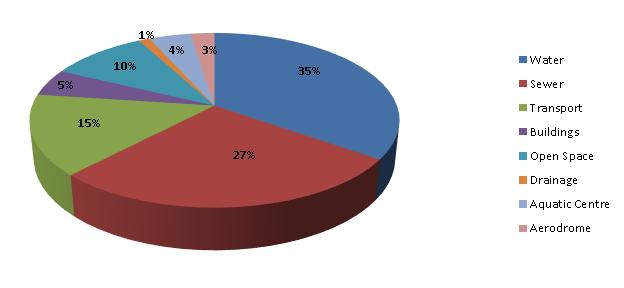
7. Maintenance
Routine maintenance is the
regular on-going work that is necessary to keep assets operating to ensure they
reach their useful life. It includes work on an asset where a portion may fail
and need immediate repair to make it operational again. It may be either
planned where works are programmed in or cyclic in nature or reactive in
response to storm damage, vandalism etc.
Maintenance is either planned
or reactive, defined as:
· Reactive maintenance – unplanned repair work
carried out in response to service requests.
· Planned maintenance – repair work that is
identified and managed through a maintenance management system (MMS). MMS
activities include inspection, assessing the condition against
failure/breakdown experience, prioritising, scheduling, actioning the work and
reporting what was done to develop a maintenance history and improve
maintenance and service delivery performance.
Maintenance expenditure levels
are considered to be adequate to meet required service levels. Future revision
of this strategy will include linking required maintenance expenditures with
required service levels in the CSP. The level of
service and standards of care for maintenance is carried out in accordance with
Council’s Defined Asset Management Policy (DAMP).
Table 7.1: What are our Maintenance Activities and the
frequency we undertake them?
|
Asset
Group
|
Activity
|
Class
|
Frequency
|
|
Transport
|
Jet patching pot holes
|
Collector
|
Daily
|
|
Water
|
Ozone servicing
|
All
|
Quarterly
|
|
Sewer
|
Blowers servicing
|
All
|
6 monthly
|
|
Drainage
|
Tree root removal
|
All
|
On inspection
|
|
Buildings
|
Cleaning
|
Premier Buildings
|
Daily
|
|
Aerodrome
|
Cleaning
|
Class A
|
Daily
|
|
Aquatic Centre
|
Exit Light Inspections
|
All
|
Weekly
|
|
Open Space
|
Mowing
|
Regional Parks
|
Weekly
|
Adjusting Levels of Service
The opportunity to adjust the
level of service provided is primarily through reducing reaction time to repair
defects, increasing the frequency of shoulder and other maintenance grading or
other maintenance activities.
The proposed maintenance
programs are detailed in each AMP, with the average annual costs detailed
below:
Table 7.2: What are our Maintenance Costs?
|
Activity
|
20 year
average
(2016 $)
|
|
Transport
|
935
|
|
Water
|
1,097
|
|
Sewer
|
1,508
|
|
Drainage
|
718
|
|
Buildings
|
3,184
|
|
Aerodrome
|
257
|
|
Aquatic Centre
|
52
|
|
Open Space
|
78
|
|
Total
|
7,829
|
Figure 7.1: What is the breakup of our Maintenance
Costs?
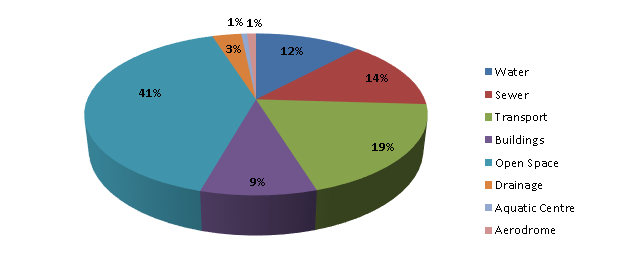
8. Capital
Renewal / Rehabilitation
This includes work on an
existing asset to replace or rehabilitate it to a condition that restores the
capability of the asset back to that which it had originally. The intervention
level and estimated useful lives are contained in Table 5.1.
Renewal will be undertaken
using ‘low-cost’ renewal methods where practical. The aim of
‘low-cost’ renewals is to restore the service potential or future
economic benefits of the asset by renewing the assets at a cost less than the
full replacement cost.
This Strategy contains an
analysis based on broad assumptions and best available knowledge to date.
Modelling is not an exact science so we deal with long term averages across the
entire asset stock. Work will continue on improving the quality of our asset
registers and systems to increase the accuracy of our renewal models.
Assets
requiring renewal will be generally identified from estimates of remaining life
and condition assessments obtained from the asset register and models.
Candidate proposals will be inspected to verify the accuracy of the remaining
life estimate and to develop a preliminary renewal estimate. Verified proposals
are ranked by priority and available funds and scheduled in future works
programmes.
Details of planned renewal
activities proposed over the next 4 years are contained in each Asset
Management Plan. The first year of the program will be considered in the development
of the next Operational Plan and the remaining 3 years of work will be assessed
each year to confirm that the asset has reached its intervention level prior to
the work being scheduled.
The costs presented in the
following table identifies the current level of funding for the required
renewal programs and the funding required to maintain the asset to what is
considered an appropriate standard. The required funding in that table is based
on the intervention specified in Section 5.
For this asset group, an
analysis has been undertaken to determine assets that are already at or above
intervention level that are not able to be funded in the next Operational Plan.
This work is quantified in the ‘Backlog’ column.
Table 8.2: What are our Renewal Costs, Gap and Backlog
(20 Year Average – 2016 $,000)?
|
Activity
|
Budget
|
Required
|
Average
Gap
|
Backlog
(2017/18)
|
Backlog
(2036/37)
|
|
Water
|
3,598
|
2,564
|
-1,034
|
-2,214
|
-20,679
|
|
Sewer
|
1,487
|
1,325
|
-162
|
1,671
|
-3,237
|
|
Transport
|
1,917
|
2,938
|
1,021
|
6,015
|
20,421
|
|
Buildings
|
670
|
1,151
|
482
|
3,138
|
9,632
|
|
Open Space
|
6
|
280
|
275
|
241
|
5,494
|
|
Drainage
|
76
|
69
|
-8
|
1,304
|
-153
|
|
Aquatic Centre
|
46
|
128
|
82
|
-430
|
1,631
|
|
Aerodrome
|
46
|
246
|
201
|
1,160
|
4,012
|
|
Total
|
7,845
|
8,701
|
856
|
10,885
|
17,121
|
It
is clear from the initial analysis of each asset class that a gap in funding
may exist depending on the condition at which renewal occurs. A number of
options are available to manage this gap, including:
· Improving knowledge of the condition of assets and
their remaining life, thereby deferring renewal as late as possible;
· Improving maintenance to extend the life of assets and
defer projected renewal;
· Improving efficiency and introducing innovative practices
for carrying out maintenance and renewal works;
· Using lower cost renewal / rehabilitation methods;
· Rationalising (disposing of unnecessary assets);
· Lowering service levels;
· Increasing funding; and / or a
· Combinations of each option.
Asset
Management Plans for each asset class consider these options in the analysis of
service levels and the gap analysis.
It
should also be recognised that the acquisition of additional assets (expansion
and upgrade) will add to the funding gap for projected renewal and to annual
operating and maintenance costs.
Figure 8.1: What will we spend over the next 10 years
on Renewal (2016 $,000)?
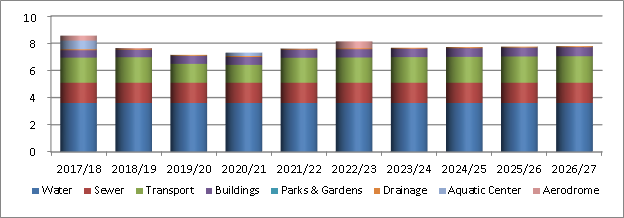
Lifecycle costs
The lifecycle costs are
determined based on the total cost of ownership of each asset including operations,
maintenance, renewal and disposal costs. The ten year average annualised
lifecycle costs for each component is presented in individual Asset Management
Plan.
9. Capital
Upgrades and New Assets
Upgrades enhance an existing
asset to provide a higher level of service, for example widening an existing
road seal. New assets are those created to meet an additional service level
requirement or increase the size of a network, for example, new subdivisions,
or extension of the stormwater drainage network.
Capital upgrade and expansion
expenditure adds to future liabilities. These works commit Council to fund
ongoing budget liabilities for operations, maintenance, depreciation and
finance costs (where applicable) for the life of the asset. They are discretional
expenditure, which increases future operating and maintenance costs because it
increases Council’s asset base, but may be associated with additional
revenue from the new user group.
The requirements for new assets
may result from growth, social or environmental needs. The impact from growth
is included will be further developed in the next suite of Asset Plans and this
Strategy. At present growth is predicted to continue at 0.8% per annum.
Both capital types may be
funded at least in part through Developer Contributions in the form of a
Section 64 or 94 Contribution, a Voluntary Planning Agreement, or as part of a
subdivision development
New assets and
upgrade/expansion of existing assets are identified from various sources such
as councillor or community requests, proposals identified by strategic plans or
partnerships with other organisations. Candidate proposals are inspected to
verify need and to develop a preliminary renewal estimate. Verified proposals
are ranked by priority and available funds and scheduled in future works
programmes.
Council has developed a
framework for the prioritisation of capital projects and that information is
used in the consideration of all new projects above the threshold set in the
framework. Included in the analysis is the identification of life cycle costs
as outlined in Appendix A.
Table 9.1: Proposed Projects in each asset group over
the next 10 years (2016 $,000)
|
Asset
Group
|
Project
|
Year(s)
|
Estimated
Cost
|
|
Transport
|
Southern feeder Road (Forest to Elsham)
|
2017/18
|
17,000
|
|
Water
|
Orange to CTW Pipeline
|
2017/18
|
9,997
|
|
Sewer
|
North Orange Sewer Strategy
|
2018-2021
|
3,414
|
|
Drainage
|
Retention Basin – Waratah W5
|
2017/18
|
200
|
|
Buildings
|
Function Centre New Interior Wall
|
2017/18
|
25
|
|
Aerodrome
|
Carpark Expansion
|
2019/20
|
175
|
|
Aquatic Centre
|
Diving Pool – wet deck
|
2017/18
|
500
|
|
Open Space
|
Mt Canobolas – Mountain Bike Trail Centre
|
2016-2018
|
300
|
Figure 9.1: What will we spend over the next 10 years
on Upgraded or New Assets?
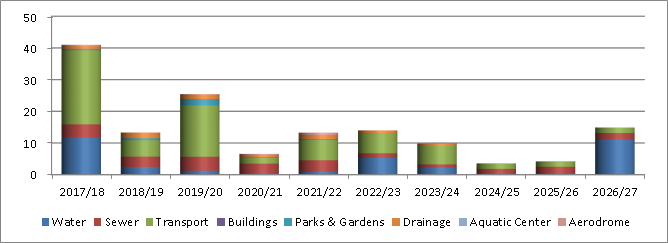
10. Disposal
Plan
Disposal is any activity
associated with disposal of a decommissioned asset including sale, demolition
or relocation. Assets with a condition rating of 9 (poor condition), where
Council has received no contact through the Customer Request System indicating
that the community don’t require the asset (as they have raised concerns
or complaints about the asset condition) may be considered to be a redundant
asset or not utilised and therefore decommissioned and disposed unless it is
considered critical infrastructure.
Prior to consideration of any
proposed disposal a detailed report will be presented to Council.
Table 10.1: What assets are we planning to dispose of?
|
Asset
|
Reason
|
Year
|
Cost
|
|
McNamara St – Peisley St to Summer St 75mm CI
main
|
End of serviceable life
|
2021/22
|
16,290
|
|
Perry Oval Amenities
|
Impaired
|
t.b.a
|
70,500
|
11. Financial
Plan
As part of its funding
strategy, Council has the option to supplement any or all of the current or new
asset proposals that come into consideration for construction with borrowings.
This strategy is heavily influenced by the monitoring of Council’s Debt
Service. The debt service ratio is a measure of the degree to which revenues
are committed to servicing debt. The purpose of the ratio is to assess the
impact of loan principal and interest repayments on the discretionary revenue
of the Council.
A summary of the income and
expenditure over the next 20 years is included in Appendix C, with the
projected budget amounts being based on 2016 dollars increased for growth by
0.8% per annum. It is important to recognise that the forecasts developed in
each AMP and therefore this Strategy are based on delivering the levels of
service identified in each AMP. This information will be used to assist in the
updating the Council’s Long Term Financial Plan that is adopted as part
of the Resourcing Strategy when the Community Strategic Plan and
Delivery/Operational Plan are adopted by Council.
Any changes made to the overall
Long Term Financial Plan adopted by Council will be reflected in the next Asset
Management Strategy and AMPs.
A summary of the funding
requirements and expenditure over the next 20 years is included in Appendix C.
Funding for management of assets can come from a variety of sources as detailed
in the table below.
Table 11.1: Where does our Income come from ($,000
current dollars)?
|
Activity
|
20 year
average
(2016 $)
|
|
Transport
|
16,253
|
|
Water
|
12,235
|
|
Sewer
|
14,395
|
|
Drainage
|
3,599
|
|
Buildings
|
7,809
|
|
Aerodrome
|
1,206
|
|
Aquatic Centre
|
1,987
|
|
Open Space
|
1,318
|
|
Total
|
58,803
|
Figure 11.1: What is the breakup of our income
streams?

12. Key
Performance Measures
AMPs document the linkage
between levels of service and life cycle costs. Performance Levels are target
Levels of Service. The performance measures for engineering services typically
are:
· The amenity of local retail and industrial areas -
including signage, street furniture and gardens, car parking enhancements;
· Community safety and accessibility of the built
environment - including reductions in road pavement roughness, and increases in
accessibility including maintaining and extending network of sealed roads,
footpaths, and bridges;
· Accessibility of footpaths, and levels of street
lighting;
· Environmental amenity - including the cleaning of
stormwater drainage pits, water quality works, public transport and bicycle way
enhancements.
To monitor these performance
standards the following asset knowledge needs to be assembled:
· Demand projections and forecasts;
· A description of the current asset portfolio;
· A broad description of the management activities
(operations and maintenance, renewals, capital works and asset disposals)
required to deliver the defined service levels;
· Identification of strategies and actions required to
ensure service sustainability, including resources and timeframes;
· A cash-flow forecast outlining the asset related
expenditure required over the term of the plan;
· Compliance and risk strategies and costs.
As part of identifying the best
value mix of service, there needs to be a clearly understood link between the
economic, social and environmental prosperity for the community and the asset
stock needed and revenues needed to deliver these objectives.
This information allows Council
to make better informed decisions on the allocation of limited resources based
on community values of service and cost. It stands to reason that the provision
of services providing the highest benefit at the least cost will give the
greatest value.
An example of this is the
delivery of recreation services to the various sporting activities. The
provision of turf cricket wickets is a high cost service typically used by a
small number of cricketers in the top grades of the sport. On the other hand, a
netball court is a medium – low cost service typically used by a large
number of netball players. Council can then consider the relative priorities in
allocating community resources to a small number of top grade sportspersons, a
larger number of general sporting participants, or both.
13. Plan
Improvements
It is not the intention of this
Strategy to identify recommendations for individual areas of Council’s
operations, but to establish the key areas for asset management improvement. A
review of Council’s asset management processes and data utilising the
NAMAF undertaken by the Asset Management Working Group in May 2014 provided the
following results which have recently been updated to November 2016 estimates.:
|
ID
|
Details
|
Maximum
|
May 2014
Compliance
|
Nov 2016
Compliance
|
|
1
|
Strategic Long Term Planning
|
20
|
80%
|
100%
|
|
2
|
Annual Budget
|
16
|
94%
|
94%
|
|
3
|
Annual Report
|
20
|
90%
|
90%
|
|
4
|
Asset Management Policy
|
20
|
90%
|
90%
|
|
5
|
Asset Improvement Strategy
|
12
|
83%
|
100%
|
|
6
|
Asset Plans
|
88
|
47%
|
92%
|
|
7
|
Governance and Management
|
28
|
64%
|
79%
|
|
8
|
Levels of Service
|
16
|
25%
|
69%
|
|
9
|
Data and Systems
|
32
|
53%
|
97%
|
|
10
|
Skills and Processes
|
40
|
55%
|
85%
|
|
11
|
Evaluation
|
12
|
0%
|
25%
|
Details of the review are
contained in the Asset Improvement Plan report and includes the following
improvement actions:
· Link the AM and CVR Registers
· Update condition assessments for missing assets and
refresh the models
· Develop a Capital Evaluation Framework
· Continue to expand the Maintenance Module in Authority
· Continue to update the Asset Management Manual (AMM)
and Condition Assessment Manual (CAM).
· Incorporate findings from the AMPs in the development
of the next CSP.
The action plan attached in
Appendix B incorporates actions that will address these shortfalls and start to
move Council towards a more Advanced level of competence.
14. Risk
Management Plan
Orange City Council is committed
to a structured and systematic approach to the management of risk and has
committed resources to the implementation of an Enterprise Risk Management
Program.
This program aims to embed the
principles of risk management in all aspects of Council’s operations,
which will ultimately:
· Increase the likelihood of Council achieving its
objectives
· Create an environment where all employees have a key
role in managing risk
· Encourage proactive management
· Improve the identification of opportunities and threats
· Improve stakeholder confidence and trust
· Improve financial stability and minimise losses
· Improve organisational performance
For assets with potentially
long lives, risks associated with changing economic conditions, varying levels
of demand for services, new competition and maintenance and disposal
requirements needs to be analysed and managed to ensure the investment is worthwhile.
Size is not the only
consideration. Projects or programs, which are inherently complex will also
benefit from particular attention to Risk Management. This might occur when
there are important economic or financial aspects, sensitive environmental or
safety issues, or complex regulatory and licensing requirements.
Orange City Council has
developed an Enterprise Risk Management process based on the Australian
Standard AS/NZS ISO 31000:2009 Risk Management – Principals and
Guidelines, as shown below:
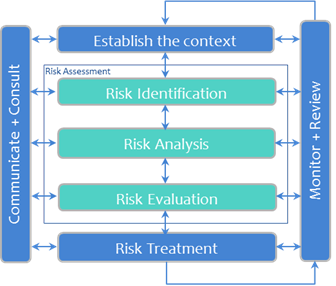
The ongoing implementation of
the ERM program will include a more comprehensive risk assessment and ongoing
action plan to manage the risks associated with Council’s assets.
One of the outcomes of this
risk assessment in each plan will be the determination of Critical Assets.
Critical assets are specific assets which have a high consequence of failure
but not necessarily a high likelihood of failure. By identifying critical
assets and critical failure modes, Council can appropriately target and refine inspection
regimes, maintenance plans and capital expenditure plans.
Operations and maintenances
activities may also be targeted to mitigate critical assets failure and
maintain service levels. These activities may include increased inspection
frequency, higher maintenance intervention levels, etc.
The most critical assets in
each group are identified in the individual Asset Management Plans, with
examples presented in Table 14.1 below:
Table
14.1 Critical Assets
|
Asset
Group
|
Critical
Asset
|
Critical
Failure Mode
|
Treatment
Plan
|
|
Transport
|
Northern Distributor Road
|
Premature failure due to sub-standard design and / or
construction. Traffic diverted back to CBD
|
Increased condition inspections to enable early
intervention. Renewal scheduled at condition 7. Identify alternative routes
to detour traffic.
|
|
Water
|
Icely Road Water Treatment plan
|
Mechanical / electrical failure
|
Shortened response times to outages and
implementation of Business Continuity Plan.
|
|
Sewer
|
Sewage Treatment
|
Mechanical/Electrical failure affecting effluent
quality
|
Operational procedures and BCP’s
|
|
Drainage
|
Covered Channel running through Robertson Park
|
Collapse leading to major disruption in the CBD.
|
Regular monitoring of condition and increased
intervention levels / response times.
|
|
Buildings
|
Civic Centre
|
Loss of critical data
|
Ensure heat exchange HWS is functioning correctly and
the air-conditioner unit in the PABX room is maintained.
|
|
Aerodrome
|
Airport Terminal Building
|
Destruction due to fire event.
|
Increased inspection regime on fire detection
systems, business continuity planning.
|
|
Aquatic Centre
|
Pool System
|
Dosing system
|
Carry out regular inspections and maintenance by
contractors to ensure that the dosing system is working correctly. Ensure
staff are properly trained in the use of this system.
|
|
Parks and Landcare
|
Wade Park Playing Surfaces
|
Loss of natural playing surface from disease or pest
attack
|
Increased inspection regime for pest/disease
identification and implantation of contingency venues list
|
15. Appendix
A: Example of Annual Service Costs
This example details the costs
to provide, operate (including daily cleaning), and maintain a new public
Barbeque that is expected to have a life of 10 years. The annual service cost
is detailed in Table D.1.
Table A.1 Annual Service
Cost for a Public BBQ
|
|
Capital
Cost
|
Annual
Service Cost
|
Remarks
|
|
Capital Cost
|
$8,000
|
|
|
|
Finance/Opportunity cost
|
|
$640
|
8% pa
|
|
Depreciation
|
|
$800
|
10 years
|
|
Operations (cleaning)
|
|
$7,300
|
Daily
|
|
Maintenance
|
|
$400
|
|
|
Demolition
|
|
$100
|
$1,000 @ 10 yrs
|
|
Revenue
|
|
-$0
|
|
|
TOTAL
|
$8,000
|
$9,240
|
|
The Annual Service Cost
for the provision of the public barbeque is $9,240 for the 10 year life
required. The cost per use can be calculated by dividing the Annual Service
Cost by the number of uses.
The Costs shown in bold
are the ongoing budget commitments that the Council must fund in future budgets
for the service provided by the new barbeque. These total $8,500 per annum for
the next 10 years (depreciation, operations, and maintenance).
The Annual Service Cost is a
tool for evaluating capital works projects. Council should be satisfied that it
will obtain value or community benefits greater than $9,240 per annum for this
project, otherwise the project should not be approved.
This information will be used
when considering annual capital works programs to assist in assessing projects.
This shows the project estimate, apportioned into renewal and new asset
components, the budget commitment and equivalent rate increase required to fund
the budget commitment and the annual service cost.
In determining its capital
works program, Council will make a policy decision to allocate funds for asset
renewal in accordance with its Asset Management Plans under the principle of
allocating the value of depreciation expense progressively for asset renewals.
16. Appendix
B: Improvement Strategy Action Plan
|
ID
|
Details
|
Due
|
|
1
|
Strategic Long Term Plan
|
1/10/2017
|
|
1.1
|
Undertake consultation on the information
contained within the updated AMPs as part of the 2017 Community Strategic
Plan consultation processes [NAMAF 6.22]
|
1/10/2017
|
|
3
|
Annual Report
|
1/09/2017
|
|
3.1
|
Include details on the performance of
Assets and the AMS Improvement Plan in the annual report. [NAMAF 3.3]
|
1/09/2017
|
|
5
|
Asset Management Strategy
|
17/10/2017
|
|
5.1
|
Incorporate review of performance of CLOS
and TLOS from NAMAF Element 11 within the AMS. [NAMAF 5.3]
|
17/10/2017
|
|
6
|
Asset Management Plans
|
Annually
|
|
6.1
|
Finalise details on the 'other assets' to
be incorporated into AMP's, including a decision on whether additional AMP's
are required.[NAMAF 6.1]
|
July
|
|
6.2
|
Identify opportunities for non-asset
service delivery (leasing / PPP etc.). [NAMAF 6.19]
|
August
|
|
6.3
|
Identify and document any opportunities
for asset rationalisation and disposal. [NAMAF 6.17]
|
August
|
|
6.4
|
Update asset registers including capture
of any missing asset components. [NAMAF 6.4]
|
September
|
|
6.5
|
Review Enterprise Risk Management
findings and document, including an update to the details on Critical Assets.
[NAMAF 6.8]
|
October
|
|
6.6
|
Review works identified in the previous
AMPs that are scheduled within the next 4 years to develop a schedule for
condition assessments. [NAMAF 6.6]
|
October
|
|
6.7
|
Review Unit Rates, useful lives and
deterioration curves for all components to be modelled. Document unit rates
into an appendix in the AMP. [NAMAF 6.7, 6.11]
|
November
|
|
6.8
|
Review demand forecasts and their impact
on Operational, Maintenance and Renewal Costs. [NAMAF 6.10]
|
November
|
|
6.9
|
Review draft / adopted budget and update
Model spreadsheets in preparation for development of renewal models. [NAMAF
6.12]
|
December
|
|
6.10
|
Confirm with Building Owners the renewal
/ maintenance works approved within the budget
|
December
|
|
6.11
|
Review Maintenance activities including
relationship with renewal modelling to develop zero based LTFP [NAMAF 6.14]
|
February
|
|
6.12
|
Review Operational activities and
identify opportunities for cost savings or requirements for additional funds.
[NAMAF 6.15]
|
February
|
|
6.13
|
Update Condition Assessments for modelled
components, focusing on works identified for next 2-4 years and leasing with
Asset Owners / Operators as required. [NAMAF 6.6]
|
February
|
|
6.14
|
Undertake Renewal Modelling and develop
LTFP [NAMAF 6.11, 12, 13, 14, 15]
|
March
|
|
6.15
|
Review LOS and costs to provide agreed
levels. Identify costs to increase / reduce LOS. [NAMAF 6.20]
|
March
|
|
6.16
|
Review performance measures from previous
AMPs, document, and develop next AM Improvement Plan. [NAMAF 6.18]
|
April
|
|
6.17
|
Review proposed works schedule with Asset
Owners / Operators to confirm priorities
|
April
|
|
6.18
|
Draft Asset Management Plans. Year 1
based on draft budget and recommended works. [NAMAF 6.1]
|
April
|
|
6.19
|
Internal Review of AMPs
|
May
|
|
6.20
|
Draft AMPs finalised
|
June
|
|
6.21
|
Complete budget submission for renewal
gap funding, including asset id for each renewal not funded with current
budget allocation
|
September
|
|
7
|
Governance and Management
|
30/06/2017
|
|
7.1
|
Develop capital works evaluation
framework. [NAMAF 7.4]
|
30/06/2017
|
|
8
|
Levels of Service
|
19/12/2017
|
|
8.1
|
Develop a Level of Service Framework.
[NAMAF 8.2]
|
30/04/2017
|
|
8.2
|
Develop a Service Plan template linking
the CSP, LTFP and AMS to the approved levels of service identified. [NAMAF
8.1]
|
30/06/2017
|
|
8.3
|
Include AMP Levels of Service details in
the development of the 2017 CSP. [NAMAF 8.2]
|
30/09/2017
|
|
8.4
|
Incorporate Technical LOS into service
agreements with service providers. [NAMAF 8.4]
|
19/12/2017
|
|
9
|
Data and Systems
|
31/10/2017
|
|
9.1
|
Develop written lifecycle strategy to
ensure appropriate data is available to asset custodian and this data is
utilized in general day to day planning of assets.
|
29/06/2017
|
|
9.2
|
Develop CVR with information from
Authority AM System and link. [NAMAF 9.4]
|
28/07/2017
|
|
9.3
|
Improved documentation on useful lives of
assets and suitability of use in the Orange context. Refer also 6.7
|
30/08/2017
|
|
9.4
|
Determine Assets that require an
emergency / disaster response and recovery plan or Business Continuity Plan
and prepare
|
30/09/2017
|
|
9.5
|
Investigate integration of existing
Authority Systems (CRM, MM, AM, and CVR) as well as TRIM to ensure maximum
capability is used to manage assets.
|
30/10/2017
|
|
10
|
Skills and Processes
|
30/08/2017
|
|
10.3
|
Document a process to engage Asset Owners
/ Service Providers in the development of the AMPs (particularly buildings)
and then communicate the findings to them for consideration in the
development of the Operational Plan and Budget. [NAMAF 10.4]
|
30/05/2017
|
|
10.4
|
Review the overall roles and
responsibilities framework for assets across the organisation utilizing
information from the engagement process above.
|
20/06/2017
|
|
10.5
|
Document the procedure for determining
the cost to bring assets back to satisfactory (as required in SS7 audit
worksheet)
|
15/07/2017
|
|
10.6
|
Develop process for management strategies
around critical assets including reporting on the condition and performance
of these assets
|
30/08/2017
|
|
11
|
Evaluation
|
30/08/2017
|
|
11.1
|
Develop an AM Performance Framework that
captures KPIs, risks, actions, accountabilities and resource implications and
the organisations performance against those KPI. Undertake internal audit
against the framework to ensure the entire Framework is being complied with
and continuous improvement. [NAMAF 11.1]
|
30/07/2017
|
|
11.2
|
Develop a process and reporting format
for the presentation of Community and Technical Levels of Service including
frequency of reporting, to whom and measures to be reported on. [NAMAF 11.2,
11.3]
|
30/08/2017
|
Extraordinary Council Meeting
9 May 2017
2.3 Draft
Resourcing Strategy
Attachment 2 DRAFT -
Asset Management Strategy
17. Appendix
C: 20 Year Financial Plan (2016 $,000)
|
Year
|
2016/17
|
2017/18
|
2018/19
|
2019/20
|
2020/21
|
2021/22
|
2022/23
|
2023/24
|
2024/25
|
2025/26
|
2026/27
|
2027/28
|
2028/29
|
2029/30
|
2030/31
|
2031/32
|
2032/33
|
2033/34
|
2034/35
|
2035/36
|
Average
|
|
Income
|
|
|
|
|
|
|
|
|
|
|
|
|
|
|
|
|
|
|
|
|
|
|
Water
|
(19,378)
|
(14,087)
|
(14,331)
|
(14,498)
|
(14,602)
|
(14,751)
|
(14,990)
|
(15,200)
|
(15,408)
|
(15,702)
|
(16,006)
|
(16,201)
|
(16,487)
|
(16,791)
|
(17,690)
|
(16,849)
|
(17,677)
|
(17,979)
|
(18,074)
|
(18,356)
|
(16,253)
|
|
Sewer
|
(11,073)
|
(11,938)
|
(10,336)
|
(10,373)
|
(10,420)
|
(10,482)
|
(10,623)
|
(10,735)
|
(22,819)
|
(13,131)
|
(13,305)
|
(13,519)
|
(11,418)
|
(11,546)
|
(12,067)
|
(11,533)
|
(12,063)
|
(12,248)
|
(12,445)
|
(12,636)
|
(12,235)
|
|
Transport
|
(33,017)
|
(14,936)
|
(24,926)
|
(10,717)
|
(15,771)
|
(15,917)
|
(15,566)
|
(11,536)
|
(11,469)
|
(11,647)
|
(11,751)
|
(11,857)
|
(11,964)
|
(12,072)
|
(12,180)
|
(12,290)
|
(12,400)
|
(12,512)
|
(12,625)
|
(12,738)
|
(14,395)
|
|
Buildings
|
(3,092)
|
(3,109)
|
(3,182)
|
(3,248)
|
(3,291)
|
(3,354)
|
(3,430)
|
(3,483)
|
(3,549)
|
(3,629)
|
(3,669)
|
(3,789)
|
(3,751)
|
(3,791)
|
(3,832)
|
(3,874)
|
(3,915)
|
(3,957)
|
(3,999)
|
(4,041)
|
(3,599)
|
|
Open Space
|
(7,272)
|
(7,596)
|
(8,871)
|
(7,044)
|
(7,357)
|
(7,171)
|
(7,299)
|
(7,449)
|
(7,567)
|
(7,695)
|
(7,764)
|
(7,834)
|
(7,905)
|
(7,976)
|
(8,048)
|
(8,120)
|
(8,193)
|
(8,267)
|
(8,341)
|
(8,416)
|
(7,809)
|
|
Drainage
|
(1,842)
|
(2,782)
|
(2,370)
|
(1,690)
|
(2,300)
|
(1,851)
|
(1,751)
|
(1,061)
|
(668)
|
(679)
|
(685)
|
(691)
|
(698)
|
(704)
|
(710)
|
(717)
|
(723)
|
(730)
|
(736)
|
(743)
|
(1,206)
|
|
Aquatic Centre
|
(2,301)
|
(1,715)
|
(1,732)
|
(2,014)
|
(1,810)
|
(1,829)
|
(1,862)
|
(1,911)
|
(1,931)
|
(1,967)
|
(1,984)
|
(2,002)
|
(2,020)
|
(2,038)
|
(2,057)
|
(2,075)
|
(2,094)
|
(2,113)
|
(2,132)
|
(2,151)
|
(1,987)
|
|
Aerodrome
|
(2,402)
|
(1,688)
|
(1,804)
|
(1,966)
|
(2,402)
|
(1,992)
|
(1,282)
|
(1,326)
|
(1,012)
|
(911)
|
(919)
|
(928)
|
(936)
|
(944)
|
(953)
|
(961)
|
(970)
|
(979)
|
(988)
|
(996)
|
(1,318)
|
|
Total Income
|
(80,377)
|
(57,849)
|
(67,551)
|
(51,550)
|
(57,953)
|
(57,348)
|
(56,804)
|
(52,702)
|
(64,423)
|
(55,360)
|
(56,085)
|
(56,822)
|
(55,178)
|
(55,863)
|
(57,536)
|
(56,419)
|
(58,035)
|
(58,784)
|
(59,339)
|
(60,079)
|
(58,803)
|
|
Operations
|
|
|
|
|
|
|
|
|
|
|
|
|
|
|
|
|
|
|
|
|
|
|
Water
|
12,569
|
13,015
|
13,216
|
13,718
|
14,272
|
14,492
|
14,499
|
14,774
|
14,985
|
15,173
|
15,383
|
15,684
|
15,893
|
16,124
|
16,814
|
16,101
|
16,877
|
17,118
|
17,452
|
17,695
|
15,293
|
|
Sewer
|
12,054
|
12,300
|
10,456
|
10,549
|
10,783
|
10,996
|
11,198
|
11,385
|
11,594
|
11,794
|
11,975
|
12,163
|
12,365
|
12,577
|
13,140
|
12,573
|
13,170
|
13,381
|
13,596
|
13,814
|
12,093
|
|
Transport
|
6,482
|
6,559
|
6,000
|
6,096
|
6,194
|
6,295
|
6,397
|
6,502
|
6,368
|
6,477
|
6,535
|
6,594
|
6,653
|
6,713
|
6,774
|
6,835
|
6,896
|
6,958
|
7,021
|
7,084
|
6,572
|
|
Buildings
|
1,906
|
1,924
|
1,959
|
2,013
|
2,032
|
2,069
|
2,120
|
2,146
|
2,185
|
2,240
|
2,260
|
2,280
|
2,301
|
2,321
|
2,342
|
2,363
|
2,384
|
2,406
|
2,428
|
2,449
|
2,206
|
|
Open Space
|
4,115
|
4,224
|
4,030
|
4,063
|
4,019
|
4,096
|
4,169
|
4,262
|
4,322
|
4,391
|
4,431
|
4,471
|
4,511
|
4,552
|
4,593
|
4,634
|
4,676
|
4,718
|
4,760
|
4,803
|
4,392
|
|
Drainage
|
698
|
704
|
709
|
714
|
720
|
725
|
731
|
735
|
337
|
343
|
346
|
349
|
352
|
356
|
359
|
362
|
365
|
369
|
372
|
375
|
501
|
|
Aquatic Centre
|
1,626
|
1,655
|
1,686
|
1,716
|
1,748
|
1,780
|
1,812
|
1,846
|
1,879
|
1,914
|
1,931
|
1,948
|
1,966
|
1,984
|
2,002
|
2,020
|
2,038
|
2,056
|
2,075
|
2,093
|
1,889
|
|
Aerodrome
|
1,540
|
1,554
|
1,559
|
1,569
|
1,580
|
1,393
|
1,207
|
1,224
|
935
|
806
|
814
|
821
|
828
|
836
|
843
|
851
|
858
|
866
|
874
|
882
|
1,092
|
|
Total Operations
|
40,990
|
41,935
|
39,615
|
40,439
|
41,347
|
41,847
|
42,133
|
42,874
|
42,605
|
43,138
|
43,674
|
44,311
|
44,869
|
45,463
|
46,866
|
45,738
|
47,264
|
47,871
|
48,577
|
49,196
|
44,038
|
|
Maintenance
|
|
|
|
|
|
|
|
|
|
|
|
|
|
|
|
|
|
|
|
|
|
|
Water
|
806
|
821
|
836
|
851
|
866
|
882
|
897
|
914
|
930
|
947
|
955
|
964
|
973
|
981
|
990
|
999
|
1,008
|
1,017
|
1,026
|
1,036
|
935
|
|
Sewer
|
946
|
963
|
980
|
998
|
1,016
|
1,034
|
1,053
|
1,072
|
1,091
|
1,111
|
1,121
|
1,131
|
1,141
|
1,151
|
1,161
|
1,172
|
1,182
|
1,193
|
1,204
|
1,215
|
1,097
|
|
Transport
|
1,300
|
1,324
|
1,347
|
1,372
|
1,396
|
1,422
|
1,447
|
1,473
|
1,500
|
1,527
|
1,541
|
1,554
|
1,568
|
1,583
|
1,597
|
1,611
|
1,626
|
1,640
|
1,655
|
1,670
|
1,508
|
|
Buildings
|
620
|
631
|
642
|
654
|
665
|
677
|
690
|
702
|
715
|
727
|
734
|
741
|
747
|
754
|
761
|
768
|
774
|
781
|
788
|
796
|
718
|
|
Open Space
|
2,712
|
2,720
|
2,759
|
2,818
|
2,962
|
3,016
|
3,071
|
3,127
|
3,184
|
3,242
|
3,272
|
3,301
|
3,331
|
3,361
|
3,391
|
3,422
|
3,452
|
3,483
|
3,515
|
3,546
|
3,184
|
|
Drainage
|
221
|
225
|
229
|
234
|
238
|
242
|
246
|
251
|
255
|
260
|
262
|
265
|
267
|
270
|
272
|
274
|
277
|
279
|
282
|
284
|
257
|
|
Aquatic Centre
|
45
|
46
|
47
|
47
|
48
|
49
|
50
|
51
|
52
|
53
|
53
|
54
|
54
|
55
|
55
|
56
|
56
|
57
|
57
|
58
|
52
|
|
Aerodrome
|
67
|
68
|
70
|
71
|
72
|
73
|
75
|
76
|
77
|
79
|
79
|
80
|
81
|
82
|
82
|
83
|
84
|
85
|
85
|
86
|
78
|
|
Total Maintenance
|
6,717
|
6,797
|
6,910
|
7,044
|
7,264
|
7,395
|
7,529
|
7,665
|
7,804
|
7,946
|
8,017
|
8,089
|
8,162
|
8,236
|
8,310
|
8,385
|
8,460
|
8,536
|
8,613
|
8,691
|
7,829
|
|
Renewal
|
|
|
|
|
|
|
|
|
|
|
|
|
|
|
|
|
|
|
|
|
|
|
Water
|
3,978
|
3,968
|
3,968
|
3,918
|
3,918
|
3,918
|
3,918
|
3,918
|
3,918
|
3,918
|
3,918
|
3,918
|
3,918
|
3,918
|
3,918
|
3,918
|
3,918
|
3,918
|
3,918
|
3,918
|
3,926
|
|
Sewer
|
1,729
|
1,729
|
1,729
|
1,929
|
1,729
|
1,729
|
1,729
|
1,729
|
1,729
|
1,729
|
1,729
|
1,729
|
1,729
|
1,729
|
1,729
|
1,729
|
1,729
|
1,729
|
1,729
|
1,729
|
1,739
|
|
Transport
|
1,853
|
1,874
|
1,395
|
1,316
|
1,838
|
1,860
|
1,883
|
1,906
|
1,930
|
1,953
|
1,971
|
1,989
|
2,007
|
2,025
|
2,043
|
2,061
|
2,080
|
2,099
|
2,118
|
2,137
|
1,917
|
|
Buildings
|
538
|
551
|
577
|
577
|
590
|
604
|
617
|
632
|
646
|
658
|
672
|
765
|
699
|
712
|
725
|
739
|
752
|
766
|
779
|
792
|
670
|
|
Open Space
|
31
|
31
|
32
|
32
|
33
|
33
|
34
|
35
|
35
|
36
|
36
|
37
|
37
|
37
|
38
|
38
|
38
|
39
|
39
|
39
|
36
|
|
Drainage
|
70
|
71
|
71
|
72
|
73
|
73
|
74
|
75
|
75
|
76
|
77
|
77
|
78
|
79
|
79
|
80
|
81
|
82
|
82
|
83
|
76
|
|
Aquatic Centre
|
630
|
14
|
0
|
250
|
14
|
0
|
0
|
14
|
0
|
0
|
0
|
0
|
0
|
0
|
0
|
0
|
0
|
0
|
0
|
0
|
46
|
|
Aerodrome
|
375
|
40
|
0
|
0
|
0
|
500
|
0
|
0
|
0
|
0
|
0
|
0
|
0
|
0
|
0
|
0
|
0
|
0
|
0
|
0
|
46
|
|
Total Renewal
|
9,204
|
8,278
|
7,772
|
8,094
|
8,195
|
8,718
|
8,255
|
8,308
|
8,333
|
8,370
|
8,403
|
8,515
|
8,468
|
8,500
|
8,532
|
8,566
|
8,598
|
8,632
|
8,665
|
8,698
|
8,455
|
|
Upgrade / Expansion
|
|
|
|
|
|
|
|
|
|
|
|
|
|
|
|
|
|
|
|
|
|
|
Water
|
11,734
|
2,406
|
1,250
|
420
|
895
|
5,342
|
2,281
|
390
|
402
|
11,103
|
10,360
|
5,600
|
360
|
360
|
360
|
1,121
|
360
|
360
|
360
|
4,880
|
3,017
|
|
Sewer
|
4,157
|
3,279
|
4,410
|
3,087
|
3,662
|
1,436
|
955
|
1,450
|
2,105
|
2,046
|
45
|
45
|
899
|
2,592
|
45
|
45
|
1,623
|
45
|
45
|
45
|
1,601
|
|
Transport
|
23,381
|
5,179
|
16,185
|
1,933
|
6,342
|
6,341
|
5,839
|
1,655
|
1,671
|
1,689
|
1,705
|
1,720
|
1,735
|
1,751
|
1,767
|
1,783
|
1,799
|
1,815
|
1,831
|
1,848
|
4,398
|
|
Buildings
|
29
|
4
|
4
|
4
|
4
|
4
|
4
|
4
|
4
|
4
|
4
|
4
|
4
|
4
|
4
|
4
|
4
|
4
|
4
|
4
|
5
|
|
Open Space
|
415
|
620
|
2,050
|
130
|
343
|
25
|
25
|
25
|
25
|
25
|
25
|
25
|
26
|
26
|
26
|
26
|
27
|
27
|
27
|
27
|
197
|
|
Drainage
|
852
|
1,782
|
1,360
|
670
|
1,270
|
810
|
700
|
0
|
0
|
0
|
0
|
0
|
0
|
0
|
0
|
0
|
0
|
0
|
0
|
0
|
372
|
|
Aquatic Centre
|
0
|
0
|
0
|
0
|
0
|
0
|
0
|
0
|
0
|
0
|
0
|
0
|
0
|
0
|
0
|
0
|
0
|
0
|
0
|
0
|
0
|
|
Aerodrome
|
420
|
25
|
175
|
326
|
750
|
26
|
0
|
26
|
0
|
26
|
26
|
26
|
27
|
27
|
27
|
27
|
28
|
28
|
28
|
28
|
102
|
|
Total Upgrade / Expansion
|
40,988
|
13,295
|
25,434
|
6,570
|
13,266
|
13,984
|
9,803
|
3,549
|
4,207
|
14,893
|
12,165
|
7,421
|
3,051
|
4,760
|
2,229
|
3,006
|
3,840
|
2,279
|
2,296
|
6,833
|
9,693
|
|
Total Expenditure
|
97,898
|
70,305
|
79,730
|
62,148
|
70,072
|
71,944
|
67,720
|
62,397
|
62,950
|
74,347
|
72,260
|
68,336
|
64,549
|
66,958
|
65,937
|
65,694
|
68,163
|
67,318
|
68,151
|
73,418
|
70,015
|
|
Rolling Backlog
|
10,885
|
5,537
|
3,942
|
(293)
|
(2,852)
|
(3,799)
|
(3,751)
|
9,767
|
13,992
|
15,198
|
14,247
|
18,317
|
20,914
|
16,509
|
15,384
|
9,026
|
9,625
|
7,950
|
17,715
|
17,121
|
856
|
Extraordinary
Council Meeting 9
May 2017
